Seongsu, Seoul
One of Seoul’s most trendy neighborhoods, nicknamed the “Brooklyn of Seoul”.
Seongsu is a trendy part of Seoul that attracts the young and hip
Formerly an industrial area, it’s now becoming a hub for cafes and fashion
It’s called the “Brooklyn of Seoul”
With roughly 9.5 million people, almost 1/5 of the country’s population, Seoul is the primary destination in South Korea.
Like any large city, there are multiple areas that have a strong appeal to them, and one of Seoul’s is Seongsu due to its “newtro” (new + retro) vibe.
If doing a little bit of shopping and exploring the amazing local cafe culture sounds like it’s your thing, you’ll want to visit this area. I’ve been fortunate to visit Seoul a few times now, and Seongsu has become one of my favorite places in the city.
How to get there
The main station is Seongsu Station, and it’s accessible on Seoul Subway Line 2. The line also hits other popular stations such as Gangnam, Euljiro 3(sam)-ga, Euljiro 4(sa)-ga, Dongdaemun History & Culture Park and others.
Seongsu
One of the things that’s immediately noticeable when arriving at Seongsu is that it doesn’t feel like a place that was meant to become a popular destination.
The main station is on the smaller side, there aren’t many tall, modern buildings, and the streets themselves are far from being the most well-maintained in the city.
Seongsu is traditionally an industrial area known for making shoes and other goods. On the surface, this is how most of the area looks even now, but open the doors to a few of these buildings and you may be surprised.
On the other side of many of these industrial facades are restaurants and cafes. I’ve been to a couple of great ones (introduced near the bottom of this page), and they’re absolutely worth visiting. The interiors have been gutted and machinery and workers have been replaced with artistic interiors, delicious smells and people socializing.
Shopping is also a popular thing to do here as there are a few shopping complexes and boutiques.
I visited Seongsu in 2019 and then again in 2023, and its rise in popularity could be felt.
Here are a few places I’ve visted:
Seongsu Yeonbang
Once a chemical plant, the building was renovated and repurposed to become a shopping and dining complex. Most of the stores surround a courtyard which acts as the main entrance.
One of the notable stores is Thingool Market, a lifestyle shop on the first floor that carries everything from fashion accessories to home interior items and dishes. It’s a good one-stop shop if you’re looking to bring back something for yourself or a friend from your trip to Seoul.
LCDC
What is now a modern commercial complex was once an auto repair shop and shoe manufacturing company. It’s pretty difficult to see any traces of them, and what was probably a place full of blue collar workers seemed to be a gathering place for the hip and modern.
A cafe with outdoor seating in the courtyard is on the first floor with some trendy fashion and lifestyle shops upstairs. There’s also a open hangout area at the top, which is also directly accessible from a stairway that goes down to the street corner. This provided a decent spot to do some people watching down below.
Boutiques
Just going for a stroll around Seongsu will lead you to come across interesting boutiques and people.
Being that it’s a trendy neighborhood, you will find a lot of locals dressed up in the latest fashion and a bunch of shops to browse. Here are a few sights from Seongsu:
Cafe Onion
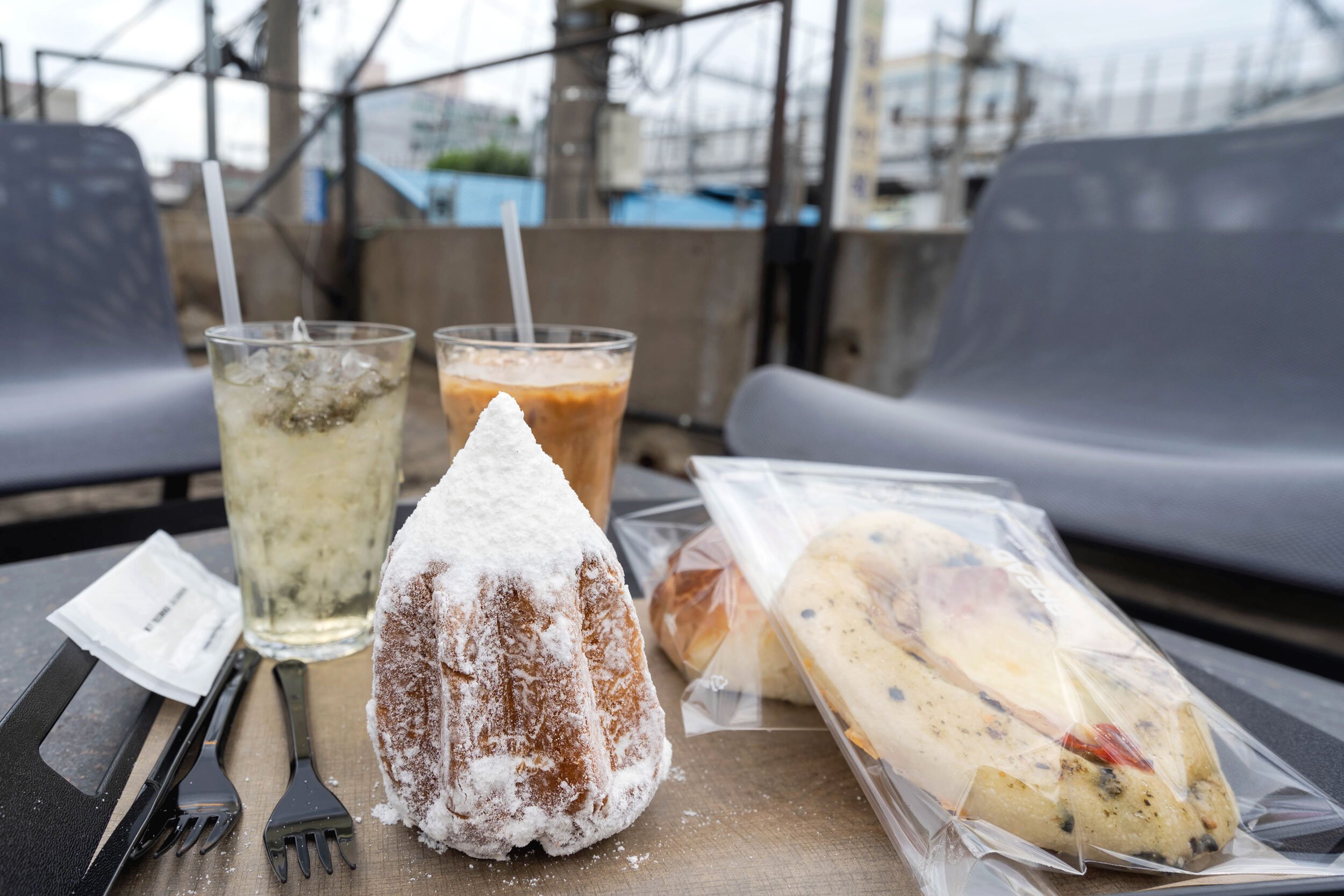
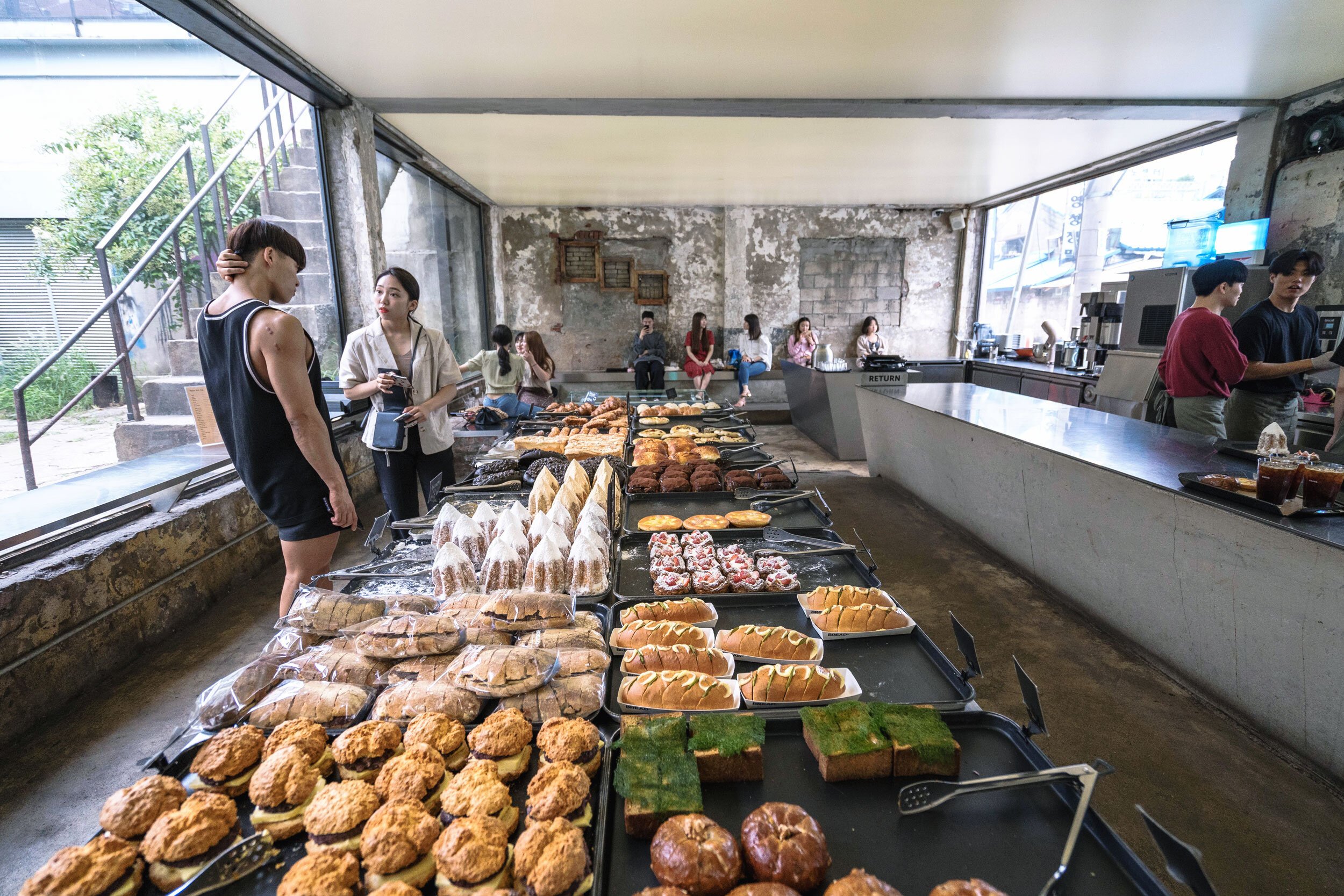
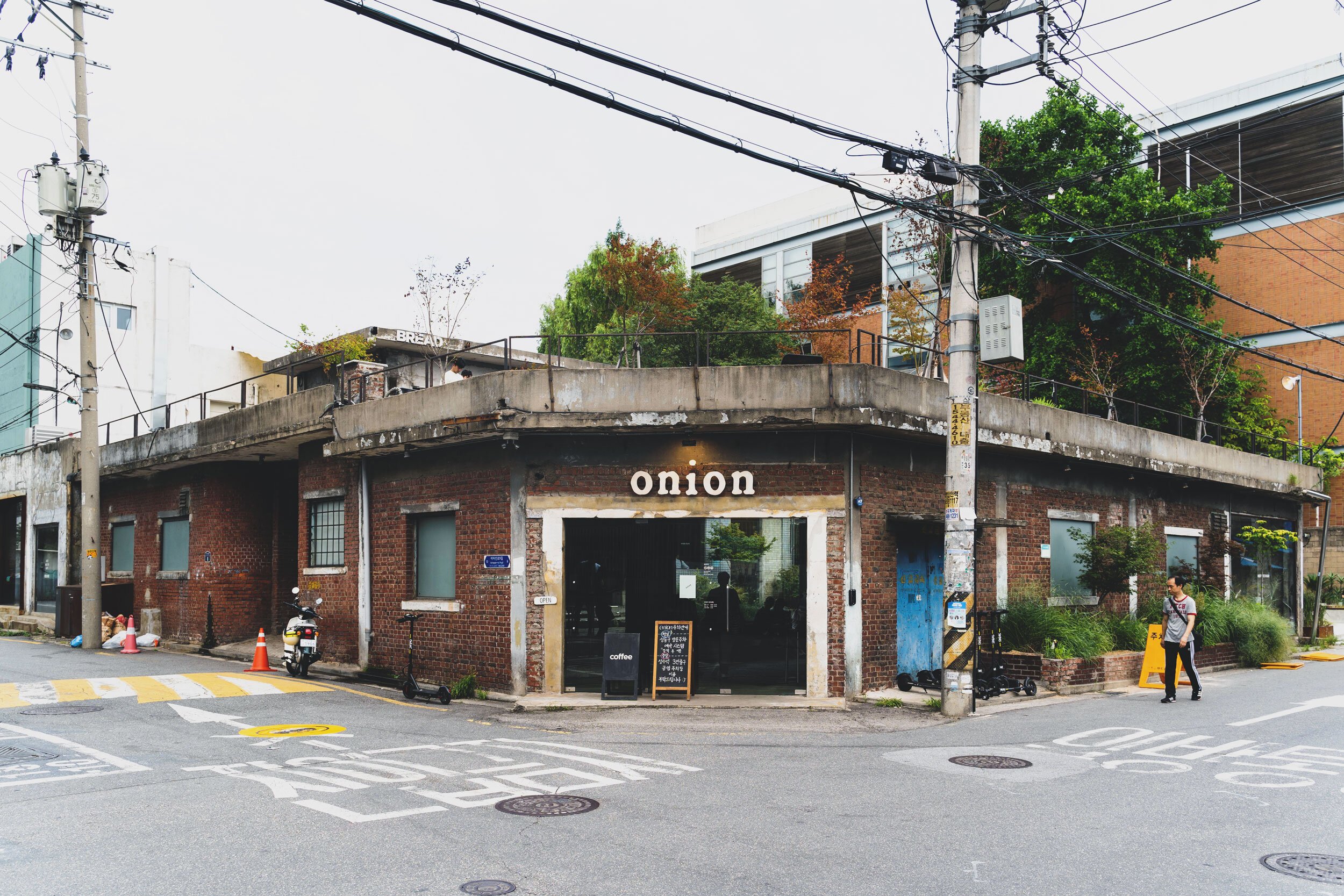

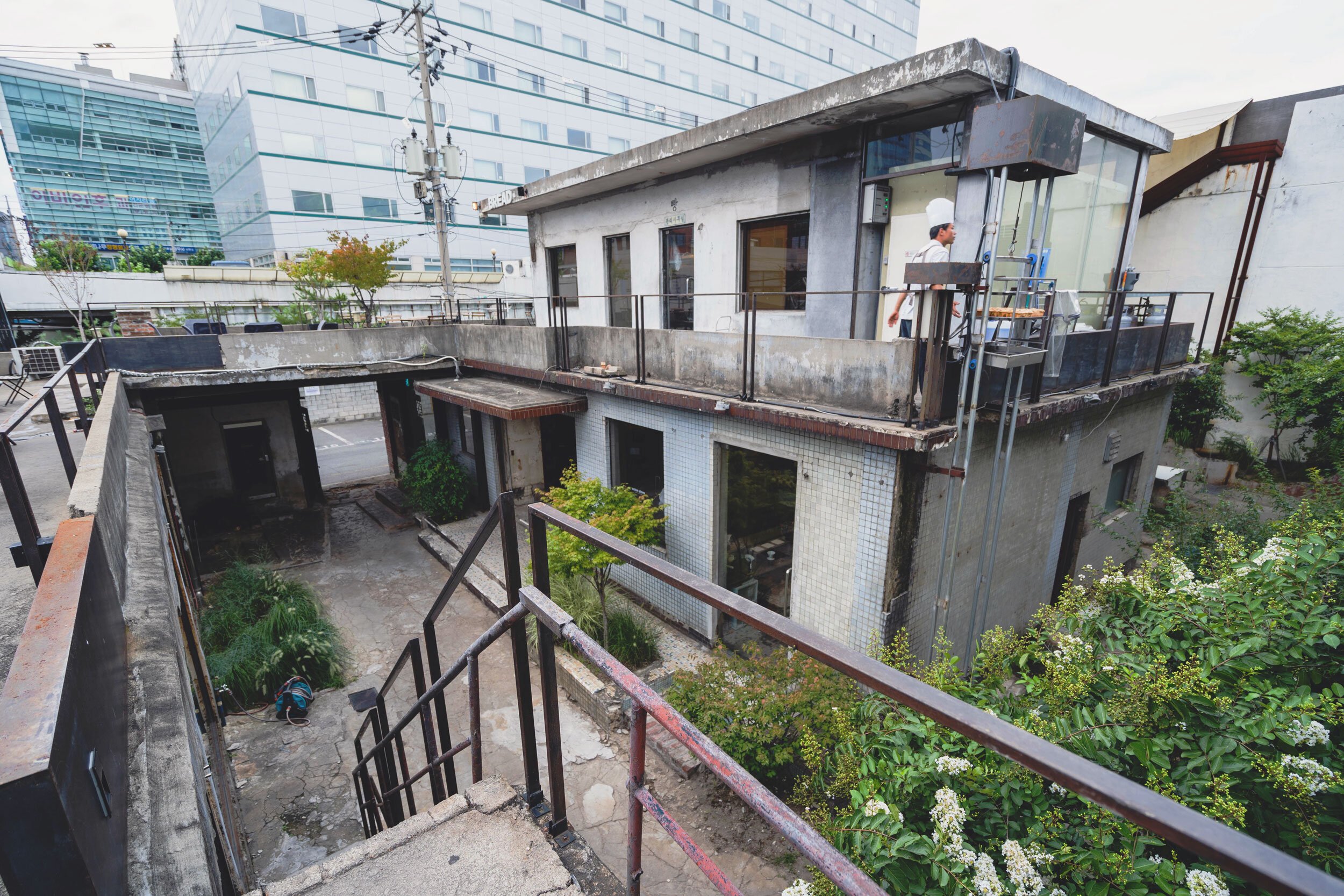
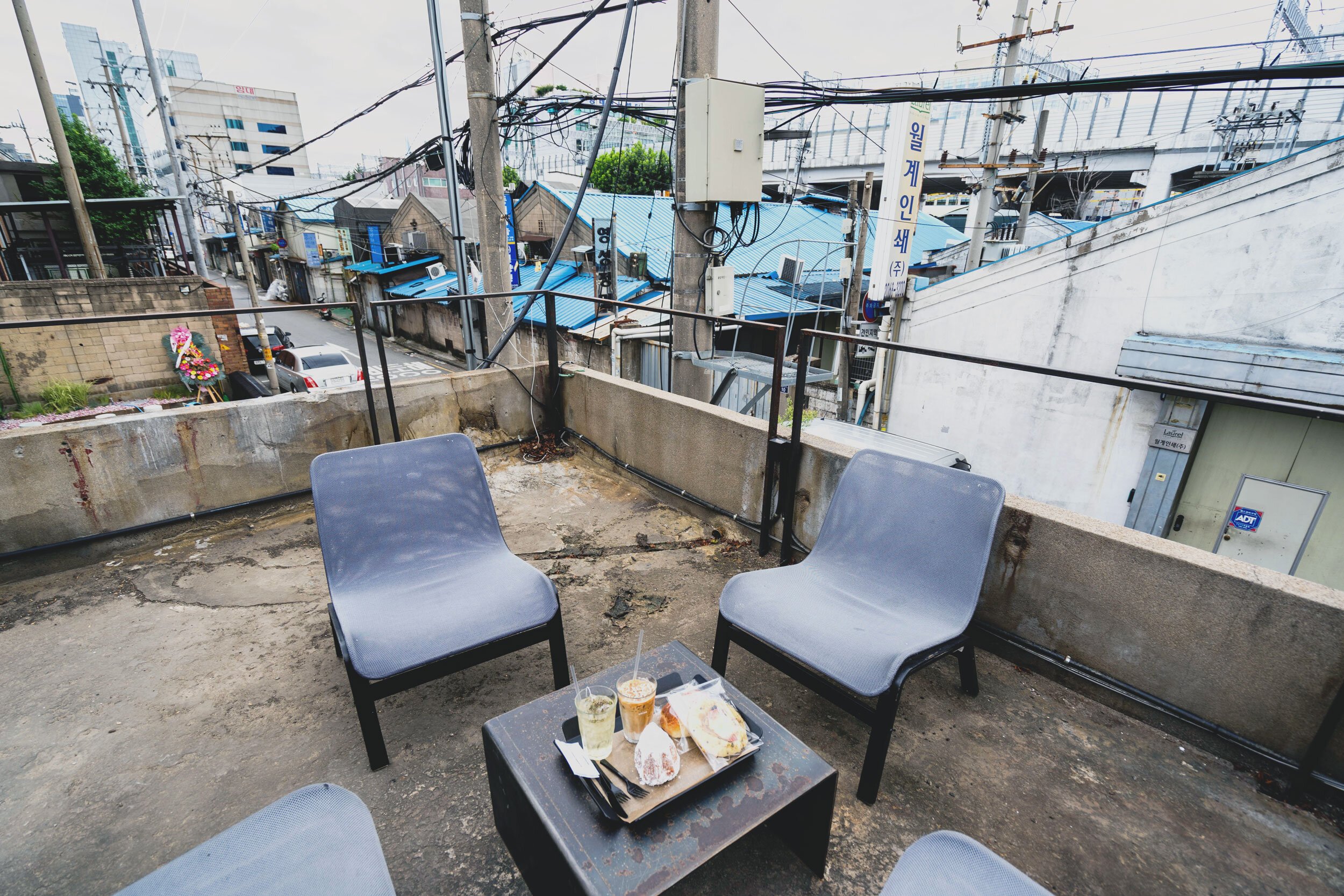
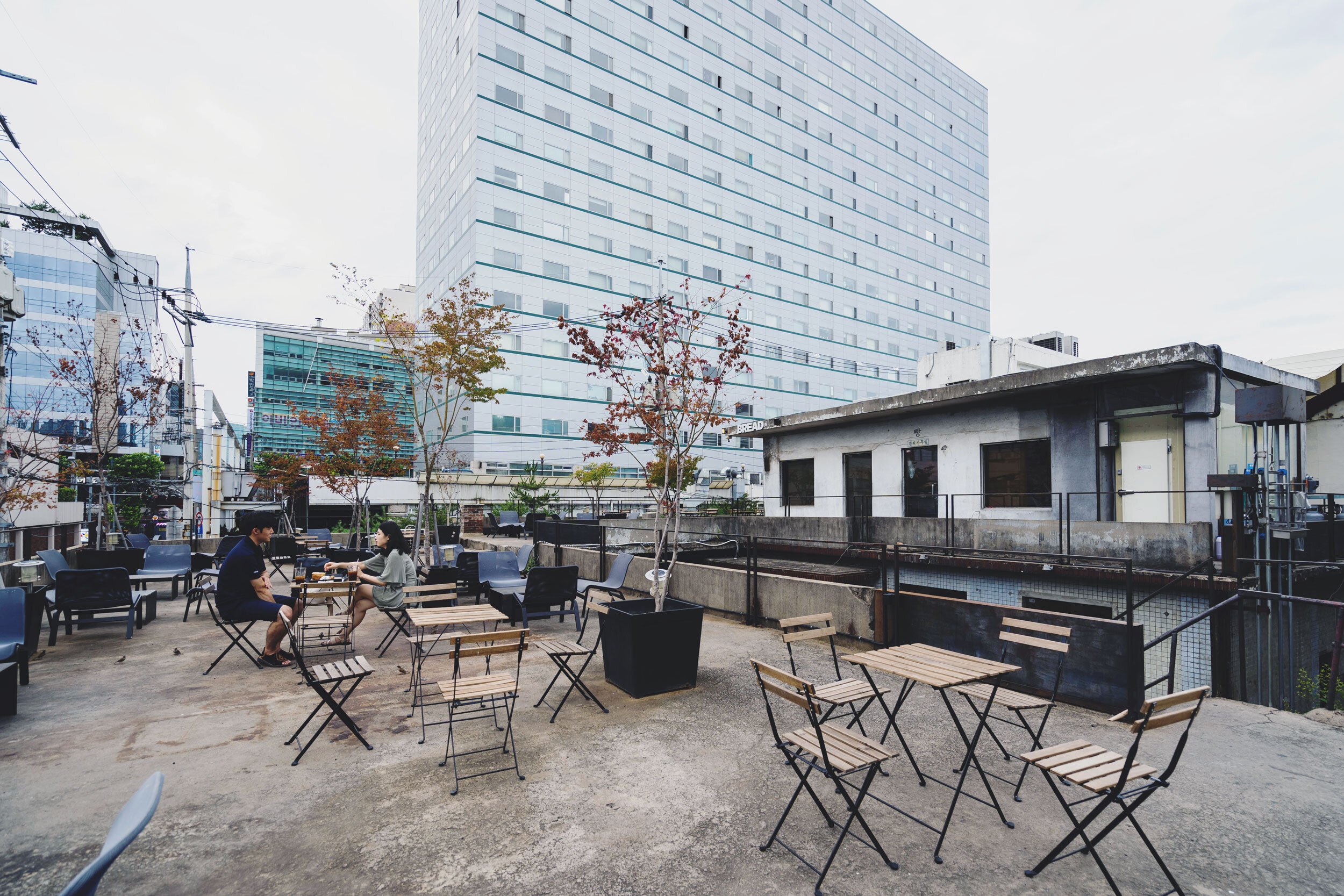
Possibly the hippest cafe chain in the city with locations that are converted old buildings. Their spot in Seongsu is in a gutted 1970s building that served as a former factory.
Cafe Onion Seongsu manages to balance old and new perfectly, and in doing this, makes for an extremely photogenic hang out. There are multiple seating areas, nooks and a rooftop as well. Their coffees and artisanal, homemade pastries and baked goods are tasty.
Great place to stop by when exploring the area and to take pictures.
Grandpa Factory
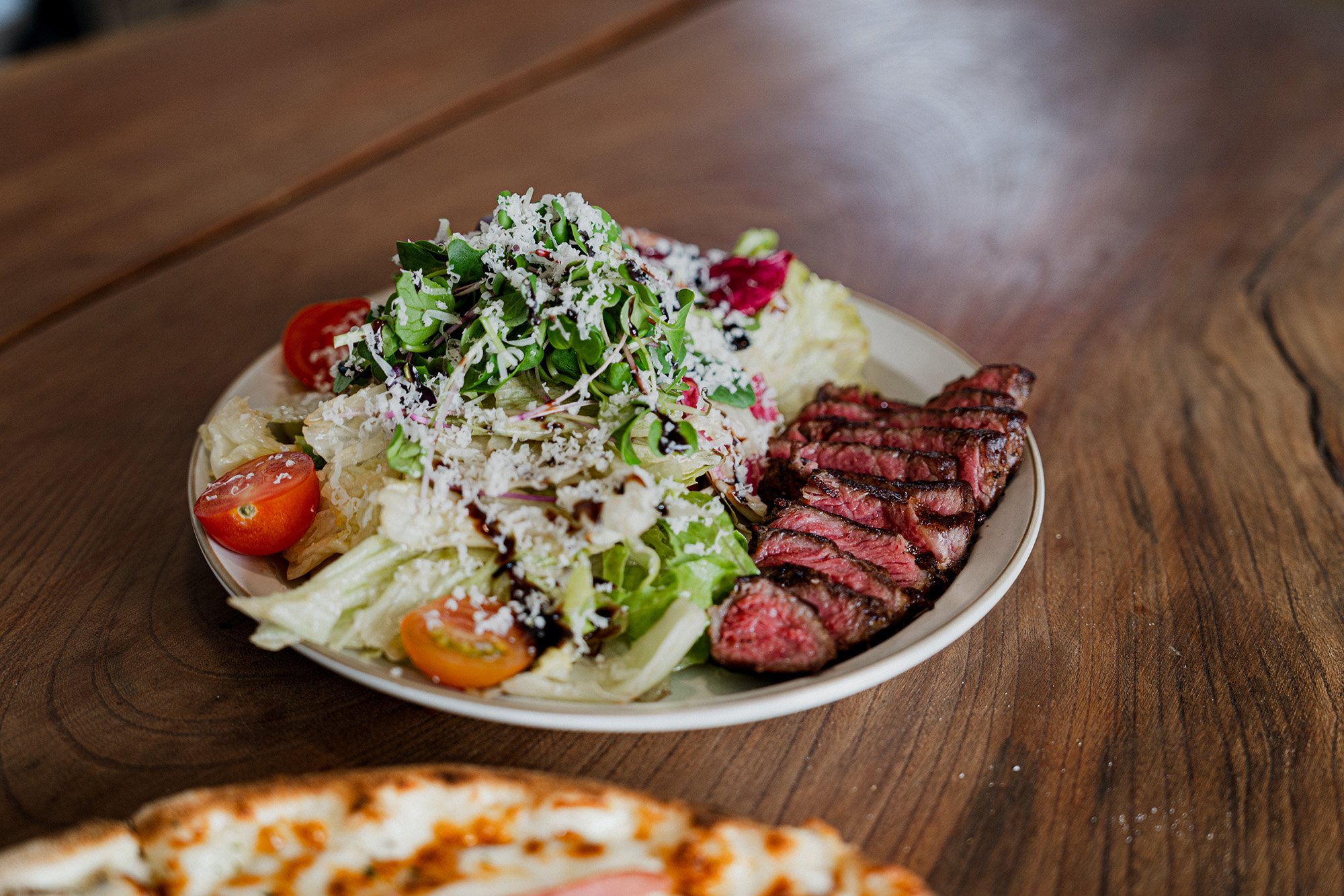
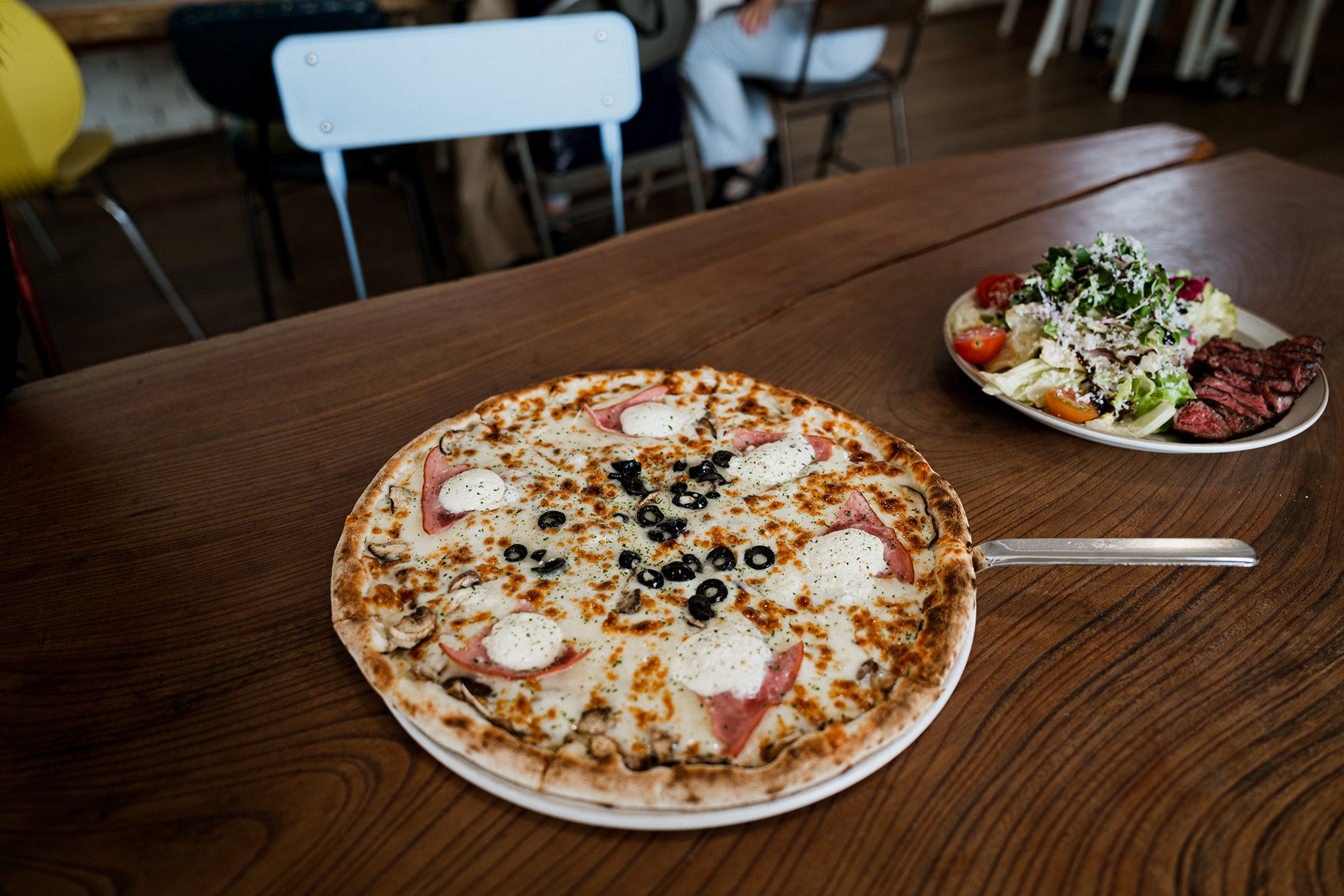
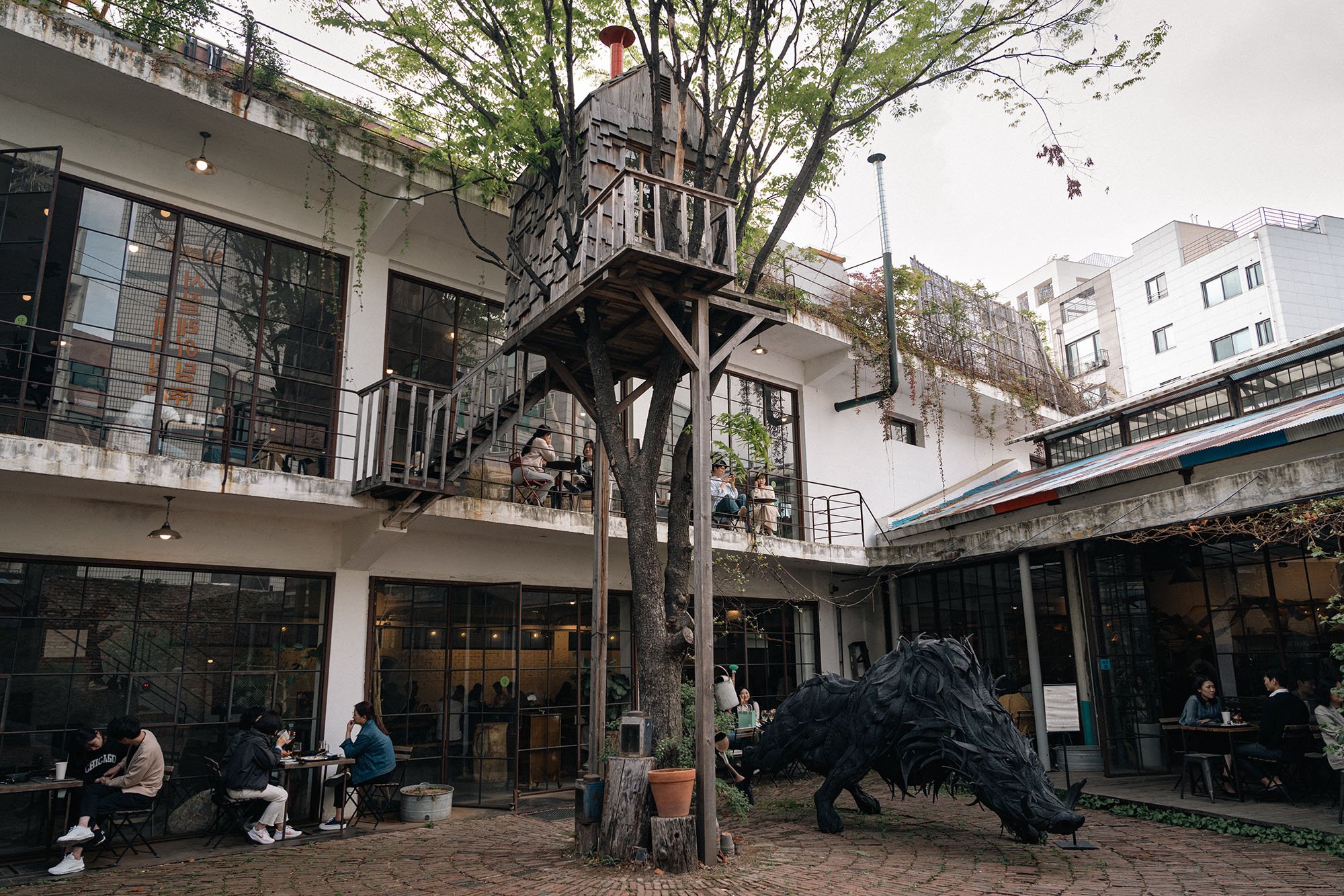

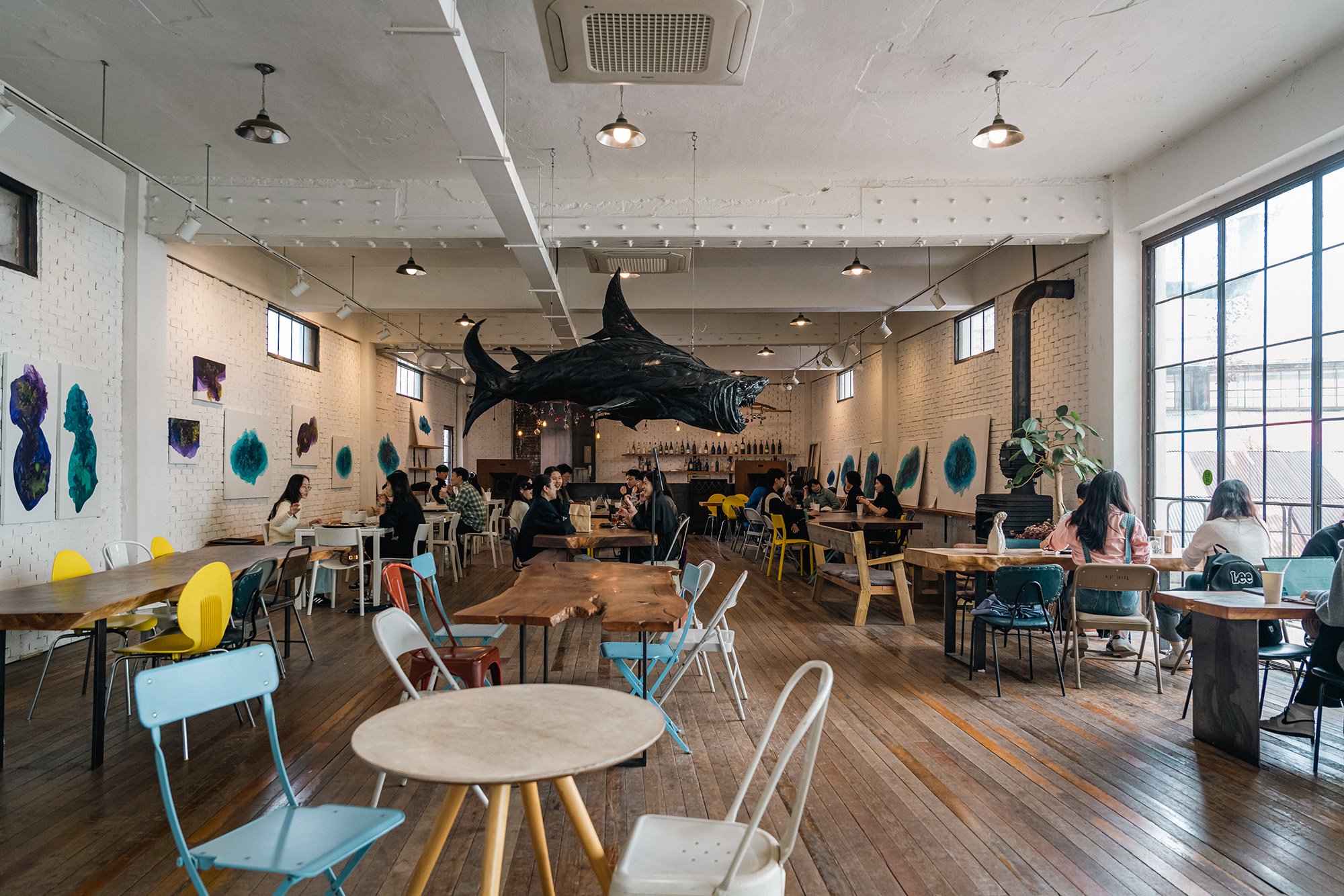
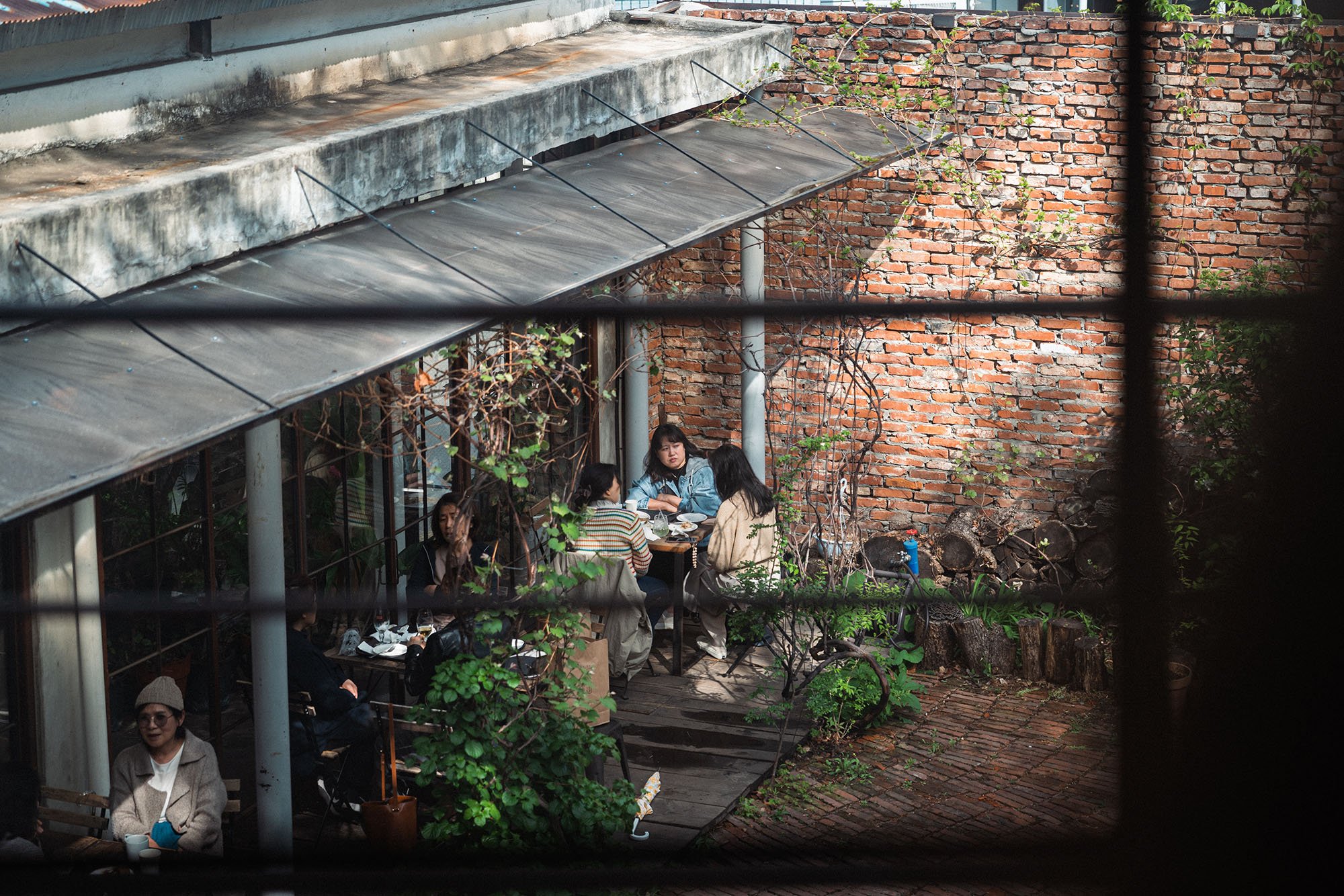
Built in an old factory, Grandpa Factory has three floors and outdoor seating so you can enjoy a meal, coffee or alcohol.
This cafe is known for its appearance in popular drama, “Vincenzo”, but its vibe and overall atmosphere does itself justice.
With ample seating inside and outside, including a literal treehouse space, Grandpa Factory not only has good food and drinks but it also showcases how old buildings can be successfully repurposed and utilized.
This was a great place that you’re sure to like.
KEEP IN TOUCH:
OTHER TRAVELS:
Seoul, Korea: The Food Tour
Seoul food recommendations after two trips eating at places recommended by Japanese and Koreans.
A trip to Seoul is all about the amazing food. Strong flavors, lots of spices, it’s hard to ask for more.
On my first two trips to the city, I’ve realized that following Japanese travel guides and blogs about Seoul are a lot better than English ones.
It makes sense - Seoul hasn’t been a major tourist destination for Westerners for all that long, and Japanese tourists had been exploring their neighbor from before them. There’s even a Japanese word-of-mouth site with reviews for everything from restaurants to shopping to clinics. [J]
Most of the food spots that I’ve been to and have loved have been from Japanese sources, a group known to have high expectations. These are some of the restaurants and cafes that I recommend:
RESTAURANTS
dong myeonok house

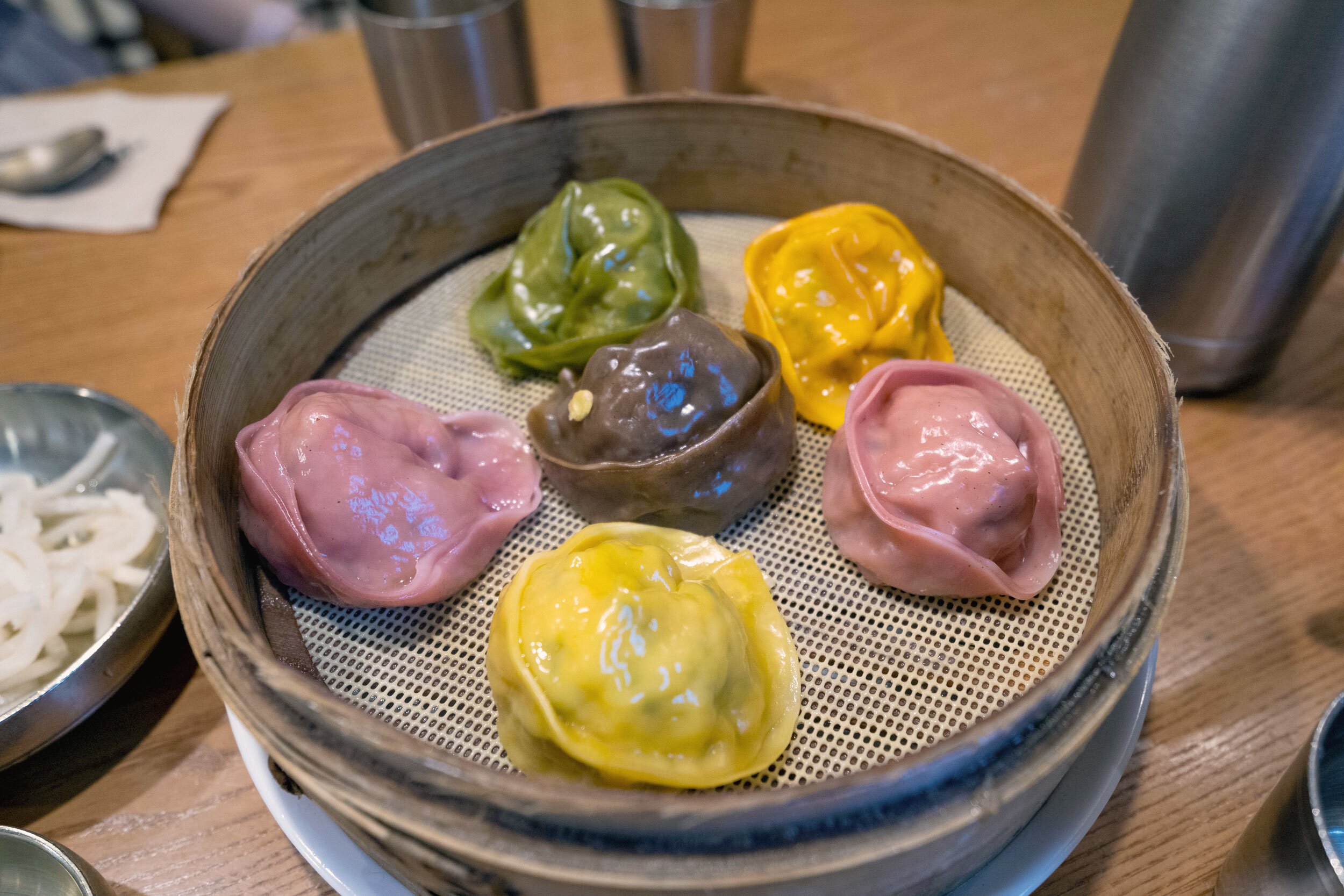
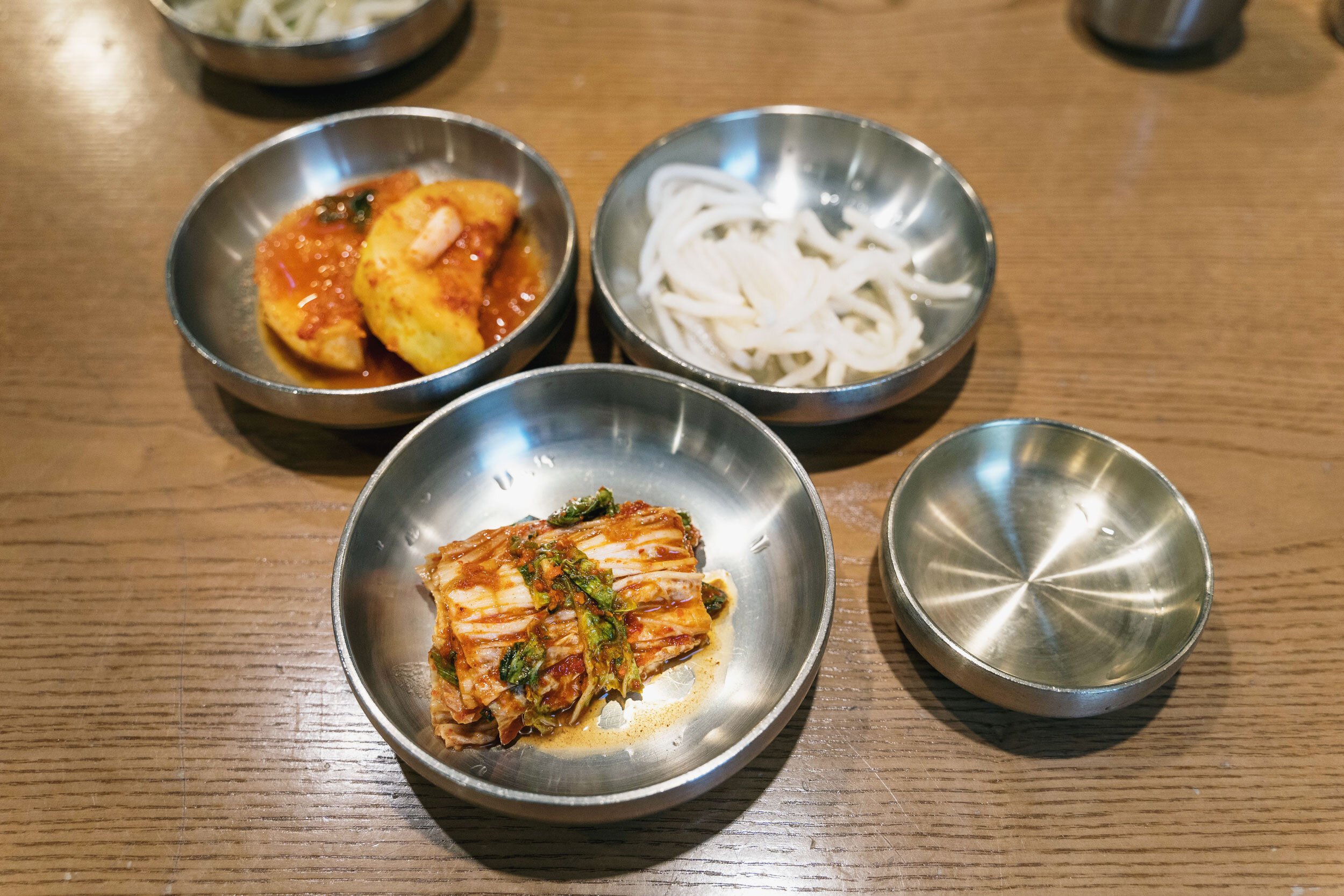
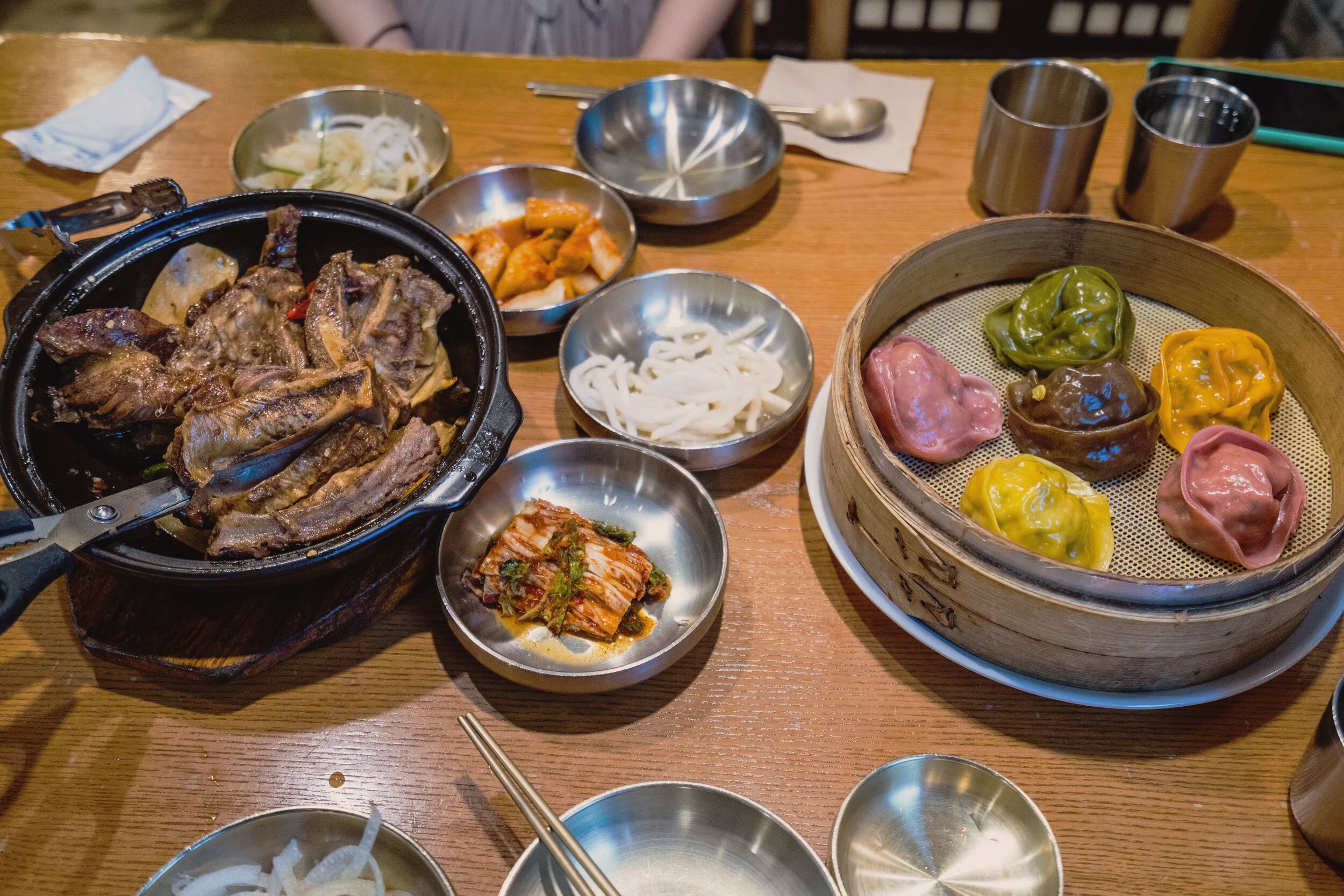
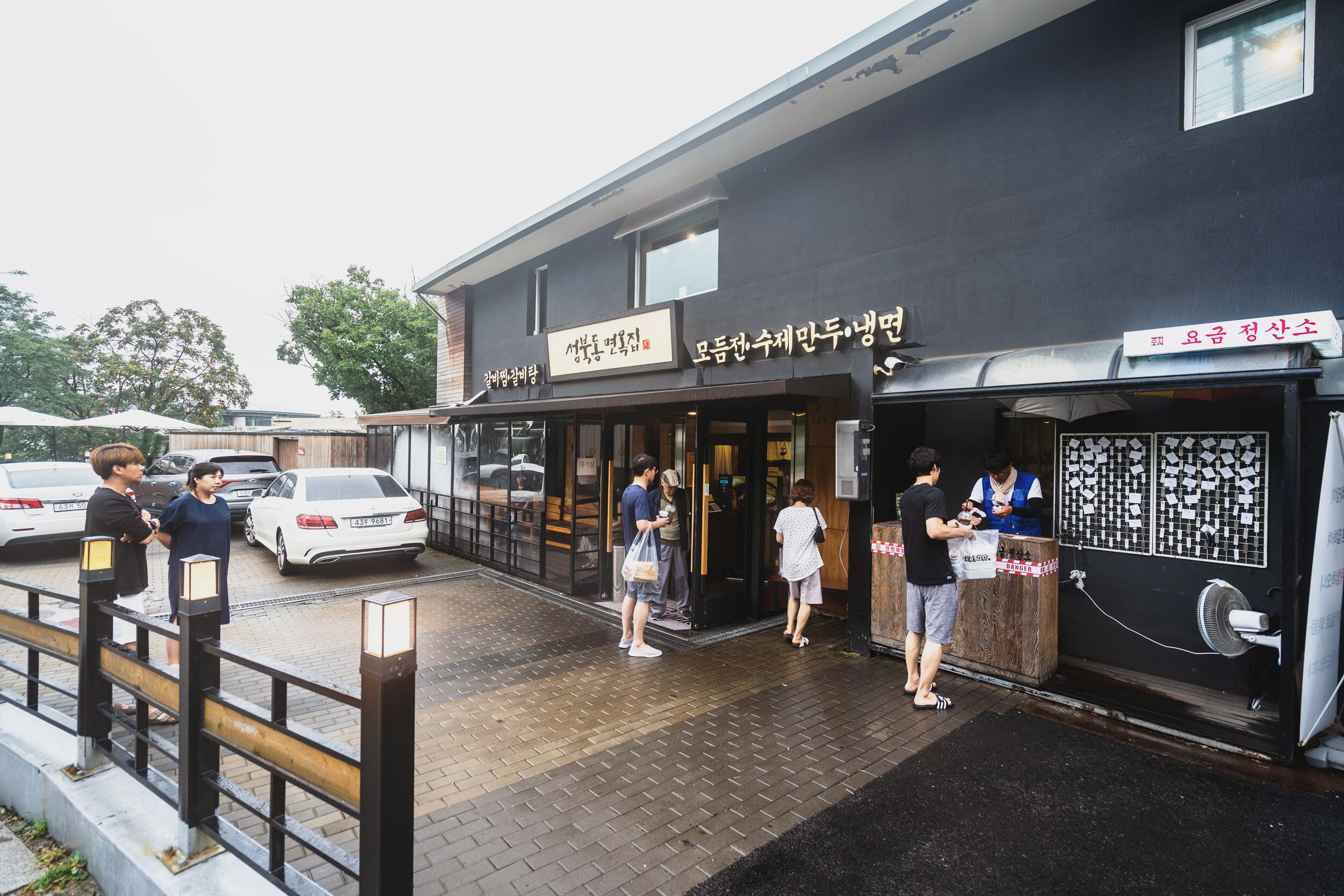
Legit Korean kalbi. You know it has to be when the only other non-Koreans there were American students… with their Korean host family.
Dong Myeonok House is located up a hill in the seemingly upscale residential area of Seongbuk. There’s no major businesses or subway stations around it, so we took a taxi and went for lunch.
We ordered a small order of kalbi and 6-pieces of colorful mandu. The kalbi was melt-off-the-bone tender, tasty with a little hint of sweet, and I couldn’t get enough of the mandu. Thanks to my friend Daniel for the rec, I definitely recommend this place as well.
Area: Seongbuk
MAP
BHC
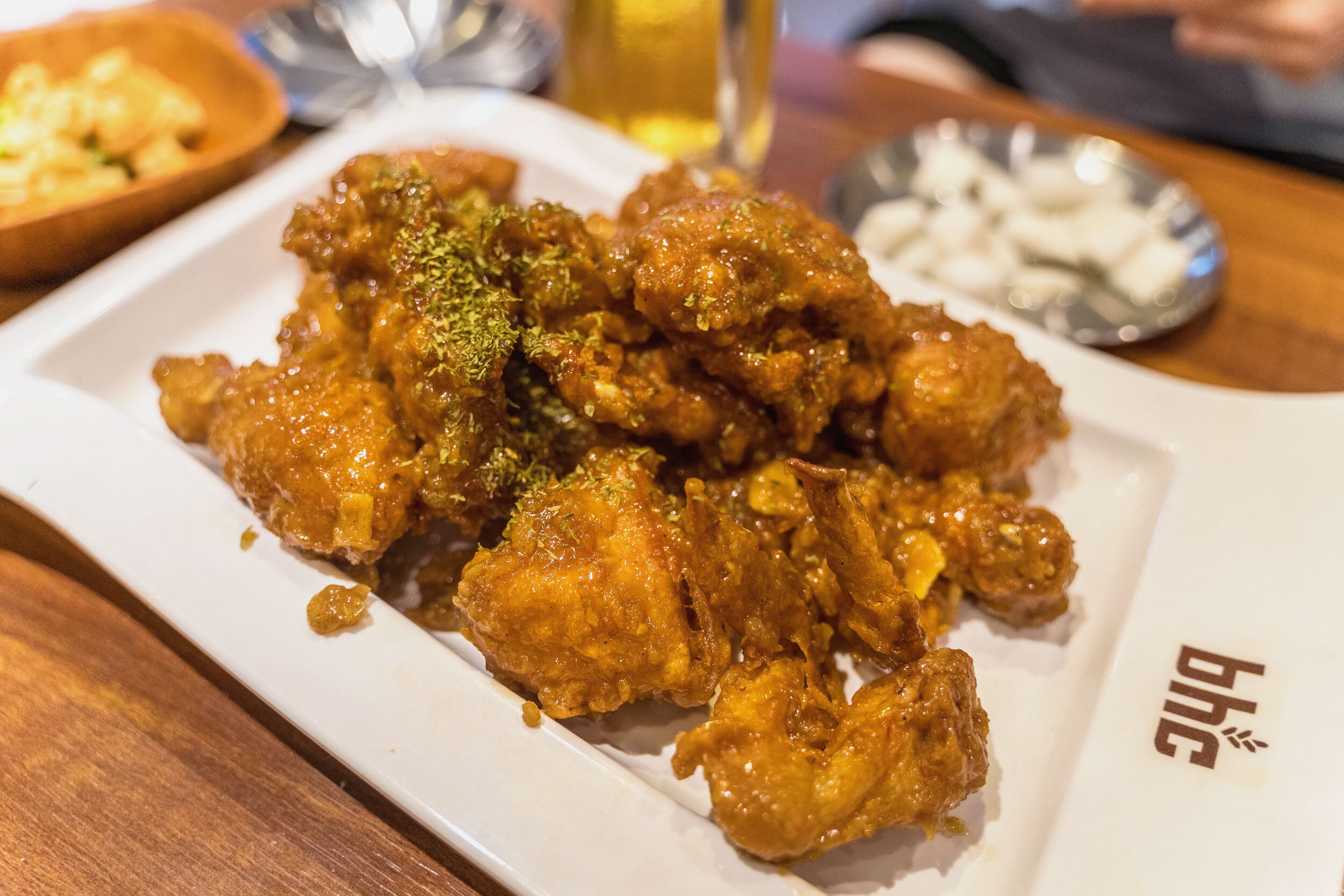
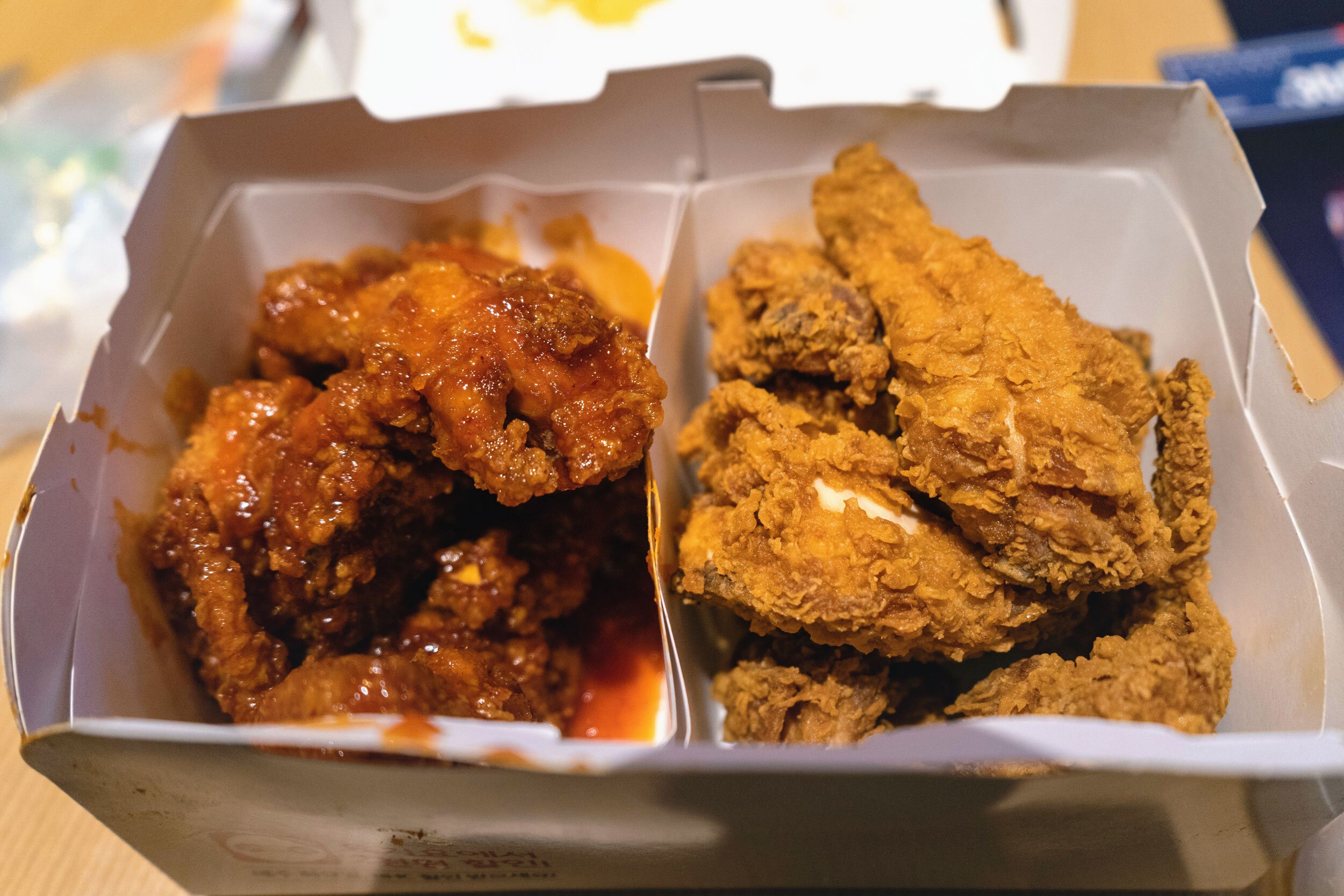


Fried chicken and beer are a thing in Korea, and they do it so well. BHC became my go-to restaurant in Korea, and I’ve managed to go there 3 times during my trips and layovers.
There’s so much flavor in each bite, especially their spicy ones. Some locations like Myeongdong’s let people eat on the outside tables and drink, others are indoors-only, and there’s an option to takeout. Either way, delicious and highly recommended.
http://www.bhc.co.kr/ [KR]
Area: (Chain) Myeongdong, City Hall, etc.
MAP
YAETMAT SEOUL BULGOLGI
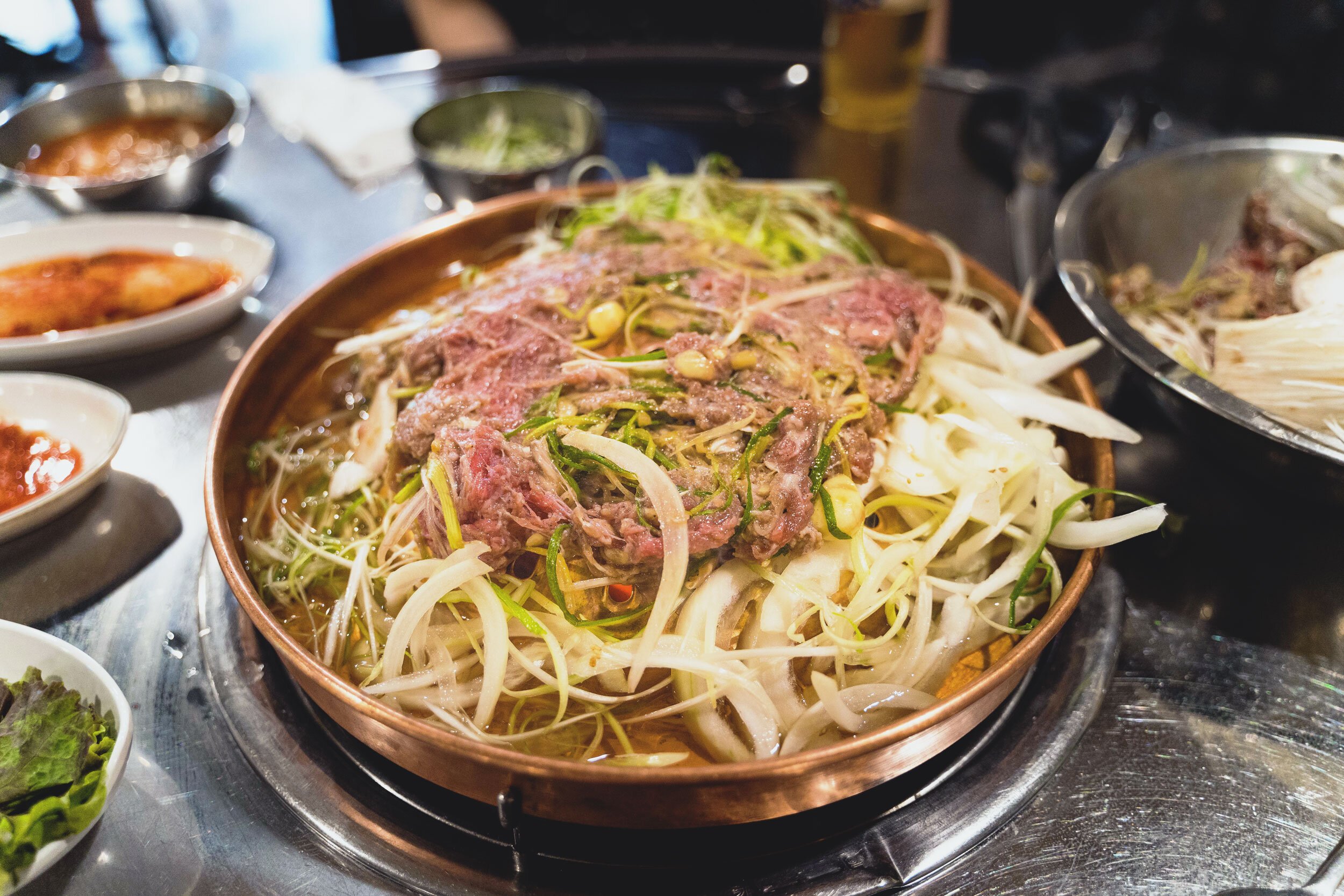
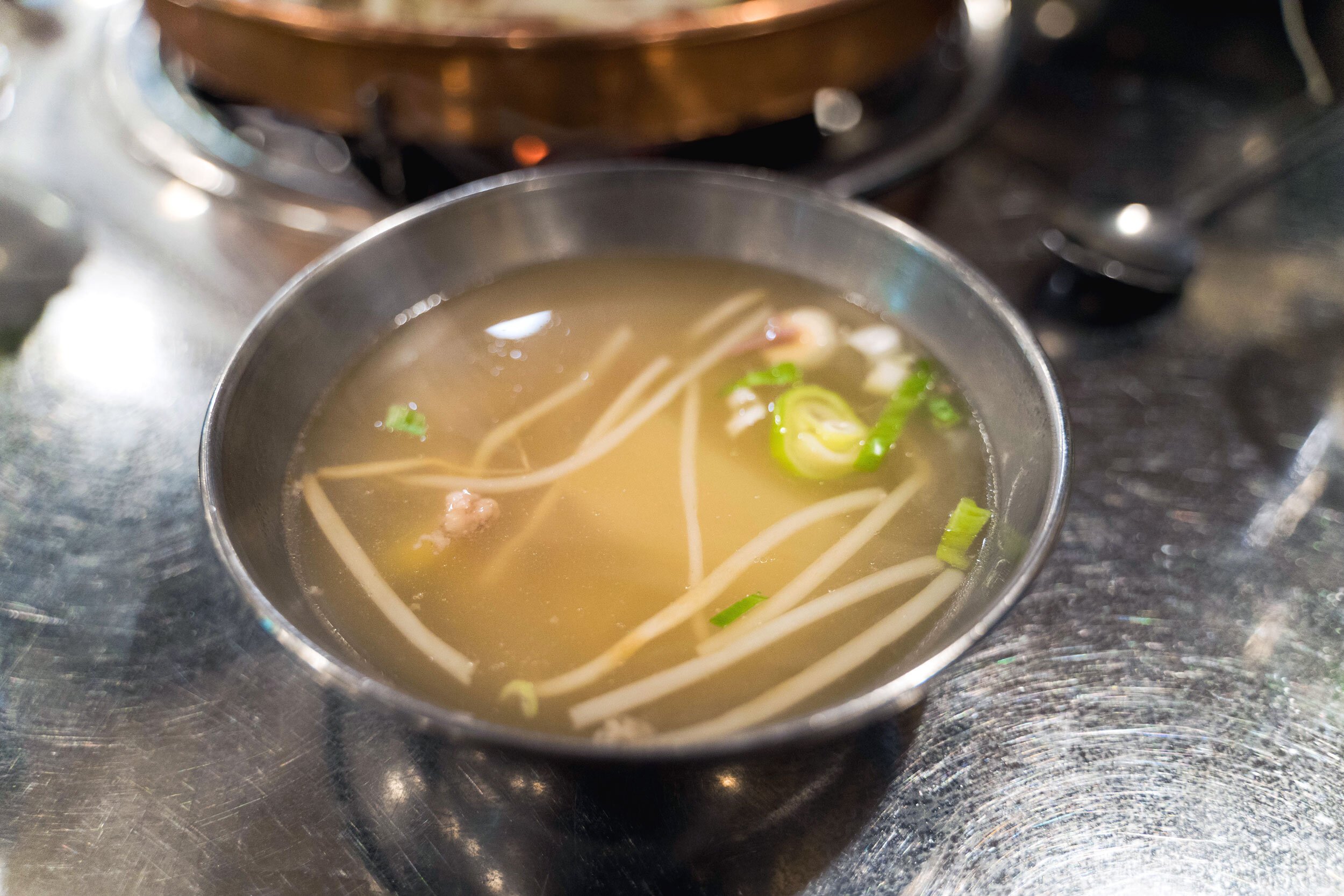
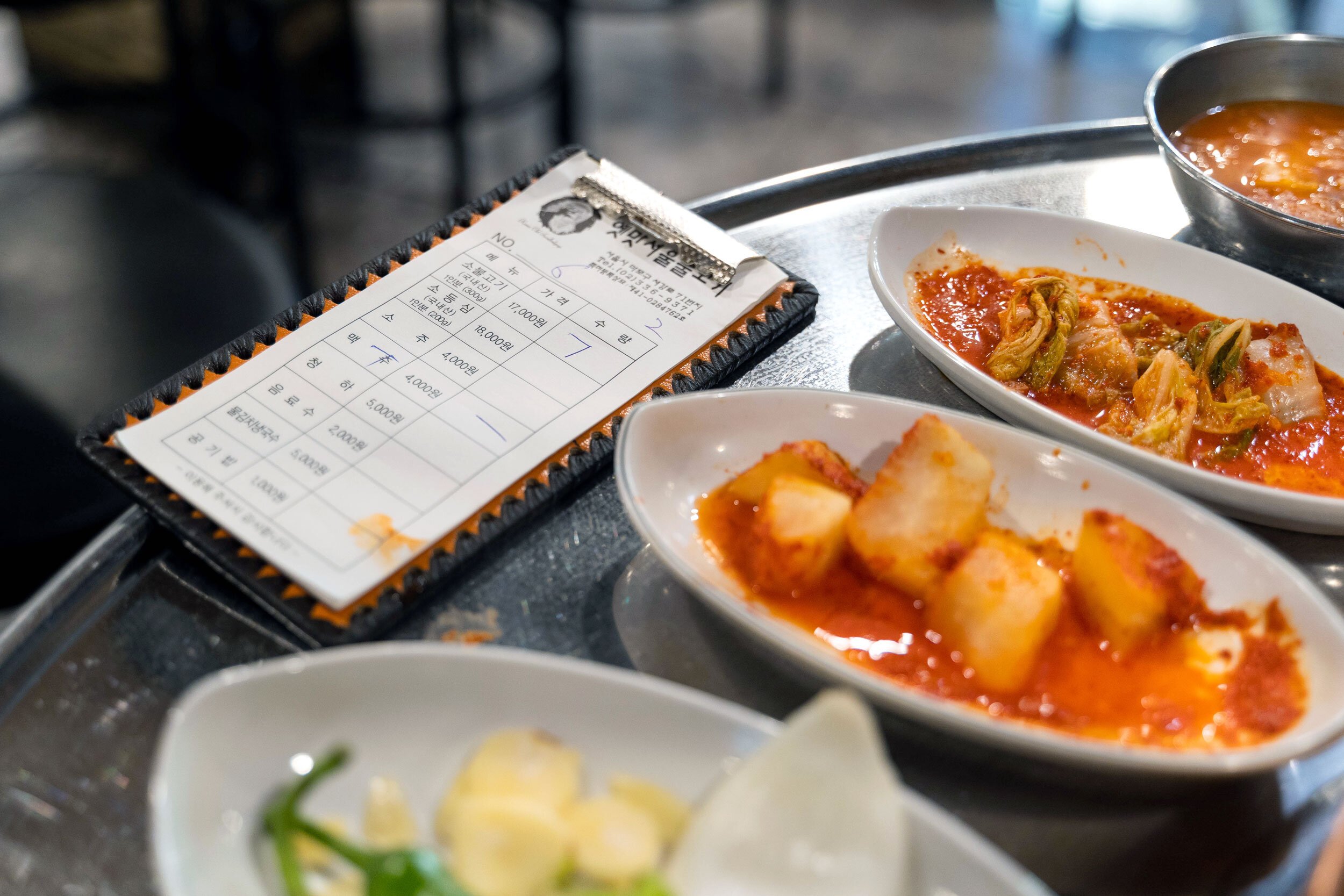

It’s hard to beat self-serve, all-you-can-eat sides and some tasty bulgolgi cooking in front of you. That’s why Yaetmat Seoul Bulgolgi was so good.
Located a couple blocks from Gwangheungchang metro station (광흥창역) on Line 6, Yaetmat Seoul Bulgolgi is a casual restaurant that only had locals - so you know it’s legit.
You sit on stools around a BBQ table and the staff comes by and makes sure everything is cooked properly. There’s a bar of assorted kim chee, greens, onions, garlic and more that’s free for the taking. A very casual, authentic experience and of course, tasty.
JINOKHWA HALMAE WONJO DAKHANMARI
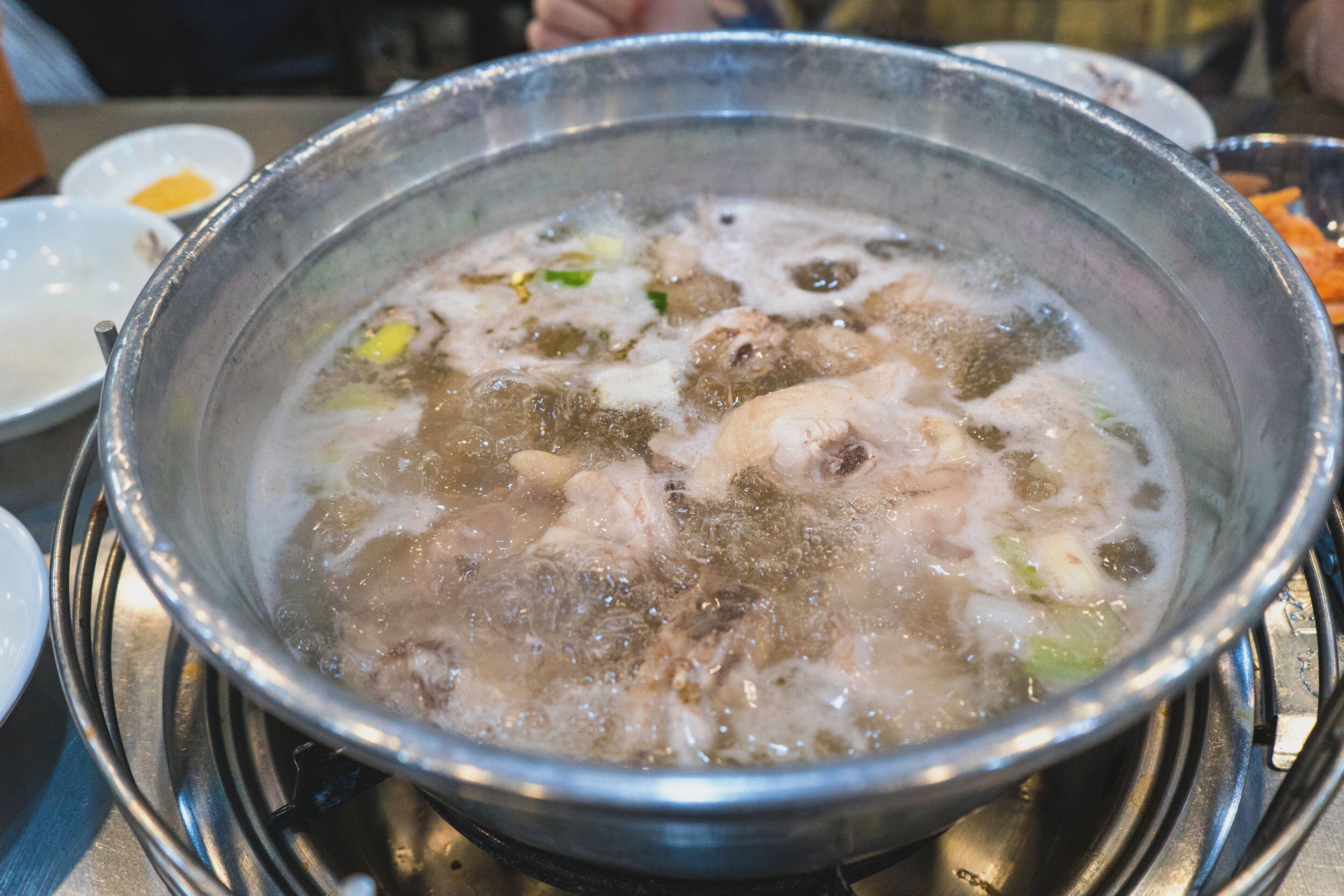
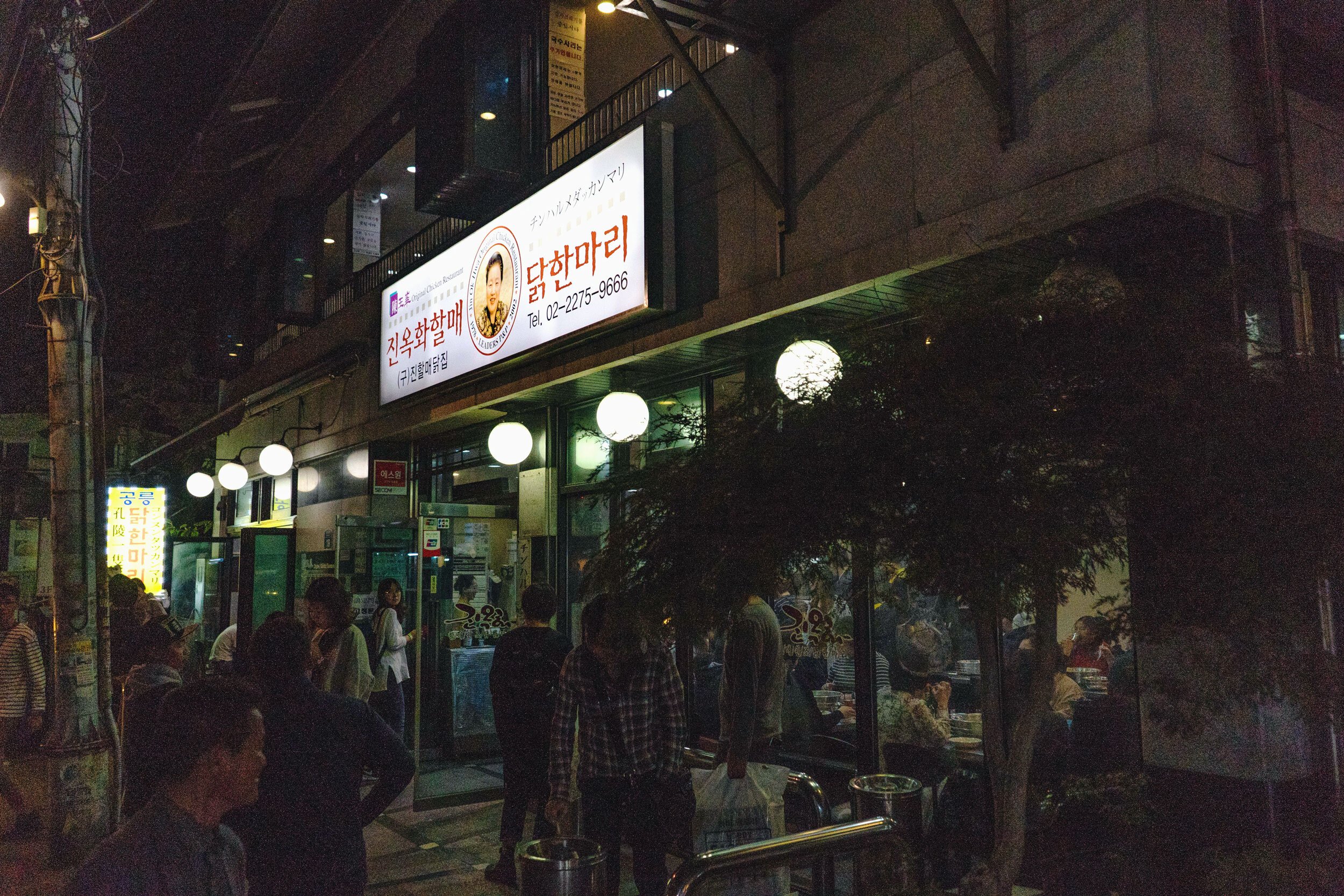
This restaurant only serves one dish: Dakhanmari - Chicken hot pot. They put a pot on your table’s burner with your chicken and vegetables and it starts to cook. It’s your job to mix your dipping sauce and order extras like tteokbokki if you want.
While it’s so simple, it’s so good. There was a large crowd waiting to be seated outside, but with 3 floors of tables, the wait wasn’t that long at all. You could go to the neighboring restaurants serving the same thing, but you can’t lose with this place.
http://www.darkhanmari.co.kr
Area: Jongno 5-ga / Dondaemun
MAP
YEONGCHEON YOUNGHOE
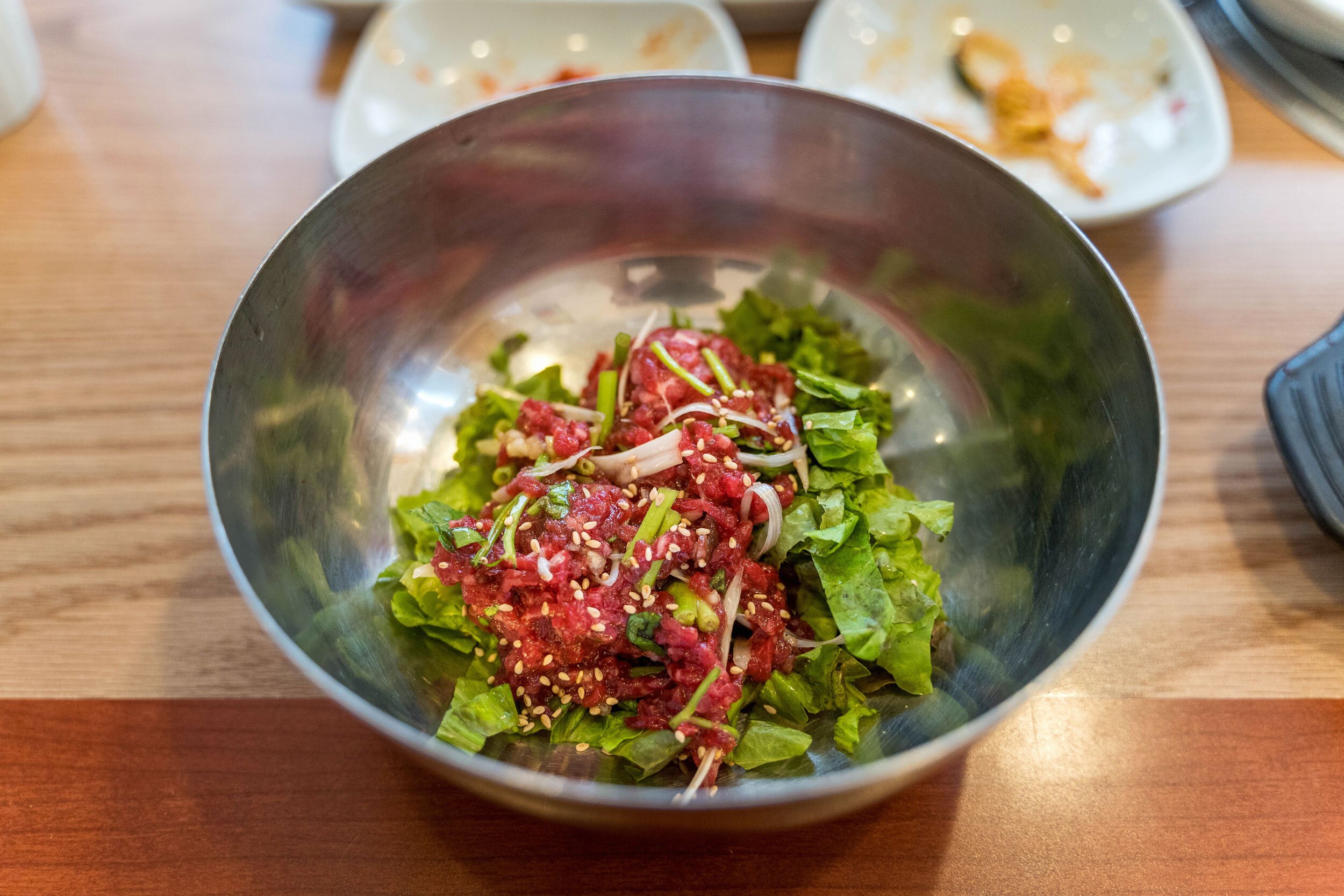
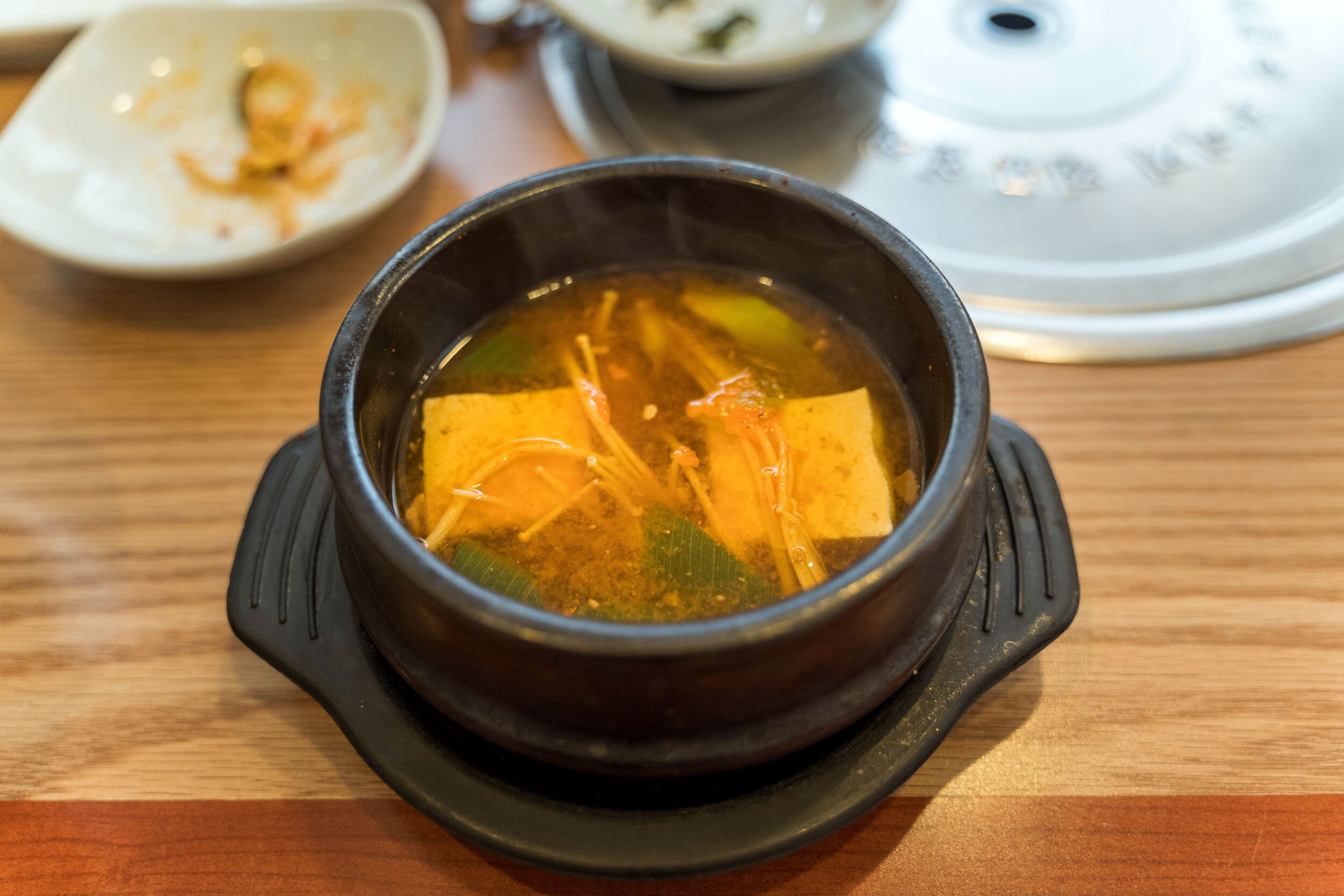
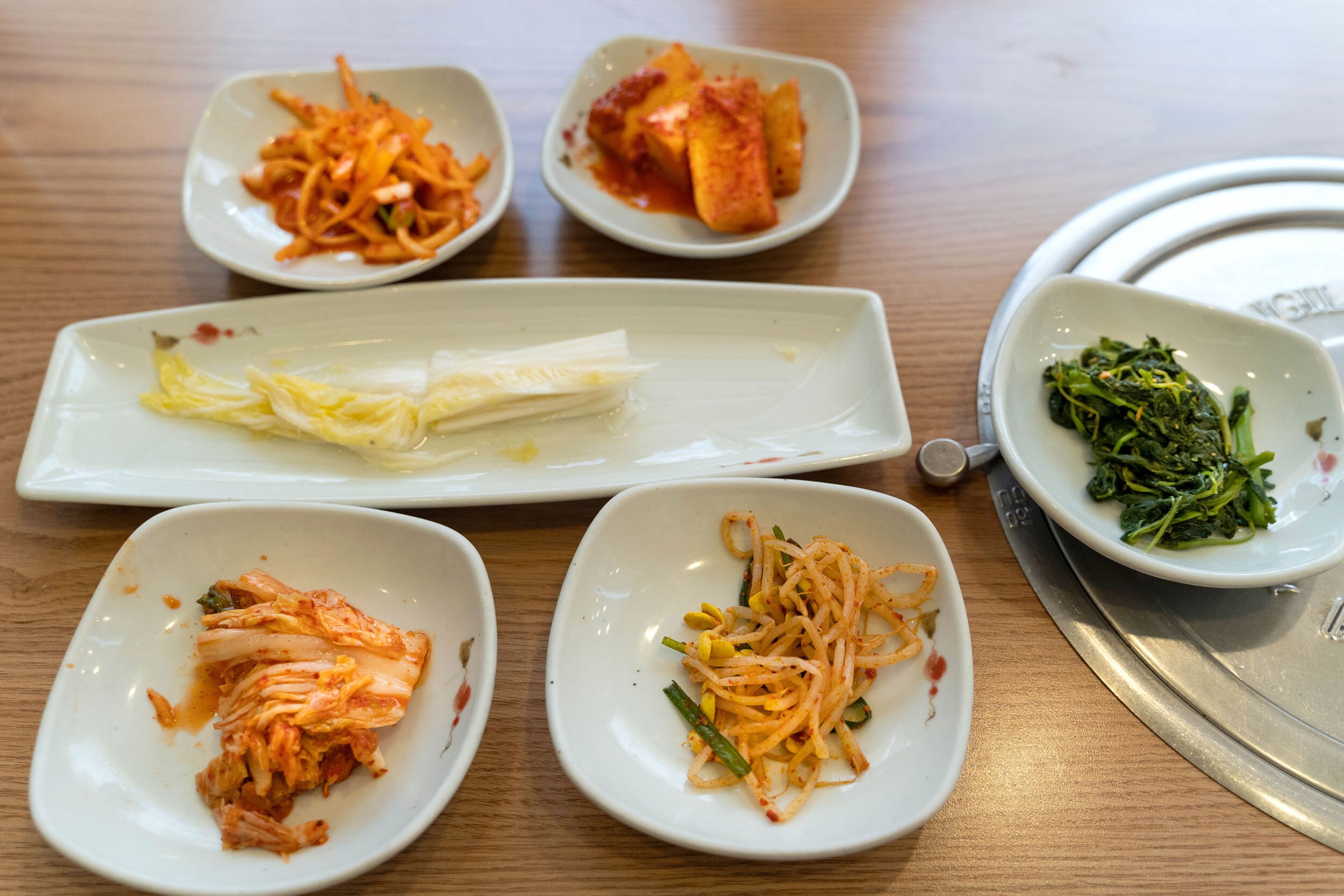
Bibimbap is one of Korea’s famous dishes, and Yeongcheon Younghoe in the upscale Cheongdam area of Gangnam was highly rated and apparently visited by celebrities.
We went for lunch and despite the restaurant being on the larger side, it was full with some waiting. The bimbap had a delicious mix of raw beef and greens - tender and fresh - mixed with rice.
A lot of the bibimbap I’ve seen at food stalls didn’t have beef, so this was a nice chance to have some that did.
https://nuon.tistory.com/209 [KR]
Area: Cheongdam, Gangnam
MAP
SINSEON SEOLLEONGTANG

Really good oxtail soup still boiling in the pot. The seolleongtang oxtail soup st this chain was really good, and there’s unlimited kimchee at the table for your taking.
Service is quick and efficient. We went around noon for lunch and there was a line - it’s quite popular and has been featured in a Korean drama - but the line moved really quickly and was totally worth it.
http://www.kood.co.kr
Area: (Chain) Myeongdong
MAP
DAECHI JEONG-YUG SIGDAN
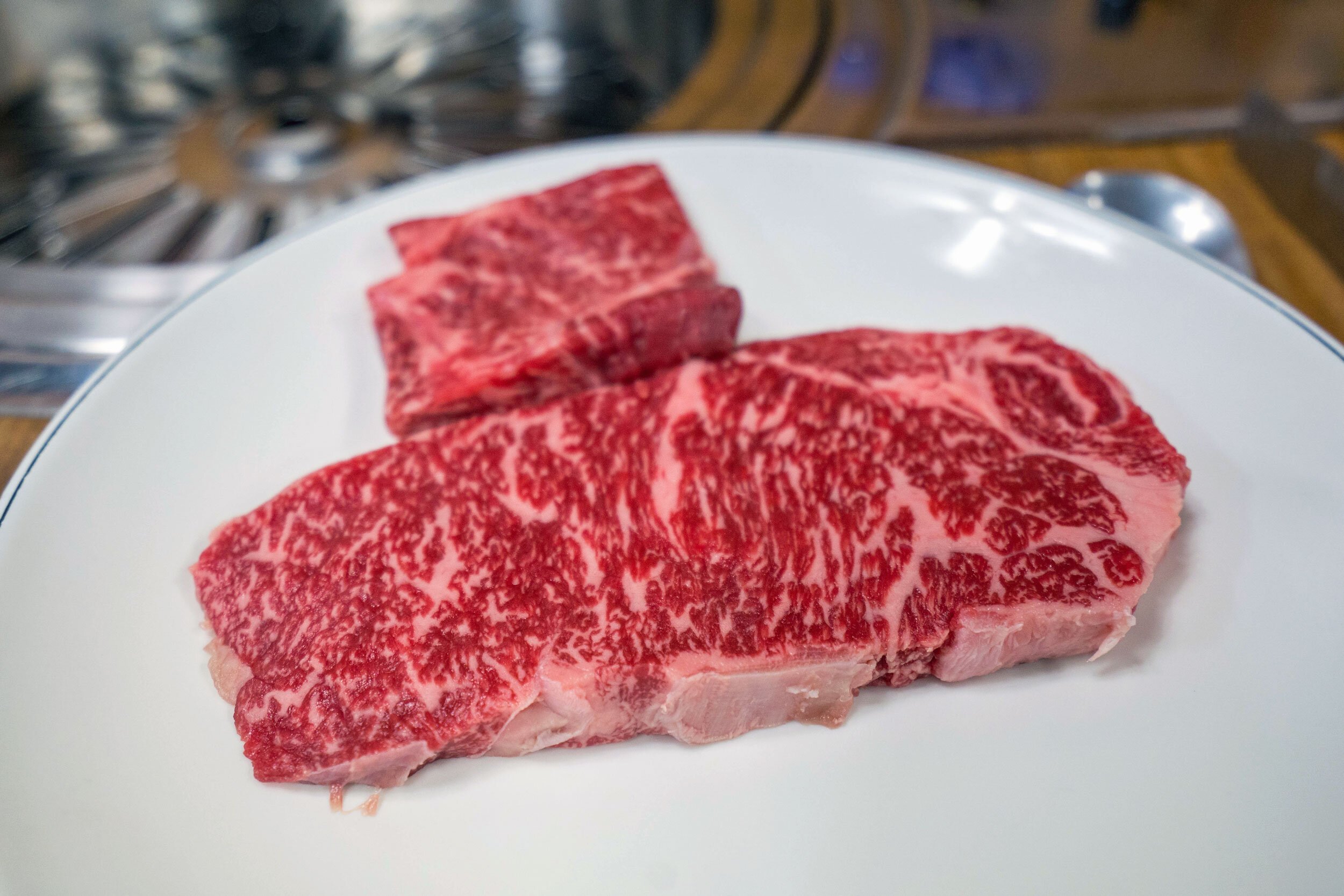
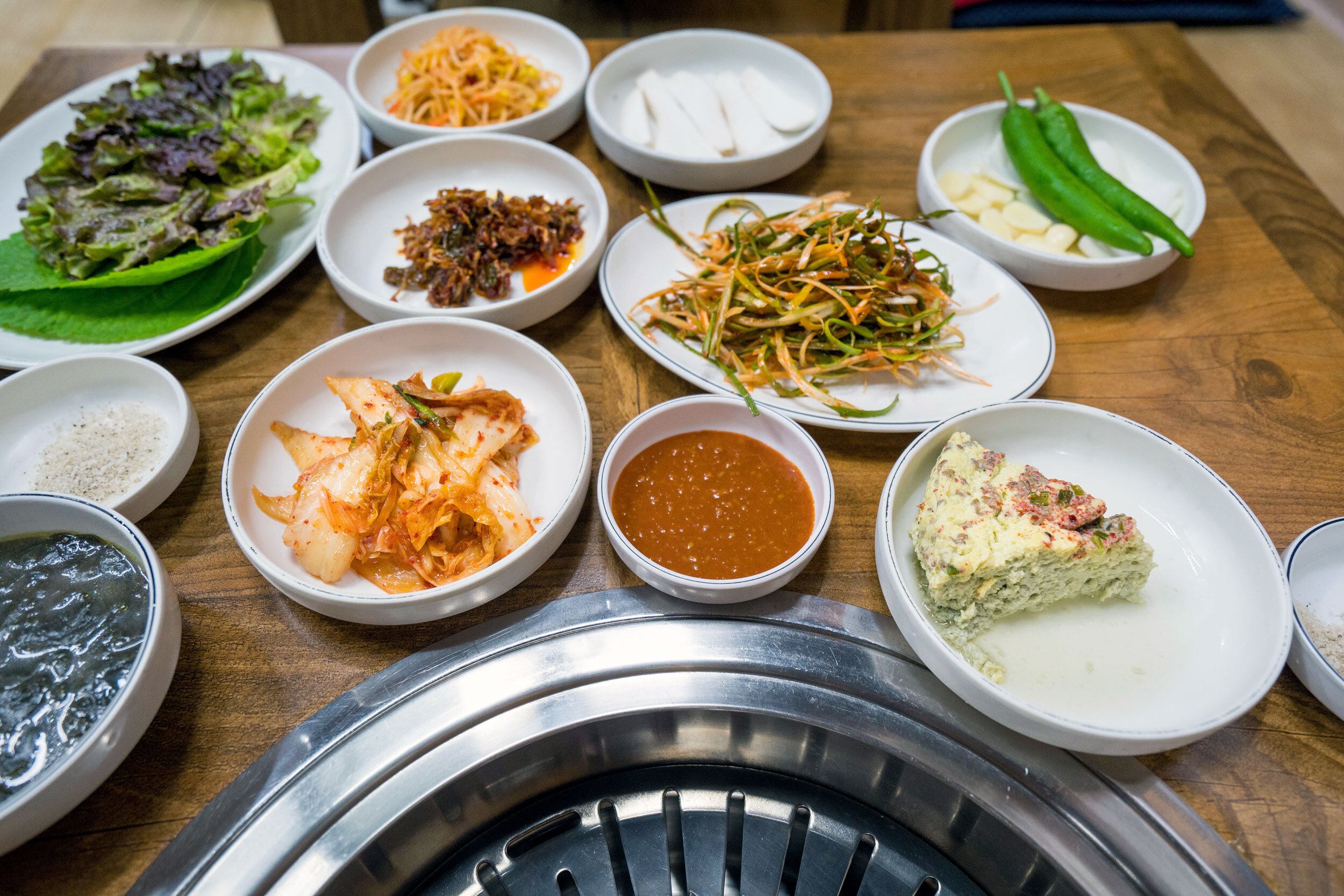
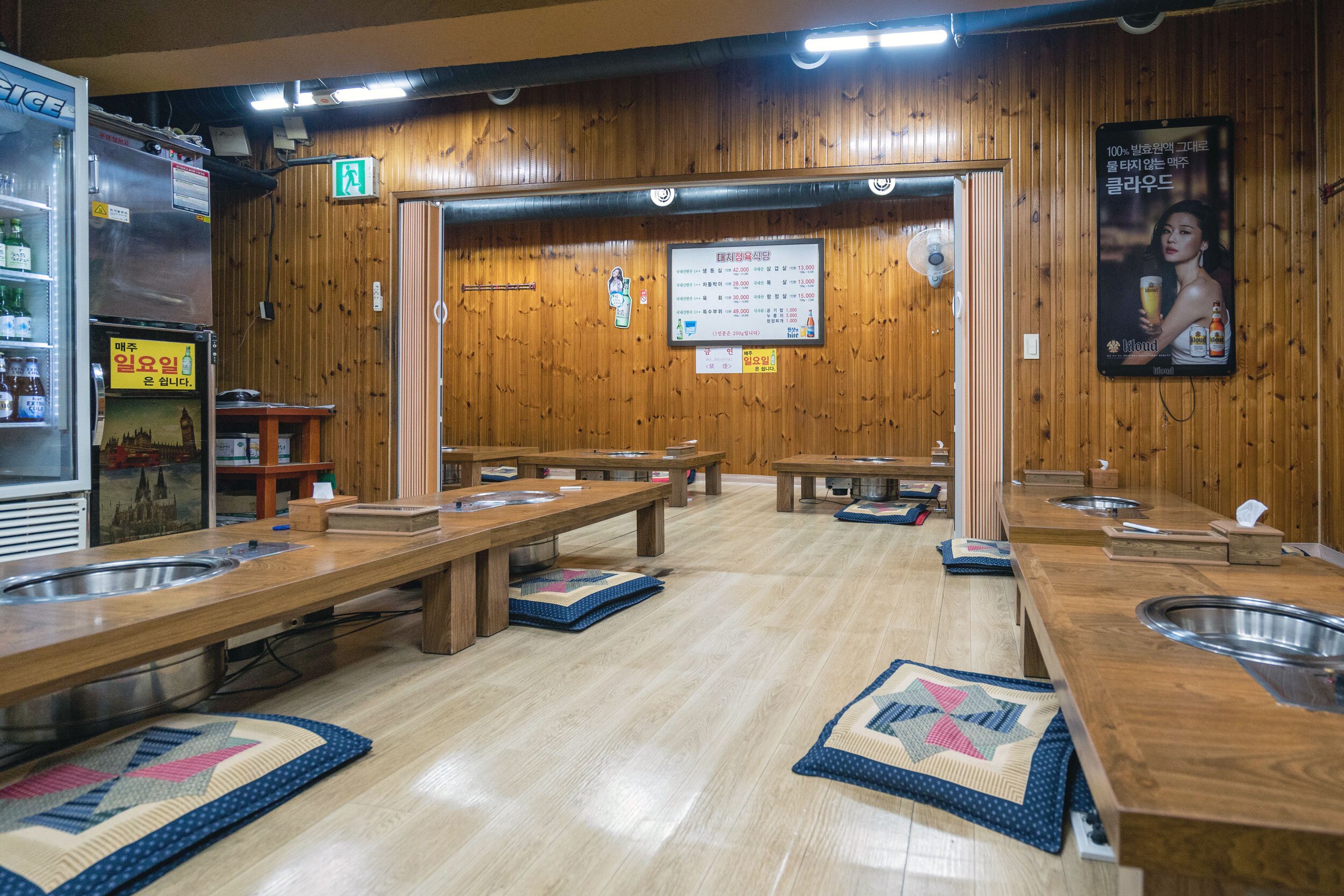
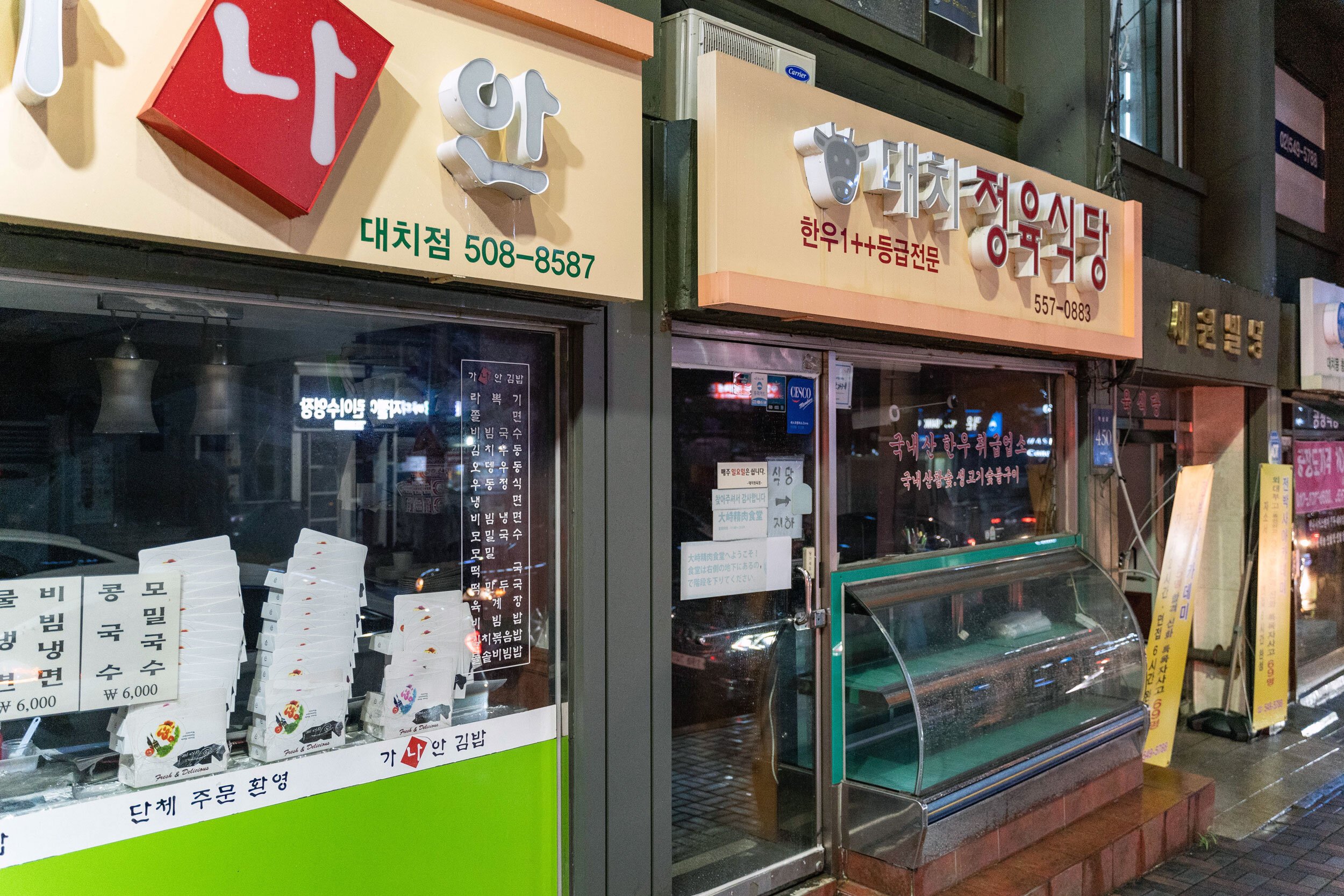
When a butcher shop runs its own Korean BBQ joint, it’s going to be delicious. This is the case with Daechi.
A 15-20 minute walk from COEX shopping mall, Daechi specializes in top grade Korean beef. The beef that they serve are Hanwoo beef and rated 1++ - the highest in the Beef Marbling Standard in Korea. We ordered beef to barbeque as well as yukke, slices of raw beef mixed with raw egg. So good.
Daechi is a bit hard to find - there’s an entrance near the meat shop and it’s down some stairs (last picture, to the right). If you’re around the COEX area, it’s worth checking out.
Area: Seolleung, Gangnam
MAP
DAKKAL WONJONIB
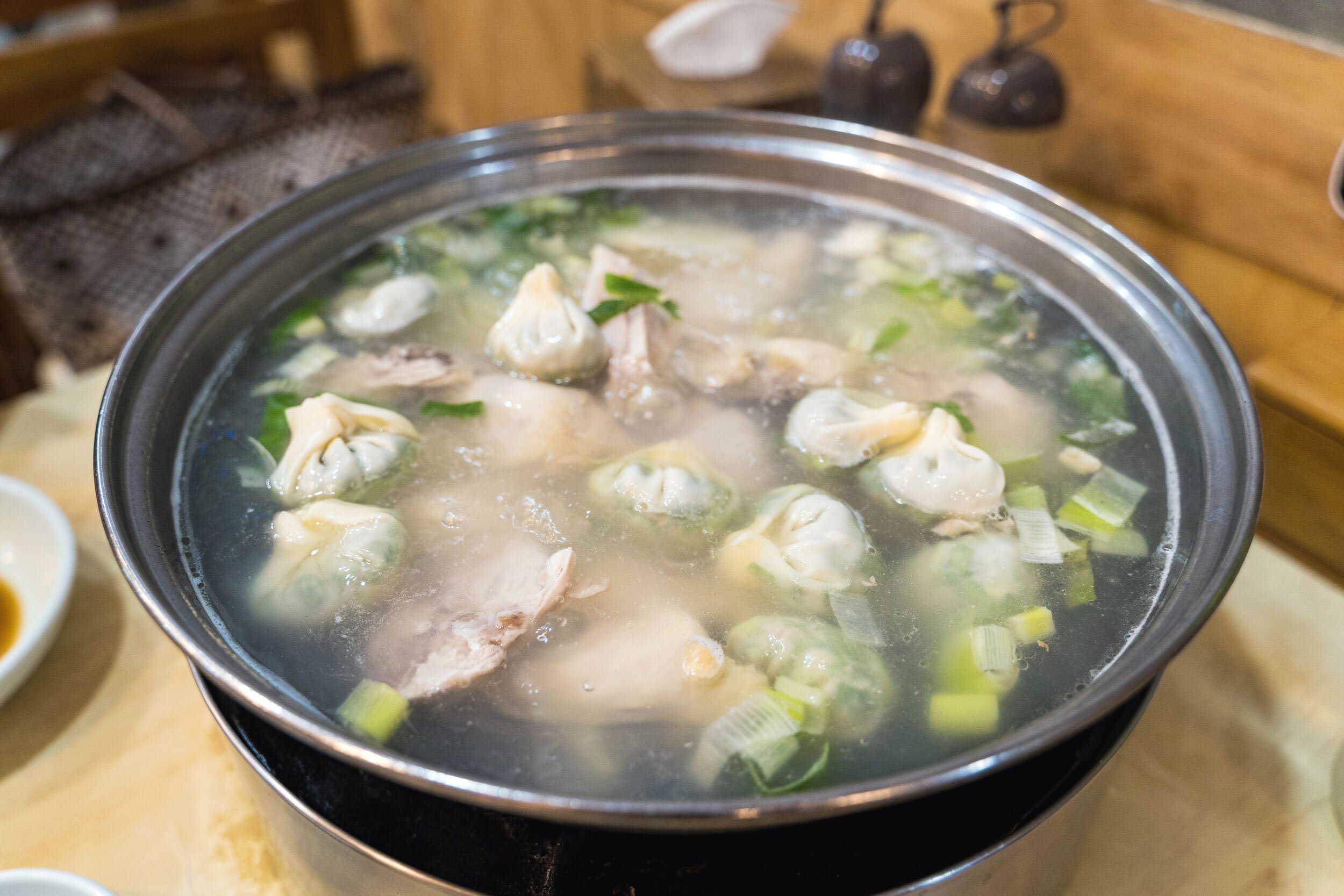
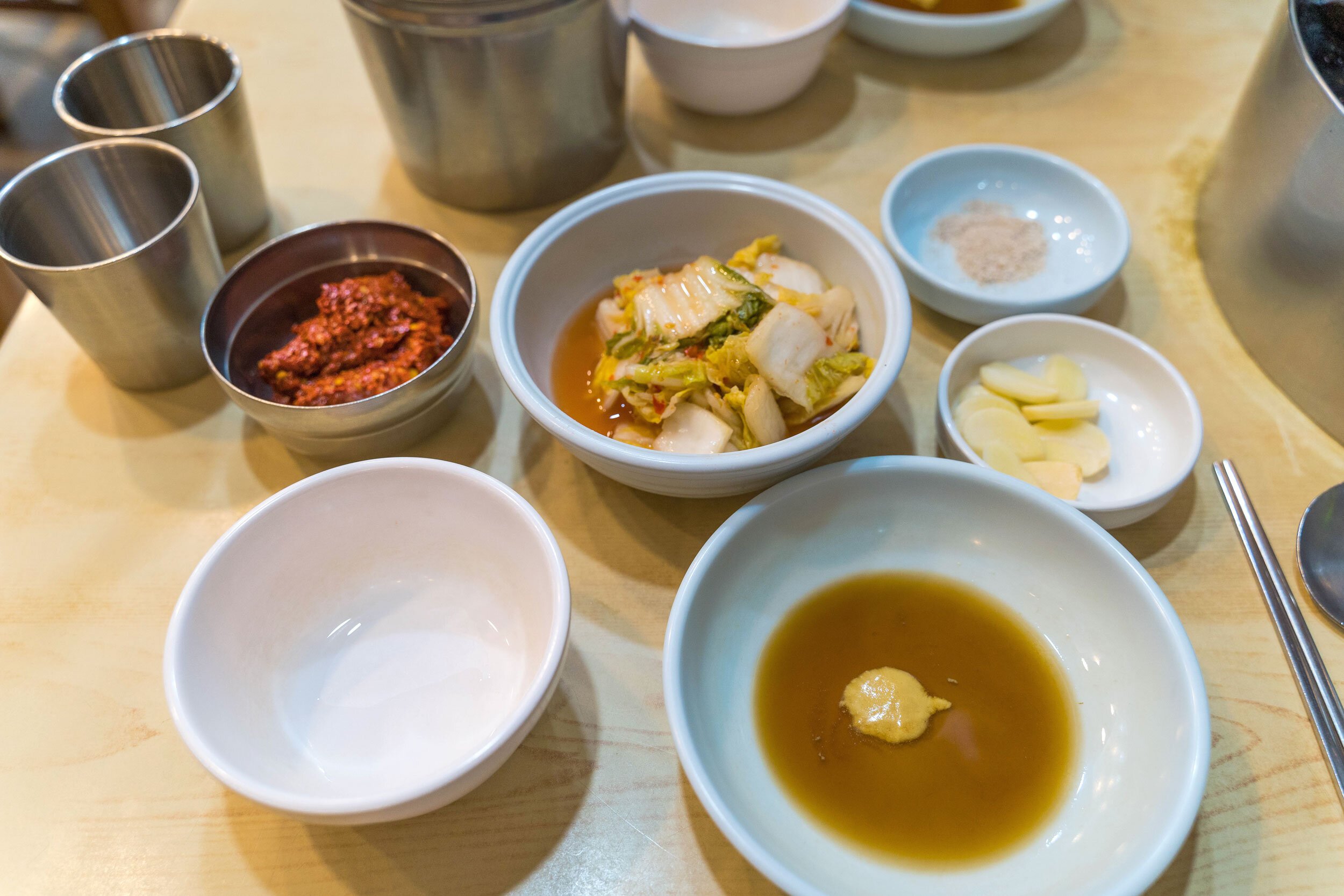
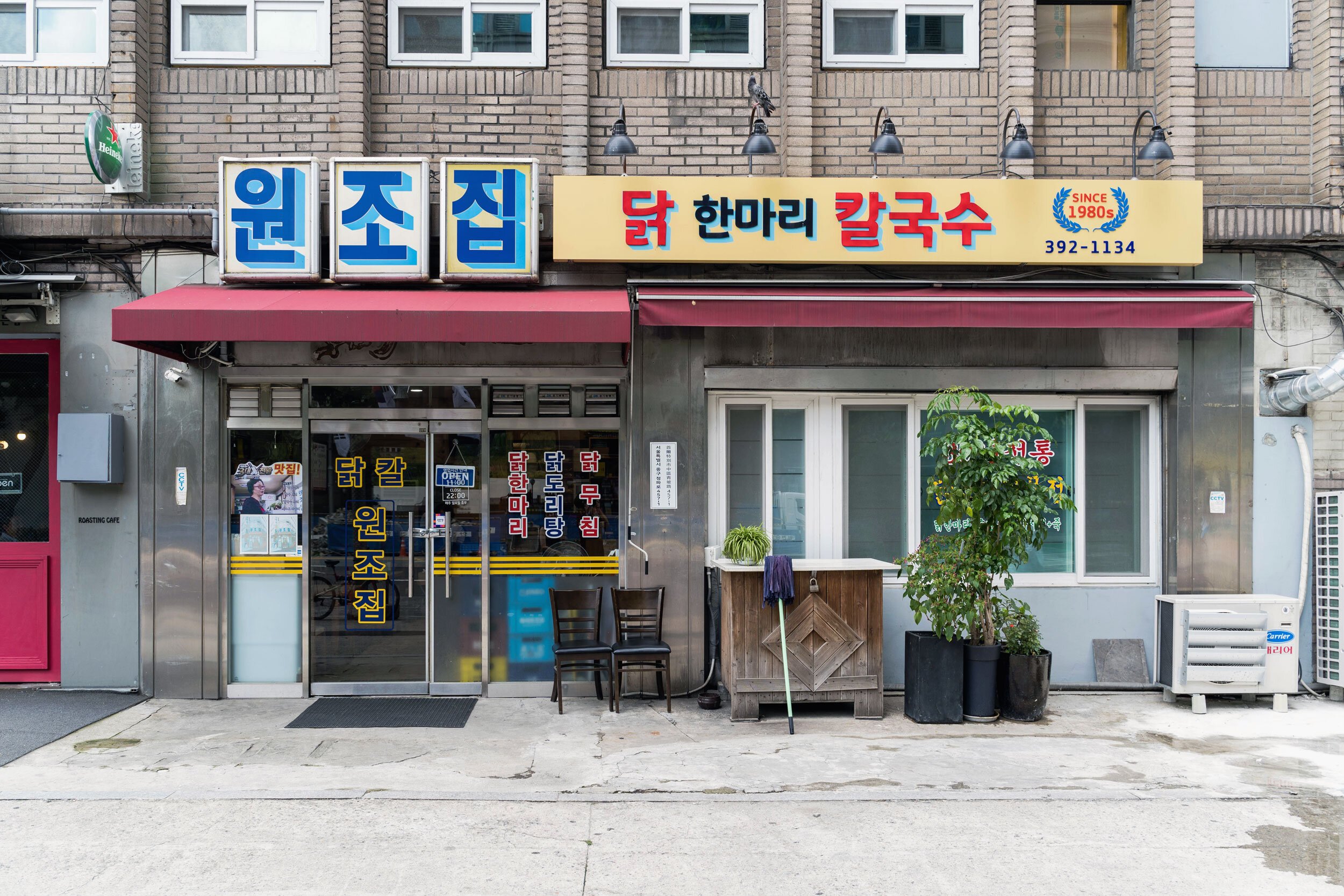
Dakhanmari is probably one of the simplest Korean dishes yet it’s just so good. It’s basically a chicken in a boiling hot pot where you dip into a spicy sauce.
Compared to the more famous Jinokhwa, Dakkal Wonjonib is a smaller, more local restaurant serving the dish. They’re both fantastic, the biggest differences would be that Jinokhwa gives more dipping sauce while Dakkal Wonjonib’s broth has more chicken and garlic flavor in it.
It’s in the Seoul Station area so relatively convenient, making for a nice local option to get some good Korean chicken hot pot.
UKE ZAMEZIP
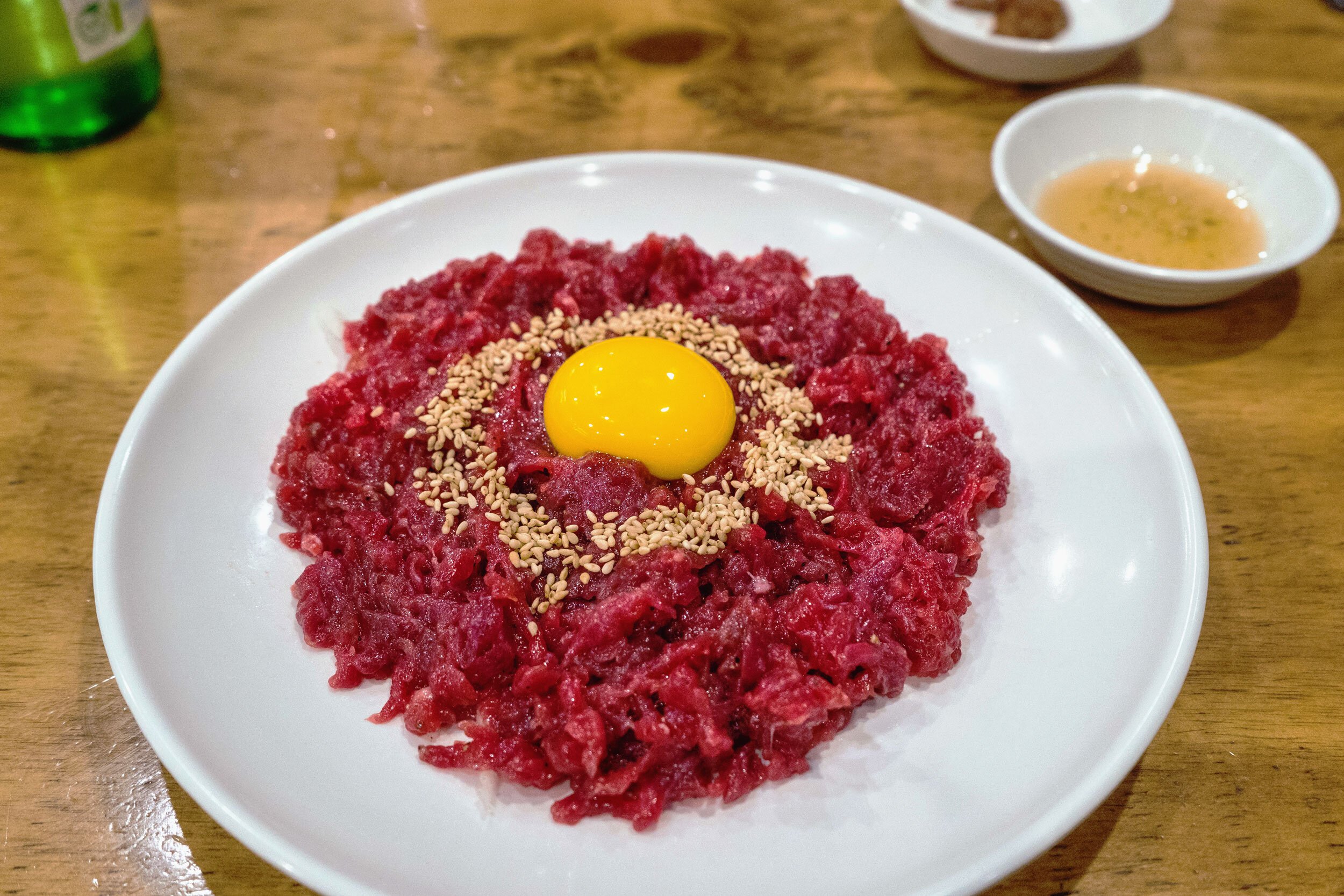
Raw beef mixed with raw egg, dipped in sesame oil and salt. So delicious.
We stopped by Uke Zamezip for some fresh yukhoe while on the way to Gwangjang Market for some street food. It was well worth it. The casual vibe - enjoying yukke over conversation and cheers of soju and beer, was a nice segue to sitting at the food stalls in the nearby Market.
CAFES
CAFE ONION

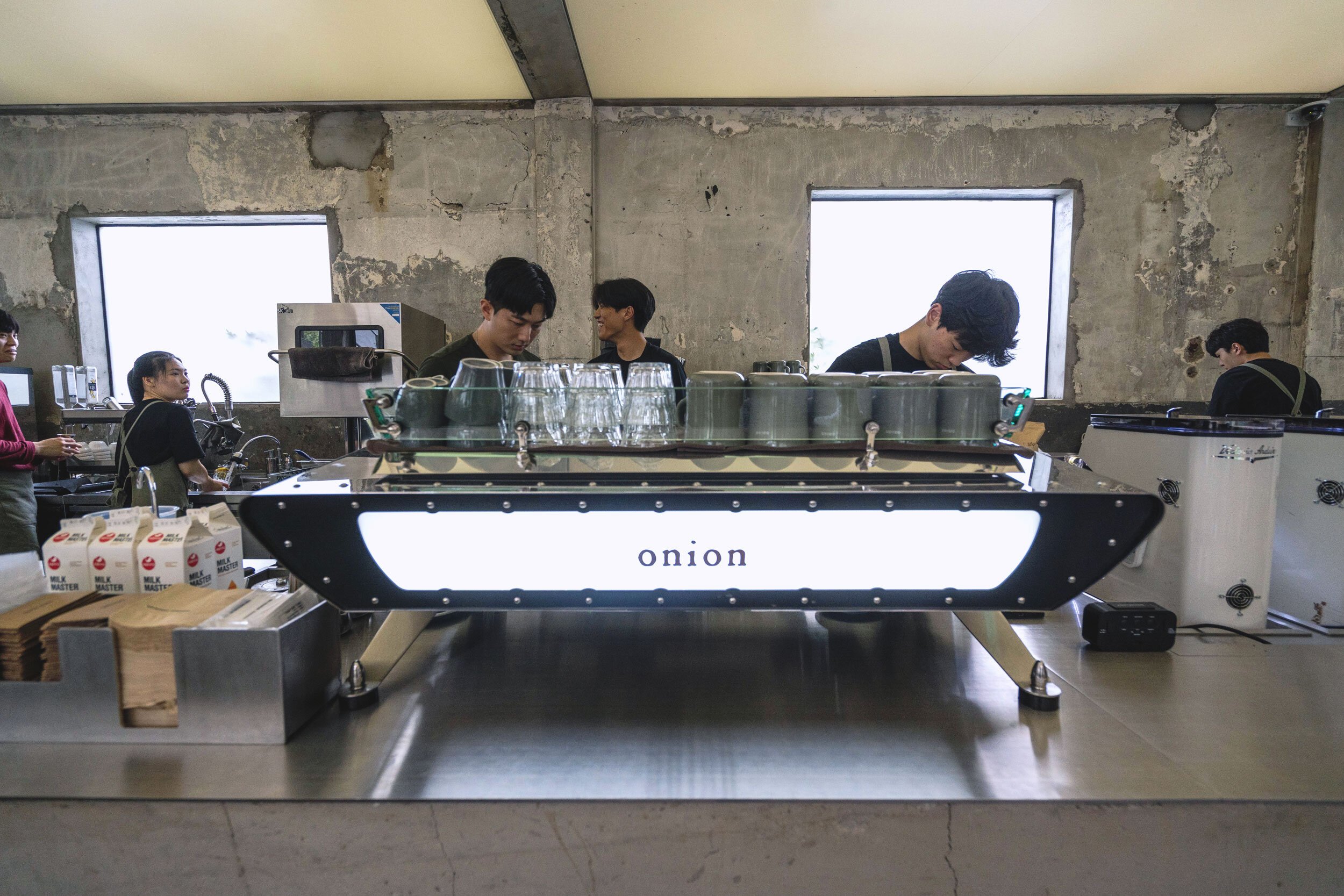



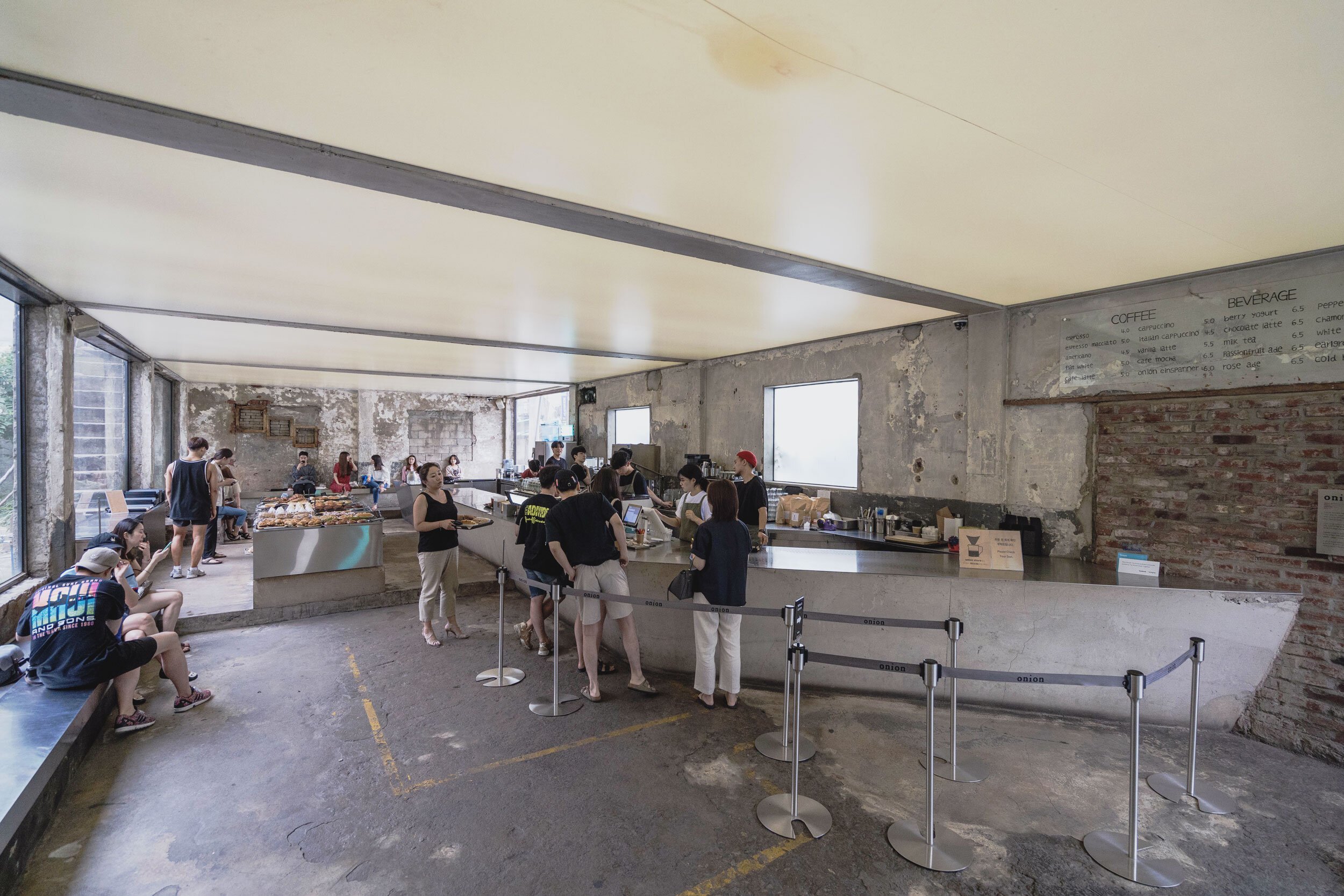

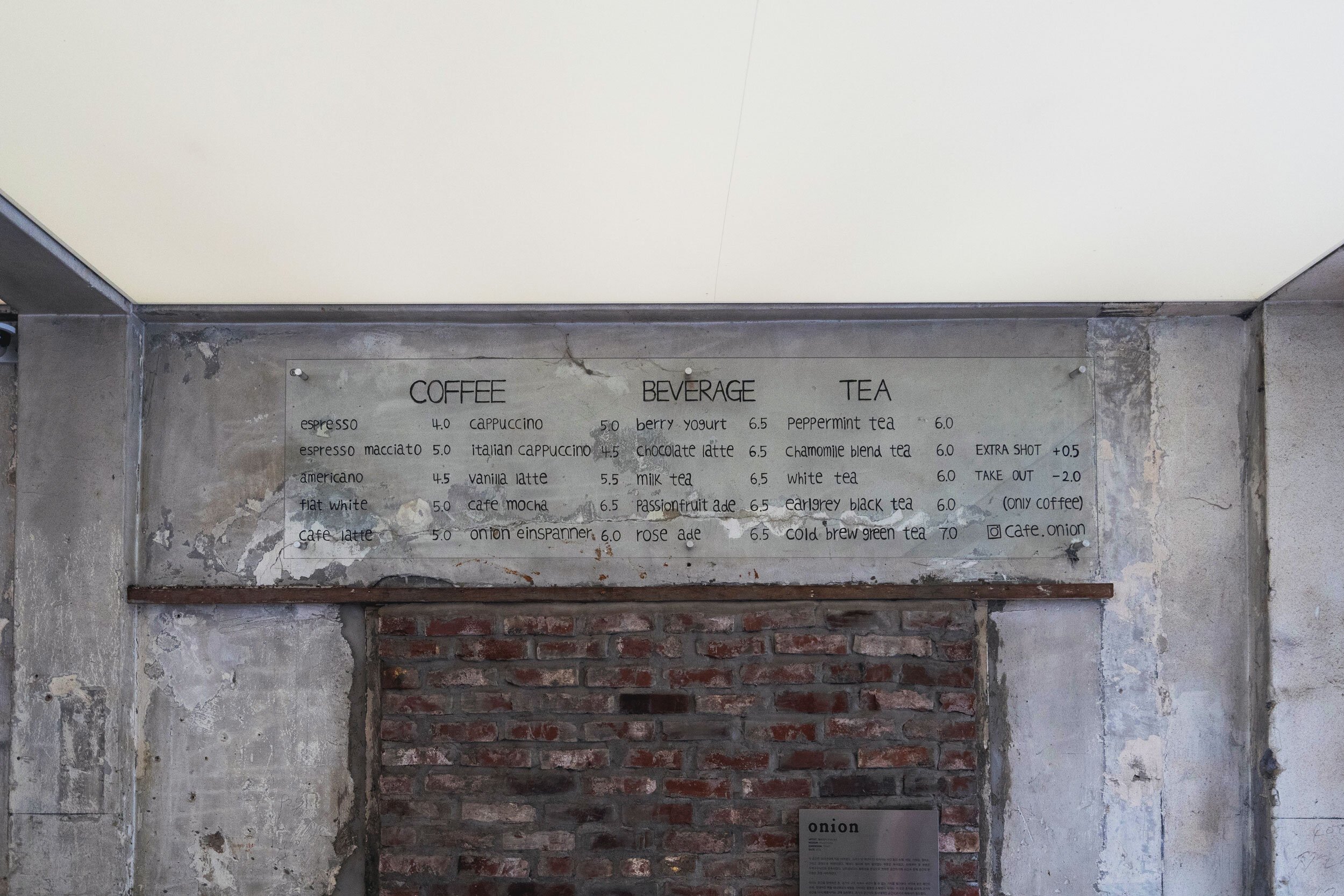


Possibly the hippest cafe chain in the city with locations that are converted old buildings. Their spot in Seongsu, the “Brooklyn of Seoul,” is in a gutted 1970s building that served as a former factory.
Cafe Onion Seongsu manages to balance old and new perfectly, and in doing this, makes for an extremely photogenic hang out. There are multiple seating areas, nooks and a rooftop as well. Their coffees and artisanal, homemade pastries and baked goods are tasty.
Great place to stop by when exploring the area and to take pictures.
TripAdvisor
Area: Seongsu
MAP
CHA TEUL TEAHOUSE

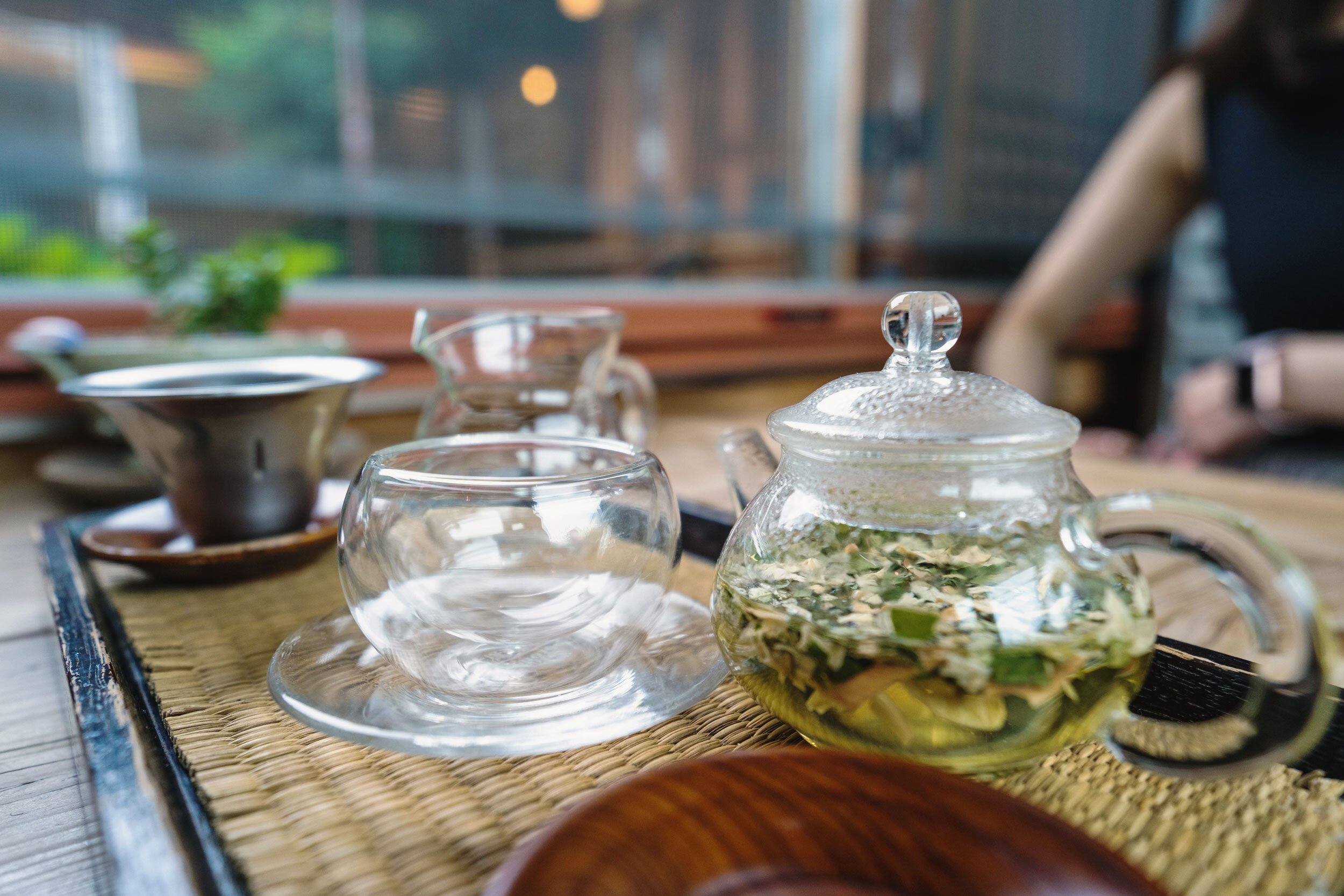
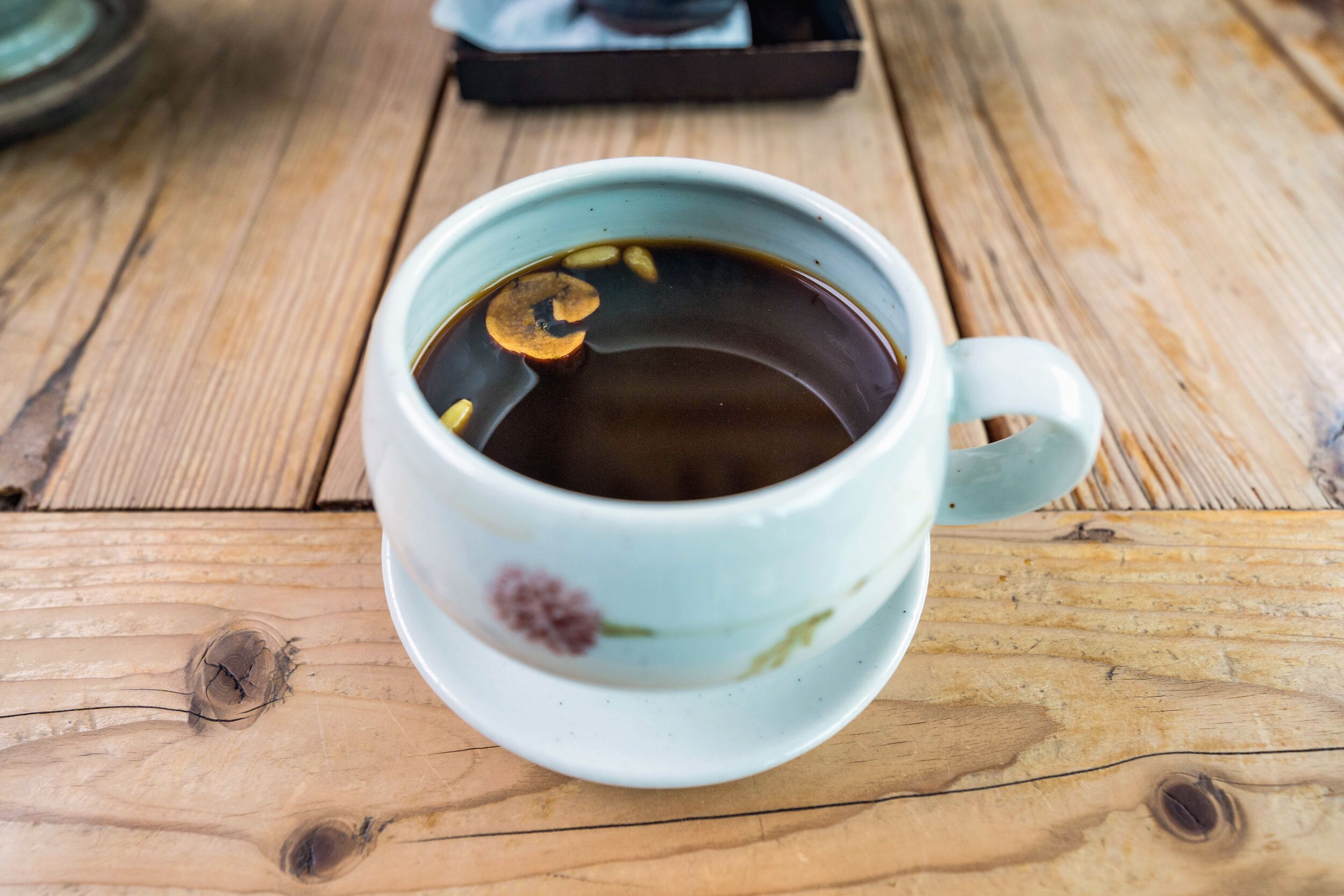
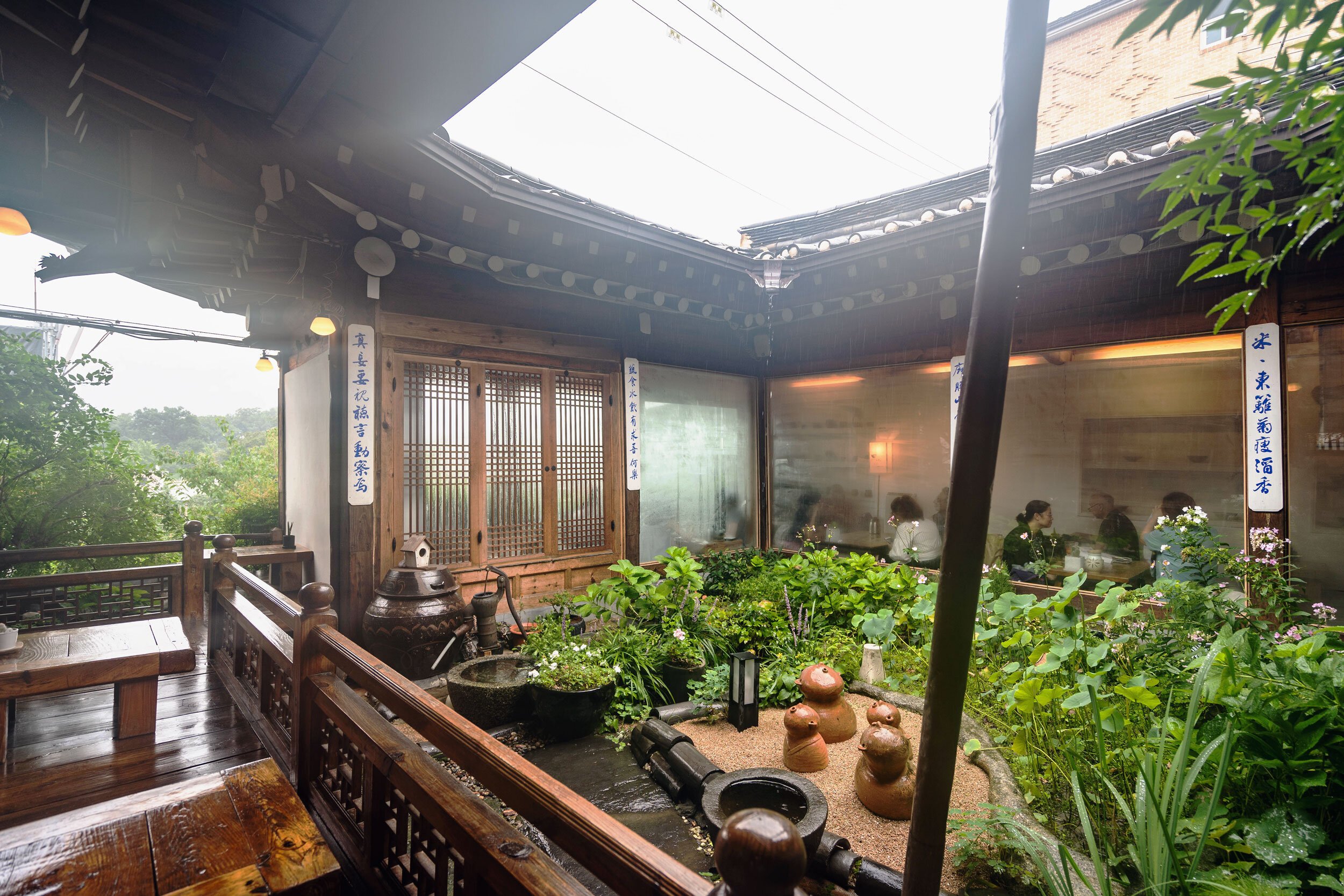

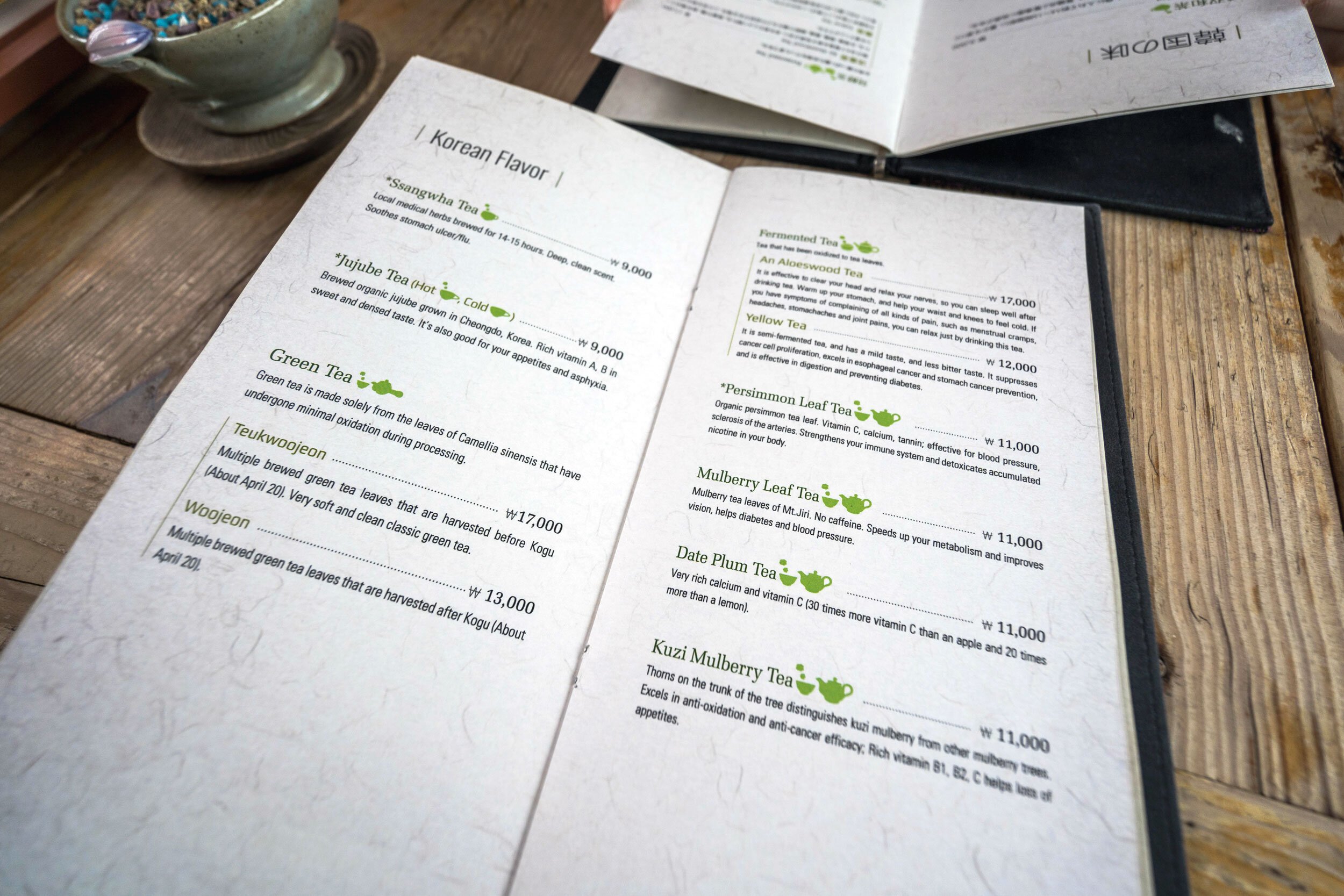
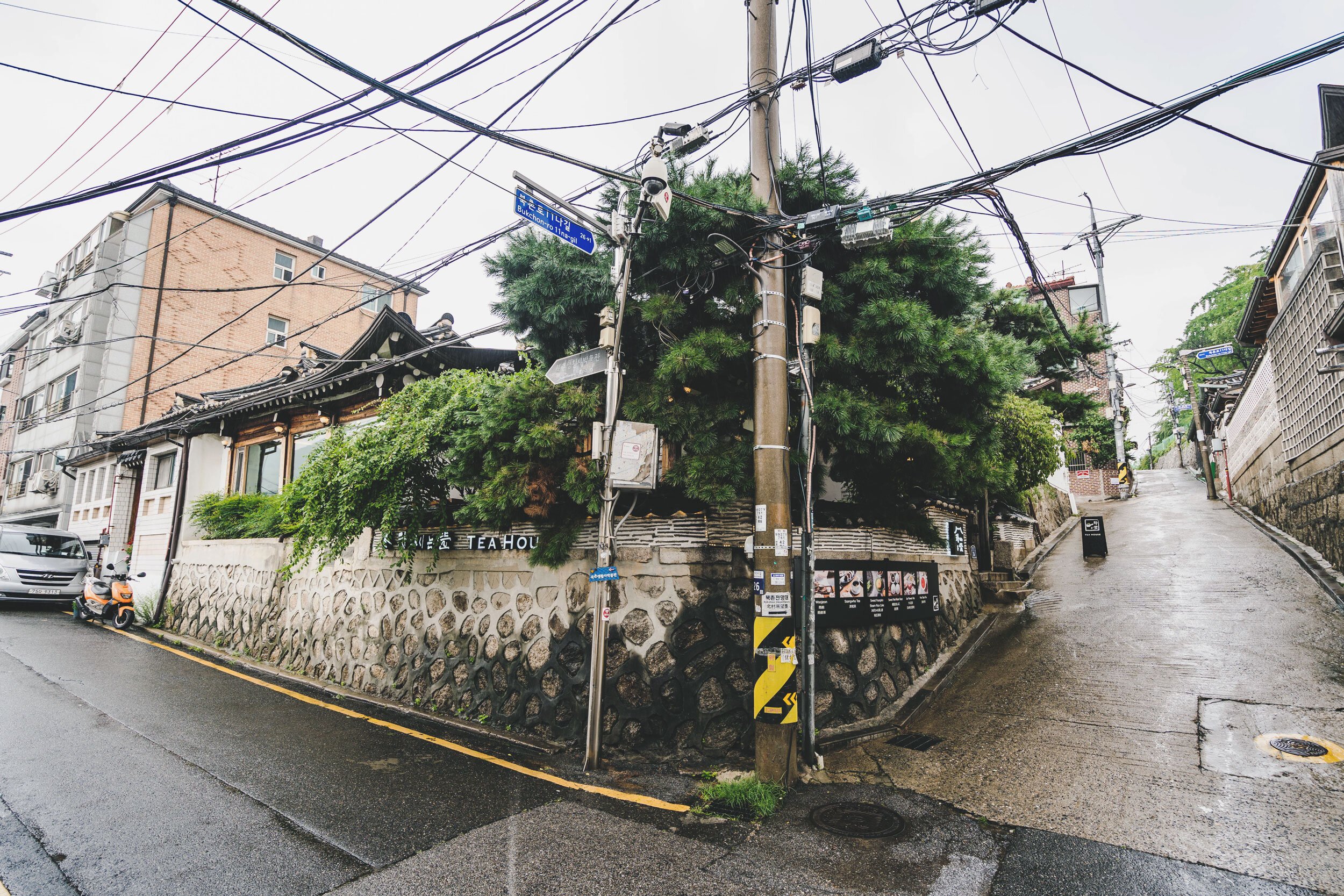
A relaxing cafe set in a traditional Korean hanok house on top a hill in the Bukchon Hanok Village area.
Cha Teul, which means “tea-drinking garden,” is an indoor tea house built around its Korean garden. You take off your shoes before you enter, sit on the floor and enjoy some tea over relaxing views. Making the experience even better, service was very friendly.
We had patibingsu (Korean shaved ice with red beans and mochi rice cakes on top), Ssangwha tea (made of Korean medical herbs brewed for 14-15 hours), and lotus tea.
Perfect place to have a sit down and relax in the afternoon.
TripAdvisor
Area: Bukchon
MAP
GALLERY SAI - BY CREATIVE ART GROUP SAI
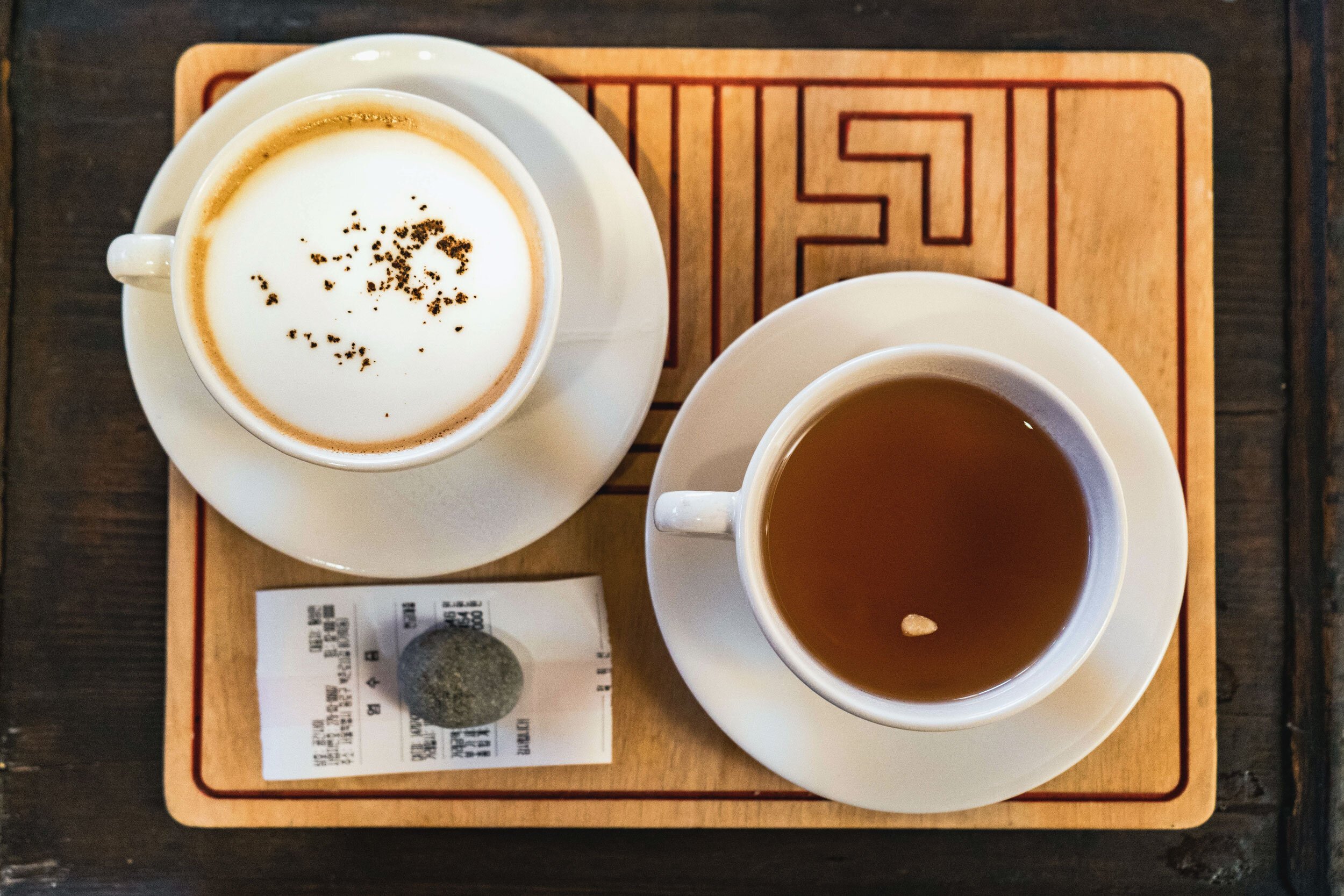
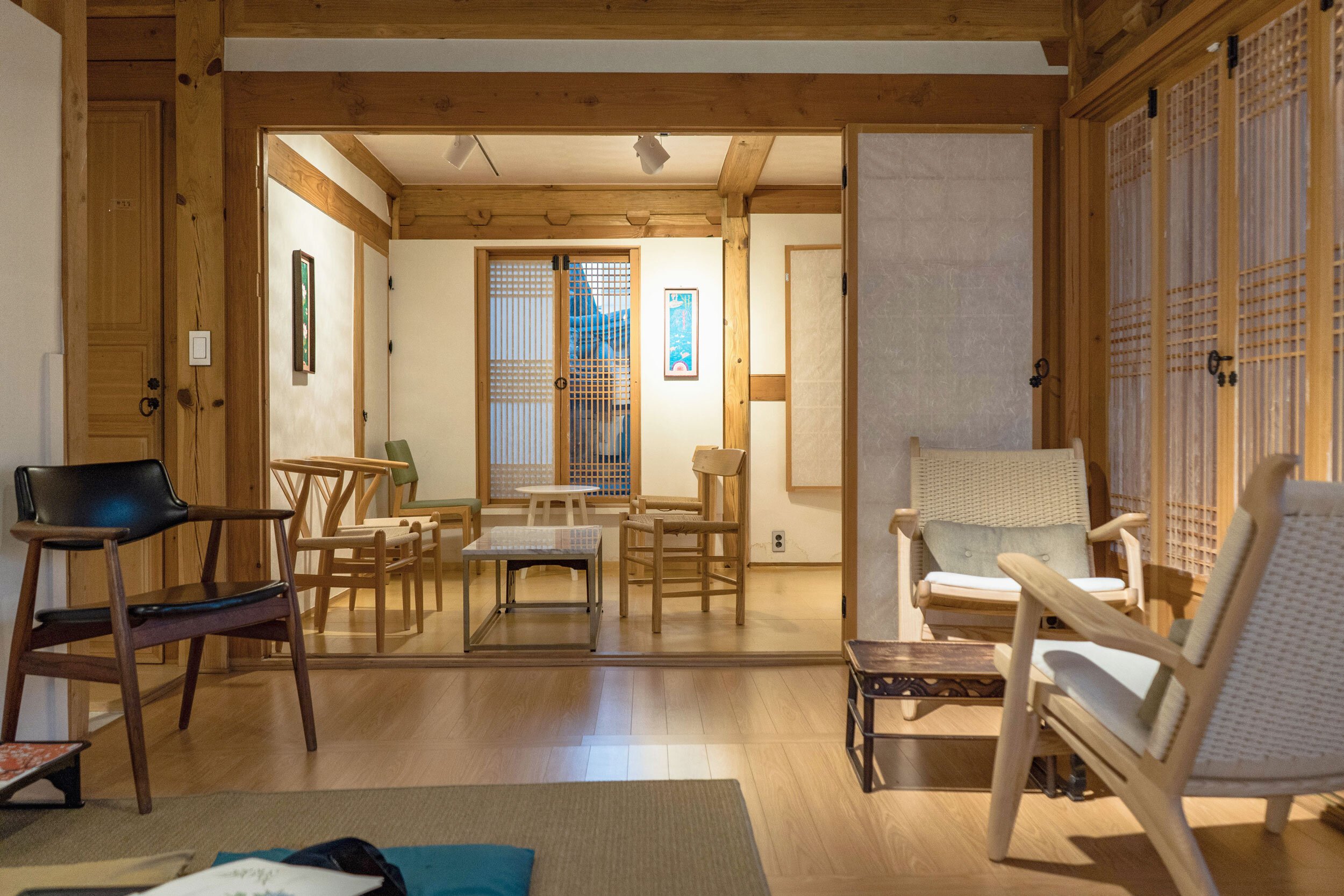
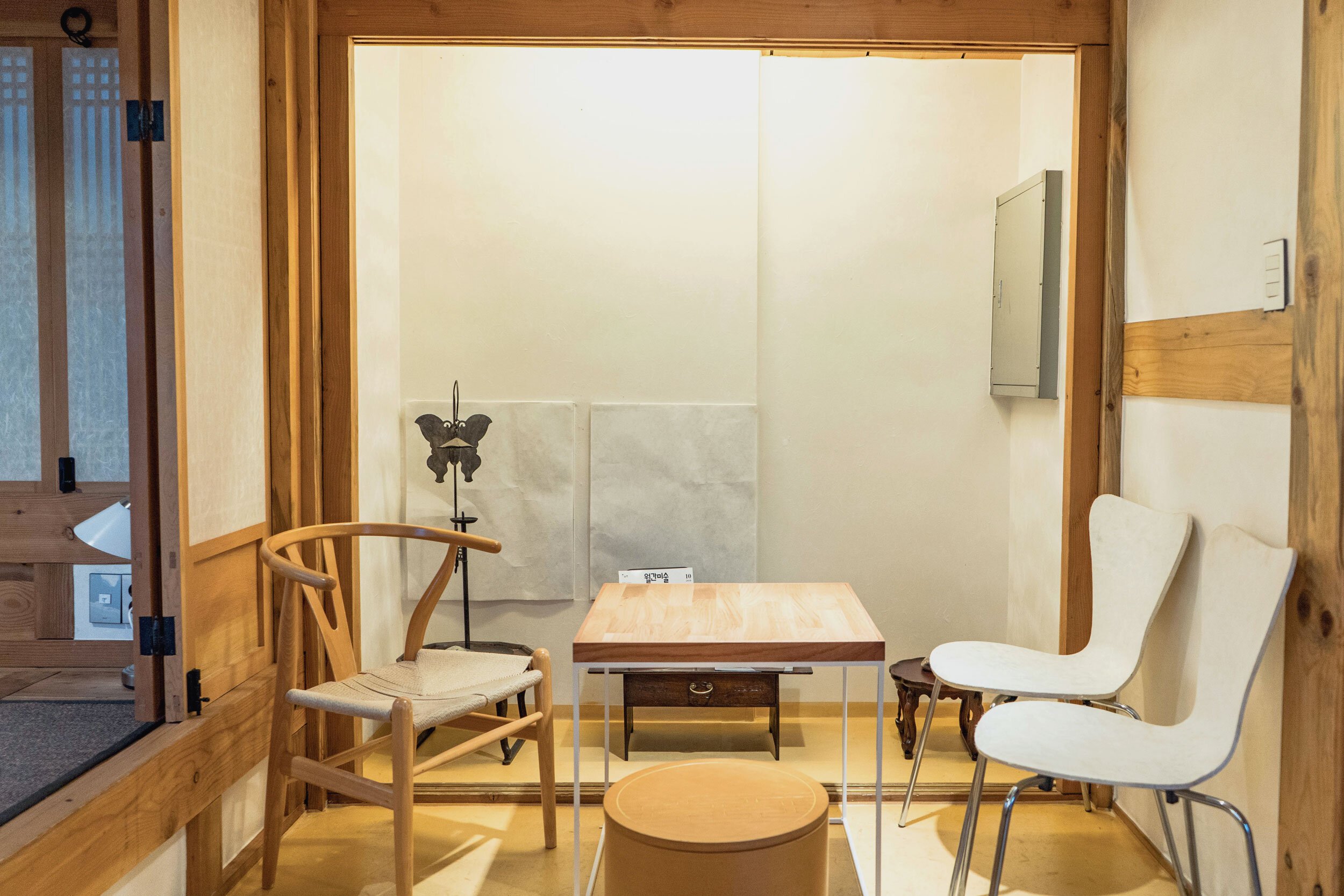
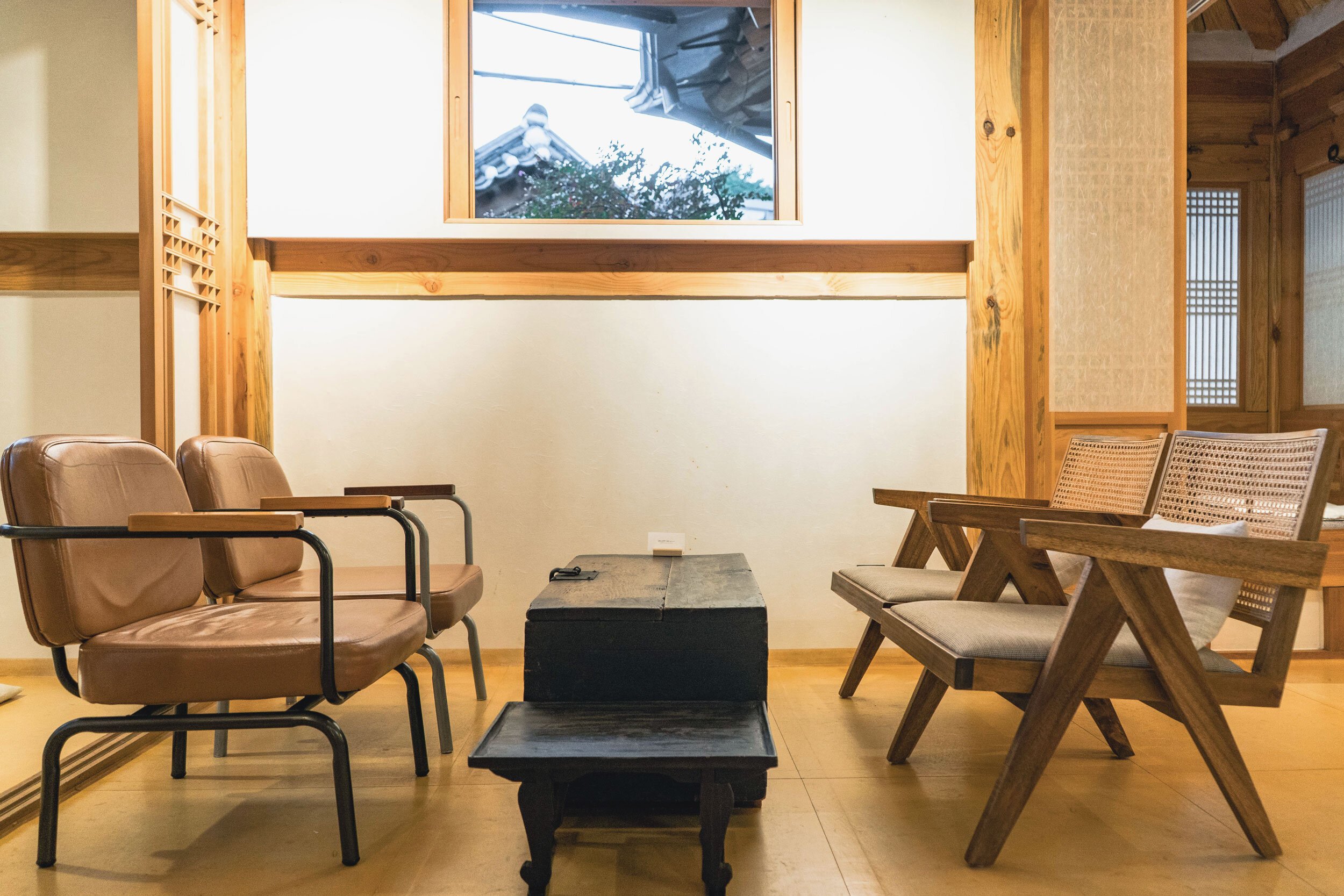
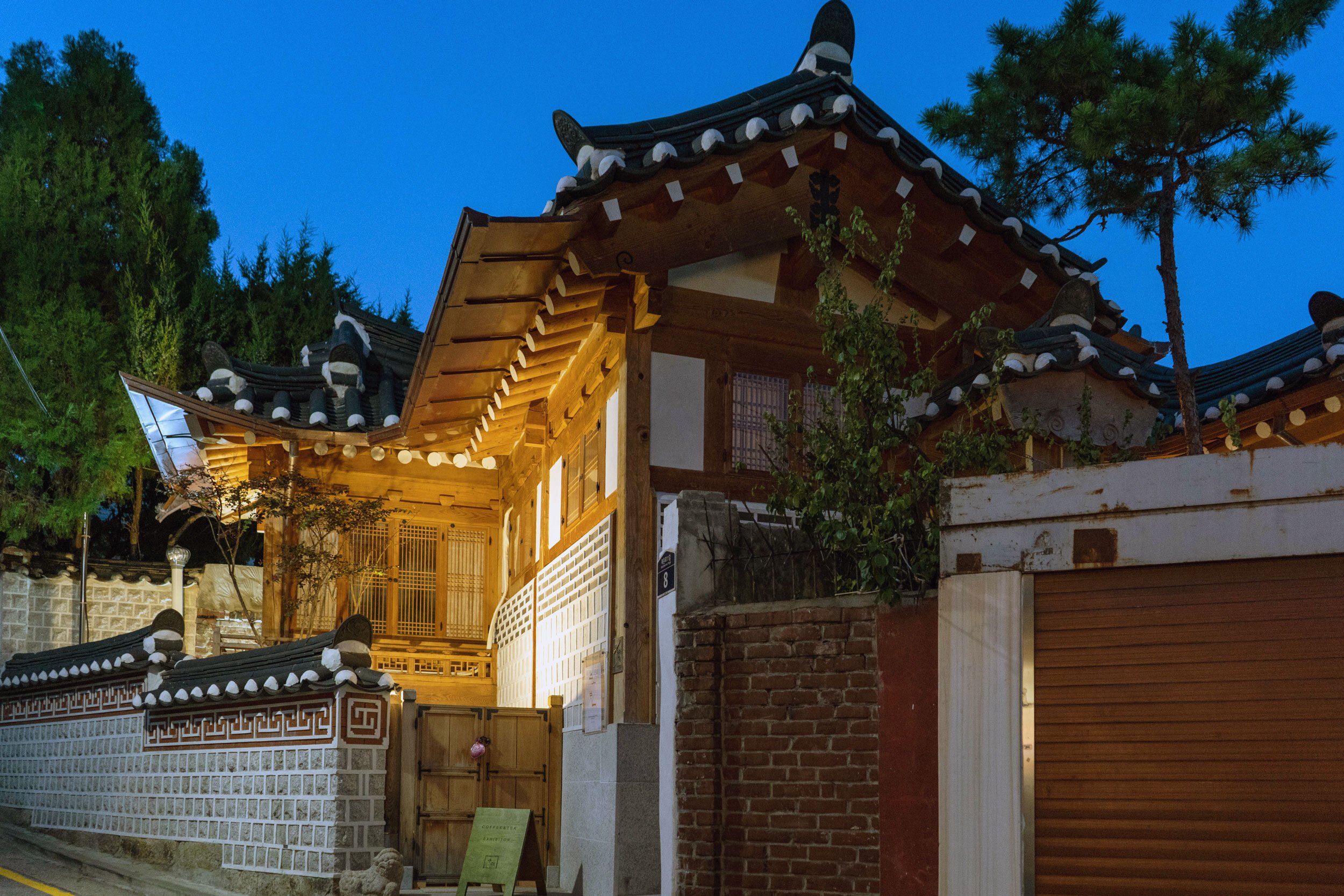
A coffee shop in a traditional Korean house. We randomly stumbled upon Gallery SAI coming down from the Bukchon Hanok village and were pleasantly surprised.
It’s in a converted old house that blends in with much of the area. You take your shoes off and find a table, some of which are on the floor or in a room, and have tea or coffee. A little more costly than a typical coffee shop, but well worth it for the experience.
Keep in touch:
More travels:
Seoul, Korea: A Second Trip
Returning to Seoul to explore new places and get to know the city a little better.
After my first trip to Seoul in late 2018, I knew I had to come back. Less than a year later in 2019, that happened.
This time around, I ventured to explore areas for the first time to add to my experiences in the city.
If you’re visiting for the first time, you can see what I did on my first trip, or maybe these sights are more your style.
Things to know:
Google Maps isn’t as useful - locations are scarce, often don’t translate from Korean, and don’t contain detailed information
There’s a lot of walking - With limited escalators in train stations and trains being long themselves, there’s more walking to the exits
Many restaurants close early on weekends, like fully closed at 8PM on a Saturday night early
Where we stayed:
We stayed in a convenient location near the City Hall subway station on our first trip, so we decided to make our base at the hotel right next door. The Hotel Gracery is a newer hotel owned by a Japanese company, and is between City Hall and Hoehyeon subway stations, and also near the popular Namdaemun Market.
The room was a bit small, but everything was nicely kept and clean. Service is good, the toilet and shower are separate, there’s coin laundry in the lobby and a convenience store downstairs.
Here’s where we explored on my second time in the city.
Banpo Hangang Park
On the south side of the Han River is Banpo Hangang Park [MAP]. We visited in the evening where they have a festival during the warmer months featuring a bunch of food trucks and artists selling homemade crafts.
The Banpo Bridge Rainbow Fountain show is also put on, where streams of water shoot out from the bridge’s sides, illuminated by about 200 LEDs. At 570 meters long, it’s the world’s longest bridge fountain and it’s free. The shows happen every half an hour between 7:30PM-9PM.
The Somesevit (Sebitseom) buildings are illuminated with people sitting around it, enjoying drinks and each other’s company over some open mic karaoke.
Apgujeong, Gangnam
One of the popular shopping areas in the Gangnam area, Apgujeong had stores from Prada to Club Monaco, along with a lot of cafes and plastic surgery clinics. To me, it had a similar feel to Tokyo’s Aoyama area or Los Angeles’ Abbott Kinney or Melrose. It’s definitely on the upscale side.
We visited the area after stopping at the nearby Cheongdam area of Gangnam for some delicious bibimbap at Yeongcheon Younghoe.
After some window shopping, we stopped at the local Tom N Toms coffee chain for some refreshment before heading to Seongsu.
Seongsu
It may not seem like it, but Seongsu is a pretty trendy area for young Koreans. I learned about it while researching for client work, so I decided to check it out.
The neighborhood used to be the location of a lot of handmade shoe factories and warehouses, and those old industrial buildings are slowly being converted into artistic cafes, coffee shops and restaurants. We went to a great one called Cafe Onion (more info below).
Seongsu, while a hot spot for locals, still seems relatively unknown to tourists. I only wish we had more time and space in our stomachs so we could stay here longer.
Itaewon
This is somewhat of an international area of Seoul, and a lot of the restaurants and bars are geared to expats and tourists. There was even a restaurant claiming to serve “authentic Chinese-American cuisine.”
While teens and those in their early twenties may enjoy areas like Myeongdong or Samseong more, Itaewon seemed great for adults looking to grab a bite and a few drinks and have a good time.
We visited this area for dinner. Up until this point, most of the places we ate at were based off of Japanese information, so we decided to try The Maple House, a highly rated Korean BBQ spot that appeared in several English guides. It was alright but not great. I realized English information on Seoul may be lacking, so I wrote some food recommendations based on places I’ve eaten at.
In any case, if you’re looking for a night out with friends at an international-type of spot, this area is lively and might be decent to check out.
While these were some of the main spots that we visited on this trip, there were many others as well.
I wrote about some of them in my blog about my first trip to Seoul, like Myeongdong, Bukchon Hanok, Namdaemun and COEX.
Others like Samseong, a Harajuku-esque area where aspiring K-pop dancers perform on the streets, didn’t work out for us because we went to late or there was bad weather.
Other areas like Seongbuk and Gwangheungchan were simply stops for the food.
Let’s face it, even on my second visit to the city, a trip to Seoul is all about the food.
Cafe Onion








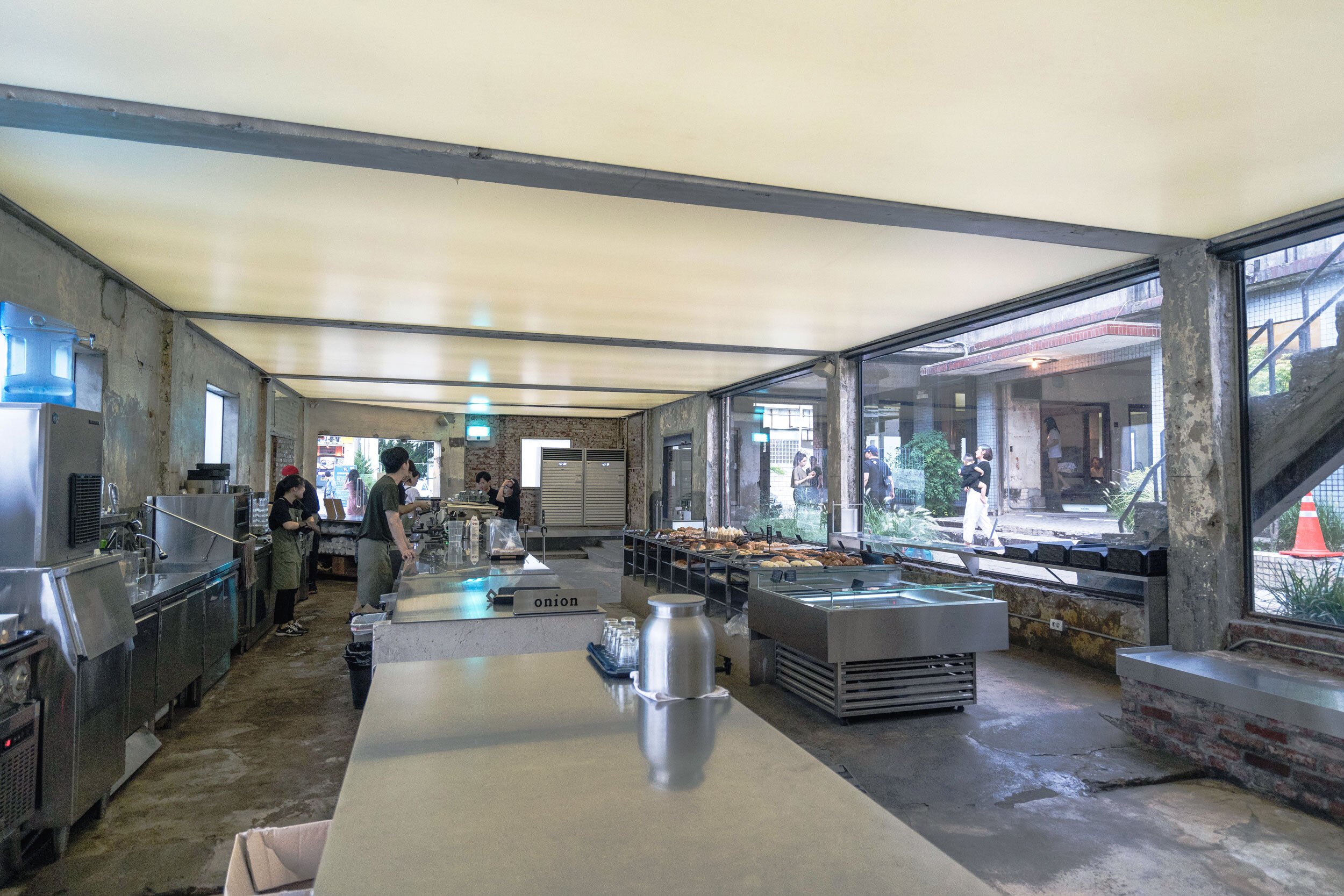

Possibly the hippest cafe chain in the city with locations that are converted old buildings. Their spot in Seongsu, the “Brooklyn of Seoul,” is in a gutted 1970s building that served as a former factory.
Cafe Onion Seongsu manages to balance old and new perfectly, and in doing this, makes for an extremely photogenic hang out. There are multiple seating areas, nooks and a rooftop as well. Their coffees and artisanal, homemade pastries and baked goods are tasty.
Great place to stop by when exploring the area and to take pictures.
dong myeonok house





Legit Korean kalbi. You know it has to be when the only other non-Koreans there were American students… with their Korean host family.
Dong Myeonok House is located up a hill in the seemingly upscale residential area of Seongbuk. There’s no major businesses or subway stations around it, so we took a taxi and went for lunch.
We ordered a small order of kalbi and 6-pieces of colorful mandu. The kalbi was melt-off-the-bone tender, tasty with a little hint of sweet, and I couldn’t get enough of the mandu. Thanks to my friend Daniel for the rec, I definitely recommend this place as well.
Cha Teul Teahouse
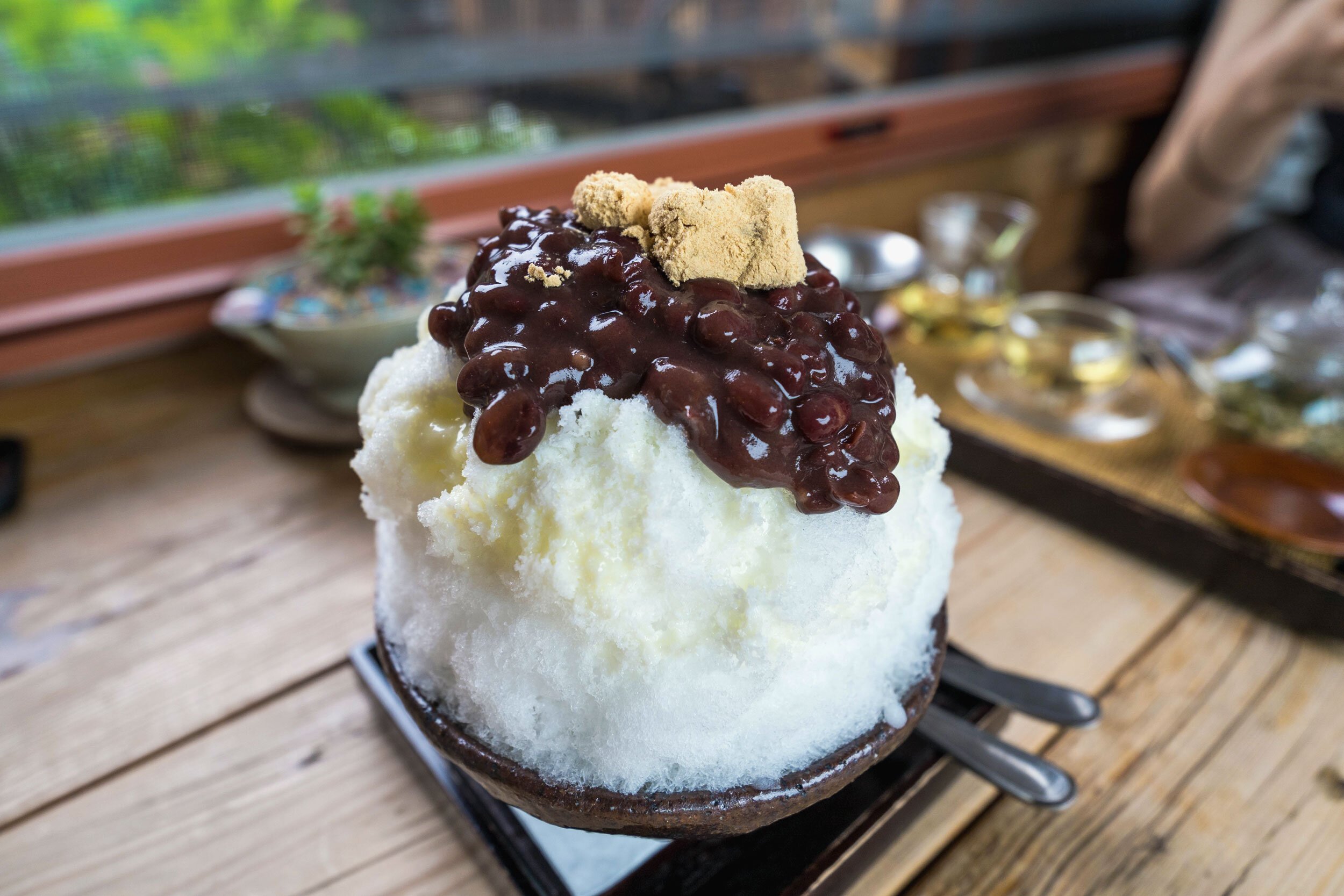



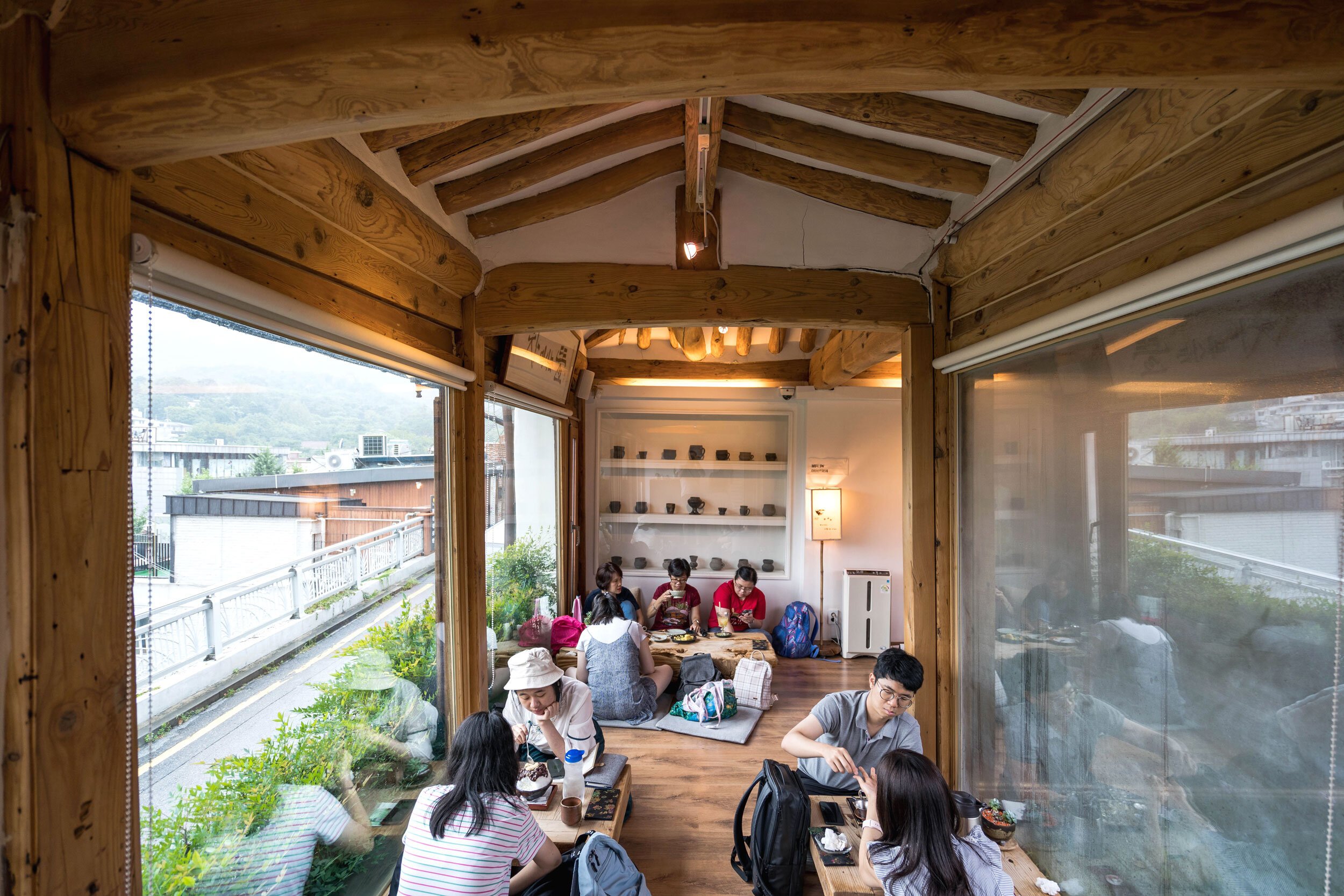


A relaxing cafe set in a traditional Korean hanok house on top a hill in the Bukchon Hanok Village area.
Cha Teul, which means “tea-drinking garden,” is an indoor tea house built around its Korean garden. You take off your shoes before you enter, sit on the floor and enjoy some tea over relaxing views. Making the experience even better, service was very friendly.
We had patibingsu (Korean shaved ice with red beans and mochi rice cakes on top), Ssangwha tea (made of Korean medical herbs brewed for 14-15 hours), and lotus tea.
Perfect place to have a sit down and relax in the afternoon.
Yaetmat Seoul Bulgogi



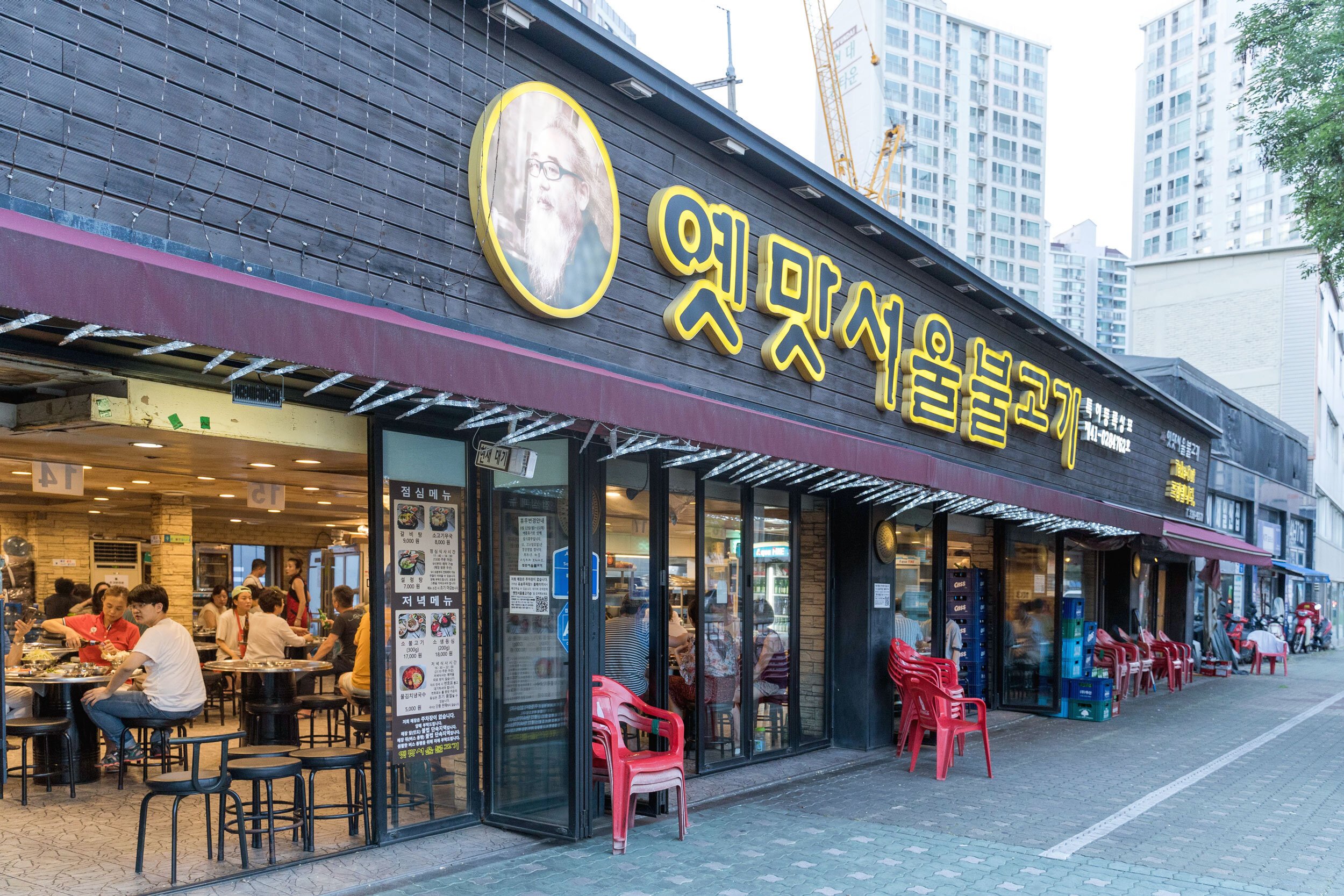
It’s hard to beat self-serve, all-you-can-eat sides and some tasty bulgolgi cooking in front of you. That’s why Yaetmat Seoul Bulgolgi was so good.
Located a couple blocks from Gwangheungchang metro station (광흥창역) on Line 6, Yaetmat Seoul Bulgolgi is a casual restaurant that only had locals - so you know it’s legit.
You sit on stools around a BBQ table and the staff comes by and makes sure everything is cooked properly. There’s a bar of assorted kim chee, greens, onions, garlic and more that’s free for the taking. A very casual, authentic experience and of course, tasty.
Keep in touch:
More travels:
Busan, Korea
Exploring Korea’s second largest city for a couple days.
Busan is the 2nd largest city in Korea with 3.5 million people
Located on Korea’s southeastern shore, it’s best known for its seaport and beaches
Traveling to Busan was a long time coming for me. I had lived in Fukuoka, Japan, just a short boat ride away but for some reason never made the trip.
I finally visited during my second trip to Korea in 2019.
THINGS TO KNOW
Google Maps isn’t as useful - locations are scarce, often don’t translate from Korean, and don’t contain detailed information
There’s a lot of walking - Escalators in train stations are limited, blocks are big and main streets are wide
HOW TO GET THERE
A lot of people, like us, will be flying in and out of Seoul and making Busan a mini-trip. Busan is only about a 3-hour train ride on the Korail KTX. You can reserve tickets online here, but just know that the site is not mobile-friendly and overall isn’t that good.
If you print out your tickets, you can bypass the ticket office and just go to board your train. It’s all reserved seating and our tickets were never actually checked or used.
Busan is also a short boat ride from Fukuoka, Japan. The JR Beetle is a hydrofoil that sails between Hakata and Busan in about 3 hours. You can purchase tickets here or on their Japanese site. They also have a higher end JR Queen Beetle set to start sailing in July 2020.
WHERE WE STAYED
Only spending two days and one night in Busan, we prioritized location and cost. We decided on the Brown Dot Hotel Seomyeong, probably a converted former love hotel or motel, conveniently located near Seomyeong and only a couple minutes from the station.
The hotel was fine for a short stay. The one issue was the toilet and shower area as the toilet is immediately next to the shower in a way that the toilet can get wet. This isn’t a hotel-specific issue, it seems that’s it’s a pretty common setup in Korea. They provided a range of amenities as well as access to take as many bottles of water as you needed.
From here, we went out and explored the city.
SEOMYEONG
Busan’s central area for shopping and eating out, and it was a short walk away from our hotel.
The Lotte Department Store is at the center, and there’s a bunch of terraced seating on the food court floor that featured tables and charging ports - great at providing a place to rest.
Food vendors open shop at night on the streets to the east of the department store. While we didn’t eat any of the street food, this is where we walked around to get some delicious meals (bottom).
GAMCHEON CULTURE VILLAGE
One of the most photogenic spots in Busan. Sometimes nicknamed things like the “Santorini of Korea,” the hillside homes are covered with colorful pastels.
The area was built in the 1920s as housing for poor port laborers. After paining the neighborhood, Gamcheon transformed into an area of art and is one of the most popular tourist destinations.
We caught the #2 bus, one of a few that go up to the village, from near Jagalchi metro station (around here) up the hillside to the main stop (around here).
There’s a main street that goes through the village with cafes and touristy photo spots, but I recommend walking through the narrow alleys and stairways - it’s a lot more interesting and it puts you right at real residents’ front doors (obviously don’t be loud or disruptive).
JAGALCHI FISH MARKET
Looking to eat some fresh fish in this port city, we went to check out Jagalchi Fish Market, the biggest in Korea. It’s located to the southeast of Jagalchi metro station - but anyone can just follow their nose!
There are numerous, old fish stands outside on the streets, and in the main building, aisles of sellers with tanks of all sorts of live seafood for sale. You can see and buy everything - eels, octopus, shellfish and everything in between.
We found a vendor and bought 2 fish for ₩400,000 (about $33 USD). They’re killed and cleaned right there, definitely not for the faint.
We were then led up to the second floor eating area where our fish were prepared into Korean-style sashimi and a hot pot. The cooking/seating fee plus a beer was an additional ₩19,000 (about $16 USD).
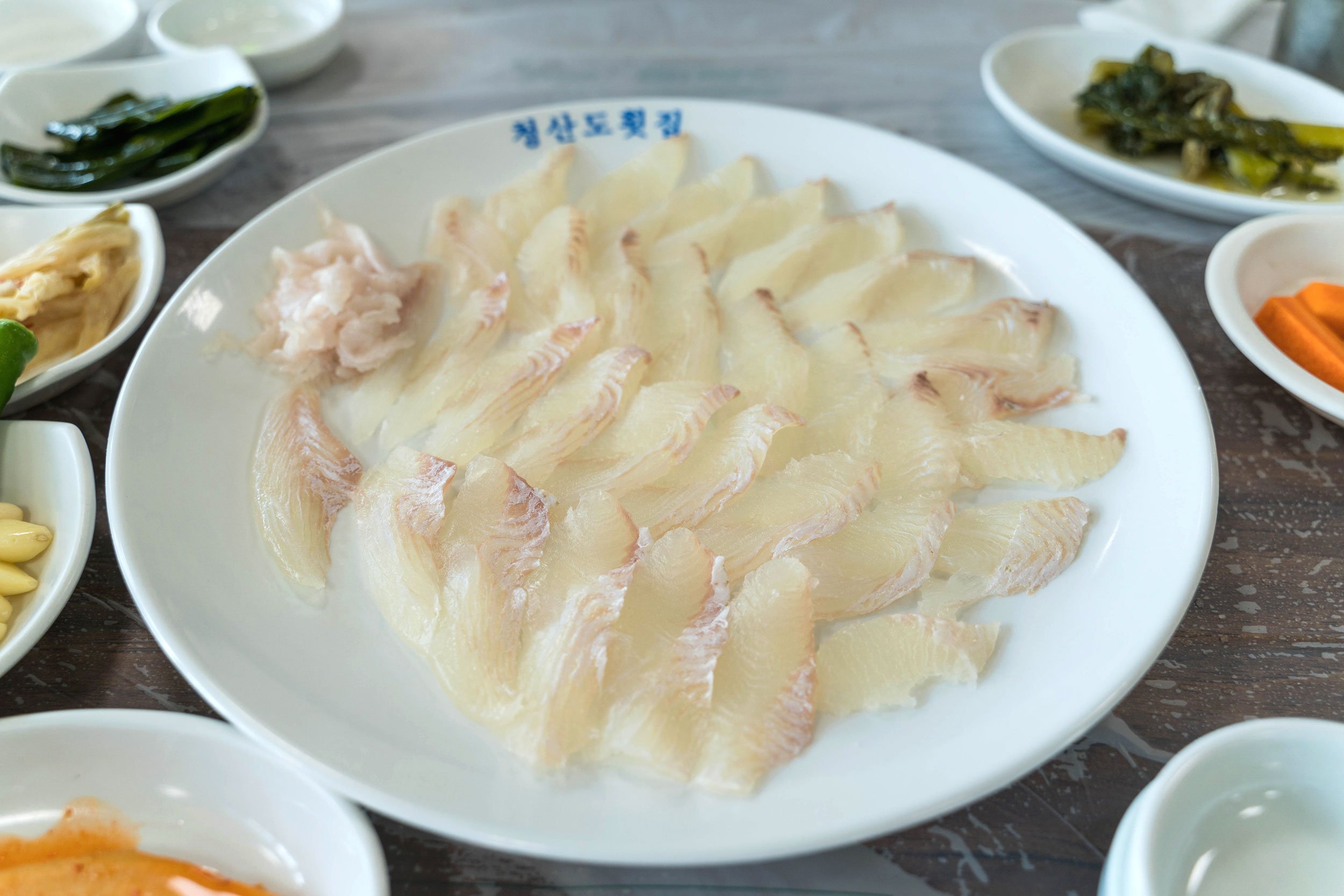
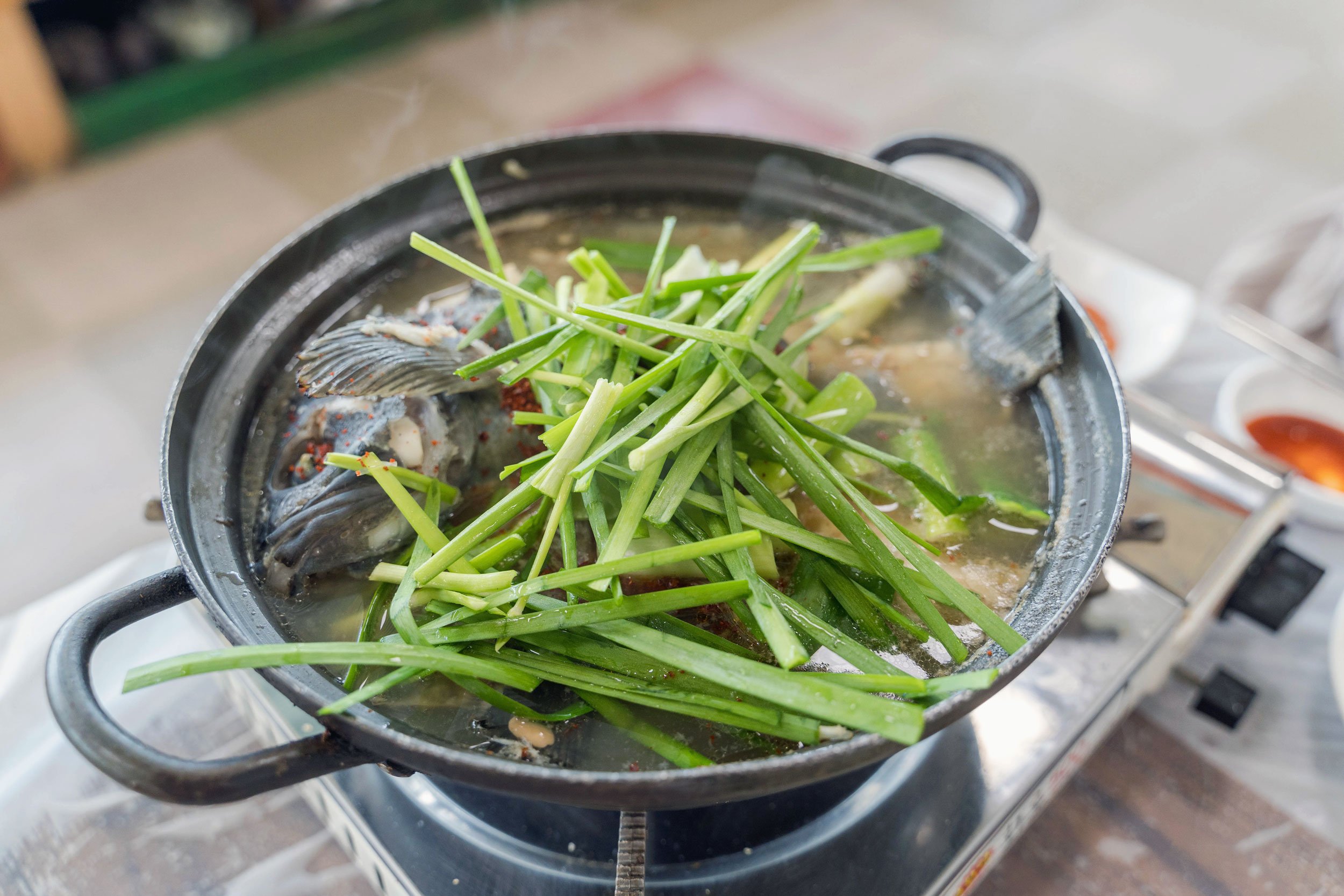
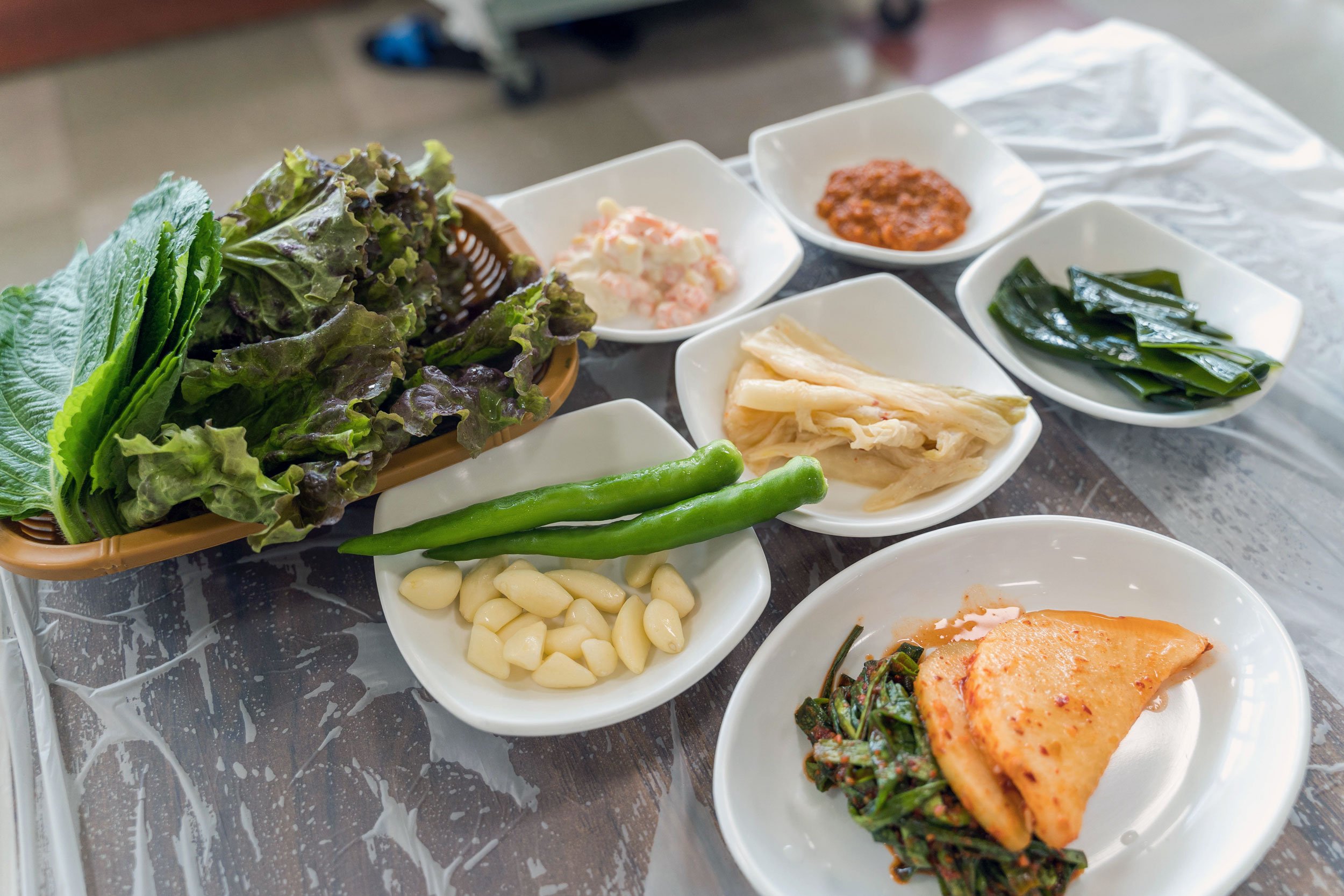
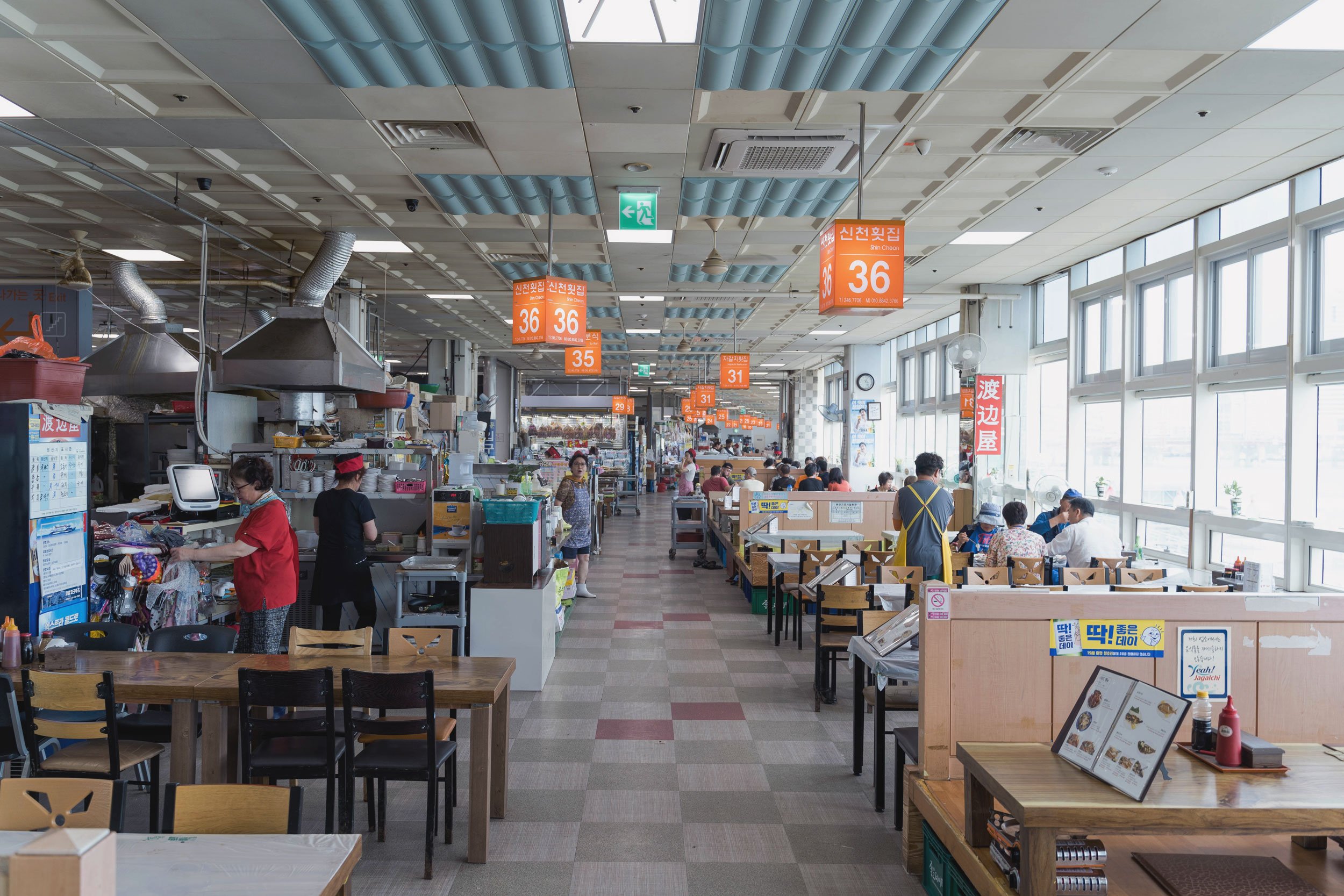
GUKJE MARKET
Also known as Nampodong International Market, Gukje Market is right to the north of Jagalchi Fish Market and Jagalchi metro station.
The market started when refugees fled the Korean War and tried to make a living. It’s one of Korea’s largest markets, featuring alleys of souvenir shops and daily items, as well as street food stalls where you can pull up on a plastic stool for a bite.
While we didn’t do any shopping, it made for a very photogenic and immersive experience as we walked up to our next destination.
BOSU DONG BOOK STREET
Books, books and more books. Bosu Dong Book Street started after Japanese occupation and during the Korean war. Books left behind by the Japanese were sold, and during the war, people sold their possessions for money. It continued to evolve until it’s become what it is today.
The area isn’t that big, but it is packed with small shops completely packed with books with the shop owner somehow fitting inside. For some shops, any more books may trap their owner. There’s even a shop that is only for photoshoots with books (there was a line, too), but we managed to take enough pics in the actual shops.
Finishing up our Busan trip here, we went back to Busan Station to head to our next stop: Seoul.
GAEMIJIP
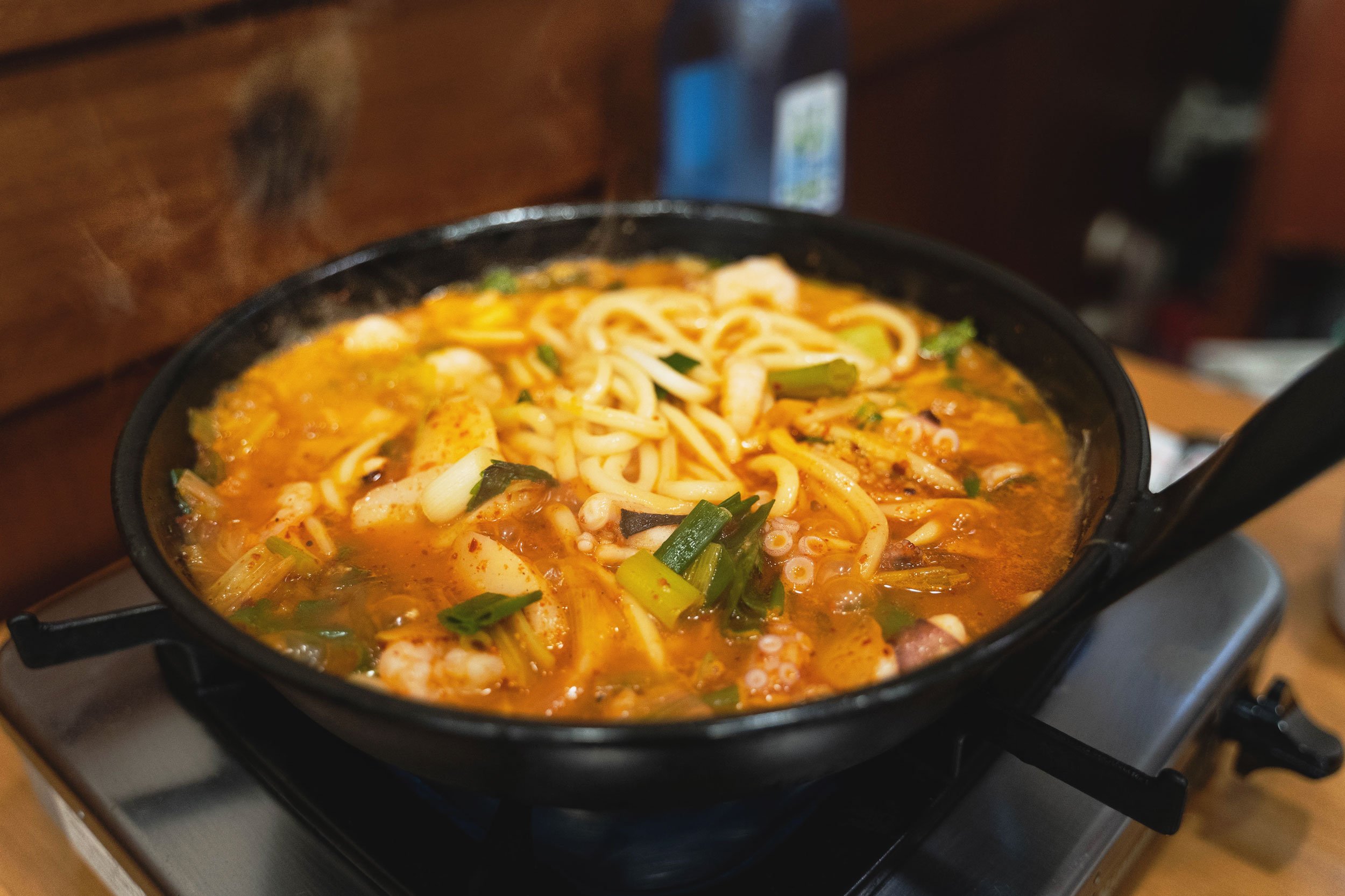
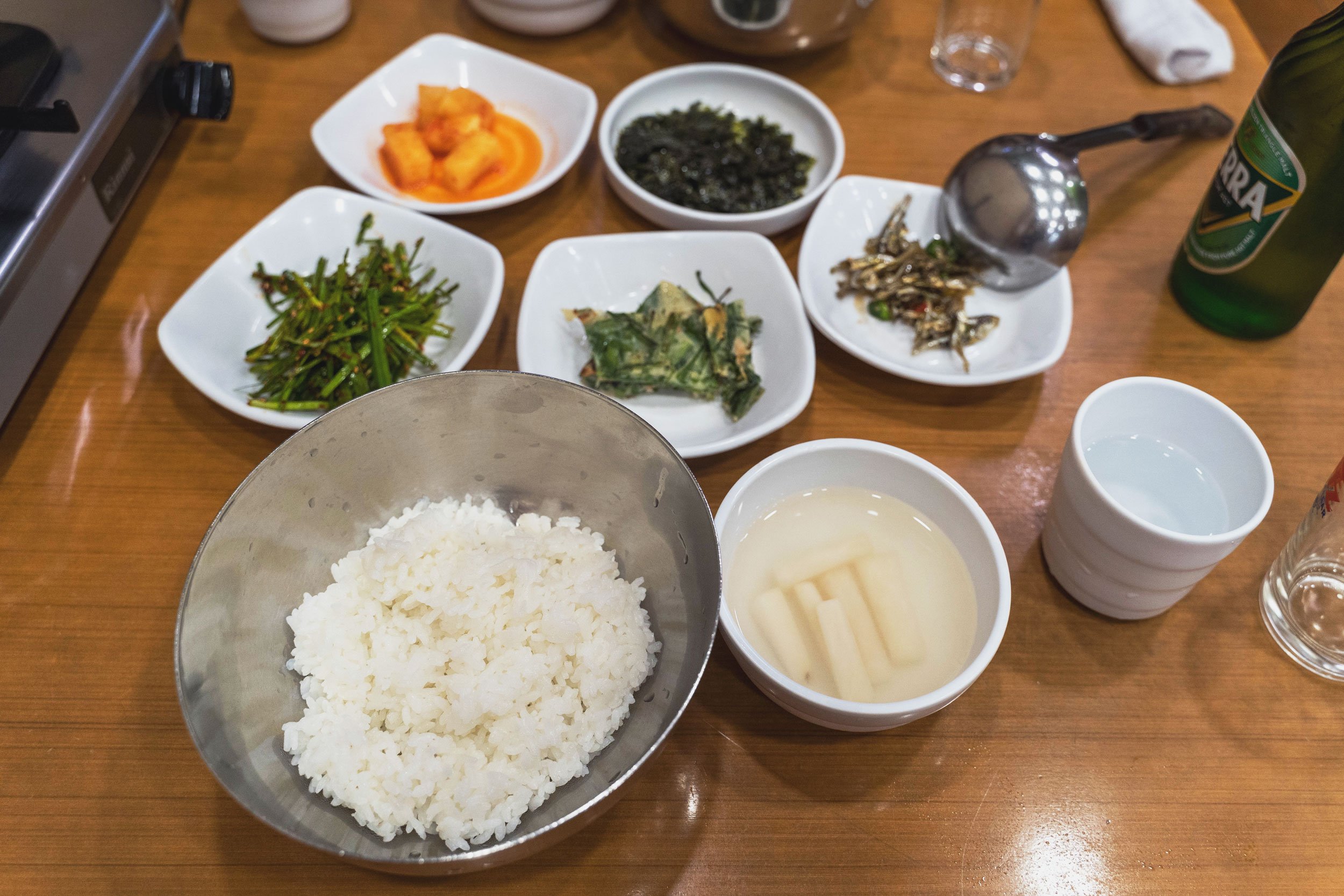
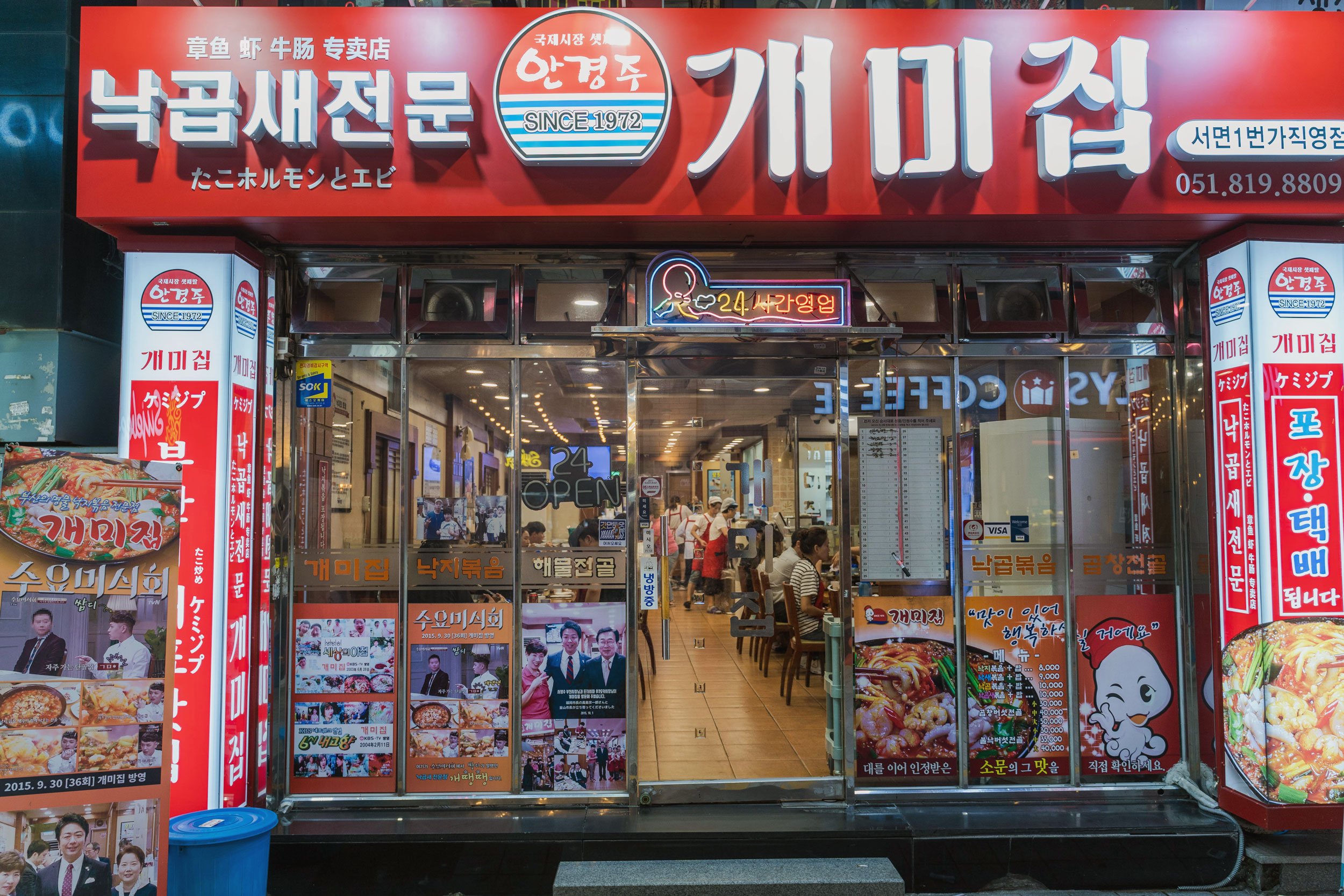
The flavor packed into this pot was nothing short of incredible. This was my favorite meal in Busan, and one of my favorites I’ve had in Korea.
Gaemijip is a 24-hour chain which makes it really convenient. We went to the Seomyeong location for dinner, and it was pretty full - almost all Koreans, so we knew it had to be good.
The main course is a sort of seafood stew. We opted to get the octopus and shrimp option and added udon noodles. We heard that the food here tends to be really spicy, so we went with a mild level one and it was definitely enough. Absolutely delicious and reasonably priced.
Ssangdoongi Dwaeji Gukbap
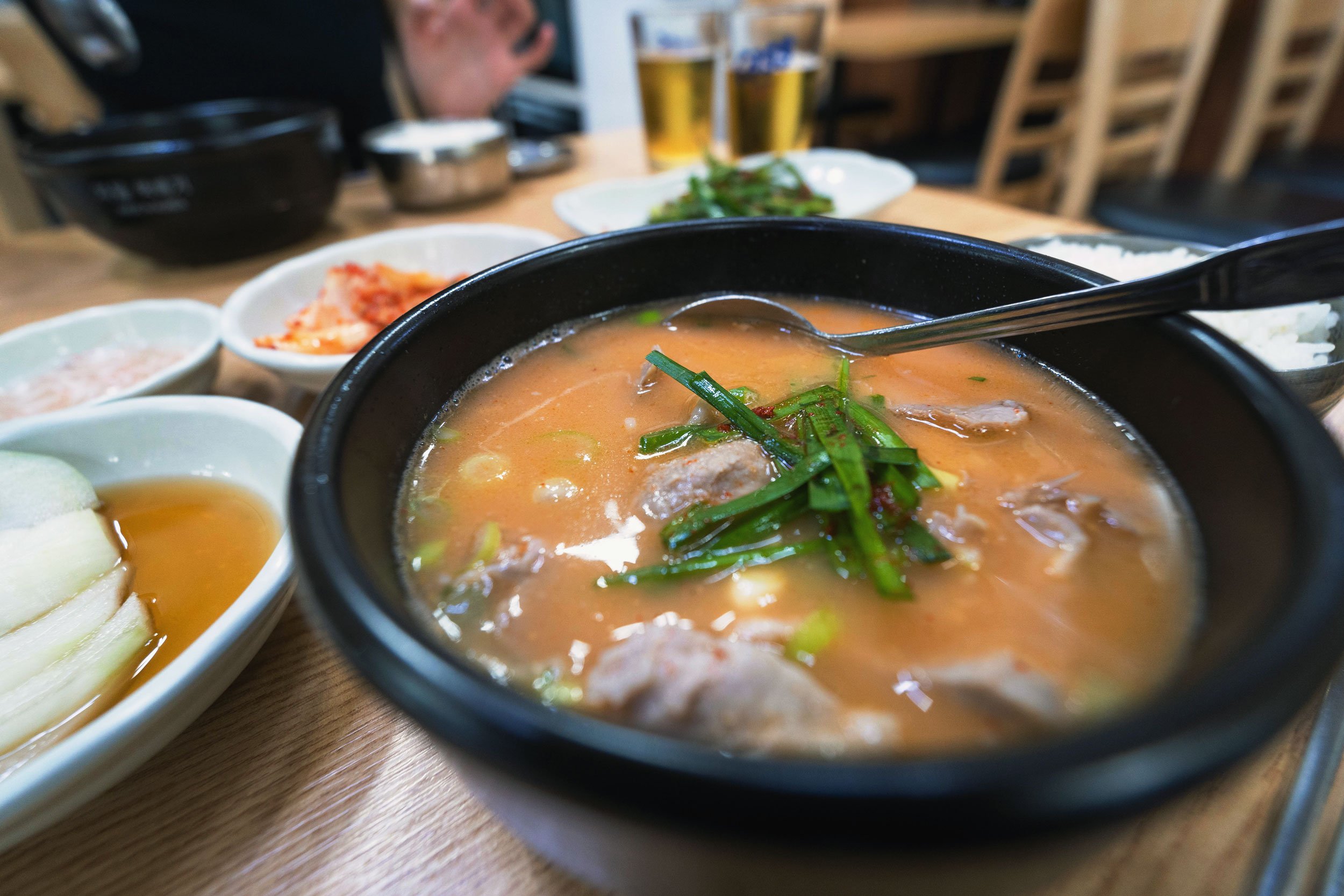
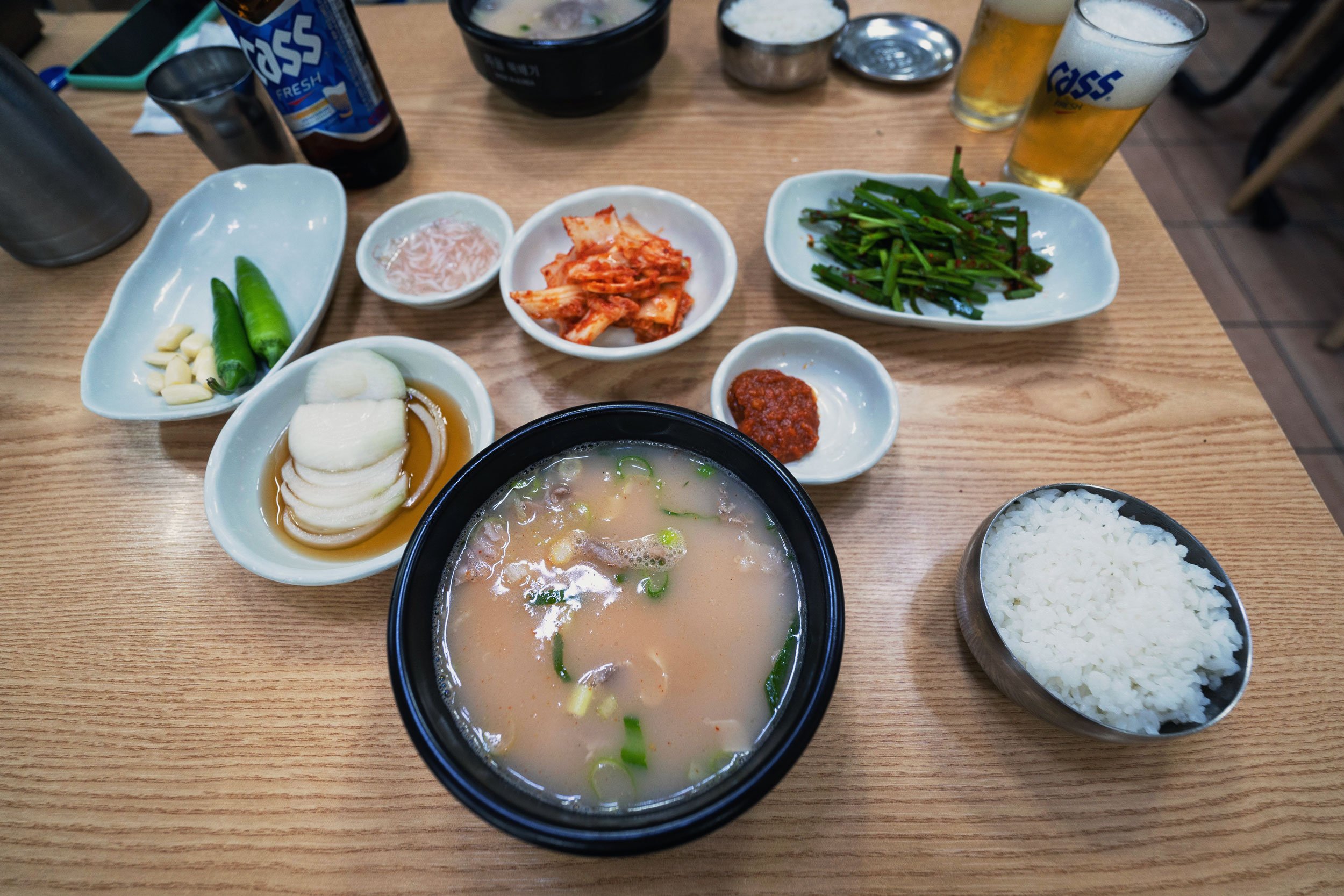
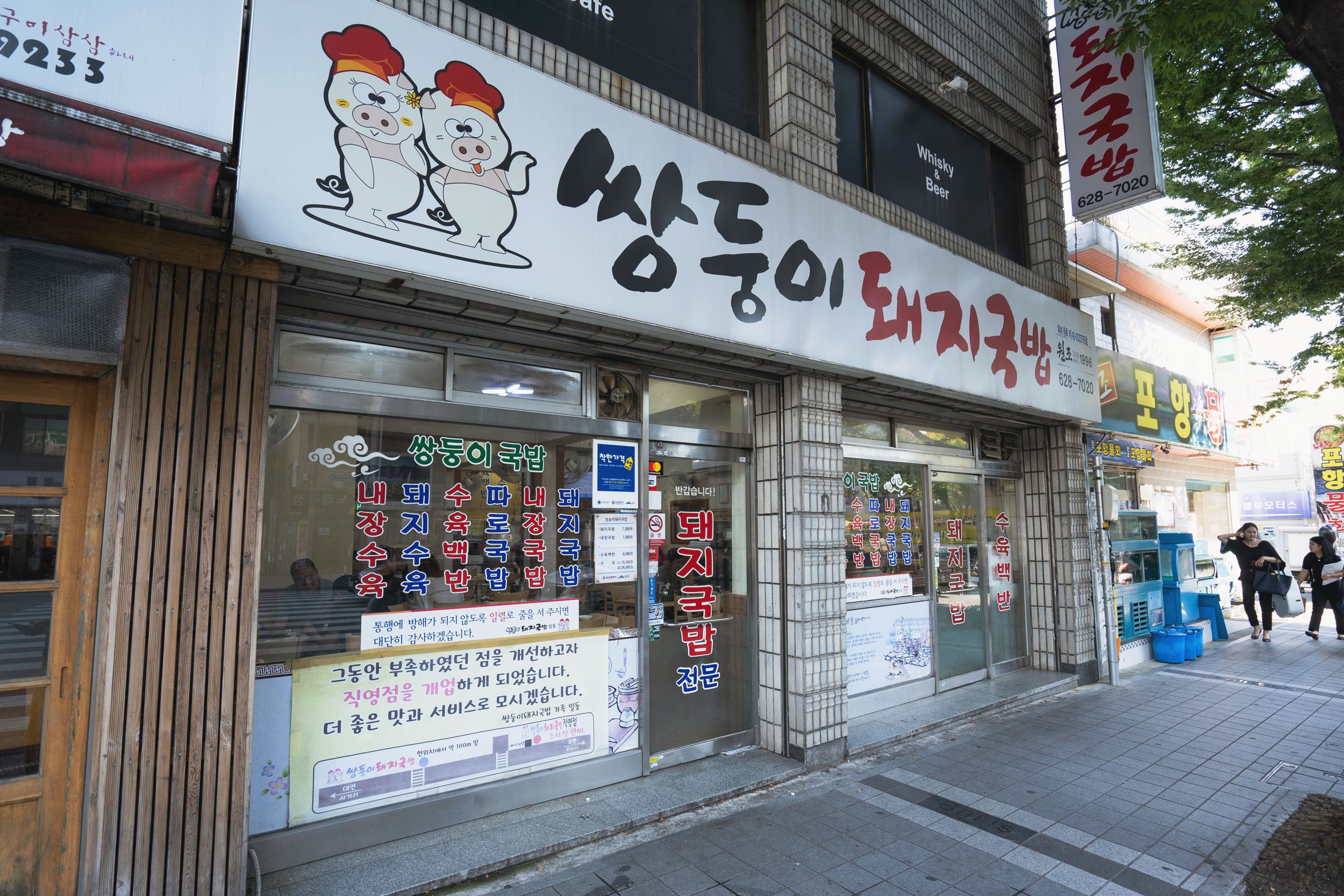
A pork soup spot that is regarded as one of the best in town. Ssangdoongi Dwaeji Gukbap is a few blocks from Daeyeon metro station and is a really local place.
We went for lunch, and got a nice, full bowl of pork soup with an array of all-you-can-eat kim chee and Korean pickles. The soup isn’t spicy at all, but there’s red pepper that you can add to taste and they give you garlic as well.
As expected at a reasonable, local spot, there’s not much English and service is nothing celebrate, but it’s good enough and they come to refill your dishes when you’re out. Nice lunch find for sure, or late night snack as they’re open until midnight.
Gijang Sonkalguksu
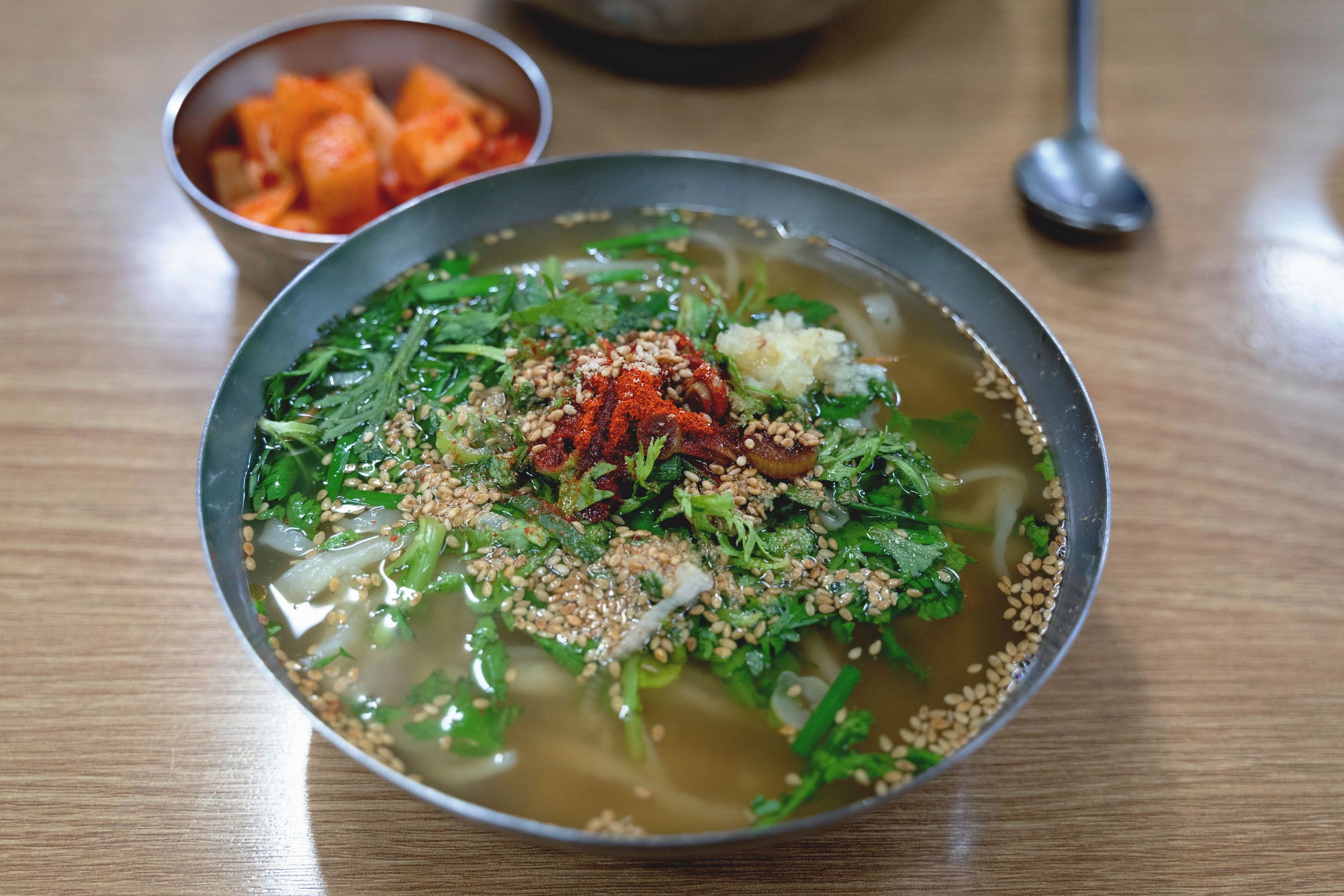
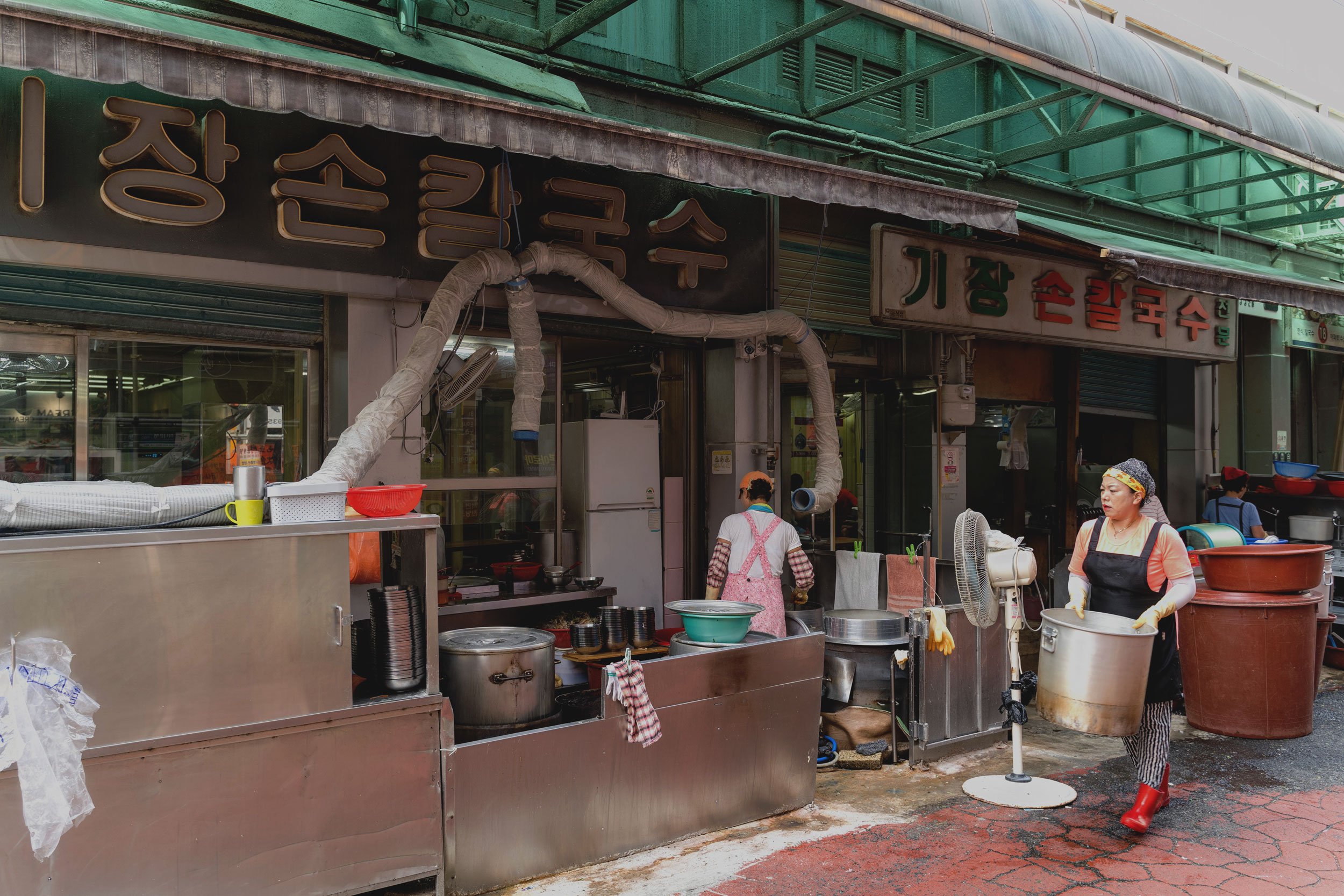
Homemade noodle soup in the heart of the Seomyeong area. This is a really basic, local shop that most likely won’t catch your eye.
The broth is thin and noodles similar to udon, just a little flatter. Women chefs prepare the soup outside, and that in itself is interesting to watch - the years of perfecting the craft going into every cut of noodle and every pour of broth.
Gijang Sonkalguksu opens at 9AM and closes at 9PM. We started our day off here - light yet filling. The only thing to watch out for is the garlic, but that just makes it even more tasty.
KEEP IN TOUCH:
OTHER TRAVELS:
SHARE:
Suzhou, China
Dubbed the “Venice of the East,” Suzhou’s picturesque canals and alleys are a street photography dream.
Tonggui Bridge in Shantang Jie, Suzhou
Suzhou is known for its canals, bridges and gardens, and has been dubbed the “Venice of the East”
Founded in 514 BC, it has over 2,500 years of history and is one of the fastest growing cities in the world
The collection of gardens in the city is a UNESCO World Heritage Site
Suzhou was a one-day trip while traveling to Shanghai and honestly, I wish I had more time.
My sister’s husband’s family is originally from this area so I put it on the itinerary and I’m really glad I did. For anyone into street photography, it’s quite a dream.
THINGS TO KNOW
The internet that you know and rely on doesn’t exist - get a VPN to access any Google or Facebook related site amongst many others you don’t realize you need. We used Baidu Maps [CN] and Alibaba’s AutoNavi Maps [CN].
There’s not much English. Most staff can’t speak English so be prepared to have communication difficulties.
Mobile payments via WeChat or Alipay are the norm. Because a Chinese bank account is required, tourists can usually pay with cash or Union Pay credit card, but those transactions are seen as a hassle.
HOW TO GET THERE
Suzhou is about a 30-minute ride on the country’s high-speed train from Shanghai Railway Station [MAP].
You supposedly can buy tickets online here, but we had trouble and had to buy them at the station’s ticket office. Do know that the ticket office is actually in a building across the street, diagonally to the southeast [MAP].
Once you arrive at Suzhou station, you can get a one-day transportation pass at the ticket hut at the metro’s ticket gate. Shanghai’s SPTC card doesn’t work here.
Metro lines 2 & 4 go to most of the main destinations, but keep in mind that Line 4 is NOT shown on Google Maps.
BEISI TA (THE NORTH PAGODA)
The first area we explored was the southeast side of Suzhou station. We caught Metro Line 4 to Beisi Ta station (北寺塔) [MAP] [Alibaba Map], which was the main hub.
This station puts you within walking distance from popular spots like The North Pagoda, Humble Administrator Garden, Suzhou Museum, Lion Grove Garden and more.
We had the unfortunate luck of traveling here during a Chinese national holiday, so we weren’t able to get into the most popular sights. They were booked for days and required prior reservations via WeChat. It does seem that they prioritize Chinese citizens over tourists.
After being bummed for a little, we decided to walk around and we came across some other amazing sights.
COUPLE’S RETREAT GARDEN
The Couple’s Retreat Garden, together with the other Suzhou gardens, are considered a UNESCO World Heritage Site.
From The Humble Administrator’s Garden area, it’s a short walk to the southeast. It has canals on three of its sides and is build around a library annex and pond area. It’s a smaller but intimate garden that isn’t as overcrowded as some of the other more popular ones.
Making our way back to Beisi Ta metro station, we walked along the canal south of the Couple’s Retreat Garden, labeled Daxinqiao Alley.
Here’s some of the sights and local life that we saw.
From Belsi Ta metro station, we went back to Suzhou station and transferred to Metro Line 2 to Shantang Jie (山塘街) metro station.
SHANTANG AREA
The Shantang area is centered around the Tonggui Bridge (pictured at the top of this page), and features small streets and a bunch of memorial bridges arching over the canals below.
Along the main pedestrian streets are souvenir shops, restaurants as well as food cards that come out in the evening offering local bites to eat.
If you really want to see a more non-touristy side to the area, I recommend taking a stroll down the alleys surrounding the main area.
Here’s some of the sights we saw in those alleys.
Before we head back to Shantang Jie station, we walked through Beihao Long street, one of the main shopping streets for tourists.
We took a look at the market at Shangtang Jie metro station before going back to Suzhou station and heading back to Shanghai.
Our one day adventure exploring Suzhou was amazing, even though we weren’t able to get into the main gardens.
Here’s to hoping for a chance to be back again.
QIN
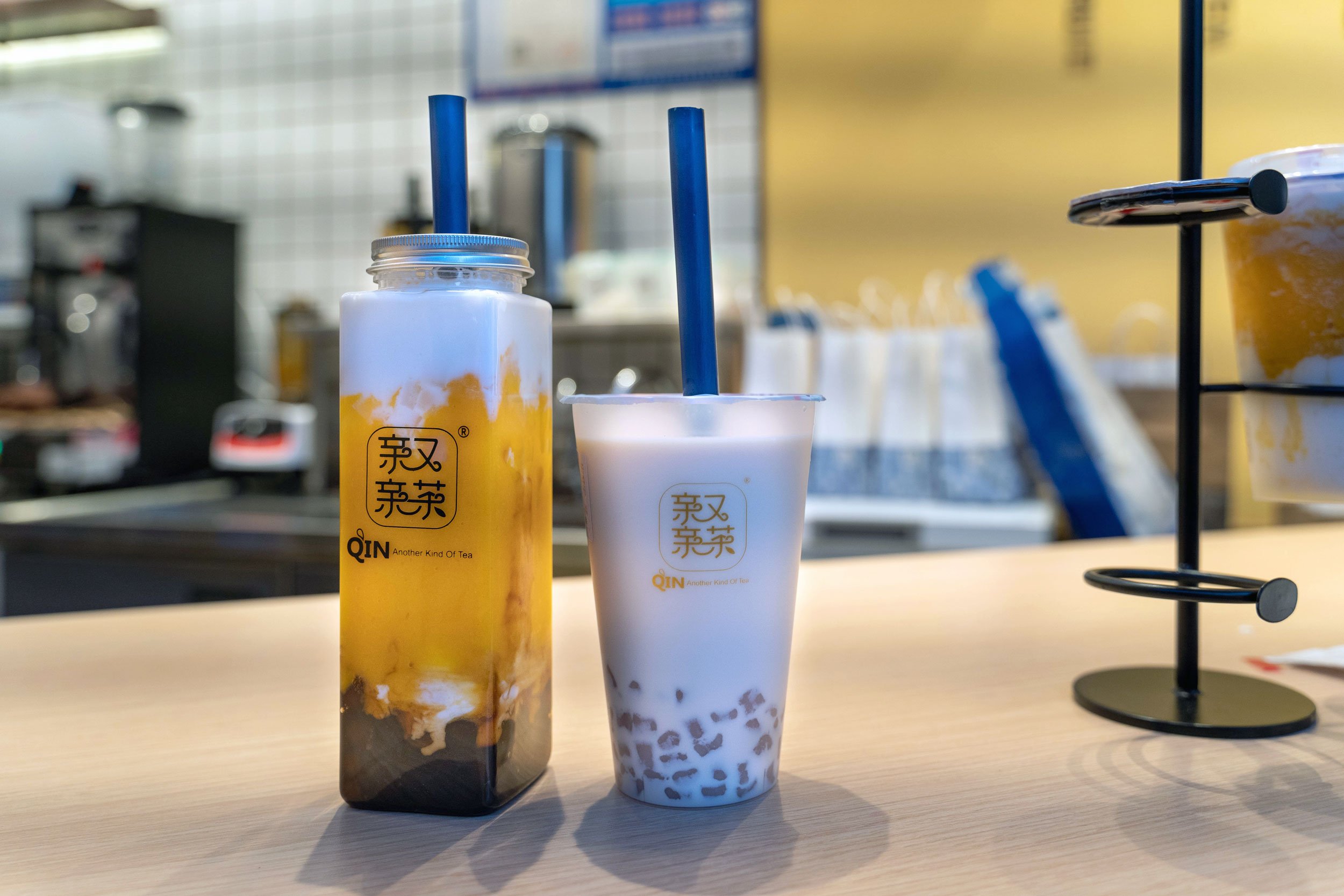
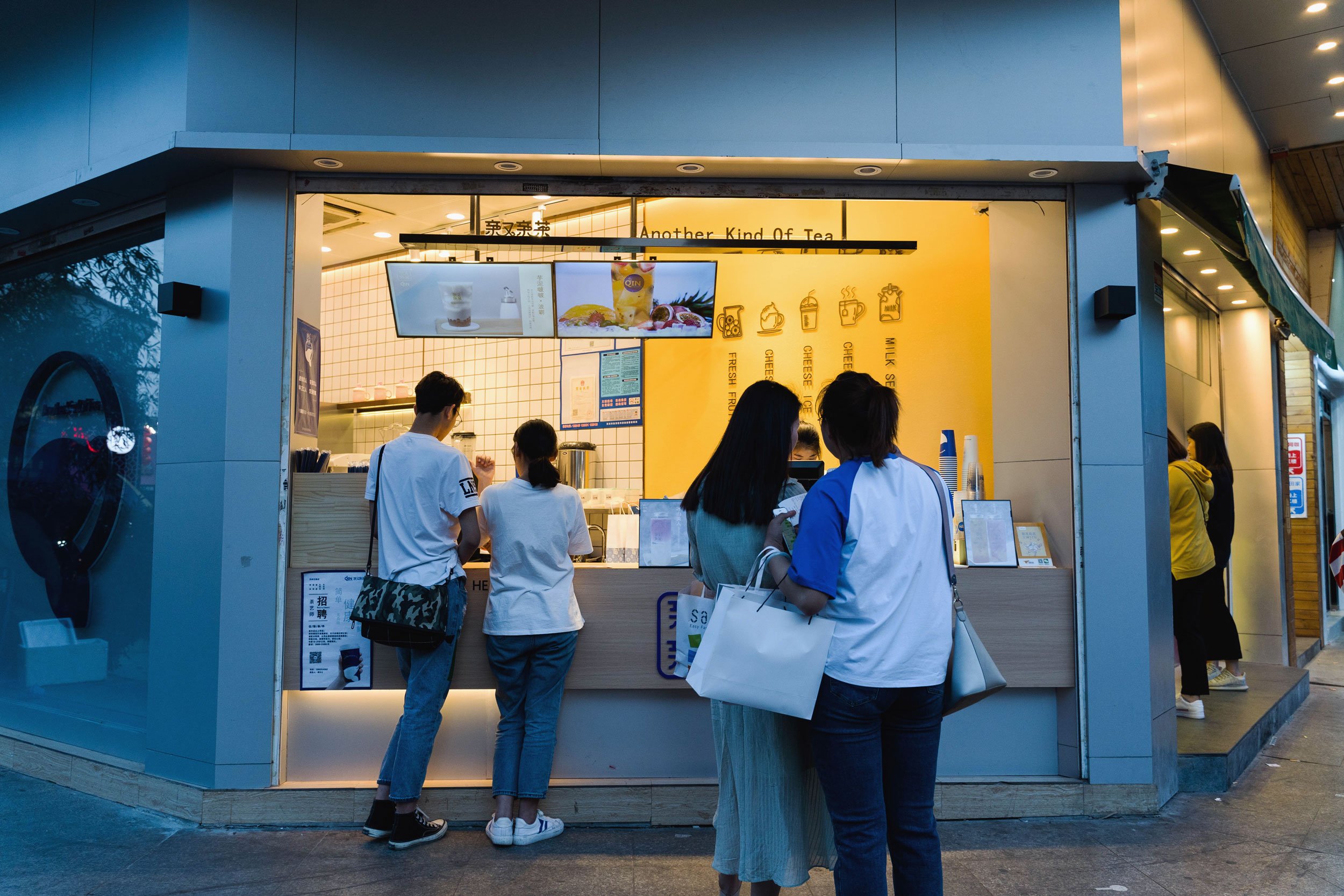
Great boba (tapioca) drinks here. Near the main Shantang area, it’s perfect for a refreshment while exploring.
I recommend any tea-based drink with the potato balls. It’s more of a mochi-like consistency than tapioca.
KEEP IN TOUCH
MORE TRAVELS
SHARE
Shanghai, China: Starbucks Reserve Roastery
A premier Starbucks experience at their third largest location in the world.
The third largest Starbucks in the world as of 2020 (second largest at the time of this visit), Shanghai’s Starbucks Reserve Roastery is an impressive coffee playground. It represents everything Starbucks is about and fits it into one location.
HOW TO GET THERE
Starbucks Reserve Shanghai Roastery is located on West Nanjing Road in a nice area full of fashion and high end shops from Chanel and Dior to Nike Kicks Lab and Levi’s. It’s right across the street diagonally from exit 11 at West Nanjing Road metro station (南京西路) on Line 13.
Starbucks has its fair share of critics, but it’s always around us no matter where we live. So when I had planned to be in Shanghai, I decided I had to check this location out.
Starbucks Reserve Shanghai Roastery is formerly the biggest Starbucks in the world before Tokyo’s Nakameguro location dethroned it in 2019. It is 2 open stories and 30,000 sq. ft. (2,787 sq. meters) big.
THE FIRST FLOOR
At the center of the first floor is the bean roasting facilities, packaging station, and large Chinese-themed bronze cask that houses their nitrogen-infused tea drinks.
The gift shop area takes up a significant portion of the floor and is full of multiple variations of everything coffee-related as well as clothing and more.
There are 2 coffee bars on this level with one featuring chocolates. There’s also a bakery counter and deli.
THE SECOND FLOOR
The stairs overlooking the packaging area will lead you to the second floor, with the first area being Starbucks’s tribute to tea - TEAVANA. It’s just as impressive as their coffee bars, rightfully so as it is in China.
Along with tea, the second floor has a cold brew coffee area, a pastries and bakery counter, another brew station and coffee bar as well as a roaster.
There’s a decent amount of seats on the second floor for people to sit and enjoy their drinks, sipping to the occasional sound of coffee beans being shot through the pipes above.
THE MENU
As expected, the Starbucks Reserve Shanghai Roastery’s menu is quite extensive. Different coffees, teas, cakes, pies, pastries, chocolates and everything in between.
We stuck with mixed drinks for the evening.
Amongst the mixed coffee drinks were the Emerald City Mule (Cold brew, ginger ale, burnt cinnamon syrup and lemon, finished with an apple slice) and the exclusive Shanghai Lane Romance (Cold brew, plum-flavored syrup and Chinese yellow rice wine and preserved plums infused with wine and coffee).
Tea mixed drinks had selections like Citrus Mint Mojito (citrus jasmine tea muddled and shaken with mint, Demerara sugar and lime, and tonic and sparkling water along with rum) and the exclusive Youthberry Prosecco (chilled Youthberry tea layered with bubbly prosecco, and vermillion sugar cubes).
These were just a few of the selections.
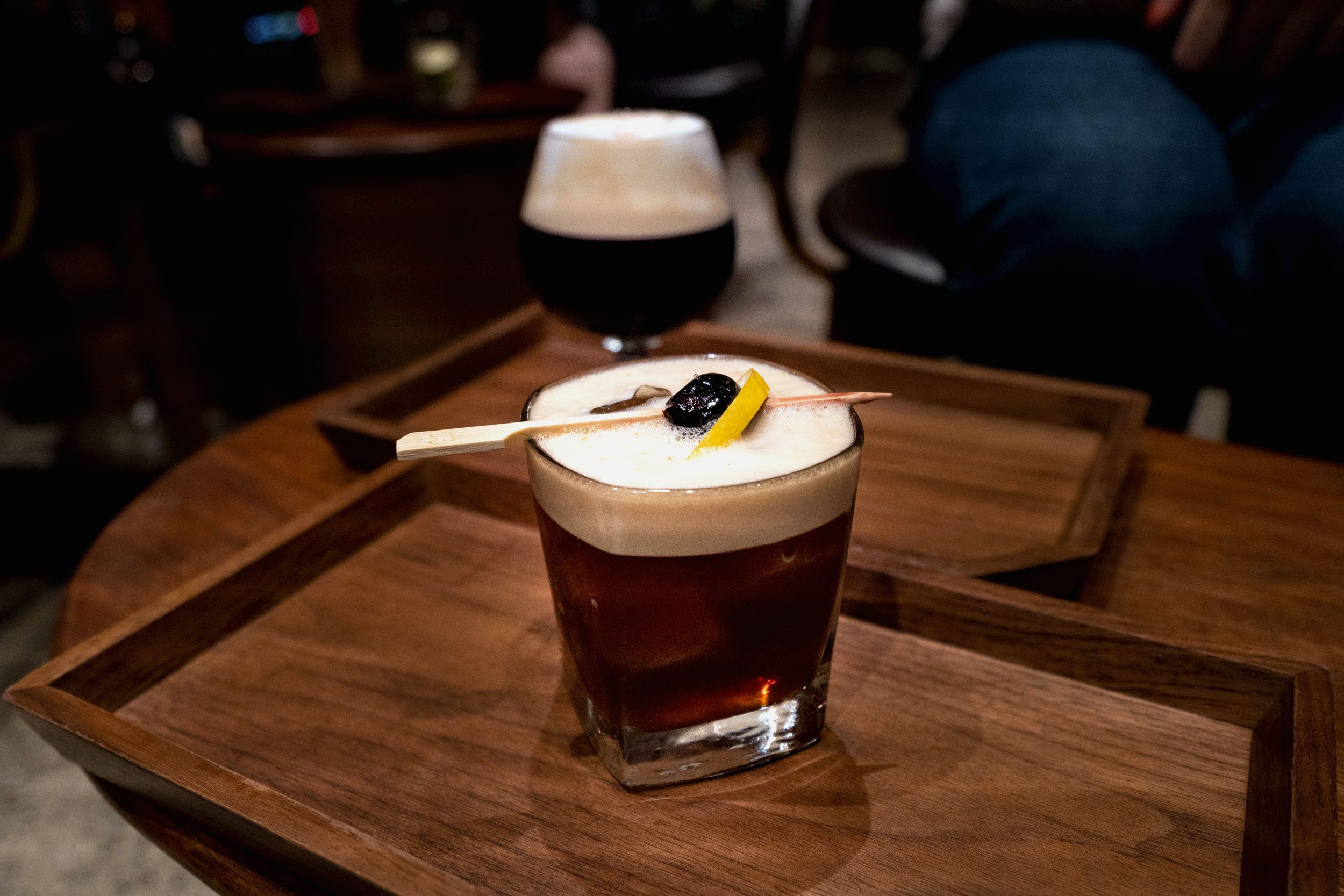
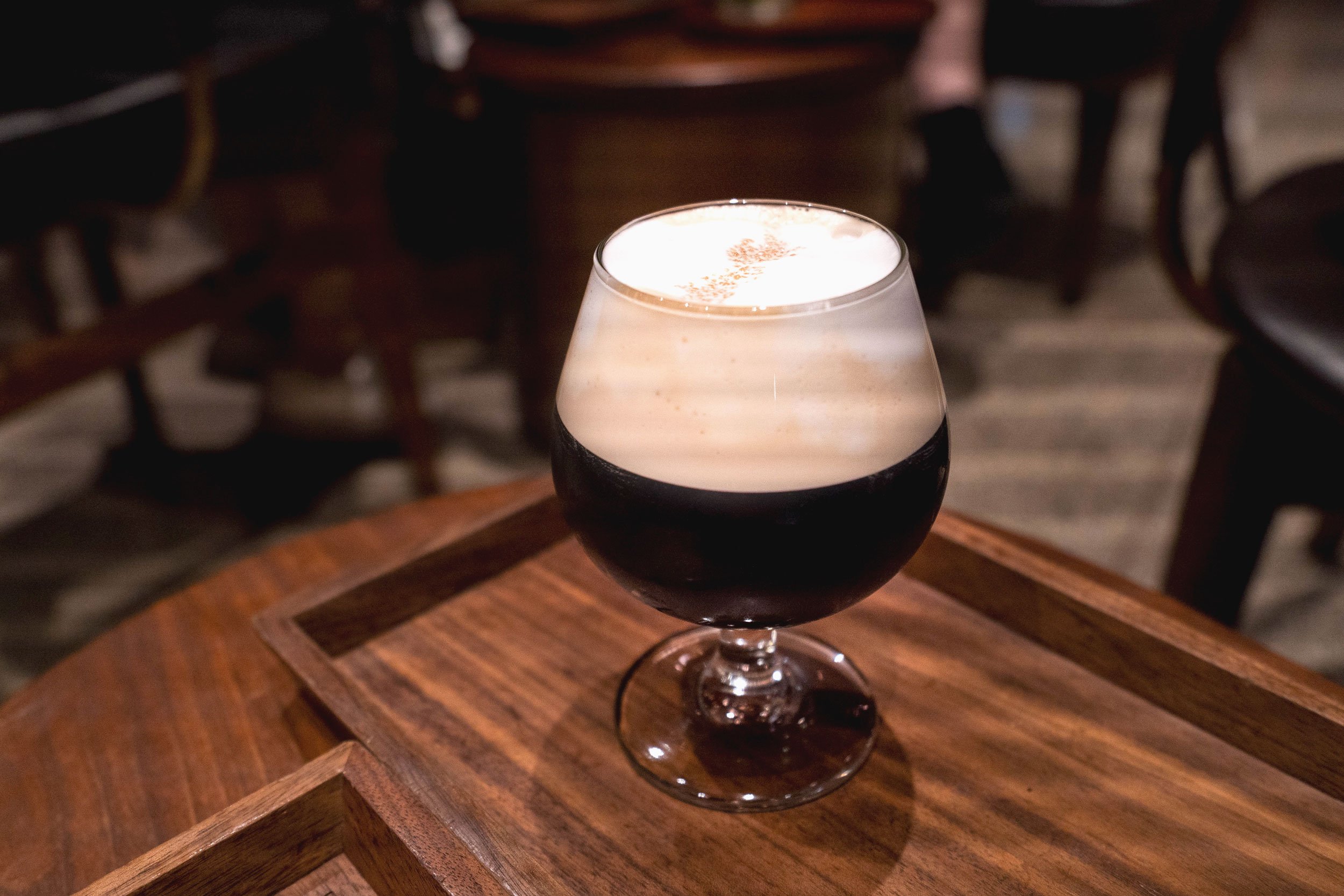
Everything here looked really good and it would be great to sit at the counter and learn about coffee from one of the baristas.
This is one of the prime showcases to how a global coffee chain still focuses on the craft while steering towards the future. Impressive and worth the visit.
KEEP IN TOUCH
MORE TRAVELS
share
Shanghai, China
Traveling in Shanghai for a few days, an energetic city and one of China’s and Asia’s main hubs.
Shanghai is China’s most populated urban area with 26.3 million in its municipal area (2019)
The name Shanghai means “Above the Sea” and the area has history dating back to 4000 BC
Shanghai’s population has nearly doubled since 2000 and it also has the world’s largest metro system
Shanghai has been one of the cities at the forefront of China’s rise, and I wanted to see it for myself.
I had visited Shanghai on a previous trip in 2010 to see the World Expo, but I didn’t have time to explore the city at all. On this trip, I had 3 full days to explore it as much as possible.
China though, as you probably know, is pretty different and there are some things to keep in mind if you’re planning a first visit.
THINGS TO KNOW
The internet that you know and rely on doesn’t exist - get a VPN to access any Google or Facebook related site amongst many others you don’t realize you need. We used Baidu Maps [CN] and Alibaba’s AutoNavi Maps [CN].
There’s not much English. Most staff can’t speak English so be prepared to have communication difficulties.
Mobile payments via WeChat or Alipay are the norm. Because a Chinese bank account is required, tourists can usually pay with cash or Union Pay credit card, but those transactions are seen as a hassle.
WHERE WE STAYED
Preferring English-capabale staff, we decided to stay at an international hotel. The Andaz Xintandi by Hyatt was nice, cheaper than what you’d pay for this type of hotel anywhere else, and it put us in a really nice area conveniently located between 2 subway lines - Line 1 & 10.
https://www.hyatt.com/en-US/hotel/china/andaz-xintiandi-shanghai/shaaz
Because we flew into Shanghai from Beijing on a domestic flight, we landed at Shanghai Honqiao Airport (SHA) instead of Pudong (PVG), which is more common for international flights. The easiest way to and from the hotel is by subway for both airports.
For Pudong, Longyan Road Station [MAP] is the transfer point to go to and from the airport on the super speedy MagLev. I recommend getting an SPTC metro card, a prepaid, refillable card for subways, MagLev, buses and more.
XINTANDI
Quite a great neighborhood to stay in. Xintandi is a bit upscale - the name itself translates to “New world/Heaven.”
The streets were clean and lined with modern lit shops with malls, with recognizable names like Harry Winston, Tiffany & Co., BO Concept and more in the area. There are a few higher-end apartment complexes here, including one that is literally called “Rich Gate.”
The highlight is Shanghai New World, an upscale-feeling outdoor mall area full of shops and outdoor bars and eateries.
With Xintandi as our base, here’s what we did on our full days in Shanghai.
DAY 1
NANJING ROAD PEDESTRIAN STREET
A major shopping area, the Nanjing Road Pedestrian Street is a wide road lined with malls and shops.
We visited here after eating soup dumplings at Jia Jia Tang Bao (info at bottom), just a short 15-minute walk east.
It was a Chinese holiday when we went, so I’m not sure how it compares to typical crowds, but the streets were packed to the point that Chinese military personnel had to direct traffic.
On a calmer day, it’s a good street to walk down if you’re heading to The Bund area.
TIANZIFANG
Built from renovated alleyways, Tianzifang is an outdoor mall area good for souvenir shopping, snacking on some light eats and grabbing a drink at divey bars.
It’s definitely geared to tourists, but it’s a neat environment to be in.
STARBUCKS RESERVE ROASTERY
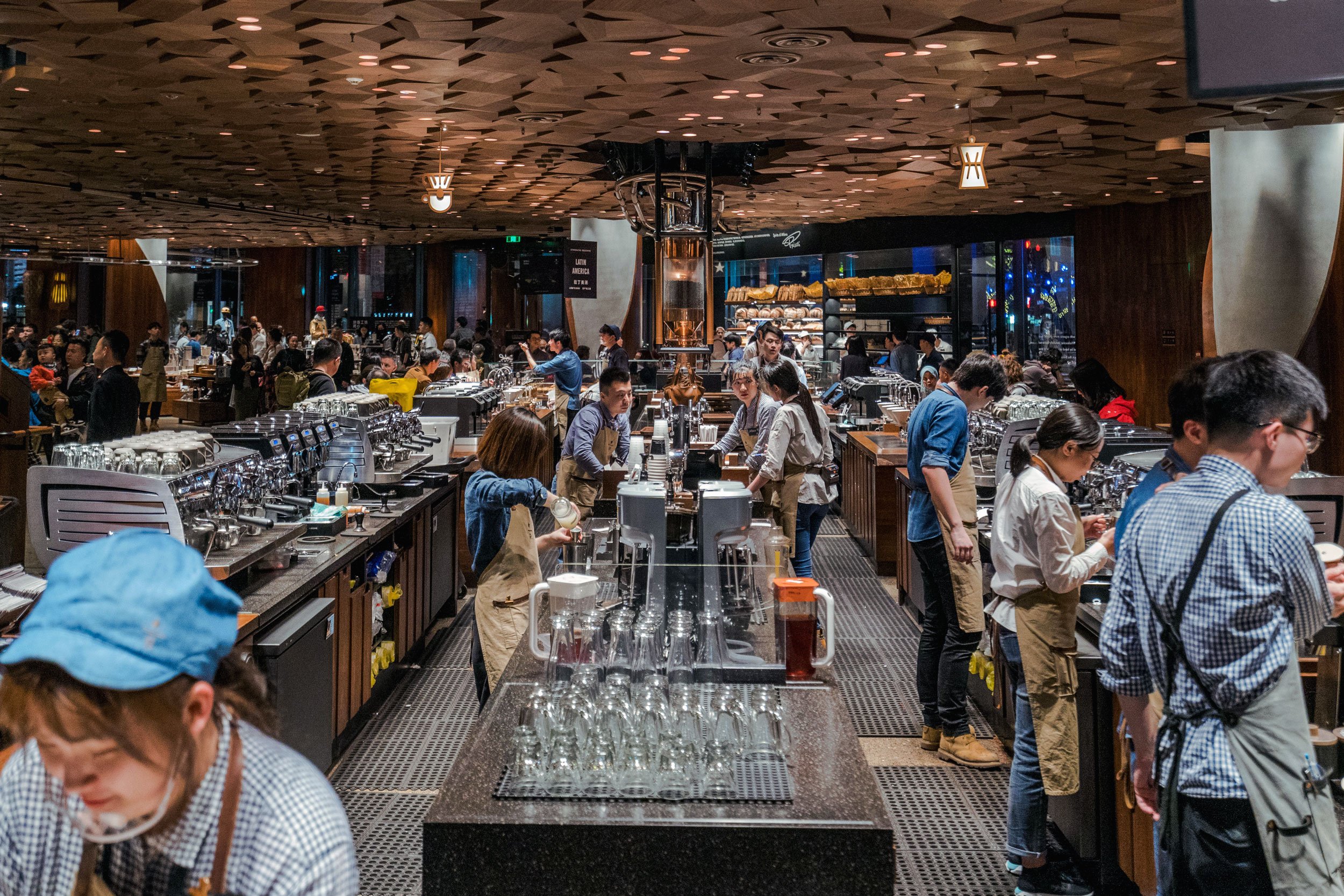
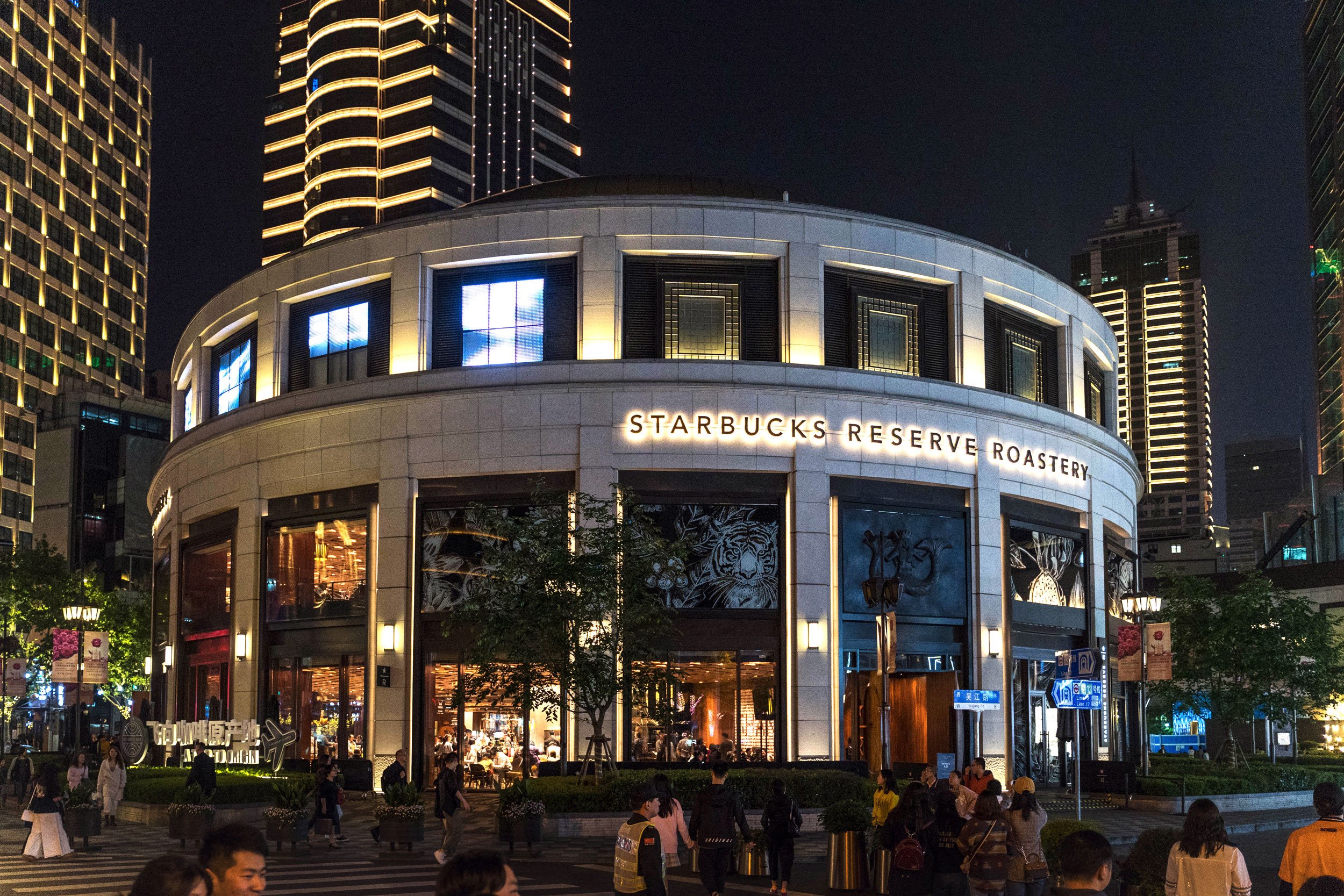


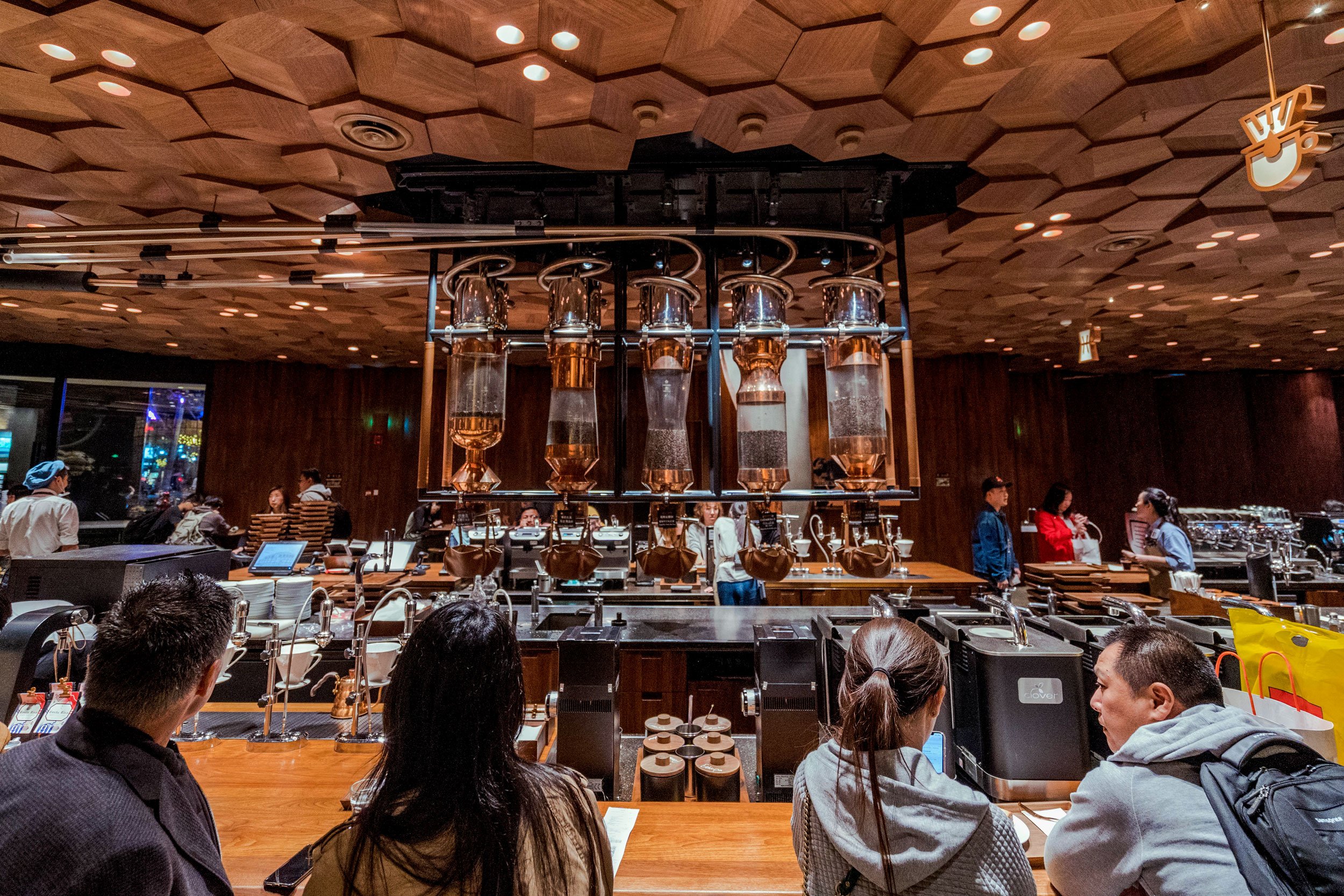
Formerly the largest Starbucks in the world before handing over the title to Tokyo’s, Starbucks Reserve Roastery Shanghai is huge. I knew if I was going all the way to Shanghai, I’d have to see it for myself.
Starbucks Reserve Roastery Shanghai is located just outside of the Nanjing West Road station in a nicer neighborhood. The location is a little off on Google Maps, so here’s the correct location: MAP
It’s a 2-floor, open-space that features everything from exclusive coffees to chocolates, teas at their TEAVANA area, a deli, patissier and coffee-included drinks at their bar, not to mention a huge array of tempting goods to choose from.
If there wasn’t so many foods to eat while on vacation, I could spend a full evening here.
DAY 2
SHANGHAI DISNEYLAND
Most tourists visiting Shanghai will want to check out Shanghai Disneyland. At 963 acres, the park is one of Disney’s largest.
1-day tickets were about ¥575 CNY (about $82 USD), and we got them online at the Shanghai Disneyland website. We were able to get it by showing the tickets on the phone.
The most popular rides at the time we went were Soaring Over the Horizon (hang gliding experience) and TRON Lightcycle Power Run (rollercoaster). The food wasn’t good, so try to sneak something in if you can!
DAY 3
SUZHOU
On the second full day staying in Shanghai, we caught the train and visited nearby Suzhou.
It’s amazing to say the lest, and a must for anyone who can fit it into their itinerary. Known for its gardens and canals, it’s been called the “Venice of the East” and the name is fitting.
This was definitely one of the highlights for me during my stay here and I wish I had more time.
DAY 4
SOHO FUXING SQUARE
The SOHO named buildings in China seem to be fantastic for anyone into modern design. After visiting Beijing’s Galaxy SOHO designed by Zaha Hadid and learning that this one was right down the street from our hotel in Xintiandi, I knew I had to check it out for myself.
SOHO Fuxing Square is a multi-use complex with shops, eateries and offices. After eating dim sum for lunch, we went to the building’s elevator hall where anyone looking for a cool photo can have some fun being transported to the future.
YU GARDEN
Also known as Yuyuan Garden, the Yu Garden is one of the most popular and heavily visited cultural spots in Shanghai.
A short walk east from Yuyuan Garden subway station (metro line 10), the area is filled with breathtaking architecture, shops, as well as the 5-acre garden itself.
It was a bit crowded when we went, contrasting creator Pan Yuandan’s intentions of it being a peaceful garden for his father in his old age, but it was worth visiting. Not only is there a lot to see, we were able to be fully immersed in 1559 Ming Dynasty Shanghai.
THE BUND
Our final stop was of course The Bund. No trip to Shanghai is complete without seeing its rapidly growing skyline, representative of how fast the city as a whole has been developing.
Shanghai’s skyline (pictured at the top of this page) is nothing short of amazing - its waterfront neon skyscrapers puts it right up there with Hong Kong’s.
The modern glow is contrasted with the French Concession buildings across on the westside of the Huangpu River (where we enjoyed the view from) providing a 360-degree breathtaking view.
Shanghai, as I thought, is a massive city on the modernization fast path, a bustling business hub, tourist hotspot and one of the key cities directing the direction of the world.
The most impressive thing wasn’t the modernization, it was the speed and scale that it’s happening.
Shanghai showed me that China isn’t coming, it’s already here.
JIA JIA TANG BAO
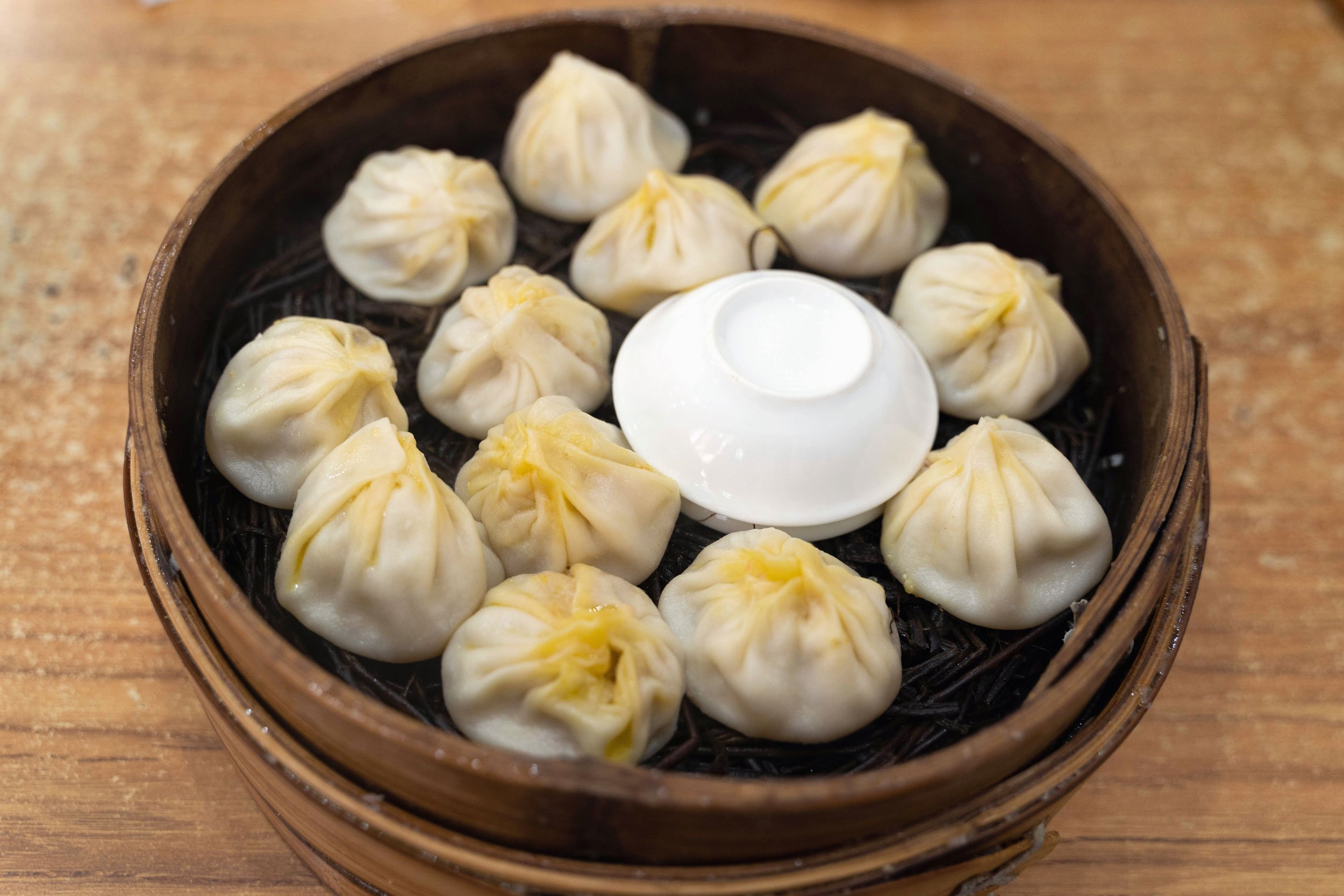
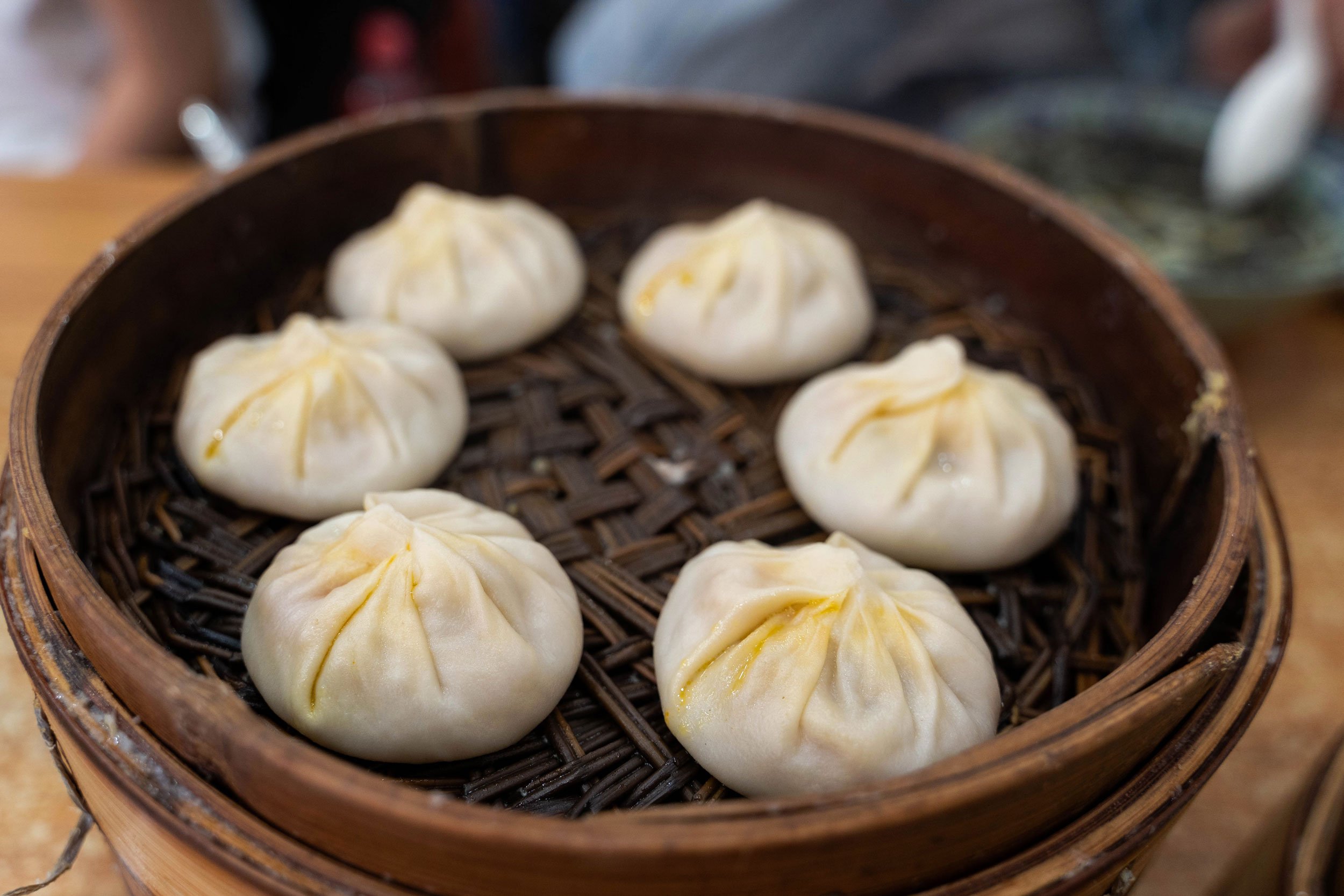
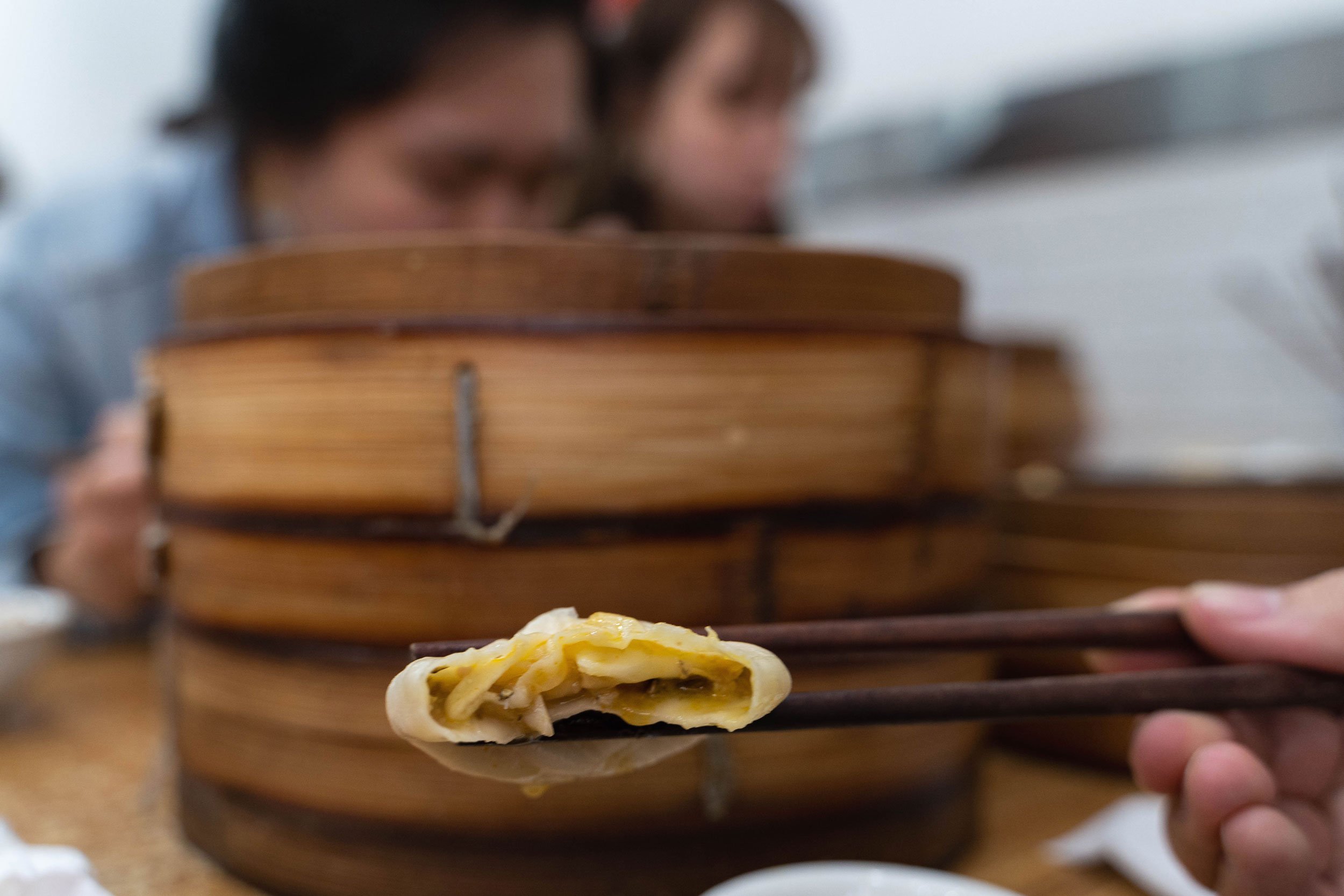
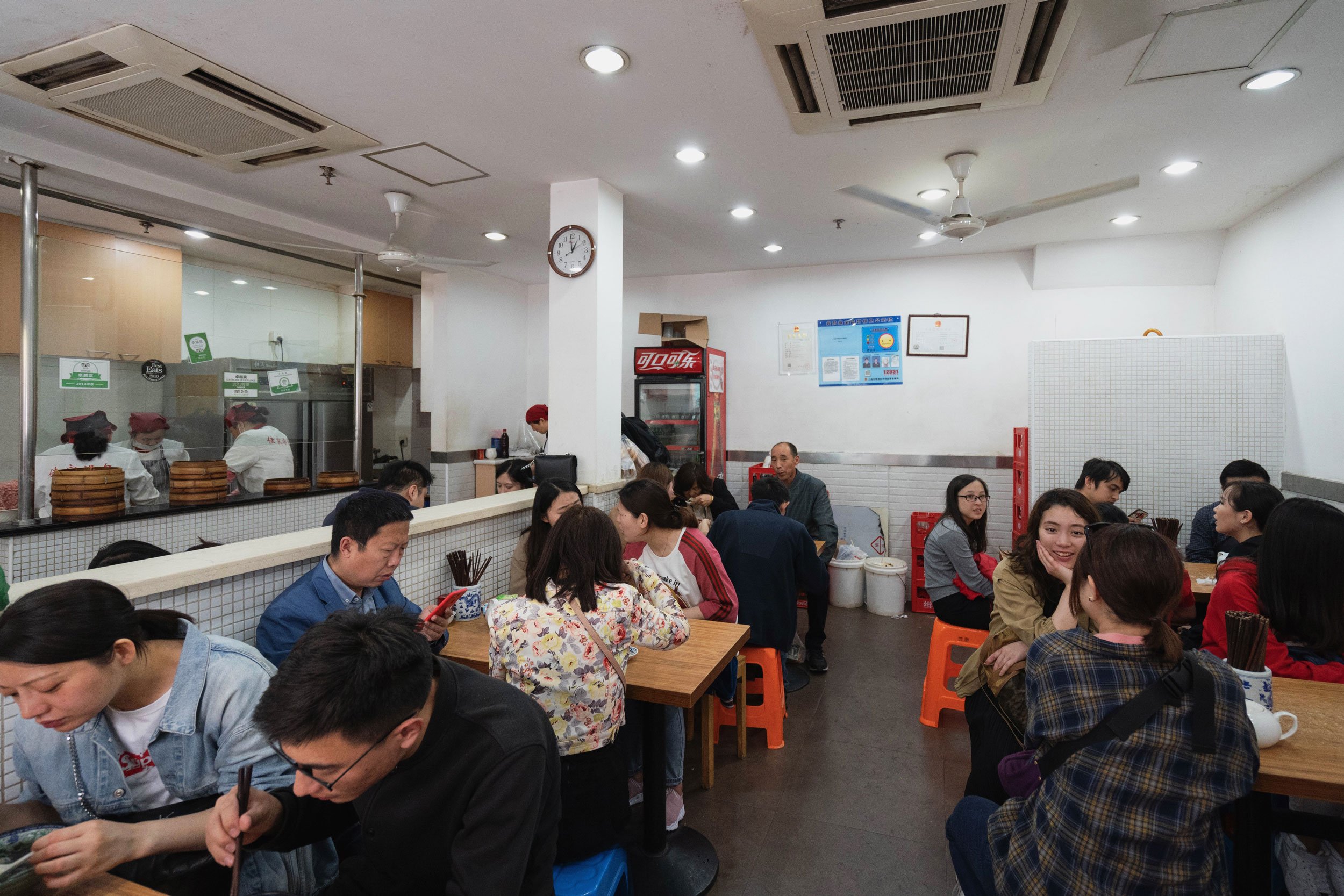
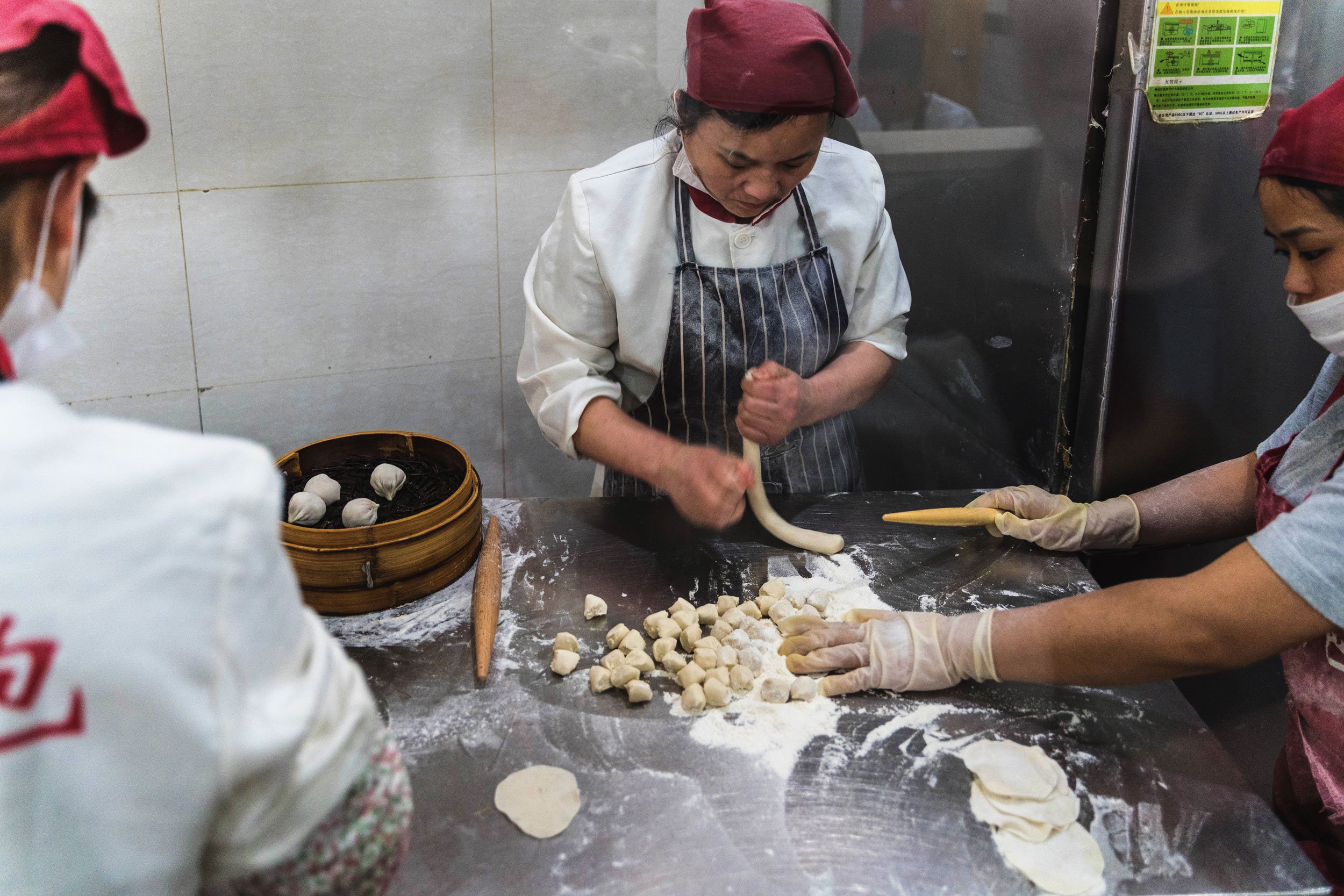
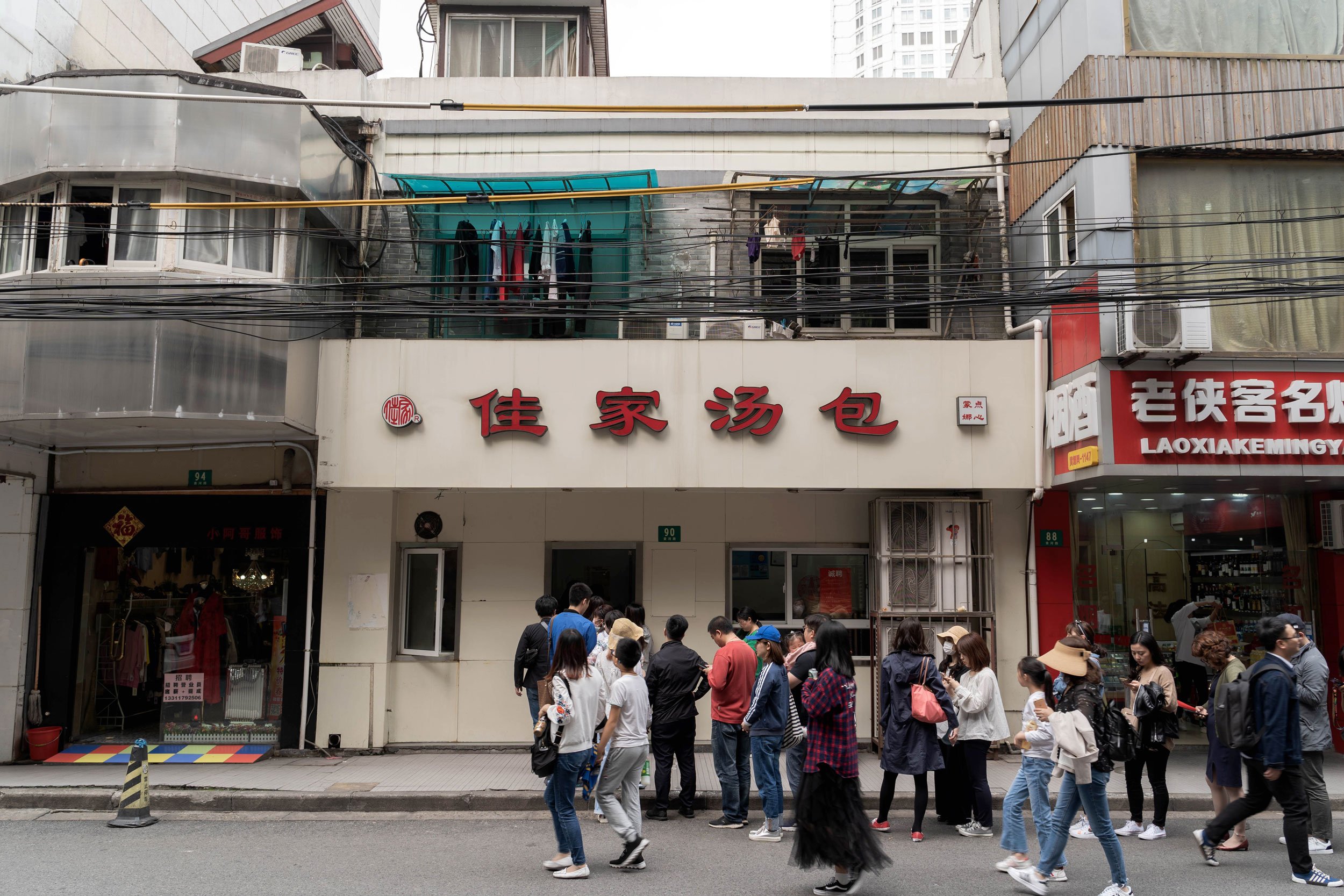
Arguably the most famous xiaolongbao restaurant in Shanghai and rightfully so. I first came across Jia Jia Tang Bao while watching Eat the World with Emeril Lagasse, so we made it our first lunch.
The soup dumplings are delicious - thin wraps and rich broth on the inside. We got two trays for two people and it was a good amount, costing only ¥138 CNY (about $20 USD). There was a wait - about 30 minutes at peak lunch time, but it’s worth it. Would love to go back for more.
zhUwUchuAncài
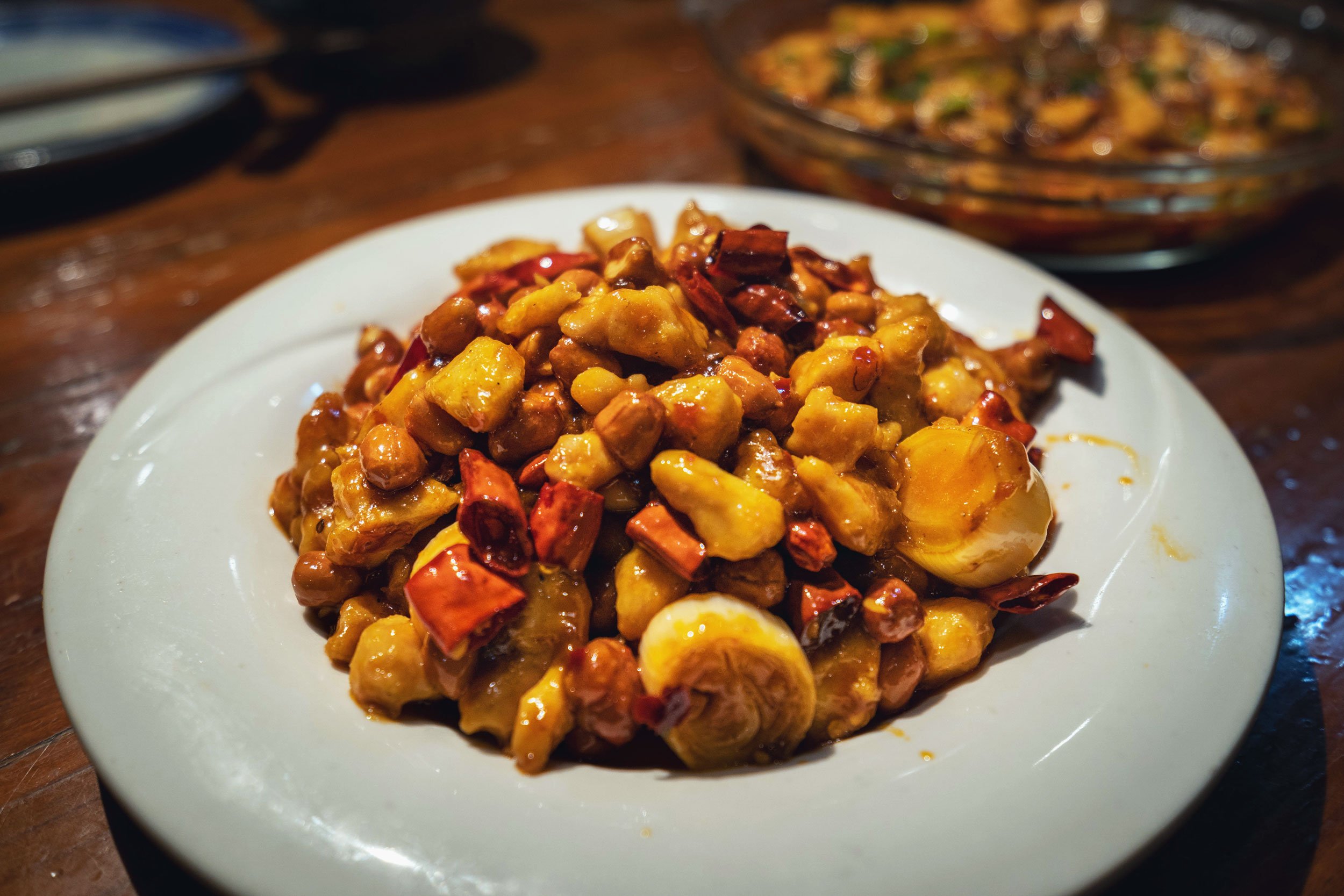
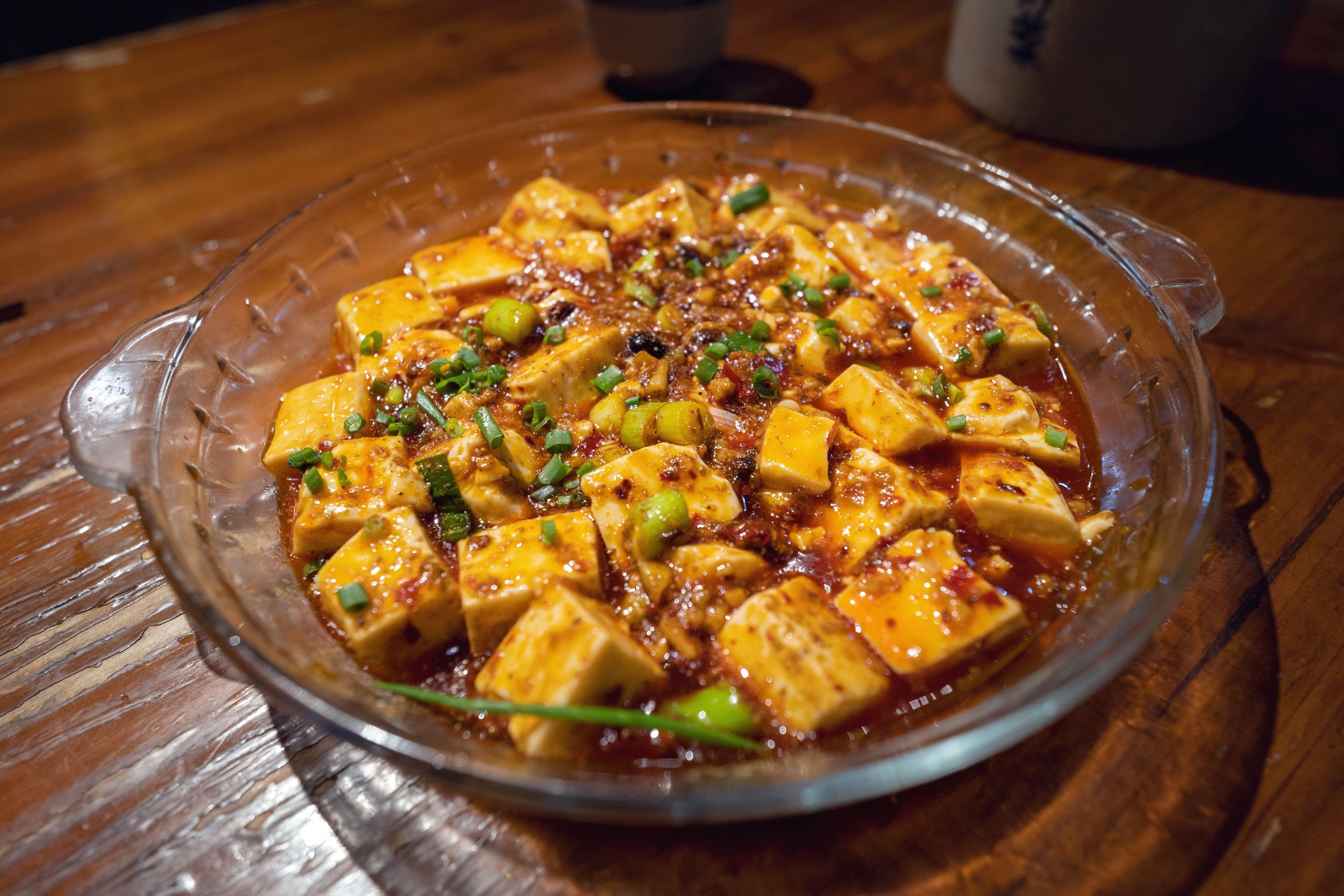
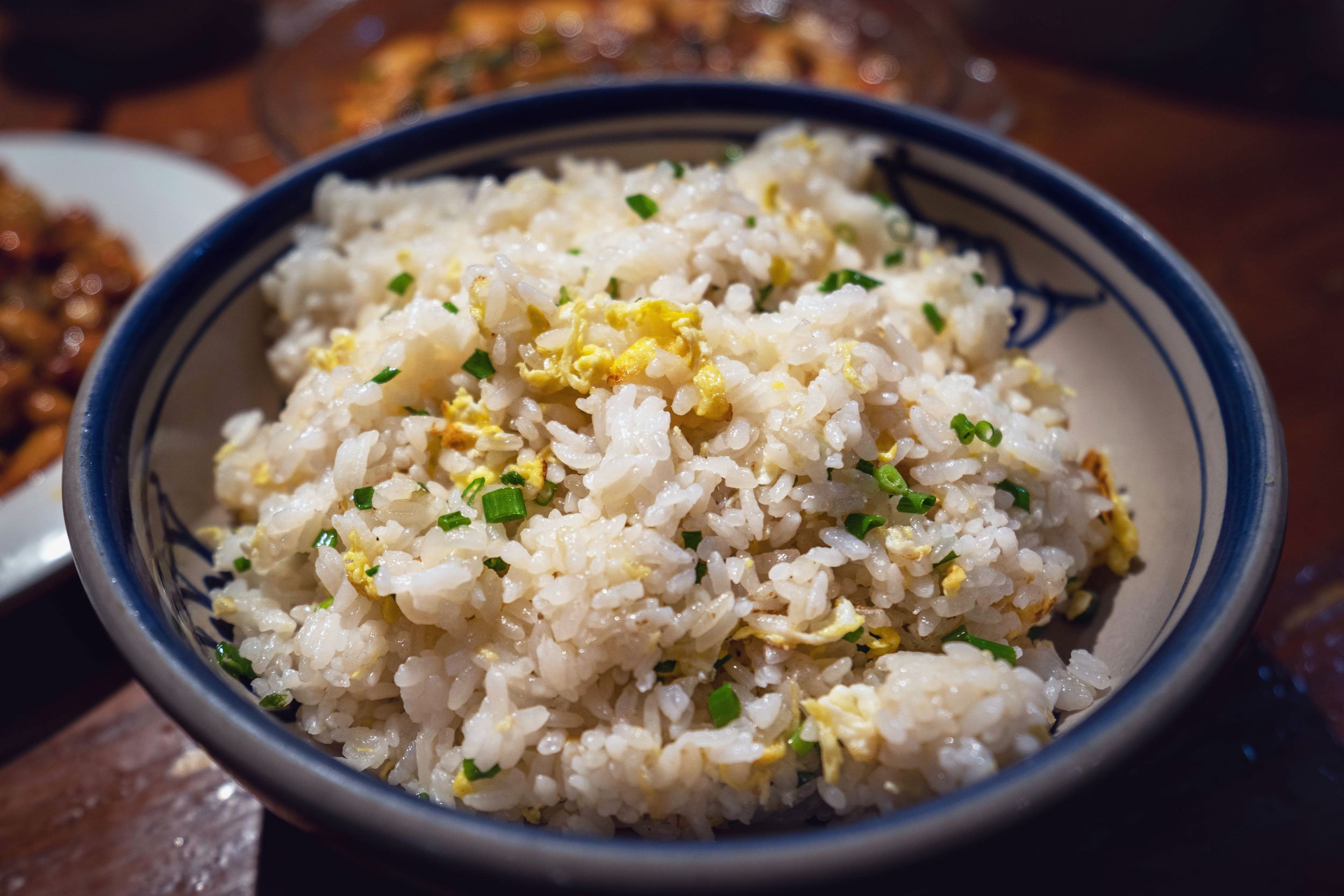
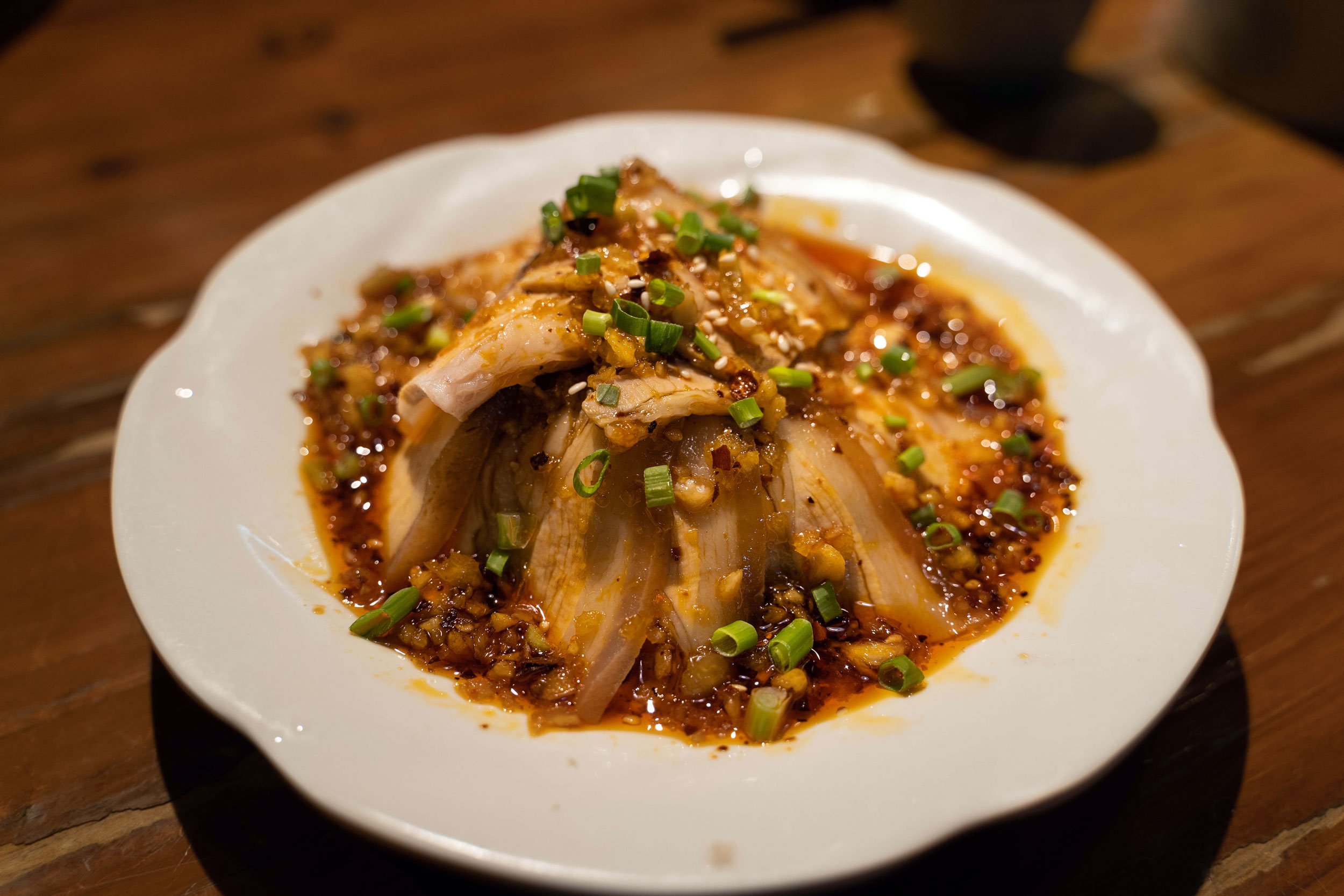
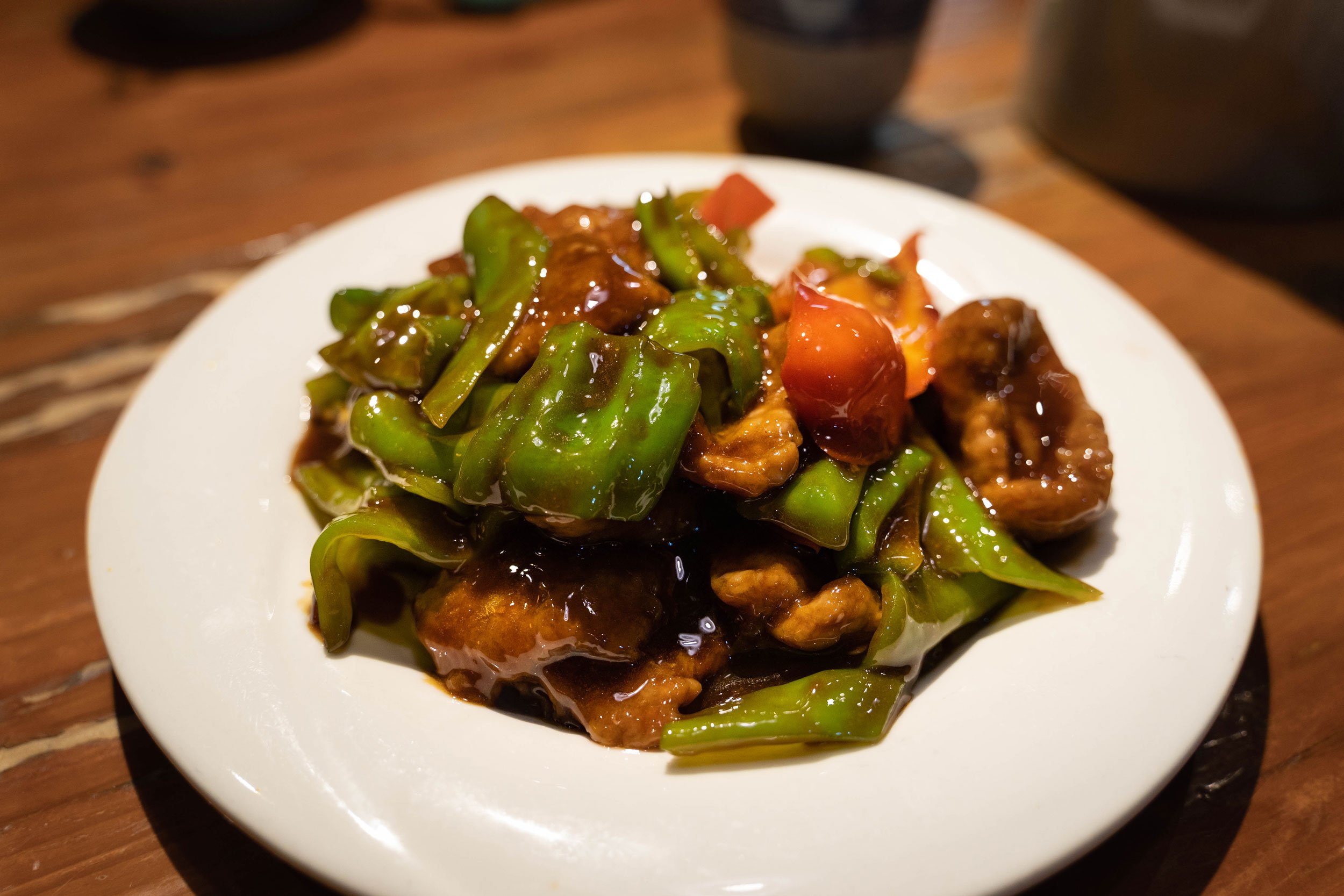
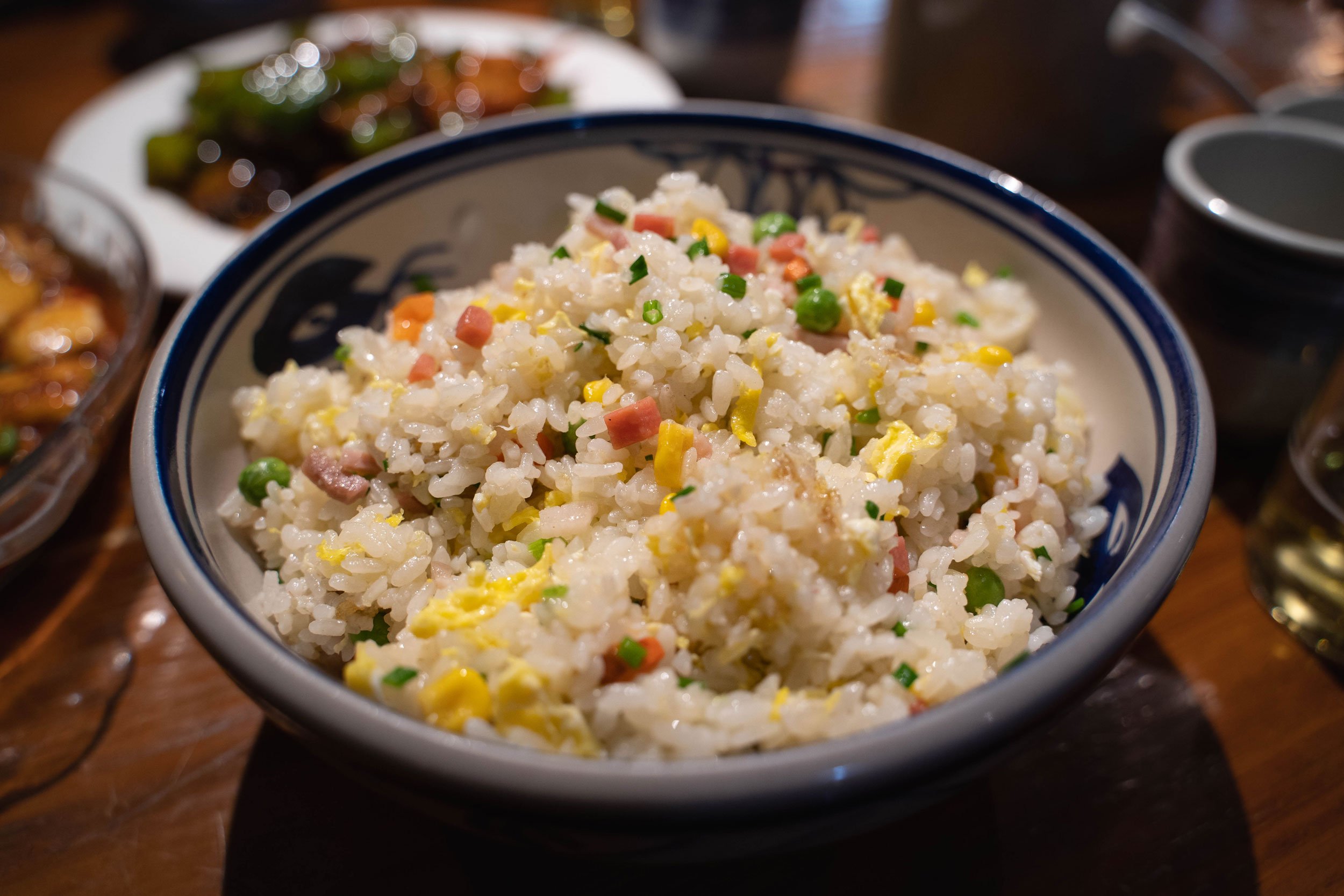
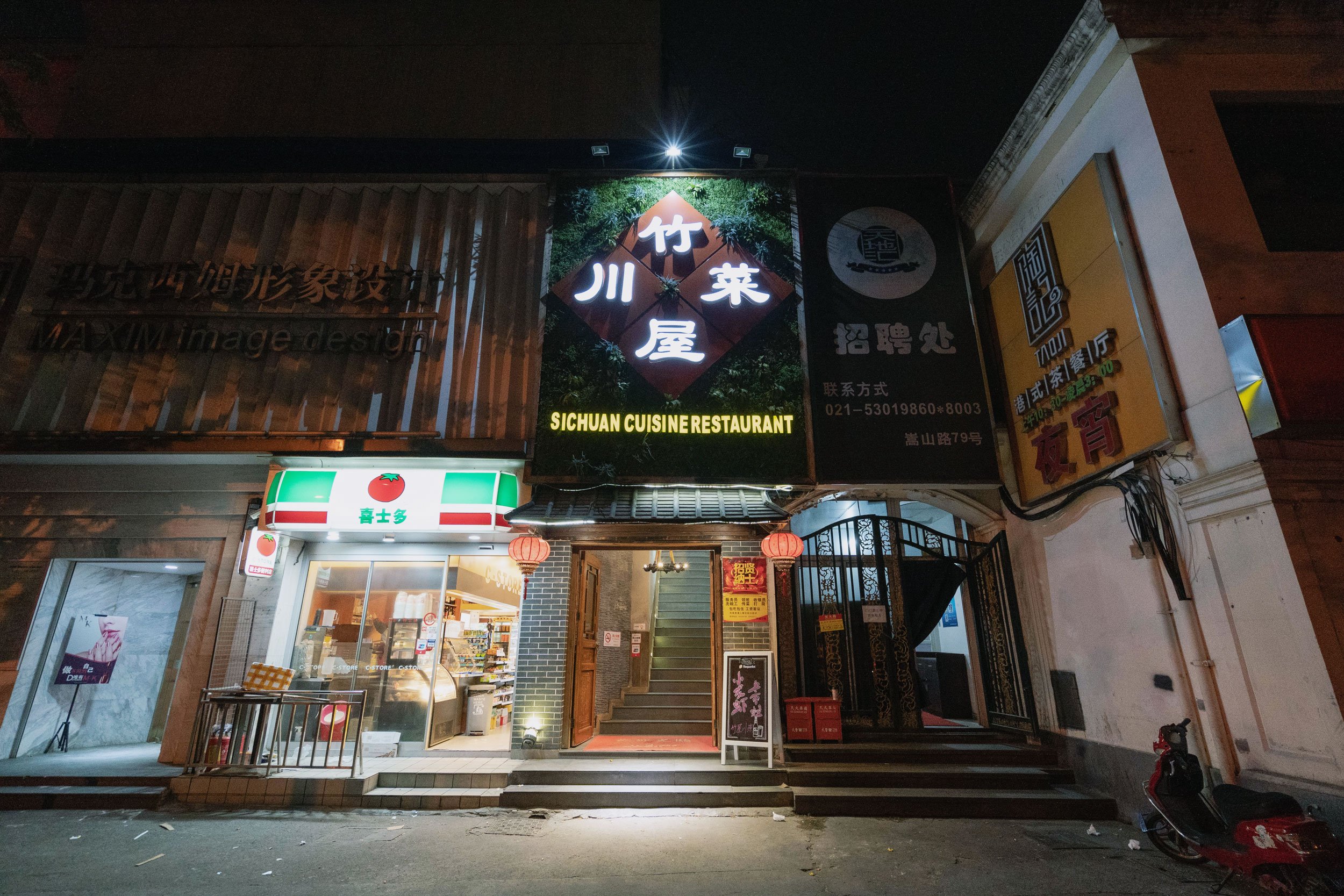
So delicious we had to go twice! This place (竹屋川菜) , which translates to “Bamboo House Sichuan Cuisine”, is great for anyone who likes Sichuan or spicier Chinese foods.
Everything we had was packed with flavor and the crowd was mainly locals - a good sign.
It’s conveniently located across the street from Andaz Xintiandi Shanghai, and prices are hard to beat. We were getting 3 dishes and beer - enough to get full for dinner - for $20-40 USD.
(Up the stairs above the convenience store) MAP
Alibaba Map
HENAN LA MIANGUAN
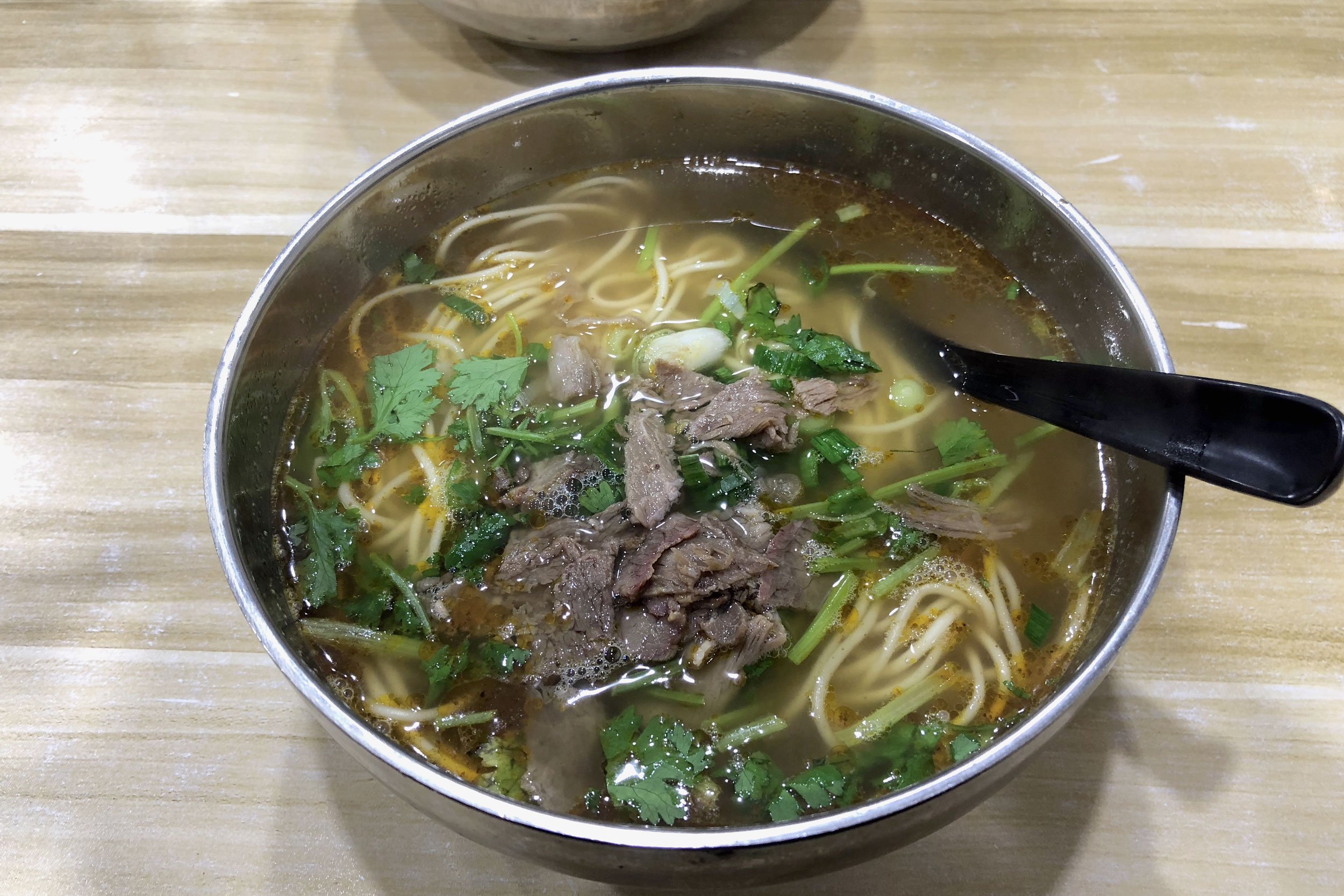
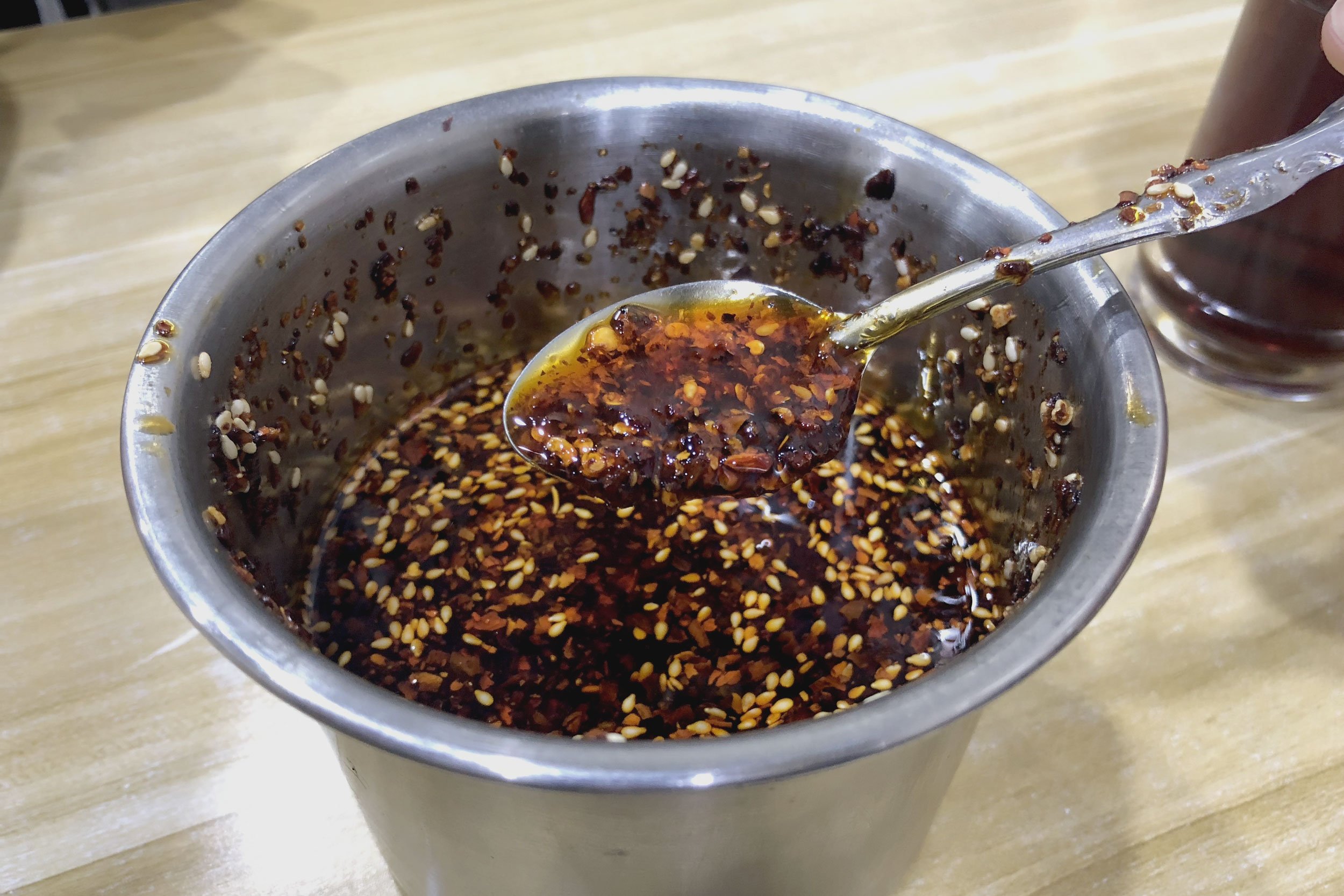
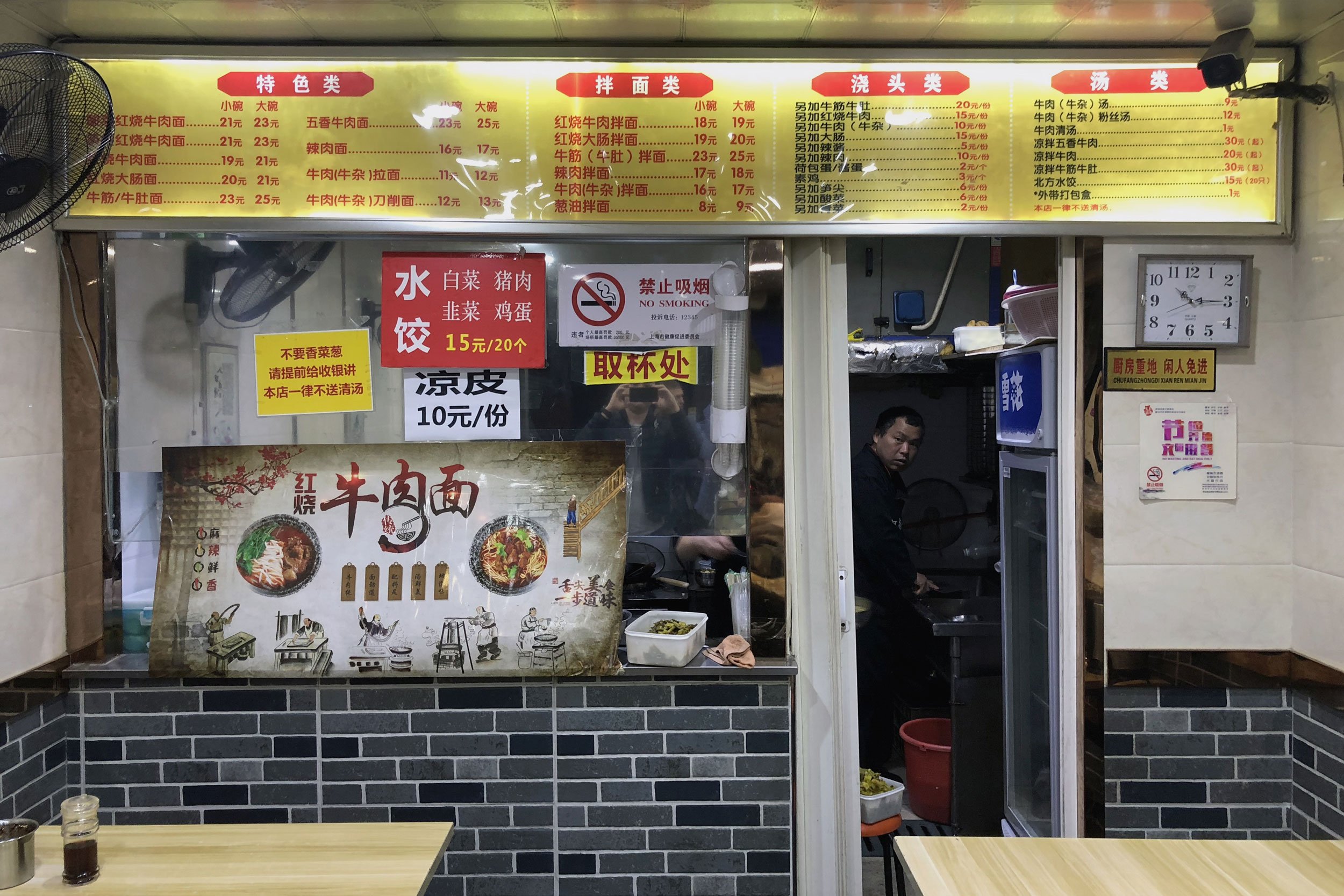

Sometimes it’s the hole-in-the-wall spots that are the best. This was one of those cases.
Henan la mianguan (河南拉面馆 (淡水路), which seems to roughly translate to Henan ramen museum, featured a variety of bowls with homemade noodles in a beef broth, topped with slices of beef and cilantro. This soup really hit the spot.
While everything was in Chinese, both locals and tourists alike were eating while we were there. The cost for a bowl was only about $3 USD.
DAHUCHUN
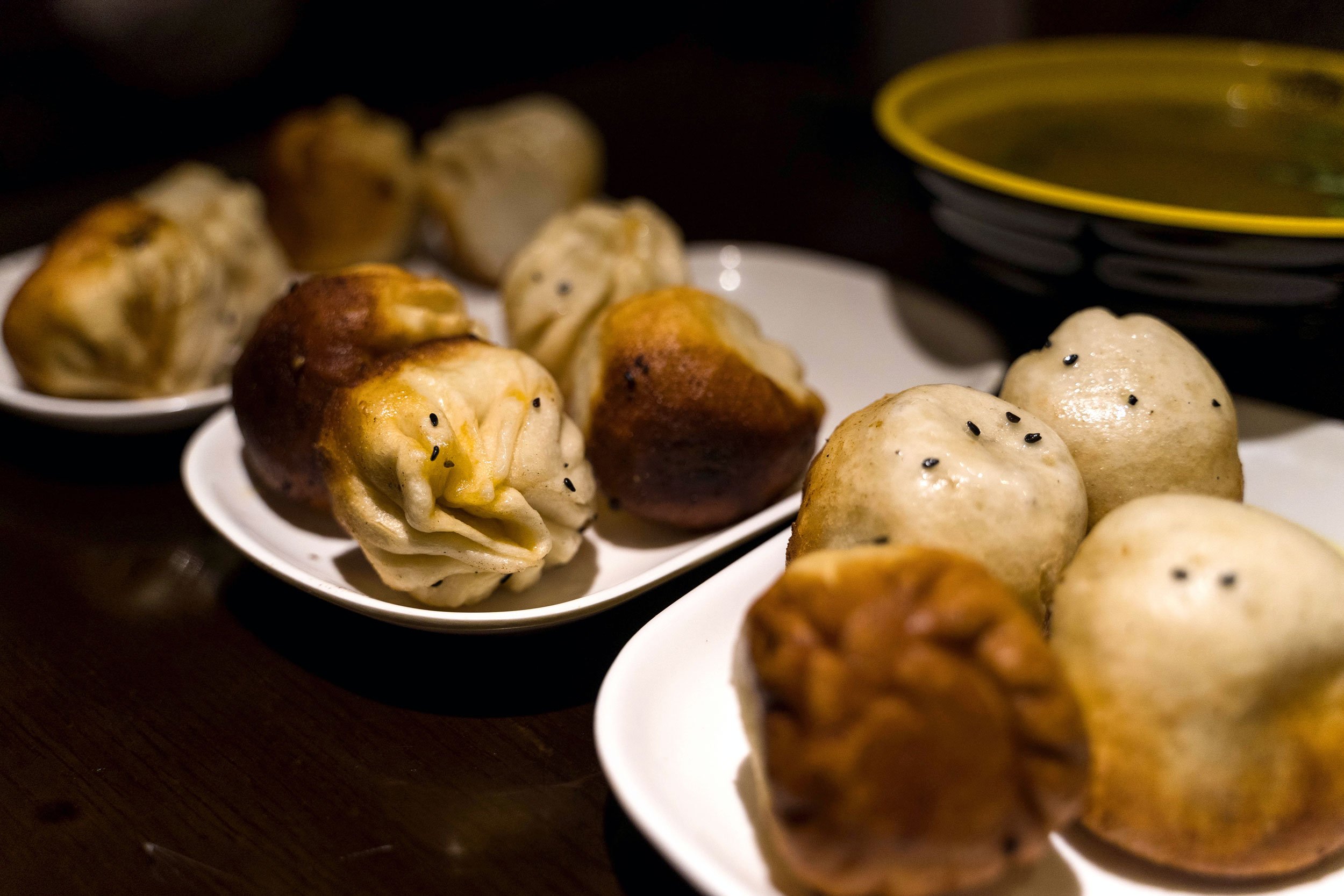

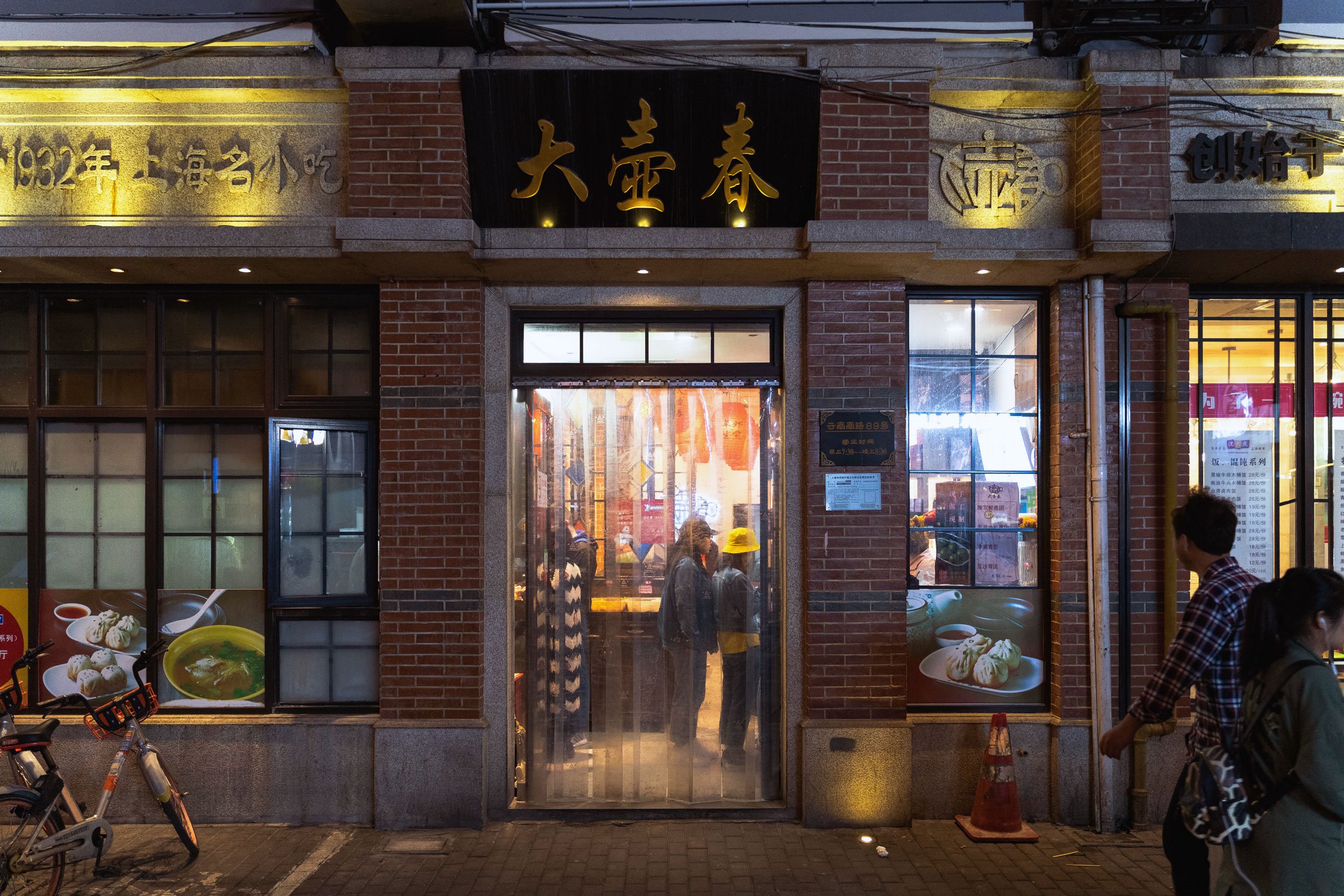
Fast food fried dumplings, good enough for Apple CEO Tim Cook to visit apparently, according to photos on the wall. Dahuchun was our first meal in Shanghai, a place that features something like deep fried xiaolongbao.
The wraps are bready, crispy and thick, and insides a refilled with juicy ground meats. The soup is simple with a taste that somewhat resembles curry.
The ordering area in the front was busy and tables were full, but because it’s somewhat of a fast food experience, we had no trouble getting a seat.
KEEP IN TOUCH
more travels
SHARE:
Beijing, China
A few days exploring one of the oldest cities in the world, Beijing.
Beijing is the capital of China, a spread out city of over 21.5 million people
One of the world’s oldest cities, it is said to have been established in 1045 BC
It has 7 UNESCO World Heritage sites and houses the most Fortune Global 500 Companies in the world
There’s probably no better place that Beijing to see China’s incredible history while getting a glimpse of what the country has coming up next.
I made my second visit to Beijing in 2019, ten years after my first. During that time it was clear just from observing daily life that a lot had changed. Before anything else, here are some points to keep in mind if you’re planning a first visit.
THINGS TO KNOW
The internet that you know and rely on doesn’t exist - get a VPN to access any Google or Facebook related site amongst many others you don’t realize you need. We used Baidu Maps [CN] and Alibaba’s AutoNavi Maps [CN].
There’s basically no English. Most staff can’t communicate in English but some will try with apps if they have time.
Mobile payments via WeChat or Alipay are the norm. Because a Chinese bank account is required, tourists can usually pay with cash or Union Pay credit card, but those transactions are seen as a hassle.
WHERE WE STAYED
Looking for a comfortable place with English-speaking staff, we decided to go with an international hotel. We stayed at Hotel Jen, a Millennial-focused chain by Shangri-La, located in Beijing’s Central Business District diagonally across the CCTV building.
Rooms are spacious and with ample outlets (all universal!), and the modern interiors are carefully designed. It sits on top of the China World Trade Center complex which has a shopping mall, and in between two subway stations, so there’s good access to lines 1 and 10. They also have pretty delicious breakfast buffet.
Jen Skyline room at Hotel Jen Beijing
The cheapest and easiest way to the hotel from Beijing International Airport is by taxi.
Right outside the terminal is an area where everyone lines up and gets directed into a taxi. After some hesitation due to fears from our taxi looking different (nicer, black Volkswagen), we got in and gave the hotel info printed in Chinese - important to do. The driver ended up being very nice, unloading our suitcases for us while we waited under a roof as it rained, and charged us a normal $$ yuan.
One thing I realized was that Beijing is huge... like really huge.
It’s spread out layout and large blocks means that there’s a whole lot of walking. We were hitting just under 11 miles (17.5 km) of walking each day, and looking on a map, barely even covered a small little fraction of the city’s area.
Here’s what we did on each day.
DAY 1
We visited the Great Wall, SOHO area and the Temple of Heaven.
THE GREAT WALL - MUTIANYU
At the top of everyone’s must-do list is the Great Wall. There are a few main entry points, and we chose to go to Mutianyu, where I visited in 2009. In addition to its hilly landscape, Mutianyu is known for its fun toboggan slide down after your trek.
I realized that between my trips here, Mutianyu became quite tourist-centric over the past ten years. There’s now a tourist center, shopping area and shuttles that hadn’t existed before.
Definitely go really early in the morning, we were at the Wall by 8AM, and there were huge crowds going up as we came back down.
This visit provided us quite a unique experience. It was an extremely foggy morning, so much so that visibility was maybe 20 meters. Sure, it was unfortunate to not be able to see the Wall go off into the distance, but being alone on the Wall on an early morning in the fog, overhearing someone playing traditional Chinese music in the distance felt like we were transported back in time rather than just seeing a tourist spot.
SOHO & DAFANGJIA HUTONG
Soho actually covers a fairly large area, and we had visited The Place, a shopping mall, there on the first half day that we were in Beijing. This was where we had some amazing hot pot (see bottom).
On this full day 1, we ventured to a slightly different area of Soho to see Galaxy Soho, a futuristic-looking building designed by Zaha Hadid. While there’s not a whole lot to do there besides admiring the architecture, for someone who likes photography and design, the building alone is entertaining enough.
Contrasting Galaxy Soho’s Futuristic feel is Dafangjia Hutong right next door.
A hutong is an old neighborhood from the late 1200’s to early 1900’s comprised of alleys and courtyard residences. Many have been demolished or blocked off as Beijing makes efforts to modernize, but some remain. Dafangjia is one of them.
To step in this hutong for a moment, watch locals play mahjong under hanging laundry and lanterns as Galaxy Soho’s modern lines paint the background really sums up Beijing - a city of incredible culture and history skipping the present and stepping into the future.
TEMPLE OF HEAVEN
The Temple of Heaven, like many sights in a Beijing, is huge. The temple itself sits in a large park area that can be equally as interesting.
Local residents gather in the park to play Chinese board games, practice tai chi, exercise, sing, and everything in between. Just roam.
After exploring the area, we walked to get some Peking roast duck for dinner at Li Qun (see below). Tip: Try your luck at getting a taxi for this trip.
DAY 2
We visited Tianamen Square and the Forbidden City, Wangfujin shopping district, Shichihai and Luogu Lane.
TIANANMEN SQUARE & THE FORBIDDEN CITY
Next to the Great Wall, Tiananmen Square and the Forbidden City (known as The Palace Museum) are icons of Beijing. One of the immediately obvious observations is that like a lot of the sights here, they are huge.
The biggest thing that I felt personally here, particularly around the Forbidden City is the architecture built to this impressive scale. It is overwhelming, and while other countries around Asia have monuments but not many, if any at all, can match the scale. Building after building, wall after wall, courtyard after courtyard… and it keeps going.
One of the best things to do is to get a good view of the area. We did this at Jingshan Park.
It’s a bit of a climb up a small mountain, but the view gives you a bird’s eye view of Beijing and looks right over The Forbidden City, letting you really understand its greatness and magnitude.
WANGFUJIN
After taking a break at Jingshan Park, we walked over to Wangfujin. Like most places, it’s a lot further than it looks but too close for a taxi and a bit of a hassle by train.
Wangfujin is known for its shopping and has stores like Apple, an official NBA store, Victoria’s Secret, newer, modern malls with international brands as well as older, more domestic ones. They’re all along the wide, Wangfujin Pedestrian Street, but most visitors are interested in the alley off to the side.
The Wangfujin Snack Street is an alley with stalls selling, well, interesting foods. More than a photo op than a place to fill your stomach, there’s everything from live scorpions on a stick to centipedes and squirting cow testicles. Interesting to see, but in the two times I’ve come here, I’ve never bought anything.
We then walked up to Dongsi station and caught the subway to Shichihai station.
SHICHIHAI
Shichihai and Houhai Lake are just to the northwest of Tianamen Square and the Forbidden City. The area is full of character as it’s made up of old streets and stone buildings reminiscent of hutongs with a picturesque lake next to it.
Small shops of all kinds are around the town area - from fashion to sweets, tourist-focused souvenirs shops and everything in between. There are some cafes that line the lakeside area making this it a nice destination for dates, or simply hanging out, especially for young people which we saw a lot of.
LUOGU LANE
A pleasant surprise of a destination to wrap up our Beijing stay. From Shichihai, we walked to the southeast for a tea break at Chénshēng fúyuán chāng tea house (?) [CN], known for their pua tea. Rested and rejuvenated, the sun had set and we decided to get some dinner nearby.
This is when we stumbled upon Luogu Lane, a lively walking street full of boutique shops, cafes, and takeout ranging from Peking duck burritos to boba milk tea to colorful, social media ready sweets shops.
Not touristy at all, this was a fun place to explore and I’d really recommend trying to visit, especially younger people.
Overall, Beijing was a great trip and amazing to witness this great city in its transition into the world’s spotlight. So much to see, people that likely beat your expectations, and delicious foods galore.
Would I visit there gain? Definitely, I’d love to.
CLICK for more street shots around Beijing
LIQUN Roast Duck
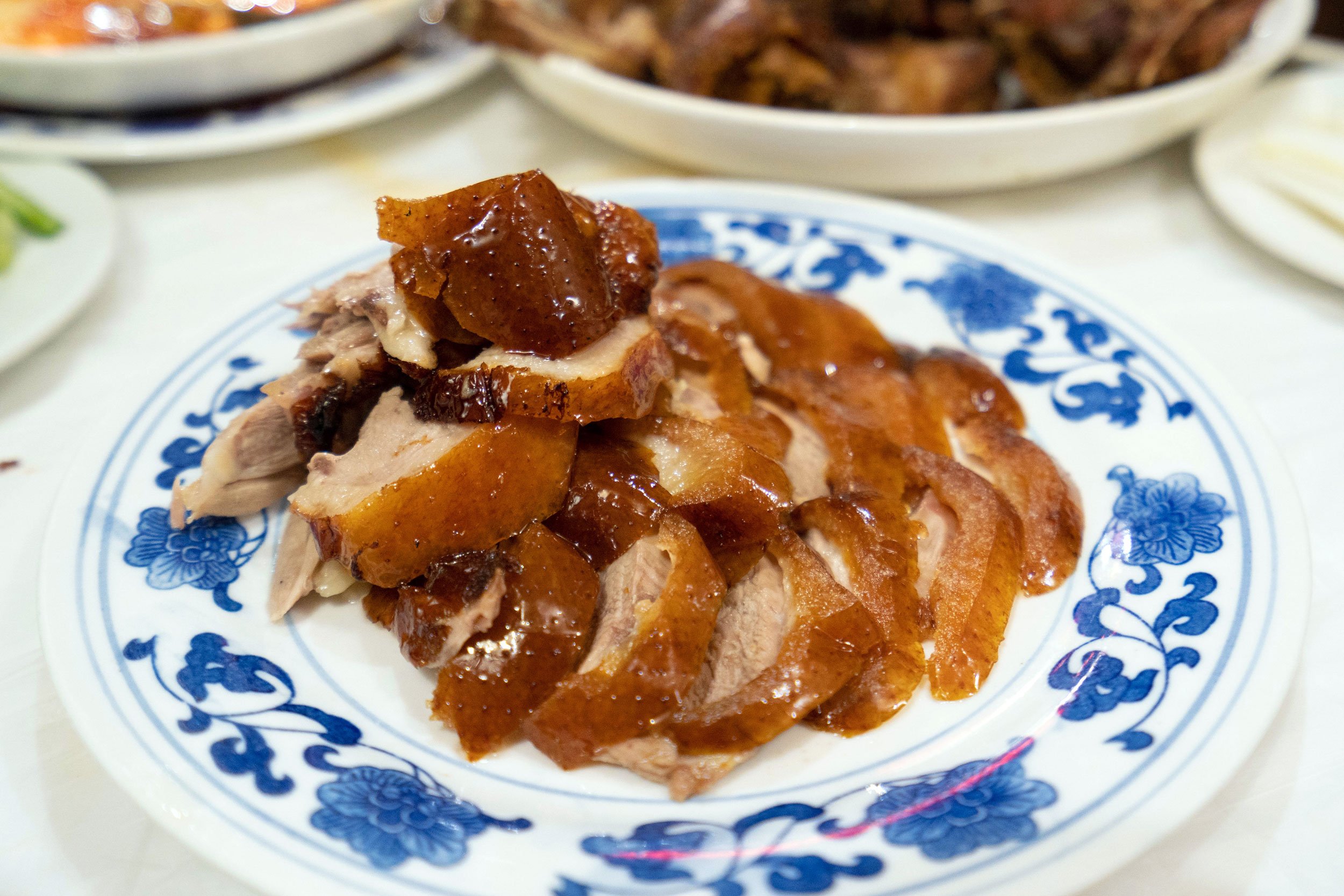
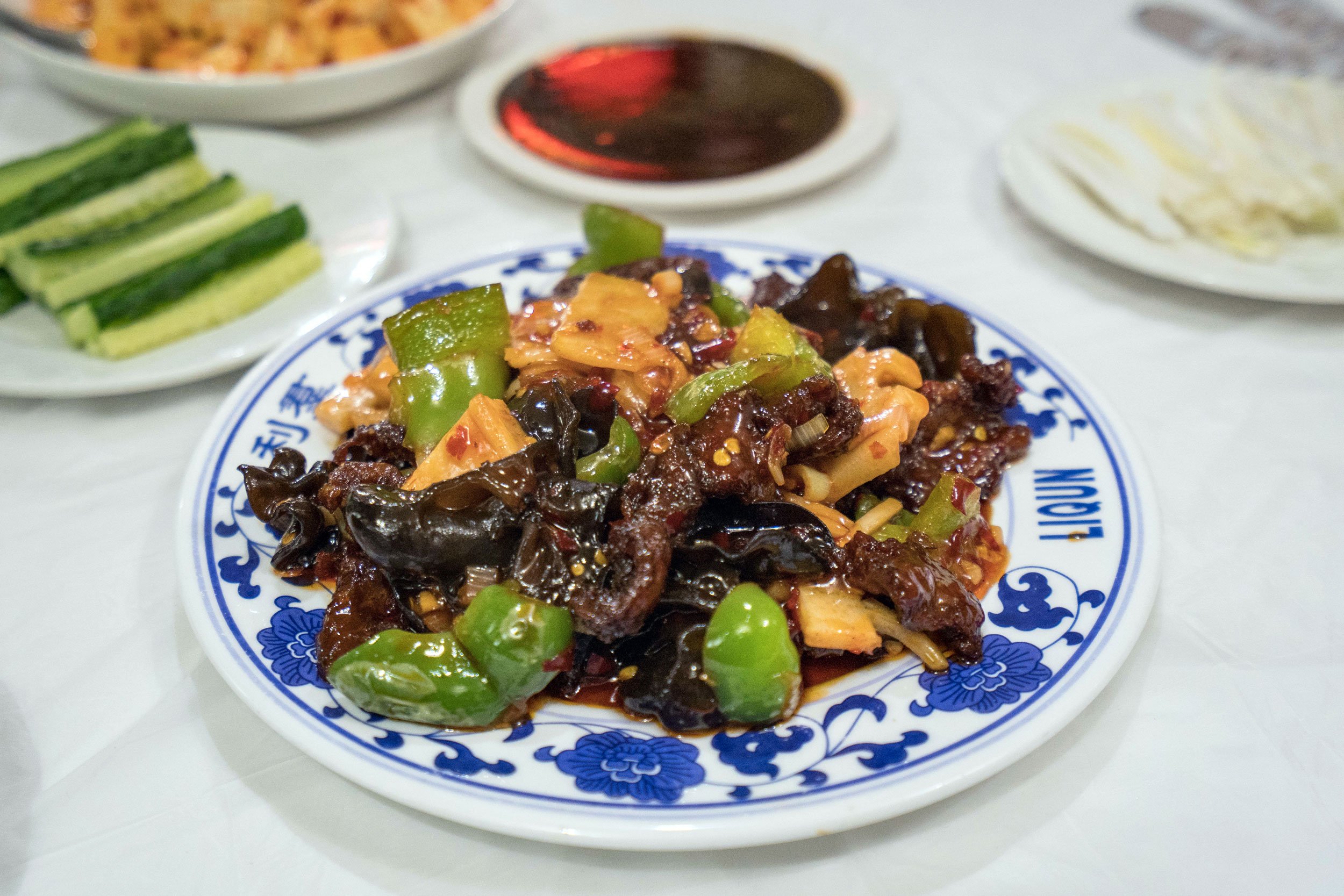
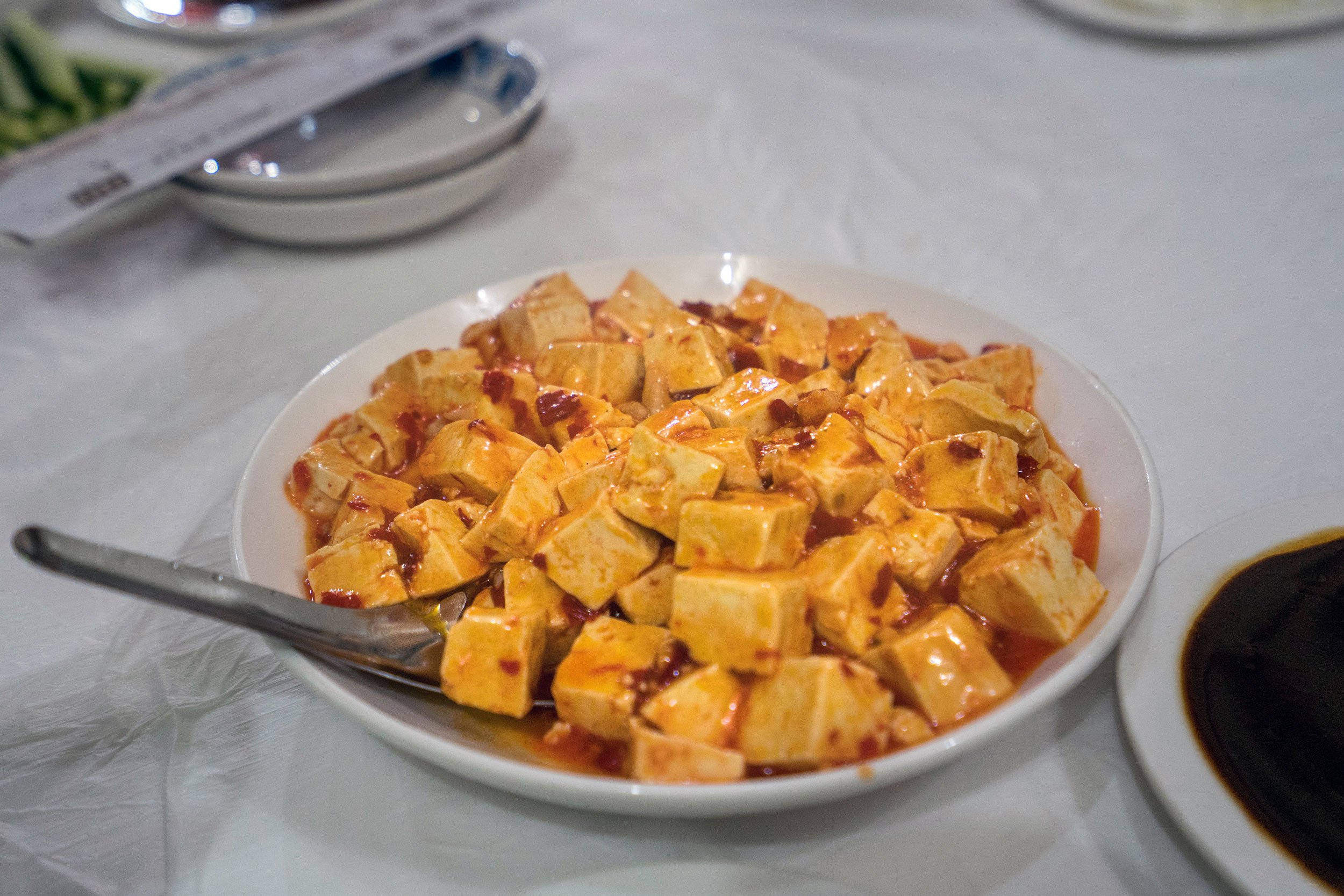


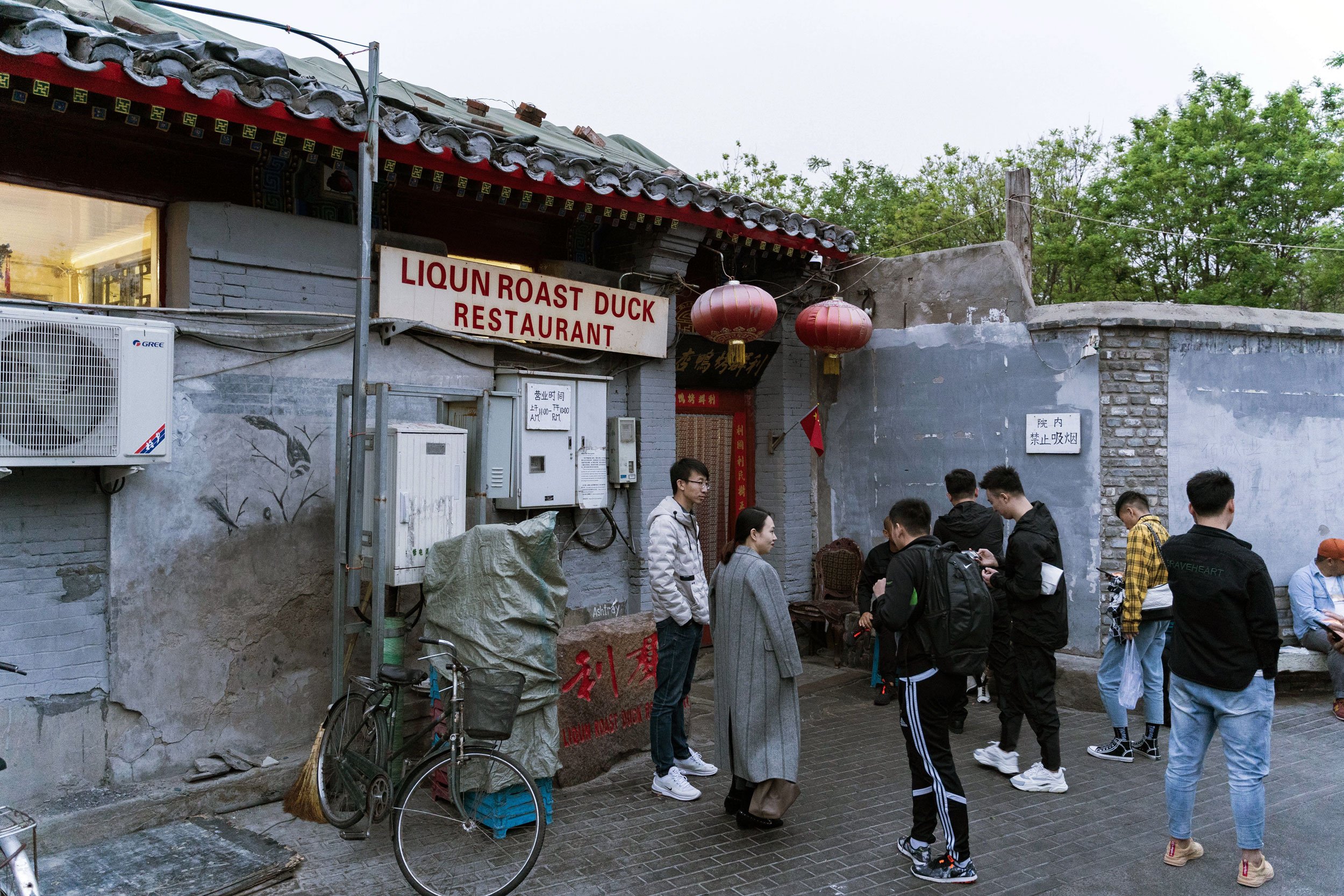
I got hooked on my first trip to Beijing and had to come back again. Liqun is a top 10 Peking Duck restaurant in Beijing according to various Chinese websites, and rightfully so. Founded in 1864 and located in a residential area, it gives a local, authentic type of experience.
In the hall to the dining area, you pass a the chef who is roasting all of the ducks in a brick oven. The smell is amazing.
The duck is flavorful, rich and oily. They have 3 different sets to choose from, we got the one that included fried duck as well. The set is less than USD $50 and feeds 2 very well. We ordered a couple more dishes and overate. Stick with the duck, you can’t go wrong.
Zhong Guo Lan Zhou Niu Rou La Mian
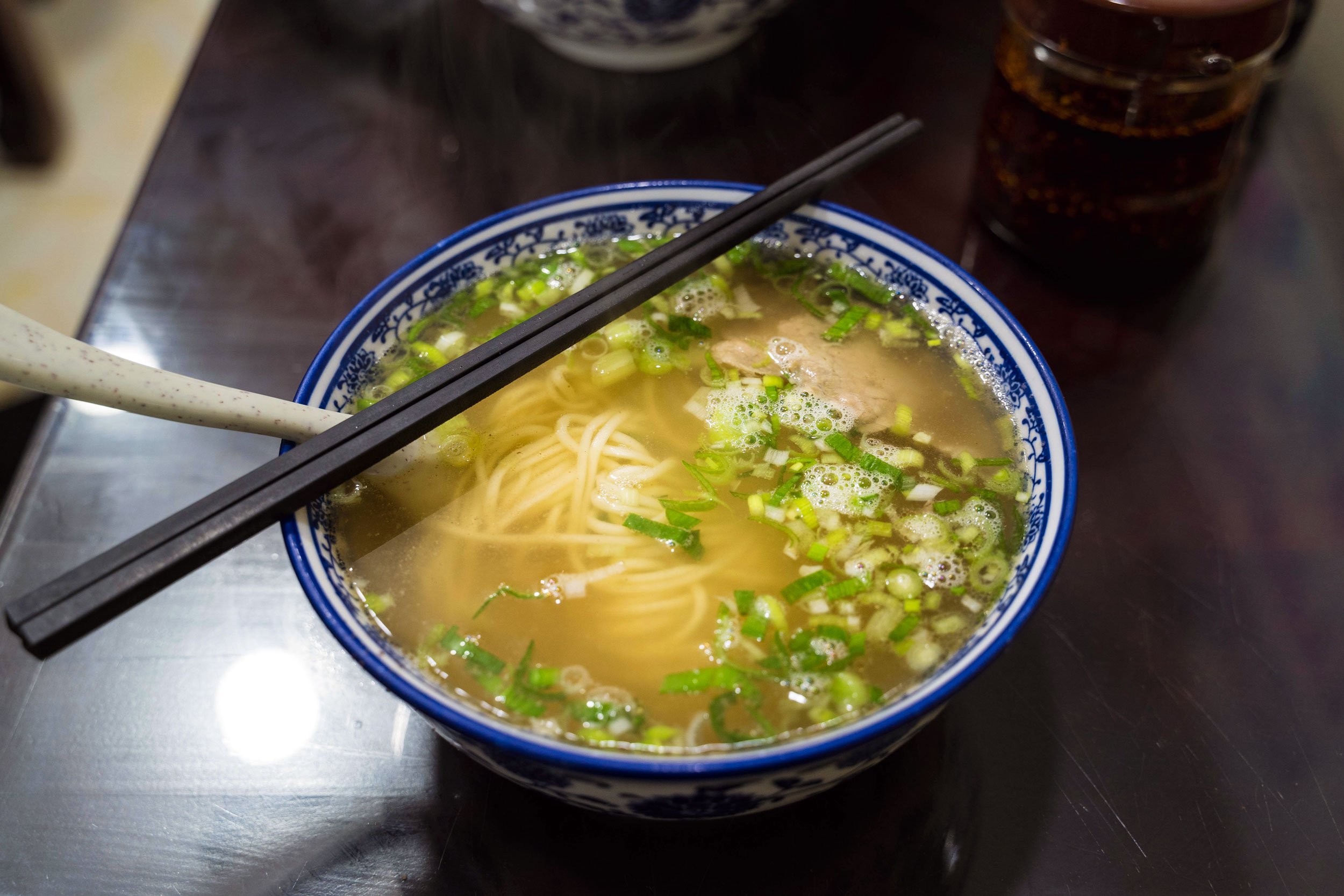
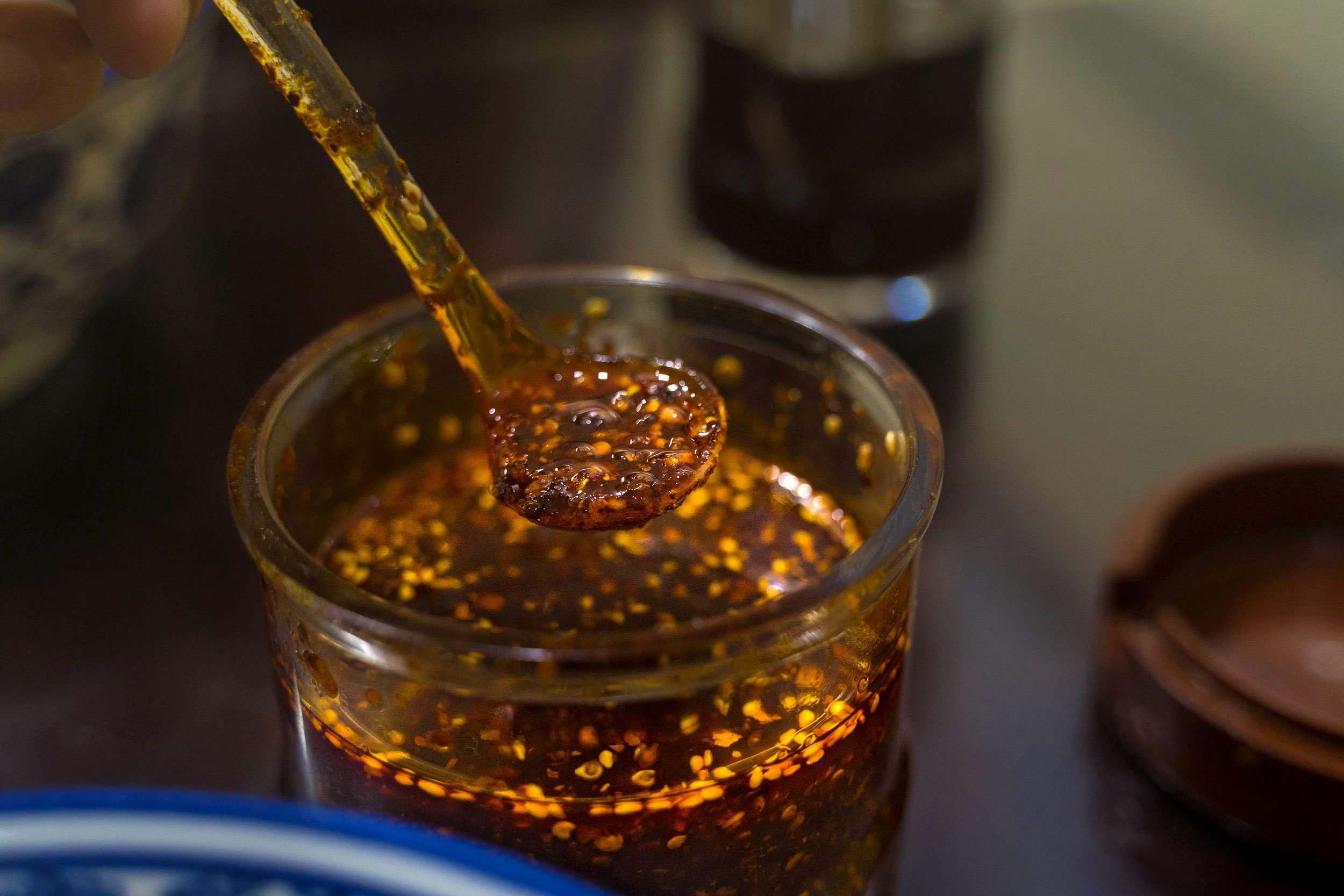

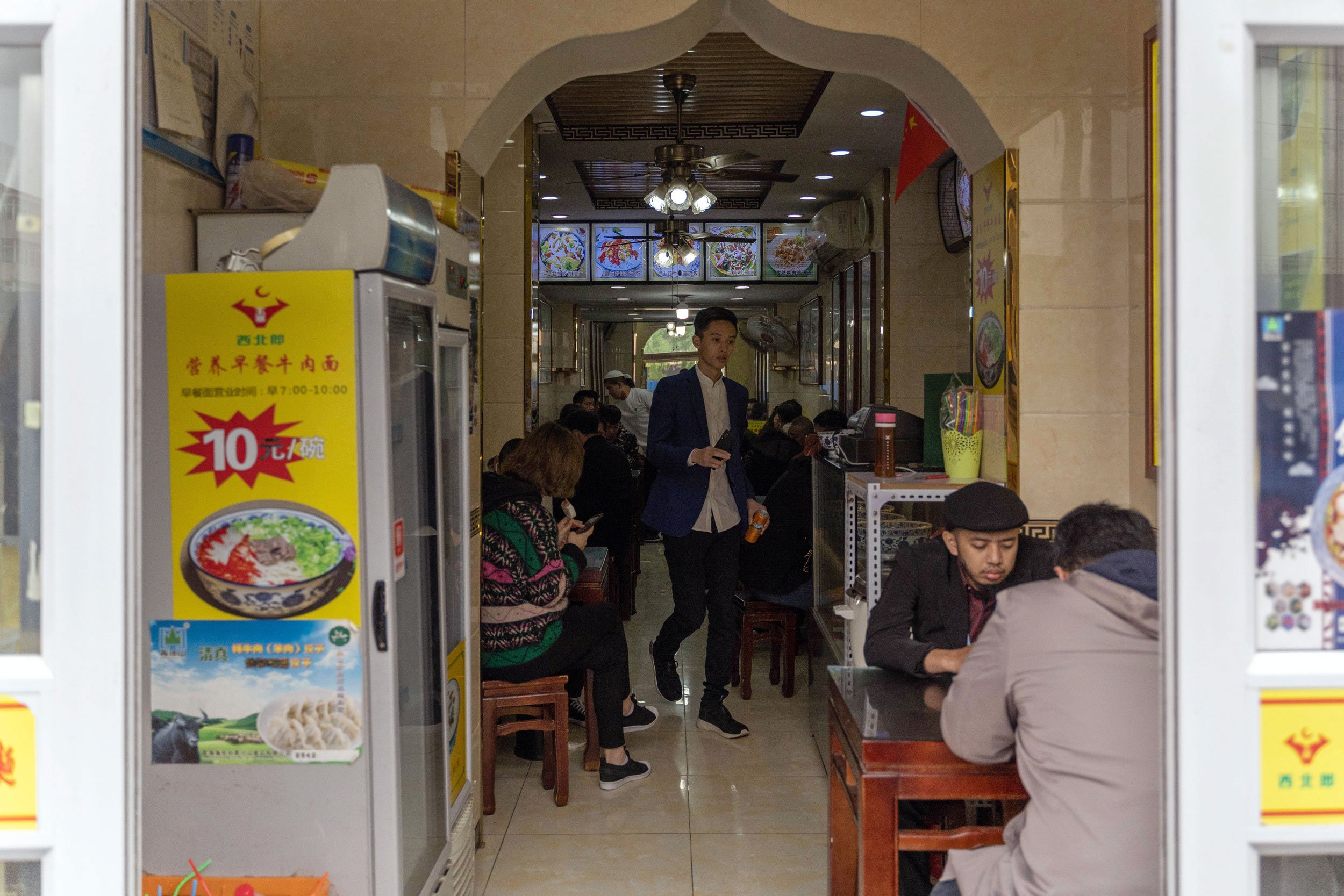



Taste that is several times better than it looks. What was a simple, noodle soup in a simple, average-looking shop, ended up being one my favorite foods in Beijing.
It’s a Halal dish using handmade noodles in a beef broth, topped with beef slices and garnished with scallions and onions. The broth is thin but full of flavor. To add to it, they have a chili oil that is one of the best I’ve ever tasted.
Even better, it’s only a few dollars for a filling bowl.
Du Niang Hotpot
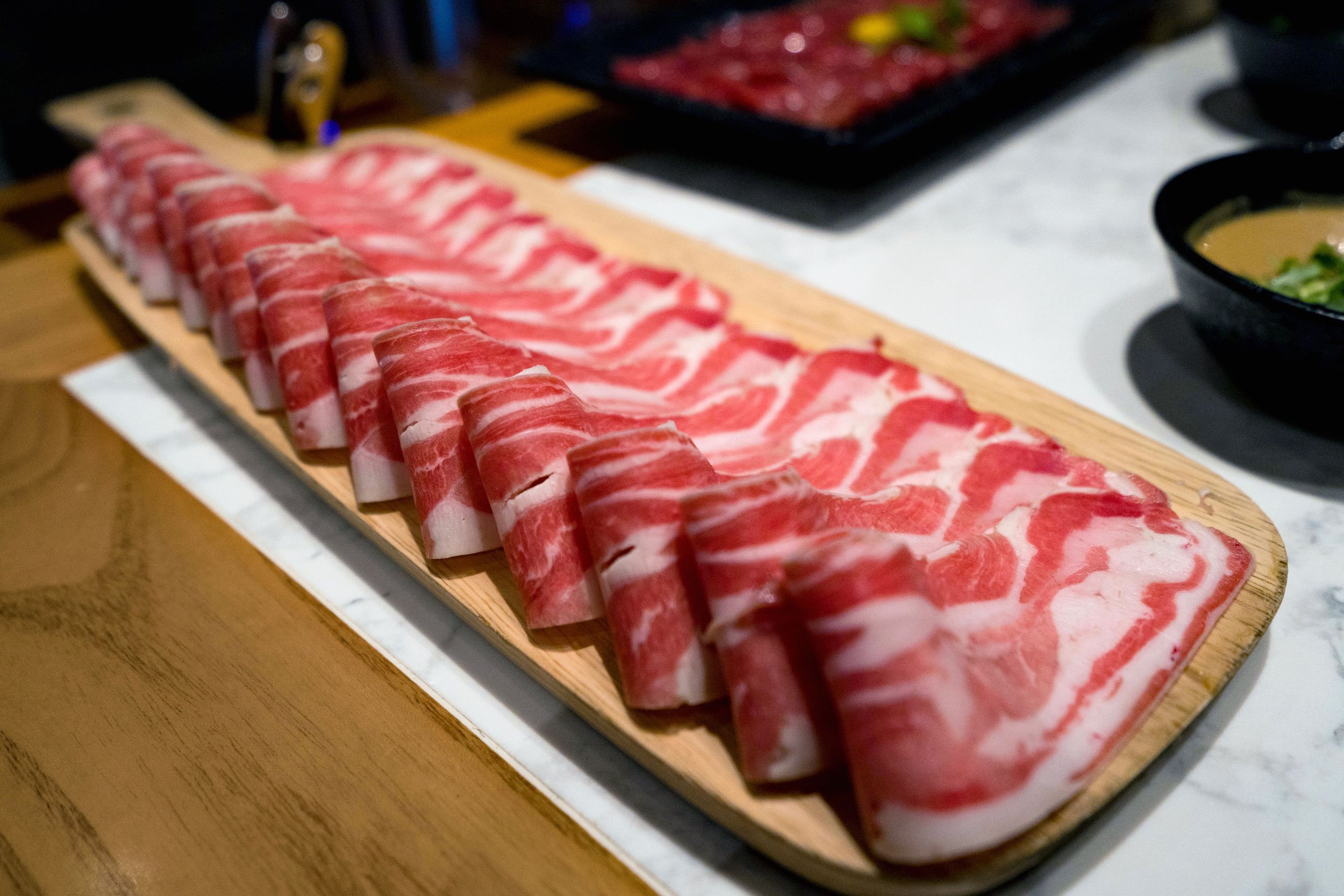
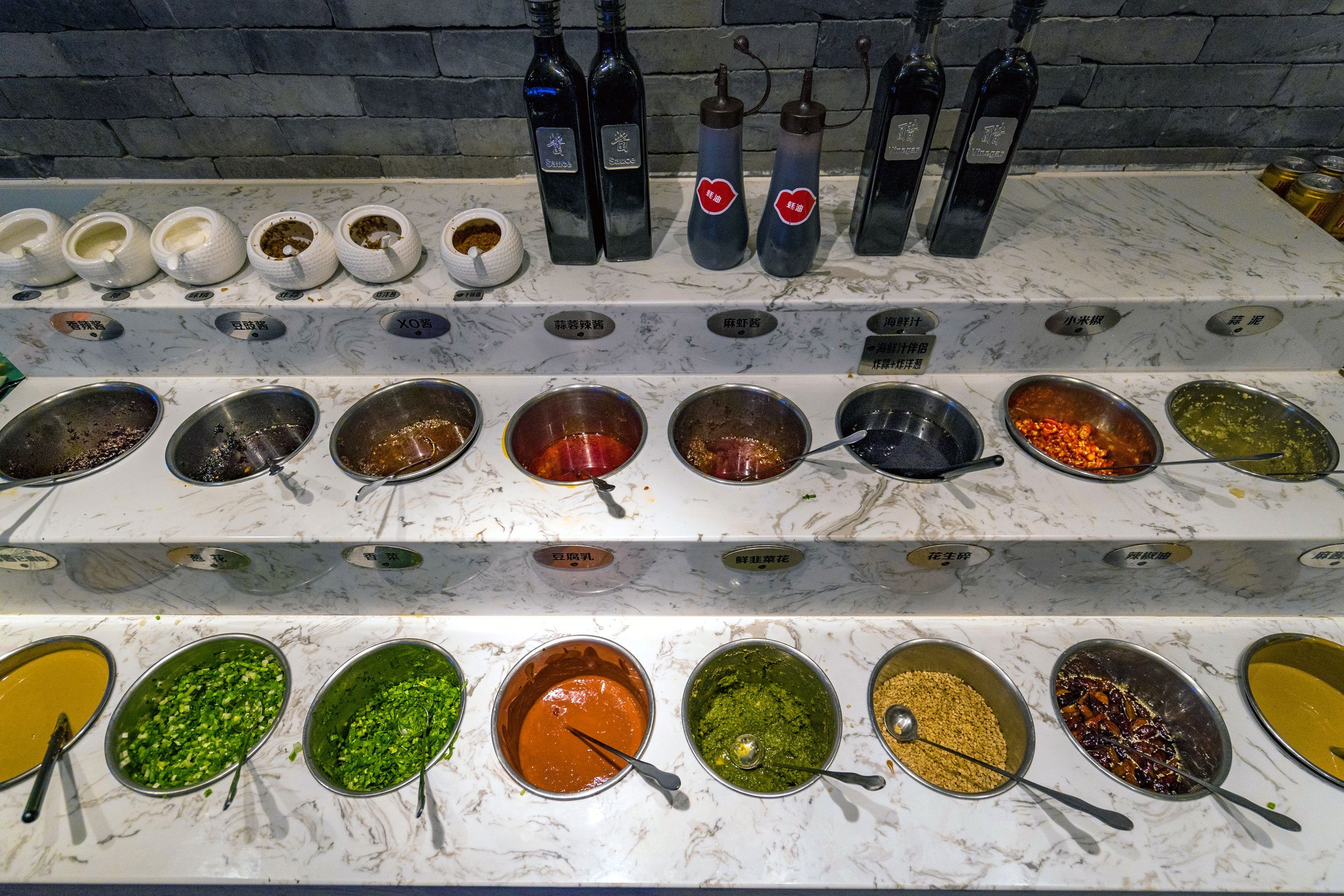
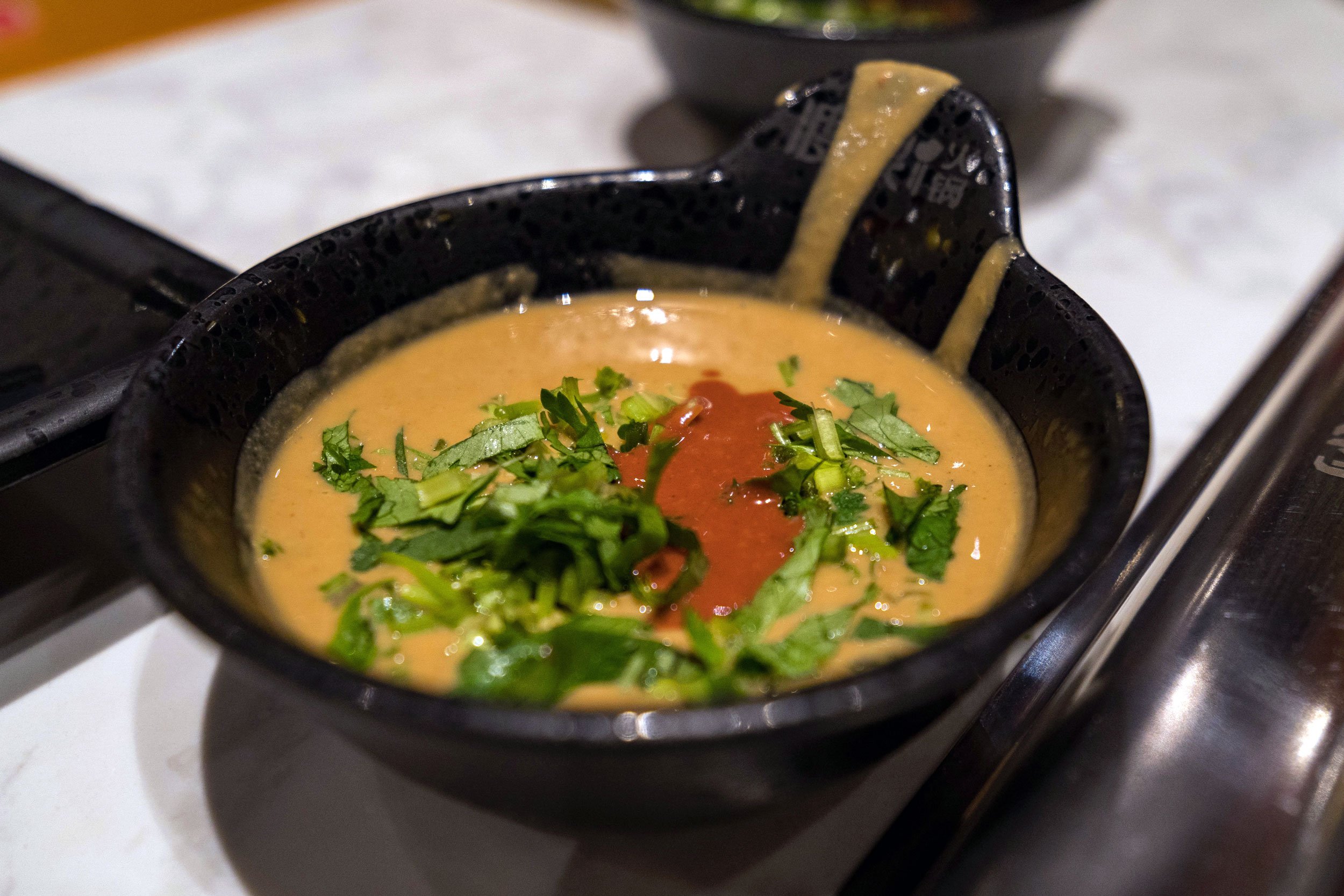
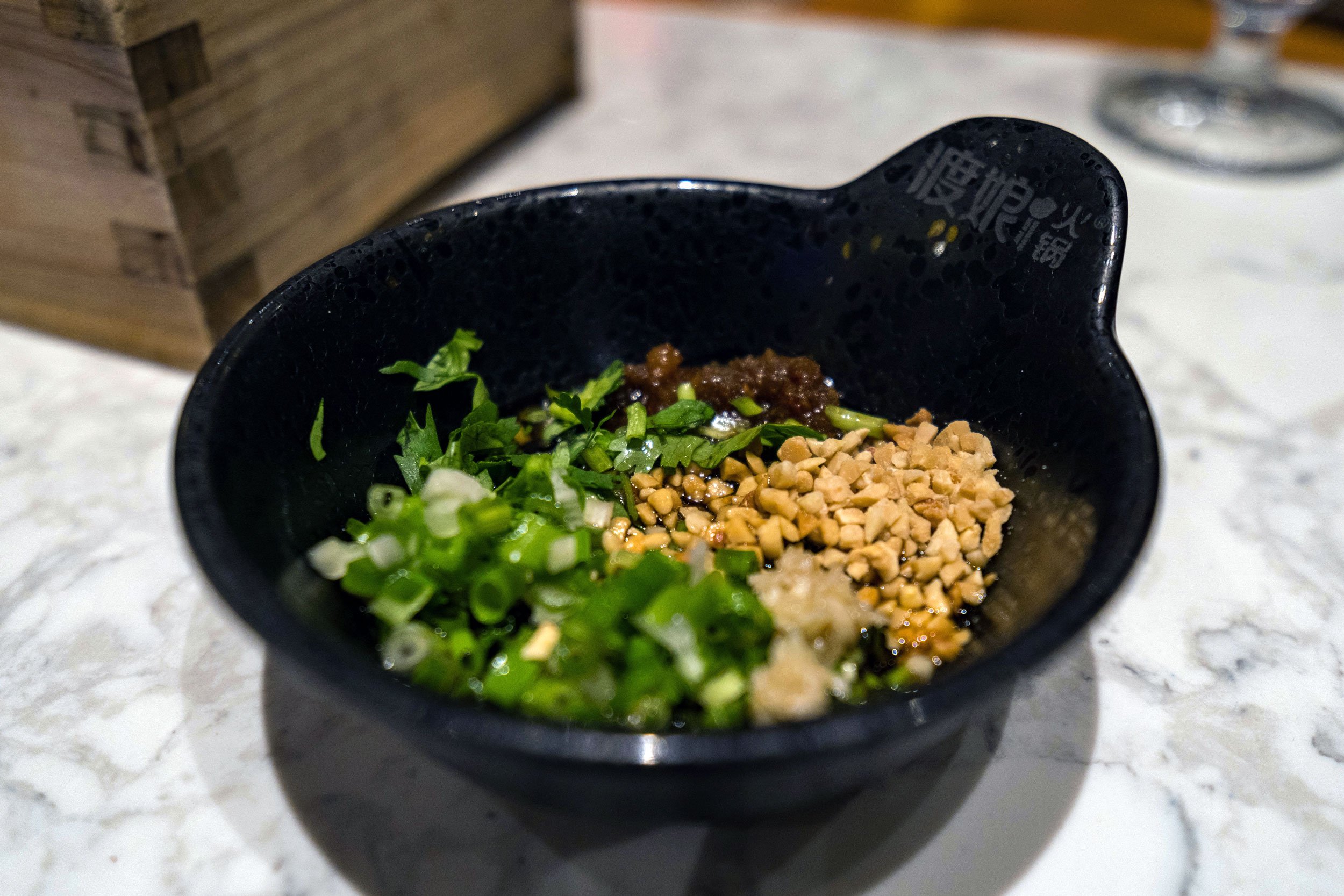

Anyone who likes spicy hot pot will love this place. You can choose two broths to eat from, and we had to get the hot one like all the locals around it. It is, well, extremely spicy.
Du Niang is located at The Place mall in SoHo. Getting seated is a little hard as after you put your name down, you get a number and every number is called in Chinese. You have to keep checking.
It’s worth it though. The hot pot is really flavorful and there’s a bar full of an array of sauces for you to mix and match to make your own. Our waiter also was patient and helpful, and tried to speak English. Delicious spot, just know your clothes will smell after!
KEEP IN TOUCH
MORE TRAVELS:
SHARE:
Seoul, Korea
A first taste of Seoul’s hot spots, historical sights and delicious foods.
Maybe the most familiar-feeling new country I’ve ever visited.
Seoul had been near the top of my “places to go” list for nearly a decade and I finally went for the first time in October 2018.
While it made me feel like I’ve been there before, there still were a few surprises that would’ve been nice to know before.
THINGS TO KNOW
Google Maps isn’t as useful - locations are scarce, often don’t translate from Korean, and don’t contain detailed information
There’s a lot of walking - With limited escalators in train stations and trains being long themselves, there’s more walking to the exits
Many restaurants close early on weekends, like fully closed at 8PM on a Saturday night early
NOTE: Seoul has amazing food. If you’re looking for food recommendations, skip to the bottom or check out my list:
Seoul at sundown - [BUY PRINT]
It was my first time in Korea, so I was surprised that I felt almost as if I had been there before.
Having lived in Japan and the US, being in Seoul felt somewhere in between the two. It’s very much its own country of course, but I never felt lost or like everything was so foreign to me.
Like much of America, the city has wide streets and their cars drive on the right side of the road. It has clean trains, modern lights and buildings along with really local, street-style eateries like Japan. Getting around in English is fine most of the time, and the convenience stores could rival their Japanese counterparts. Even spicy, fried chicken wings with beer is a thing. Not so different at all!
Sungnyemun Gate
We had about 2.5 days and 3 nights, which gave me a nice sample taste of the city. These are the places we visited during that time:
Day 1
MYEONGDONG
The Myeongdong area is geared slightly towards the younger crowd and has a lot of shopping with shops for skincare, trendy fashion brands and even lookalike knockoffs. The abundance of lights and street food vendors make it a lively place until around 11PM.
We actually went to Myeongdong three times during our stay; once for a delicious oxtail soup lunch at Sinseon Seolleongtang (information at the bottom) and the other two times at night. A lot of the street foods looked good, but being so full from all the other good food, I was only able to try a frozen s’more - a torched marshmallow with ice cream inside. Thumbs up.
From Myeongdong, we caught the light blue line and transferred to the orange line at Chungmuro station and went to Gyeongokgung station for the Gyeonggokgung Palace.
GYEONGOKGUNG PALACE
One of the major historical sights in Seoul is the Gyeongokgun Palace, originally built in 1395. It’s now one of the most popular tourist stops and many wear traditional (or the more glittery fake traditional) Korean dresses and walk the area.
The palace was a bit crowded when we went at around 4PM in the afternoon, despite it closing only a little while later at around 5:30PM. The grounds are big, and it would probably have taken at least a couple hours if we really wanted to see everything. We only went around the central are before moving on.
From the palace, we walked over to Bukchon Hanok Village.
BUKCHON HANOK VILLAGE
Probably one of my favorite places in Seoul. It’s a historical neighborhood on a hillside near Gyeongokgun Palace that dates back to about 600 years ago.
You can catch a glimpse of the city’s skyline, including Seoul Tower, from some of the alleys. The walking alleys are lined with tiled walls, and the dark rooftops add contrast to the scenery. It was quite crowded when we went, and everyone had to keep quiet as people still lived there. Historical, yes, but I loved how photogenic it was.
At the bottom of the hill are a bunch of boutiques and places to eat.
From Anguk station, we caught the orange line and transferred to the dark blue line at Jongno 3-ga station, before getting off at Jongno 5-ga for dinner at Jinokwha Halmae Wonjo Darkhanmari (see below). It’s only one station away from the next place we went to, the DDP.
DONGDAEMUN DESIGN PLAZA (DDP)
I could probably stay here all day. The Dongdaemun Design Plaza, or DDP, was designed by Zaha Hadid and it just about transports you to the future. Looking like a landed spaceship in the middle of shopping area Dongdaemun, the entire building almost has no corners and some of its surface tiles light up at night.
The DDP has shops, exhibitions and acts as a park area to hang out. It also has an illuminated LED rose garden that’s quite beautiful at night. The building area is not only gorgeous but is also useful and clearly very well thought out - one of the most impressive sights I saw on my trip. I’d likely find myself here often if I lived in Seoul.
Near Seoul station and Hoehyeon station is Namdaemun market, an open street market area with Korean snacks, clothes, food stalls and more.
We grabbed a yachae hottoek - a vegetable and noodle-filled, pancake snack deep fried in soybean oil - at the famous food cart Namdaemun Yachae Hottoek [MAP] before stopping for some bibimbap in an ally full of bibimbap stalls.
From Hoehyeon station, we caught the light blue line to Chungmuro, then transferred there to the orange line which took us across the river to Apgujeong station.
SINSADONG / APGUJEONG / CHEONGDAM
A neighborhood in the wealthier Gangnam district, this area has a lot of shopping boutiques.
The vibe is a bit different from the northern side of the river as it has more mid to high end fashion shops and upscale cafes. There were apartments by Korea’s major corporations, each with parking lots mostly full of European cars. It was no surprise when we saw a Starbucks Reserve shop here in place of the more common Hollys Coffee that’s around the city.
From this area, we decided to take a taxi to the COEX mall. Taxis are pretty frequent - the orange ones are said to be the most reliable.
COEX
COEX is a combined convention center / exhibition hall / shopping mall. It’s huge, and its underground shopping mall is apparently the world’s largest.
One of the things it’s most known for is its Starfield Library (pictured above), a picturesque atrium area with bookshelves reaching a couple stories high. There’s also a large art installation of PSY’s “Gangnam Style hands” on the street level on its eastern side, right around here [MAP].
https://www.starfield.co.kr [KR]
Catching a taxi again, we flagged one down on the street and caught it to the Lotte World Tower.
LOTTE WORLD TOWER
I’m always looking for a nice view of whatever city I’m in, and Lotte World Tower has one of the best in Seoul.
Lotte is one of the most well known Korean companies as they make everything from chewing gum to burgers. Lotte World is a huge entertainment complex with a theme park and shopping mall, and the Lotte World Tower, the tallest building in Seoul, is right there as well.
The view from the tower is amazing - you can see Seoul in any direction from about 120 floors up until about 10PM. They also have a sky deck, and their elevator is a smooth, one-minute ride that features a 360-degree virtual experience while in it. Impressive.
From Jamsil station next to the Lotte World Tower, we caught the green line back to the hotel before heading out to dinner at Gwangjang Market.
GWANGJANG MARKET
A food stall at Gwangjang market in Seoul that serves san-nakji or “live” octopus.
Another one of the major street food markets in Seoul, Gwangjang Market is known for foods such as yukke (raw beef with raw egg) and san-nakji (“live” octopus). They’re both really good. A lot of people, locals and tourists alike, come here for some street food and soju.
The stall we sat at was run by one of the veterans, a lady operating in a tiny space 3ft by 3ft at best that fit the sink, refrigerator, cutting area, trash - everything. She didn’t speak any English, but her stall was very popular and she was attentive to everyone while being really hospitable. She even decided to feed me my first bites of everything, leaving me no time to question my decision to order what I did.
Seoul was a great trip. There’s so much to see and service was generally pretty good. Growing up in the US, Korean restaurants aren’t known to have the friendliest service, so I was pleasantly surprised at how warm and friendly it was in Seoul.
With English being often understood, a decent amount of western products being sold in stores, and Seoul being a big city but not overcrowded like Tokyo or Hong Kong, I think Seoul makes for a great trip, especially for western tourists who haven’t been to Asia before. And the food… the food is amazing.
I’ll be back!
SINSEON SEOLLEONGTANG
Really good oxtail soup still boiling in the pot. The seolleongtang oxtail soup st this chain was really good, and there’s unlimited kimchee at the table for your taking. Service is quick and efficient. We went around noon for lunch and there was a line - it’s quite popular and has been featured in a Korean drama - but the line moved really quickly and was totally worth it.
JAMAEJIP
Near the Gwangjang Market area is an ally with restaurants featuring yukke - raw beef with raw egg. You mix it together and dip it in a sesame oil sauce. It might take some time to get used to for people who’ve never had it, but it’s definitely worth it. Jamaejip had two locations next to each other and both were full when we went on a weeknight. The wait wasn’t too bad and it was a good time joining the locals for some yukke and soju.
JINOKWHA HALMAE WONJO DARKHANMARI


This restaurant only serves one dish: Chicken hot pot. They put a pot on your table’s burner and your chicken and vegetable Star to cook. It’s your job to mix your dipping sauce and order extras like tteokbokki if you want. While it’s so simple, it’s so good. There was a large crowd waiting to be seated outside, but with 3 floors of tables, the wait wasn’t that long at all. You could go to the neighboring restaurants serving the same thing, but you can’t lose with this place.
BHC


Fried chicken and beer is a thing in Korea. I didn’t expect I’d be having something like this as a part of my Korean food experience, but I did, and wow, it was really good. There’s so much flavor in each bite, especially their spicy ones. People eat on the outside tables and drink, but we took out. Either way, delicious and recommended.
GALLERY SAI - BY CREATIVE ART GROUP SAI





A coffee shop in a traditional Korean house. We randomly stumbled upon Gallery SAI coming down from the Bukchon Hanok village and were pleasantly surprised. It’s in a converted old house that blends in with much of the area. You take your shoes off and find a table, some of which are on the floor or in a room, and have tea or coffee. A little more costly than a typical coffee shop, but well worth it for the experience.
KEEP IN TOUCH:
MORe TRAVELS:
SHARE:
Hong Kong
Maybe the most photogenic city in the world, Hong Kong is also a favorite of mine.
Hong Kong Central skyline at sundown - [BUY PRINT]
Hong Kong just might be the most photogenic city I've been to, and it's certainly one of my favorites.
From its condensed skyline of modern skyscrapers and sky bars giving panoramic neon views to the rusted cart pushers, outdoor food markets and alley-side eateries below them, there was never a dull moment in this buzzing city.
A taxi under neon signs around Jordan. - [BUY PRINT]
On my first visit back in 2009, I had one thought in my mind: The Fifth Element. The city just had that vibe, especially the scene when the Chinese food vendor flies his old school boat back into the 23rd century cityscape.
Lan Kwai Fong (LKF) is fun for bars, clubs, drinks on the street and watching street performances.
Some notable sightseeing spots that I've been to are:
Tian Tan Buddha - Riding gondolas on a windy day over the Tung Chung Bay and mountaintops leading up to it didn't work well for my fear of heights, but seeing the Buddha up close and some kung fu performances below were amazing.
The Peak - It probably has the most famous view of Hong Kong as it gives a gorgeous, panoramic view of the city. Catching the tram from the bottom is pretty neat. I was told by resident Jess that heading down Lugard Road gives an even better view, so I'll have to do that next time.
Temple Street night market - A busy night market full of anything and everything. There's some delicious food spots in the area, some with outdoor seating. I particularly loved the clams in black bean sauce at a couple places.
Aqua - This slightly upscale bar high above Tsim Sha Tsui has an amazing view of Hong Kong to stare out and be in awe at.
A Symphony of Lights - How impressive does a citywide light show sound? Hong Kong's skyscrapers put one on every night at 8PM, with music and everything. We watched it from the Avenue of Stars [map].
I ended up returning to Hong Kong on business twice in 2017. My team and I designed and put on an exhibit at Hong Kong's PMQ for a client. I had never heard of this place before but it's actually a worth checking out, especially for those who are into art and boutique fashion.
PMQ is an old police quarters that was converted into an exhibit space for creators of all types. It's basically a mall full of pop-up type of shops displaying and selling work. Even Jessica Alba has stopped by.
Through this work and with a little help from Instagram, I was able to get to know some cool people living in Hong Kong. We all happened to share the hobby of photography, and some were even kind enough to take my colleague and I out one night to show us some great photo spots around Jordan station.
They take incredible photos: Jess (@jesso), Edward (@edwardkb), Jeremy (@rambler15), Candy (@flosslai), Varun (@vnthota), Susan (@shalalasusan) and Roger (@roger89).
They each have their own unique styles, and it's interesting to see different takes and perspectives on Hong Kong and life there. Talented people with impressive accounts, I recommend checking them out.
Temple Street night market, shot from a corner rooftop at Temple St and Jordan Rd
A bus driver waiting near the Temple Street night market
A taxi drives up a hill near the SoHo area
Hong Kong I learned, like most cities, has its fair share of struggles. One of the bigger, long term ones is political as it surrounds their relationship with China. I found that residents seem divided on the issue.
Day-to-day, visible changes can be seen as well. One of these impacts any traveler who likes photography like me, which is the taking down of the city’s iconic neon signs. The dismantling will forever change Hong Kong's cityscape, and it is apparently happening at a rapid pace.
Neon signs in the Jordan area // Apparently these signs were already taken down
Hong Kong is diverse as a city. To me, it's a blend of big city Tokyo, NYC grunge and a slight, exotic Southeast Asia vibe overlaid with modernity. It’s also extremely international - both China’s and the UK’s cultural influences are strongly felt, and there's people from all over the world on every street.
Carrying a camera at all times was a must for me. There's so much to see and snap down low and up high, and the layers of the city produces some amazing lights and shadows, as well as unique angles to shoot from.
Shadows at a Hong Kong Culture Centre corridor - [BUY PRINT]
Hong Kong also has a lot of good food. During my stay, there was only one place that I didn't care for. The rest, delicious. I haven't even touched the surface yet, but here's a few places worth another visit:
Yum Cha
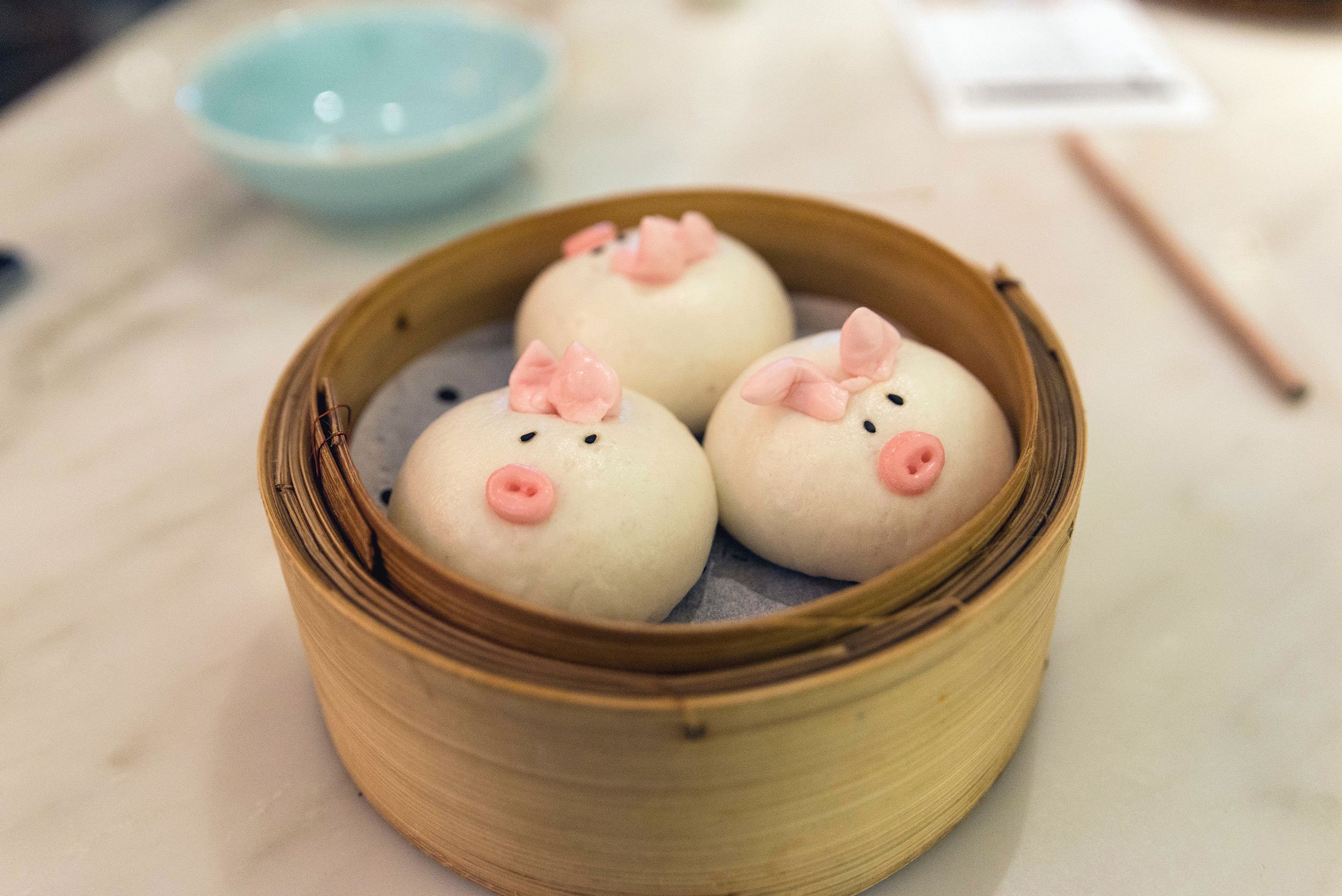
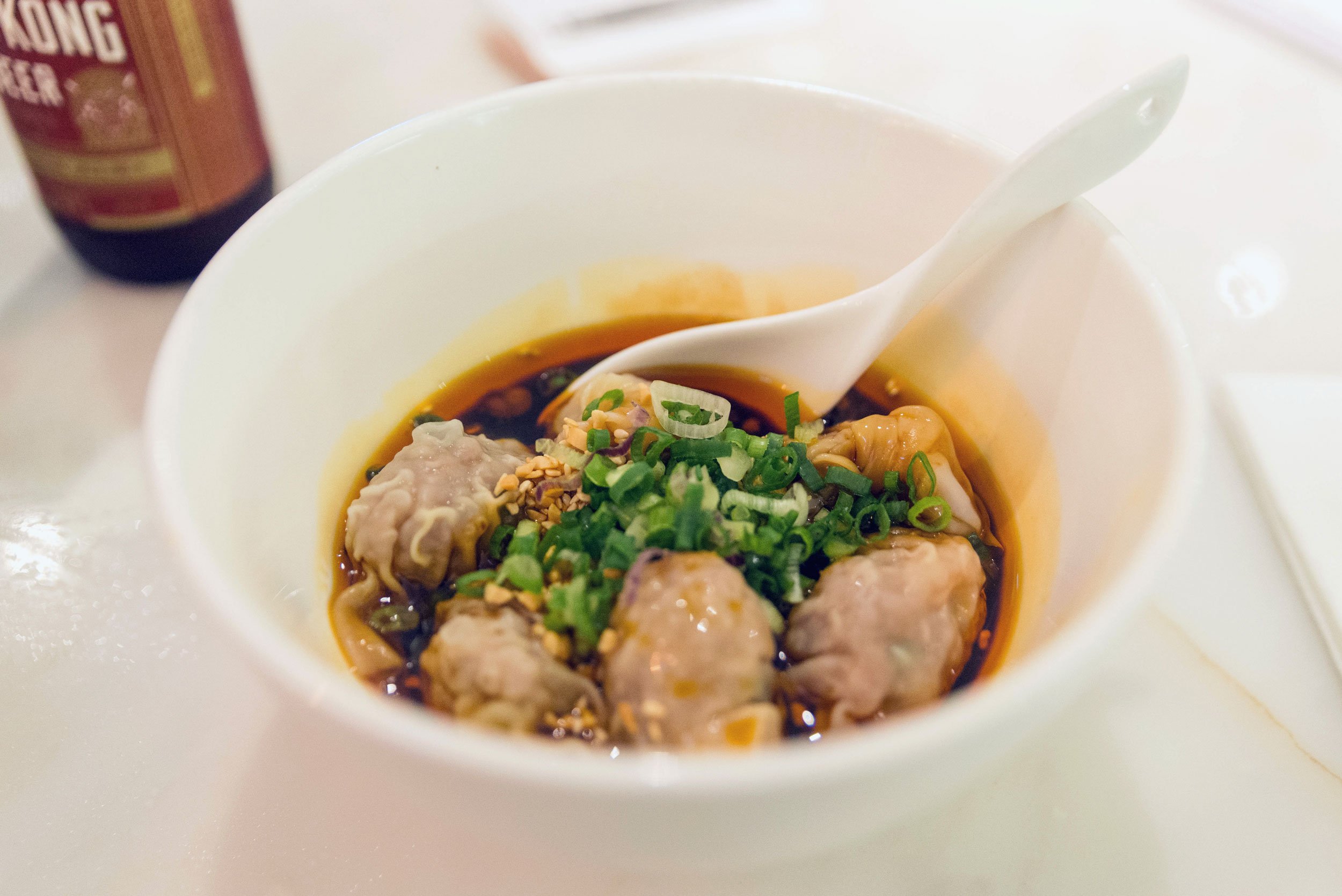
A restaurant that puts a modern twist on traditional dishes like dim sum. They have a couple of locations, I went to the one in Central. They're best known for their cute BBQ Piggy Buns, but make sure to order others from their à la carte menu as it's got some choices full of flavor.
Another place that I thought was similar was Social Place, between Central and Sheung Wan.
Leaf Dessert
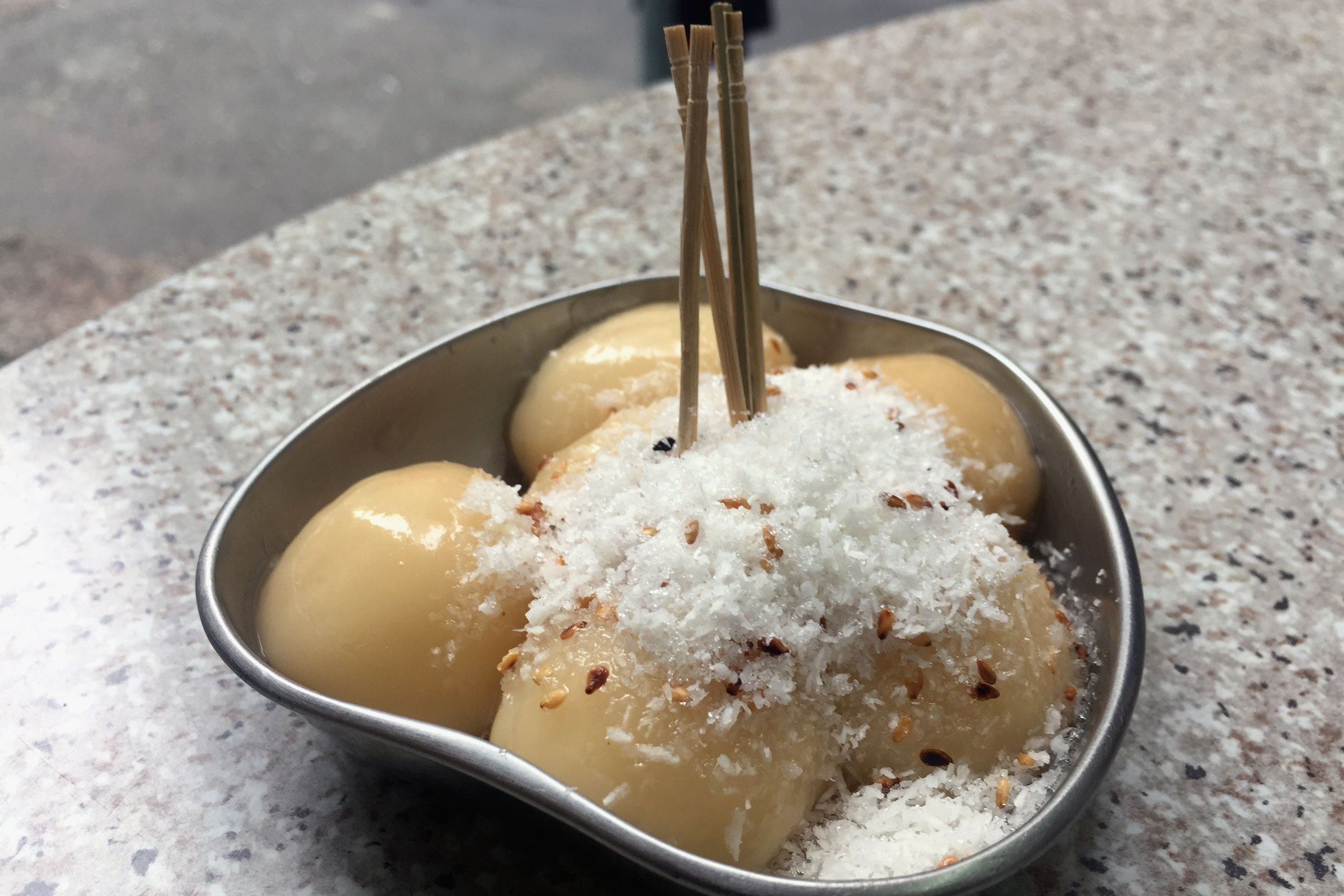
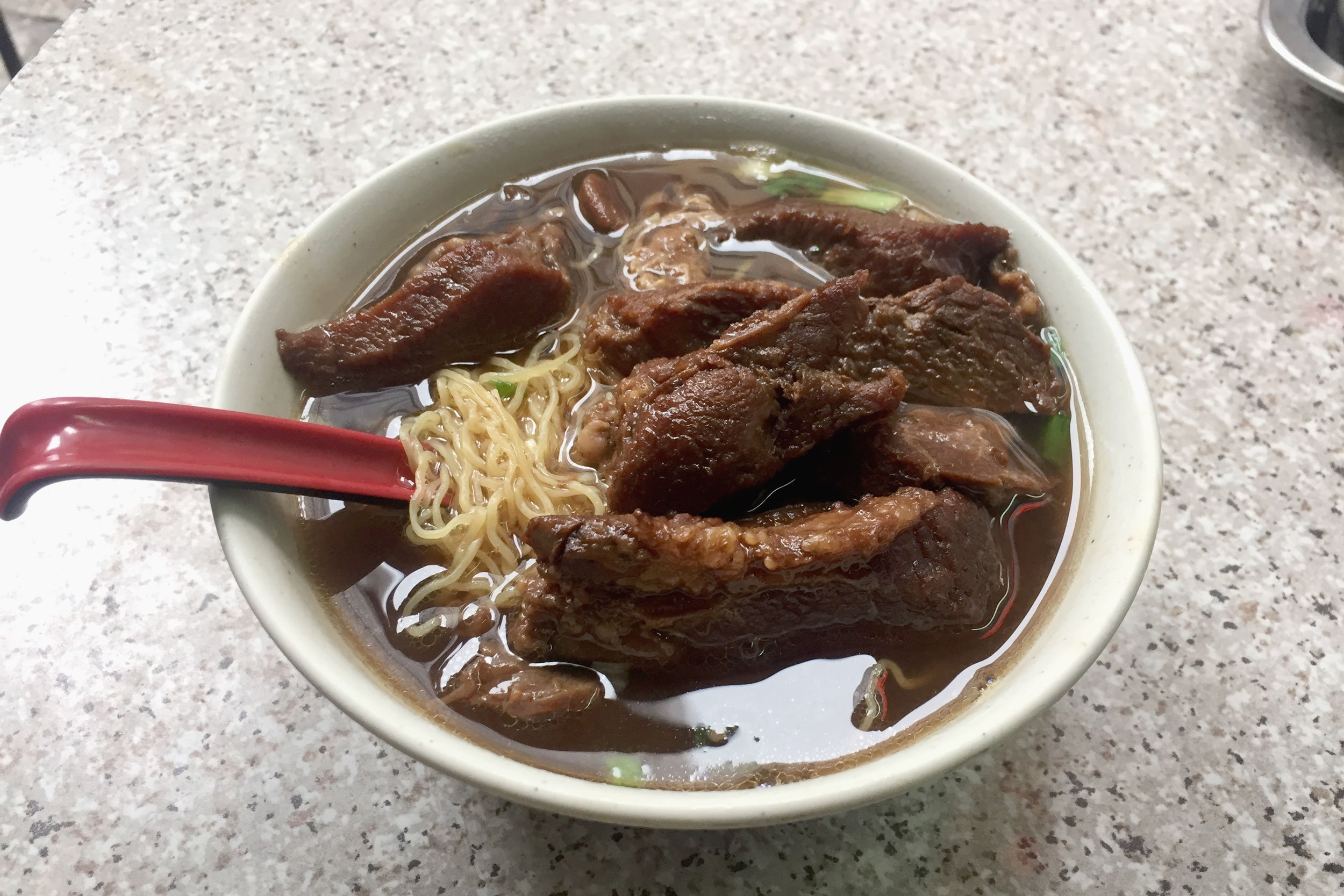
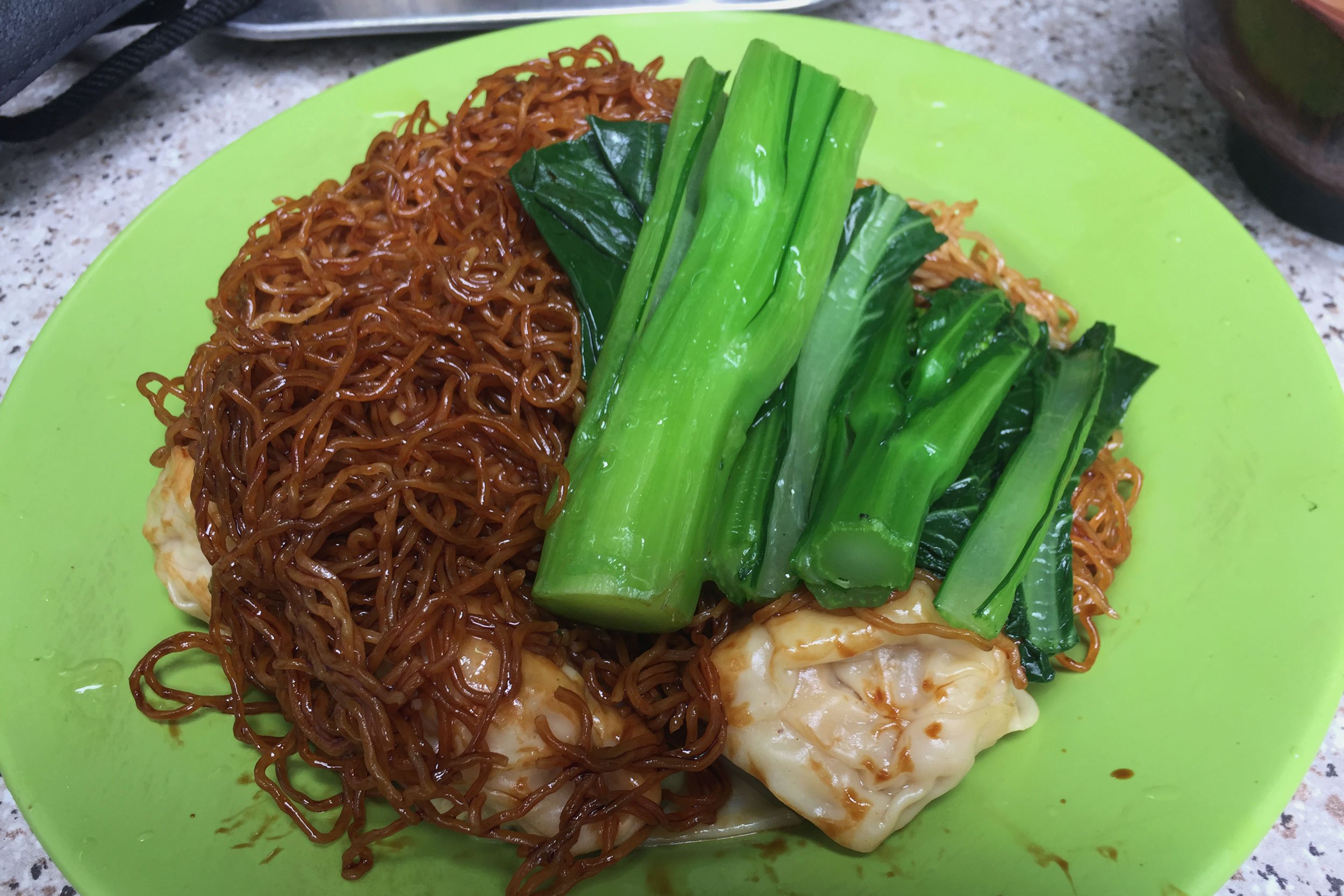
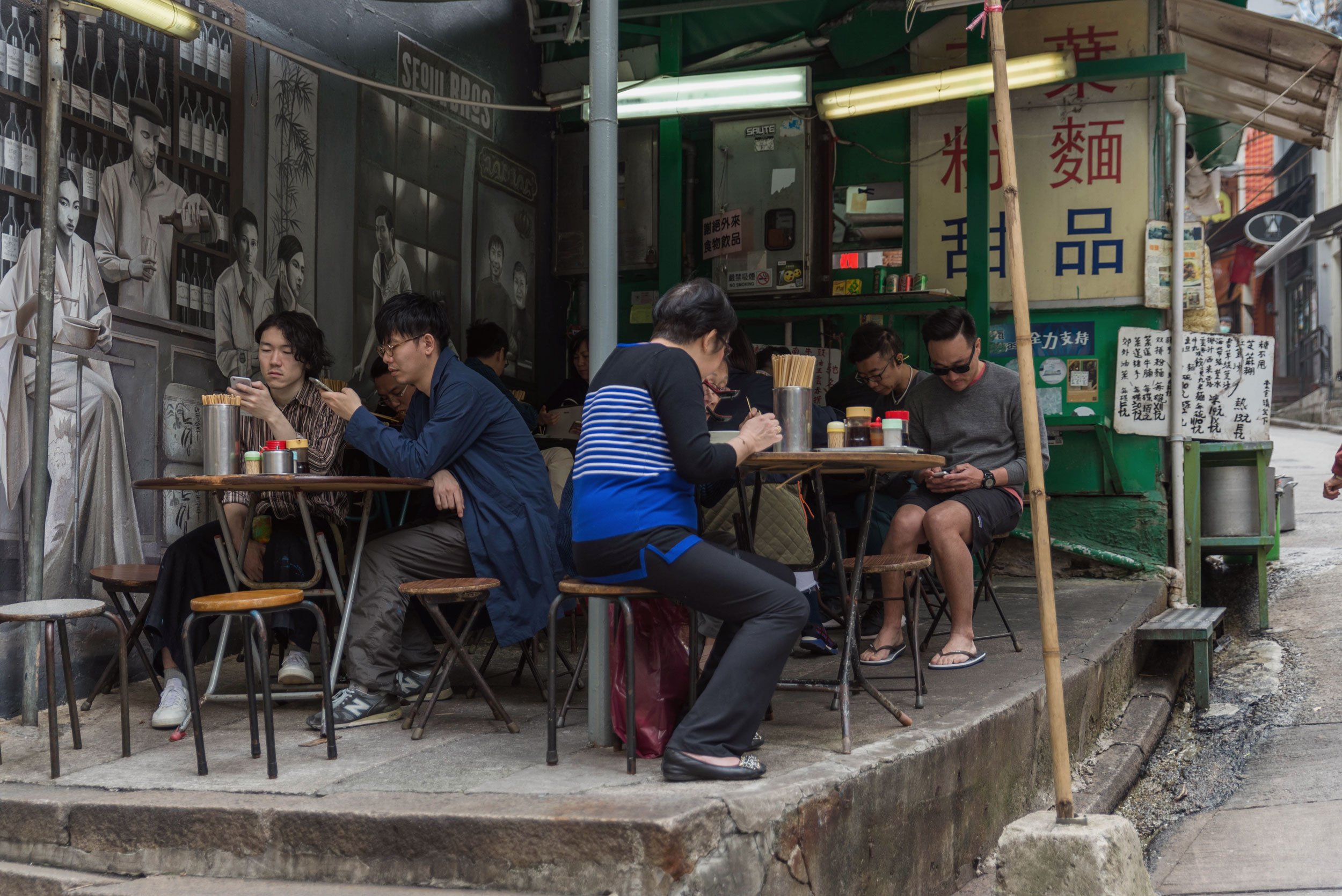
A small, very local, outdoor eatery on a slanted space located on a street corner. As you could guess from their name, their desserts are their specialty, and their rice balls with sugar coconut sesame were delicious. They're warm, which caught me by surprise, but it has a familiar texture and taste if you've had Japanese mochi. Their food was just as simple yet tasty, like their stewed beef noodles. Worth a stop, especially if you're in the SoHo area.
Ding Dim 1968

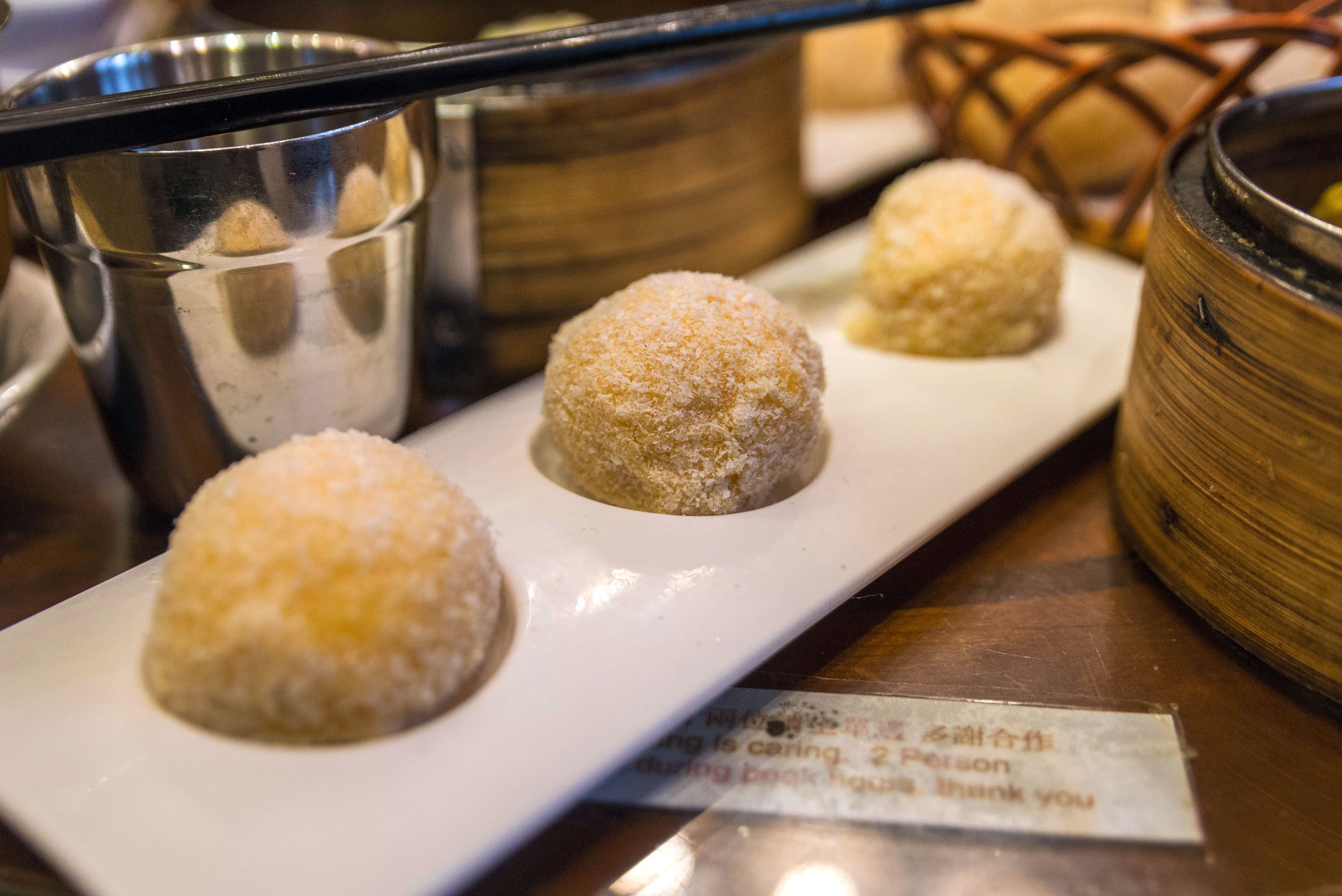
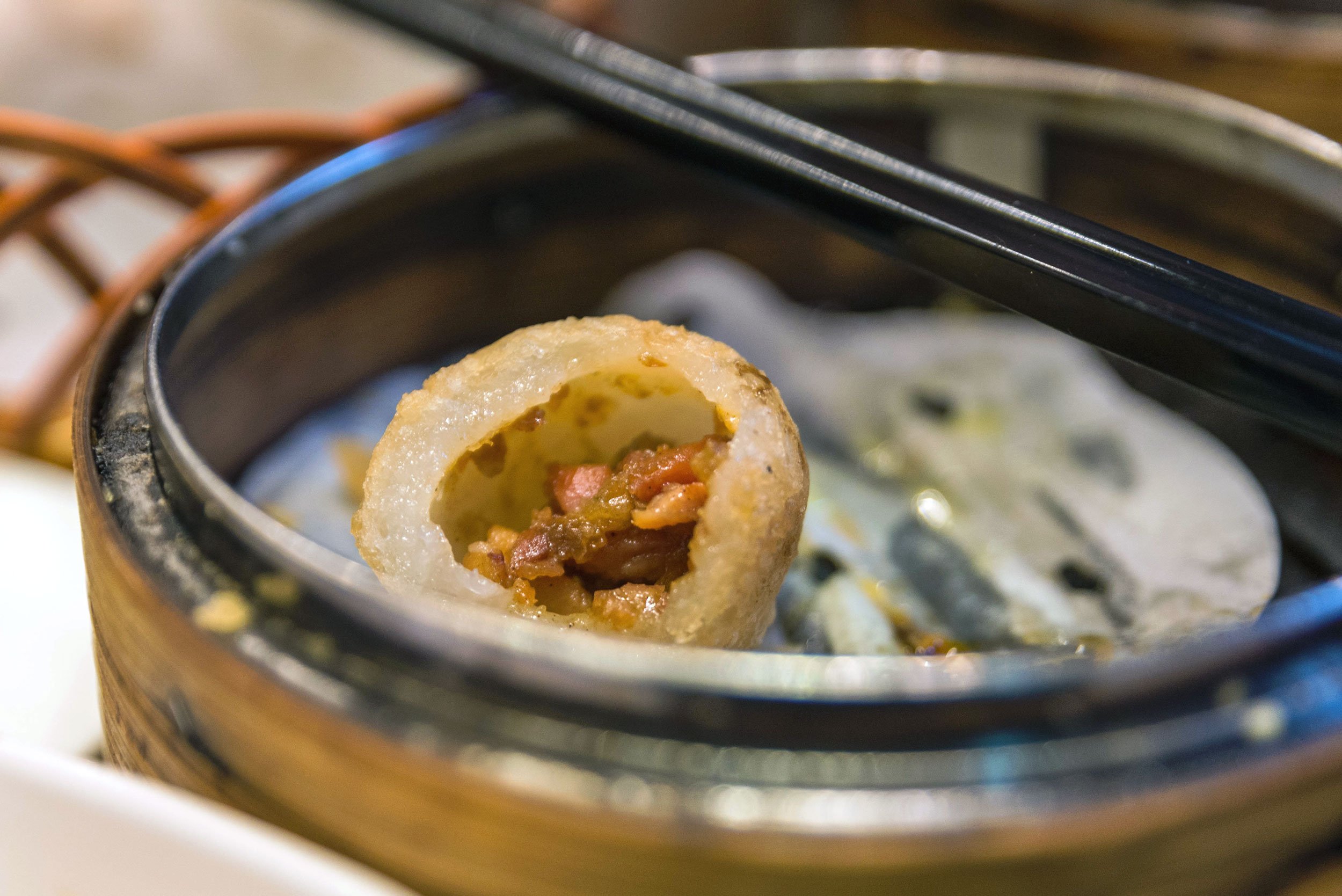
Delicious dim sum, unless you're also the type to order too much because everything looks good and end up overeating. That was us. Everything is good, but standouts were the crab roe shumai (first photo) and mango mochi (second photo).
Sun Kee
It's like a perfect good college student's meal. This place was recommended to me by @geekyrizki on Instagram and is a nice little fast food spot. There's a couple locations, I went to the one in Wan Chai. It's as simple as can be: Instant ramen noodles, sliced grilled pork, a sunny side up egg with cheese sauce over everything. Paired with their Hong Kong milk tea, it's a nice, quick, cheap, local meal to fill up on.
Keep in touch:
More travels
Share:
Bali: Nau Villas - An Immersive Ubud Stay
My review on Nau Villas - A relaxing Ubud getaway that seamlessly and luxuriously immerses you in the surrounding nature
Have you ever arrived at a hotel and thought, do I really need to leave and sightsee?
Actually, I'll start from the beginning. Have you ever been on a trip and as you were headed to your hotel wondered, where the hell am I?
I was on a trip to Bali, staying in Seminyak and Ubud, and those were my first two thoughts when I arrived at Nau Villas.
We caught a taxi up from Seminyak, and after getting lost hitting a collapsed bridge, we made a turn onto an old road that was more broken rocks than road. With the car's shocks being severely tested, I looked around, saw only rice fields and thought, where are we?!
Any and all worries disappeared after checking in.
After the lime-mint slush welcome drink and the golf cart ride down to our villa, I knew that this would be an amazing stay.
Here are 5 reasons it was:
1. Beautiful, spacious rooms
The rooms are decorated nicely - they feel luxurious yet authentic. The high ceiling made it feel even more spacious as did the big window doors that open out to the private pool deck area.
There's a Bang & Olufsen speaker if you want music as well as a nicely sized flatscreen TV.
We had room #3 (there are 10 total) which was towards the higher end of the road closer to the reception area. Even though there were rooms above and below, it almost felt like we were all alone at the resort. It's a perfect environment to kick back and relax, especially on the comfy king-sized bed.
2. Outdoor bathroom
I'll admit, the outdoor bathroom took some getting used to. There aren't many cases where using the toilet, taking a shower or soaking in a bath is a "public" experience.
Once I realized that the villas are thoughtfully designed for privacy even when there are no doors or walls, I became ok being in nature when nature called.
Being able to look up at the star-filled night sky while taking a shower actually helped perfect the Bali experience. After all, it doesn't make sense to stay in the middle of rice fields only to use a small, enclosed bathroom, right?
3. Private pool area
The private pool area was amazing. The water itself was a little too cold to be honest, but cooling off in your own pool on a hot Bali day is nothing to complain about.
With the table for two set up on the deck, we used this area to have breakfast as well as watch sunsets. The area is open with no walls, and because the pathway is below the deck, there was never anyone getting in between us and the surrounding nature.
4. Great food service
Nau Villas basically had an all-you-can-eat breakfast that they'd bring to our room and set up for us so that we could eat poolside.
There were several categories to choose from for breakfast, and you can choose something from each or just order one thing.
Drinks: 5 different coffees, 6 teas, hot chocolate and milk
Tropical fresh fruit salad
Fresh fruit juice: Watermelon, H. melon, papaya, pineapple, orange
Healthy juice: Carrot and Ginger on the Green, Spicy Ginger Pineapple, The Beetroot Sun, The Minty Cucumber
Cheese platter
Cereal
Pastries: Pancakes, waffles, toast, croissant, danish, French toast
Yogurt
Smoothie bowls: Dragon Bowl (mango, banana, dragonfruit, mixed berries, coconut milk), Be Strong (mango, banana, pineapple, coconut milk), Coconut Breeze (red dragonfruit, pineapple, banana, coconut water)
Egg dishes: 7 different styles of eggs, omelets and a condiment on the side
Indonesian dishes, breakfast salad bowl, Balinese healthy breakfast options of Loloh or Jamu Kunyit
My personal favorites were the eggs benedict, Vietnamese coffee and all of the smoothie bowls.
5. Luxurious service
What's a resort getaway without good service, right?
Despite only opening in December 2017, 5 months before our stay, the staff operated like veterans from the time Esty, one of the receptionists, helped us with our reservation.
They were all extremely accommodating, helpful and patient. They also seemed to genuinely care about the resort - something that was obvious in the quality of service that they gave.
Convenient transportation services are available, that is, in case you want to leave.
There's a free shuttle a few times a day that transports guests to and from Ubud town, about 30 minutes away.
For about 600,000-900,000 IDR ($42-63 USD), Nau Villas also provides private, custom tours. Our driver, Kadek, who had traveled the world while previously working on a cruise ship, took us around for 2 days in which I wrote about, and explained a lot about the places we were at and about some of the local culture.
A table near the reception area available for meals or just to relax
Nau Villas was very carefully and impressively thought through.
Everything from the terraced villas to the villa design itself to the secluded dining tables makes you feel as if you are the only ones at the entire resort.
They provide an experience that seamlessly immerses you in the island's nature at almost every moment, never once feeling like you're not on a relaxing, spa-like getaway.
If you're reading this and are planning to stay in the Ubud area, consider Nau Villas. It's a fantastic deal to say the least. I had a great experience and would love to stay there again sometime.
Keep in touch:
More travels:
Bali: Ubud
A visit to Ubud, with its beautiful scenery and genuine people, will be an amazing and unforgettable experience.
Ubud is in the uplands of Bali island and home to about 74,000 people
The area is known for its rice terraces, Hindi temples, rainforests and deeply rooted traditions
About 3 million tourists visit each year and it’s the most popular destination in Bali
As the first rice field came into view from my taxi window, I knew Ubud had some beautiful sights in store. And that it did.
Ubud, which is a couple hours north of the busier Seminyak and Kuta areas, is probably best known for its picturesque rice terraces and monkey forests. It can also be a great hub due to its location in relation to a lot of the popular sightseeing spots.
Incredibly popular with foreigners, Ubud (and Bali as a whole) actually struggles with balancing its accommodation of tourists with keeping its vast swaths of countryside undeveloped. Being from Hawaii, this isn't such an unfamiliar issue.
As our driver put it, buying cheap land and developing villas here is a good investment, he even recommended it to me, but tourists come here for the empty fields and ability to relax in nature.
We stayed at the beautiful Nau Villas, a newer getaway in one of those secluded areas and about a 30 minute ride from Ubud town.
They provided us with a private driver for about 600,000-900,000 IDR ($42-63 USD) per day, which included gas, parking and everything besides entrance fees.
Our driver, Kadek, a villa staff from nearby who began his career traveling the world while working on a cruise ship, insisted that even if we took a couple hours longer, the price would be the same because his priority was for us to have a good experience.
He was one of many locals that we encountered on the trip that showed us incredible hospitality.
We decided on splitting the majority of our exploration into two full-day trips.
Day 1
Visits to Tirta Empul Water Temple, Tegenungan waterfall, coffee tasting at Uma Pakel, and the Tegalalang rice terrace.
Tirta Empul Water Temple
Witnessing Balinese Hindus take part in ritualistic purification under the morning sun at Tirta Empul Water Temple was amazing.
Seeing them rinse themselves under the spring fountains, under all except for the last few which are in the case of a death in the family, was easily the most interesting despite this area being only one part of the temple.
Wearing a sarong (traditional skirt, required at most temples) which was given at the entrance, we explored the different areas of the temple for about 30 minutes, spending most of the time at the bath. While we didn't enter the water ourselves, it was still a fascinating and unforgettable Balinese experience.
Tegenungan waterfall
Fresh legs were gone after the Tegenungan waterfall. Getting to the falls required hiking down several flights of steep steps and of course, it's one way in, one way out. It's no wonder our driver waited in the parking area.
The river banks below the falls are separated by makeshift log and bamboo bridges, and are made for photo-taking tourists. There are photo props, a swing, some lovey dovey painted areas and "bird nests" to sit in. This type of thing tends to be at a lot of attractions around Bali.
Uma Pakel coffee tasting
"Shit coffee" as it was described to us by our funny host at Uma Pakel.
Before the trip, I had no idea about Balinese or Indonesian cuisines, but I knew about their coffee. Drinking some Kopi Luwak in Bali, was definitely on the list.
Bali is one of the prime locations for Kopi Luwak, but locals don't really drink it. Being one of the world's most expensive coffees due to the long process beginning by the civet weasel eating the best coffee cherries and then pooping them out, its cost is several times that of a normal cup of joe and hardly reasonable.
For about 49,000 IDR ($3.50 USD) per person, the tasting included about 14 different coffees and teas from ginseng coffee to lemongrass tea. A cup of smooth Kopi Luwak was only about $5 USD more. Take that, Starbucks.
Tegalalang Rice Terrace
Our afternoon ended here, and it's so easy to see why the Tegalalang rice terrace is one of Bali's more iconic spots. The curves of each rice field tier, the shades of green and 3PM afternoon sun created an amazing landscape to wander around.
While there's some noise from crowds and traffic around the edges of the rice terraces, the fields themselves were quite peaceful.
Some of the walking paths are free to explore, but others require a 10,000 IDR ($0.70 USD) per person or so fee. The rice terrace wasn't packed, but going deeper into the paid areas got us further from other tourists and the noise from the swings and cafes along the perimeter.
This was, as expected, one of the more memorable sights of the trip and would top my list if I were in town again.
Day 2
We headed further out from Ubud on the second day, stopping at the Sangeh Monkey Forest [map] before making our way to Pura Ulun Danu and Tanah Lot temples.
Sangeh Monkey Forest
If you can't tell by the big monkey statue at the park entrance, the monkeys run the forest here.
Apparently, the monkeys at Sangeh are said to be a little less aggressive than the more heavily visited forest in Ubud town. Still, as we found out, it's best to be ready to be jumped.
A park guide was nice enough to take us in, serving as a monkey snack provider, photographer and bodyguard. He did try to sell us a cheesy tourist photo at the end which we politely declined. We gave him a tip instead.
Pura Ulun Danu temple
Creatively built to give the illusion that it’s floating on water, the temple sits in a lake that happens to be inside a big crater.
The temple grounds resemble a nicely kept park, the type you'd bring some sandwiches to for a picnic.
The climate is crisp and cool, and the surrounding area is beautiful with its terraced landscapes. According to our driver, many of Bali's villas and resorts use fruits and vegetables grown in this region.
Tanah Lot temple
Weaving through traffic, we made it out to the island's west-facing shore to Tanah Lot temple. The temple is most famous for the peninsula that jets out in the ocean and the sunsets that happen behind it.
We walked the shoreline, exposed by the low tide, just before sunset. A couple thing's are for sure: Tanah Lot gets crowded with tourists and if there's anything that bridges international cultures together, it's the struggle to get the perfect picture to upload and share.
We finished off the day with the temple's Kecak dance, a ritualistic performance done around sunset. Smaller than the one at Uluwatu temple, it was still entertaining, although some members seemed to just go through the motion while others gave it their all.
Our last day was spent relaxing at the villa and getting gifts to bring home.
There were a couple of good markets selling a little Ubud to bring back. Delta Dewata on Jl. Raya Andong street [map] is the biggest with a wide selection. Be ready for an outdated checkout if you pay with card though - outdated as in they write your transaction with pen and paper outdated. The other is Pepito which is a slightly upscale, Bali version of Whole Foods.
East Bali Cashews and Vel Moriz (IG) chocolates were some good, non-coffee picks. Stay away from alcohol though, prices were ridiculously high - 1,560,000 IDR ($110 USD) Johnnie Walker Black Label high!
My time in Ubud was one I will remember. In some ways, like I mentioned, it reminded me of my home in Hawaii. Ti leaves, coconuts and beaches, yes, but also an island struggling with the costs and benefits of development, foreign tourism and investments.
There was a closeness in the people that I also saw, though. We came across a few neighborhood ceremonies where everyone in the town had gathered together at their local temple. Seeing that as well as our driver's friendly interactions with so many that we came across got me realizing that at the end of the day, the people around Ubud seem to have a good grasp on what's really important in life.
Tukies Coconut Shop
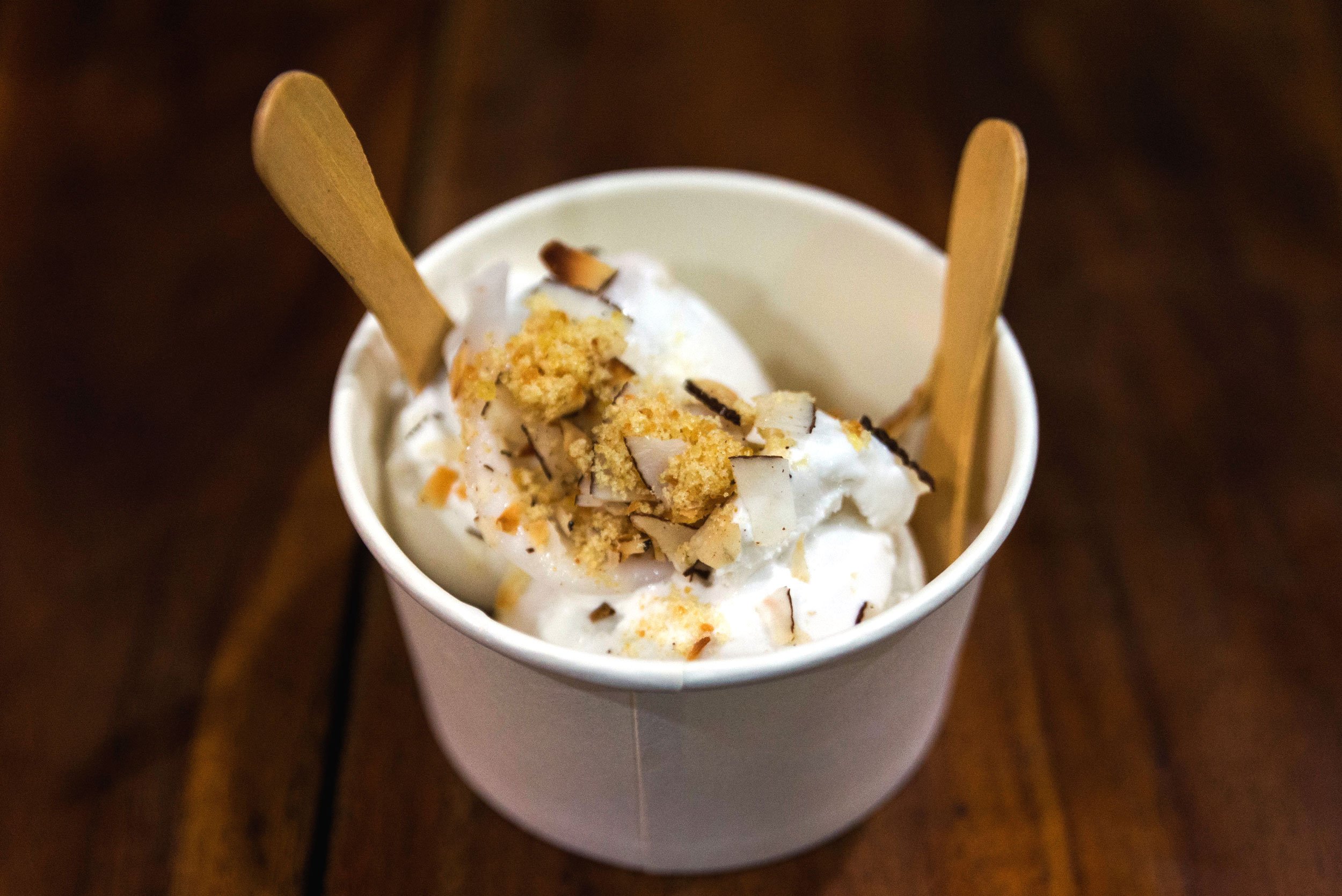

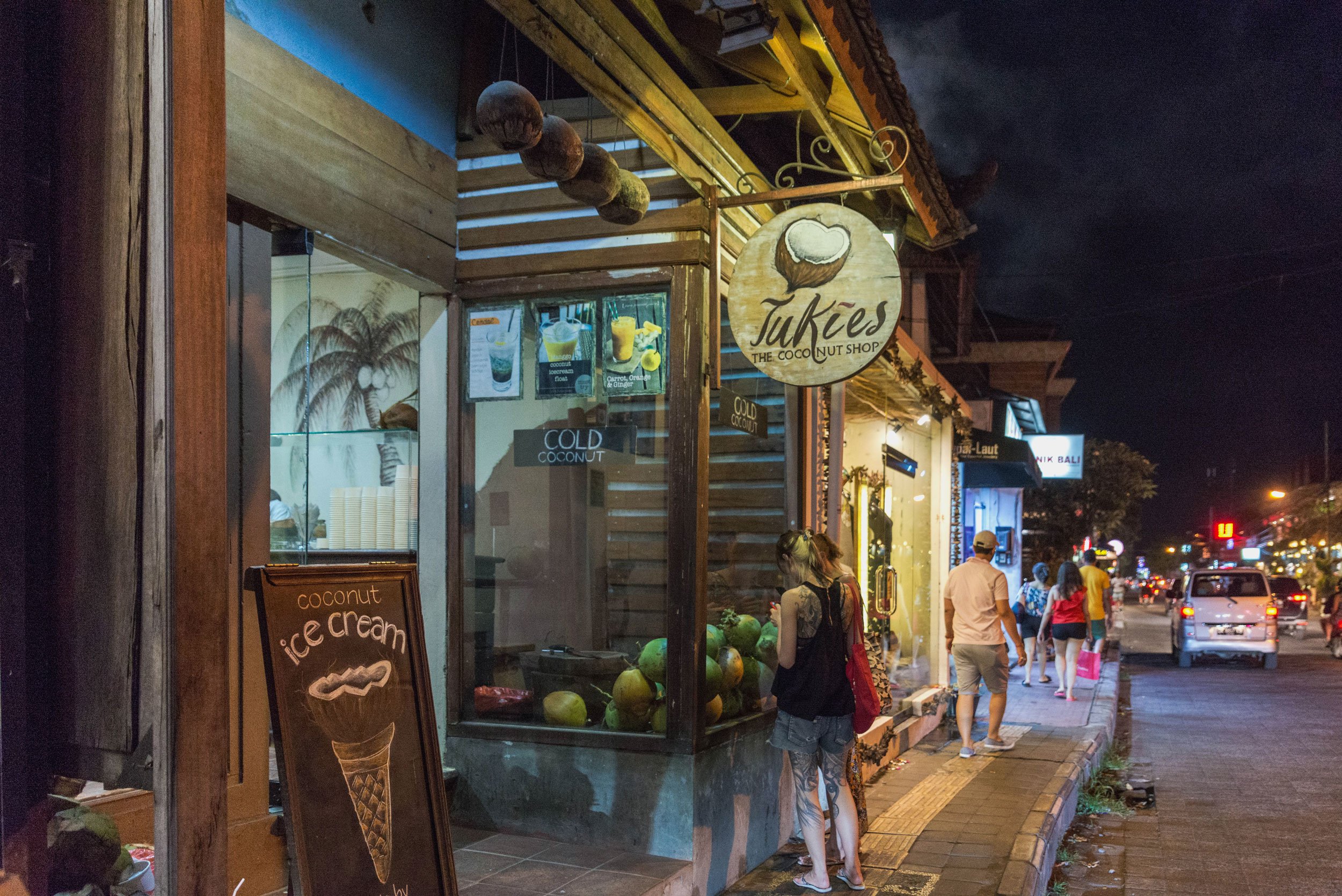
If you only have one meal out in Ubud, making it Tukies ice cream may not be such a bad idea. Really. Credit to my friend Rayna for this awesome rec, Tukies' coconut ice cream was instant love. Creamy and fresh, it's probably the best I've had. We went twice, by the way, and there's no shame in admitting it.
Keep in touch:
More travels:
Bali: Seminyak
A resort area where tourist life often intertwines with local life.
Seminyak is an area in the southern part of Bali, just north of Kuta
The area is one of the busier areas of the island and is home to a lot of expats
Exploring local streets, markets and temples in the day before going "home" to relax in an affordable villa. If that sounds like a good trip, you’ll like Bali.
The Seminyak and Kuta areas of Bali are probably busier than you’d imagine if you’ve only seen those photos of tourists having remote beaches to themselves or swinging all alone over rice terraces. The Seminyak/Kuta/Denpasar area is clearly the city area of the island.
While Bali is known for its private villas and resorts, tourist life is not all that separate from that of the locals. Villas tend to be walled off and secluded which provides some nice peace and quiet, but one step outside and you're part of the everyday buzz there.
From the Airport
Getting from Ngurah Rai International Airport to the villa wasn’t exactly smooth. With no train or large mass transit system, there’s a group of non-meter taxi drivers that immediately swarm you for your business.
The light blue Blue Bird taxi is known to be the most legit, but I mistakenly flagged down a lookalike "Blue Biro." Tricked. We ended up paying only about $5USD more, so no real harm done other than to the ego.
The Villa
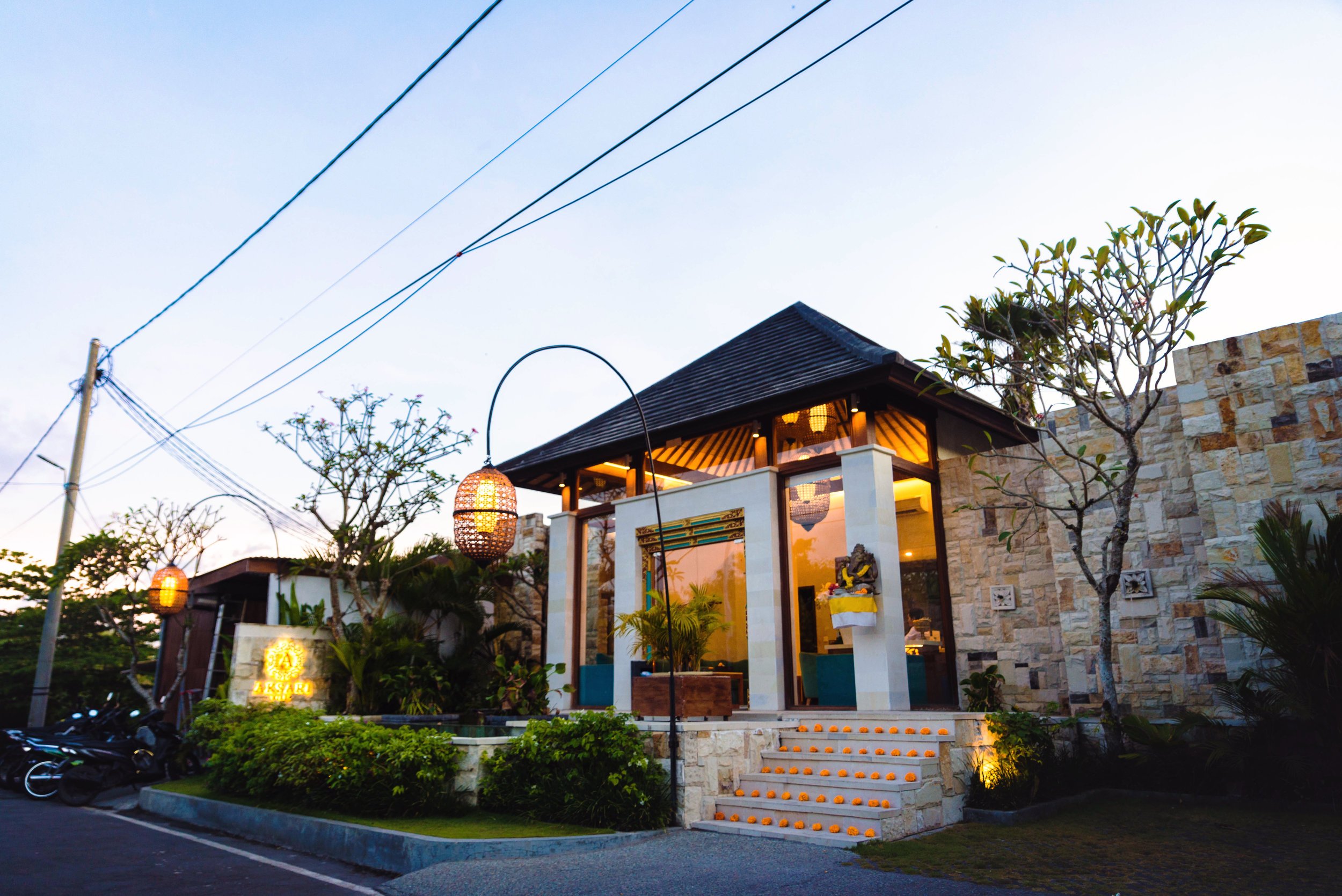
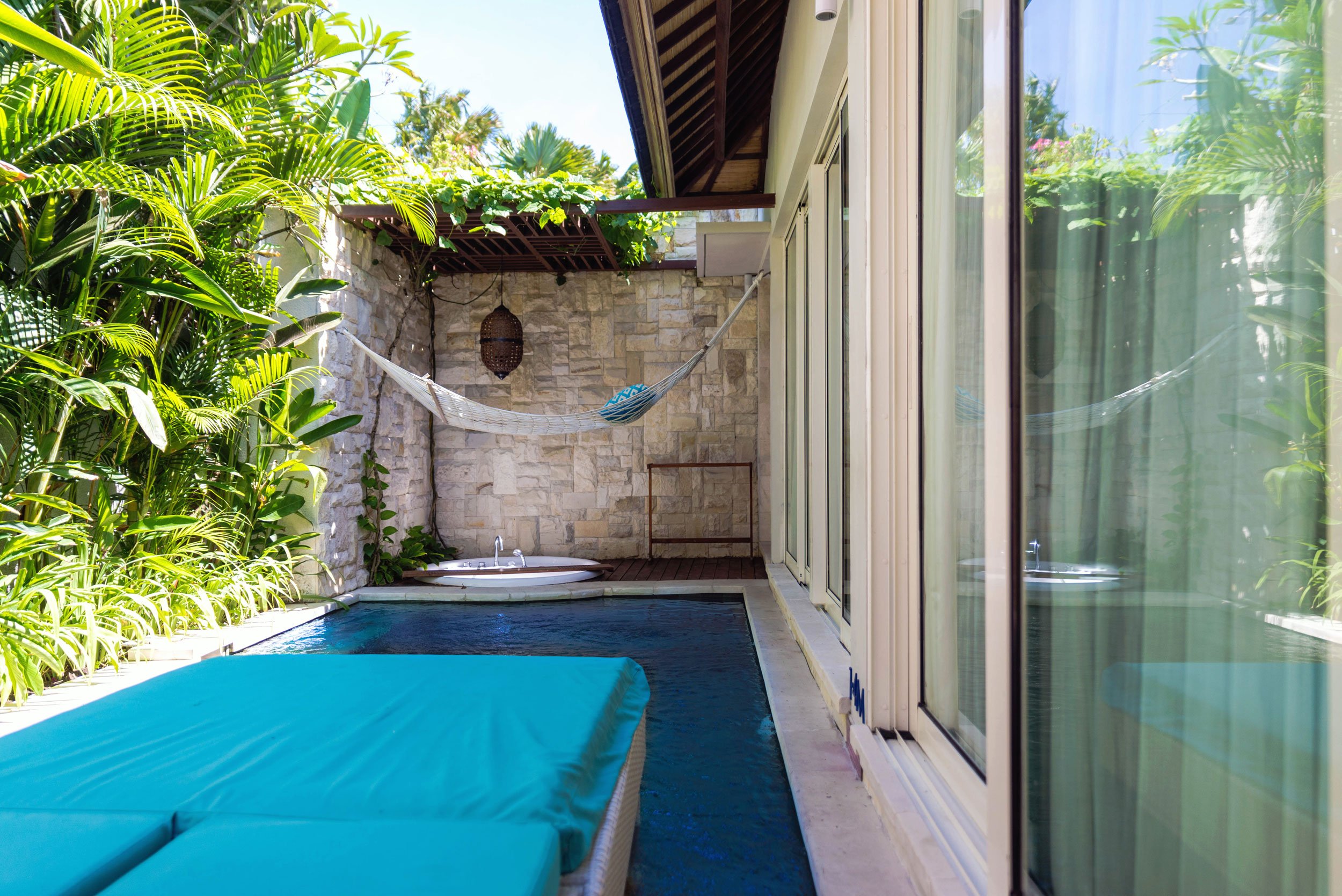

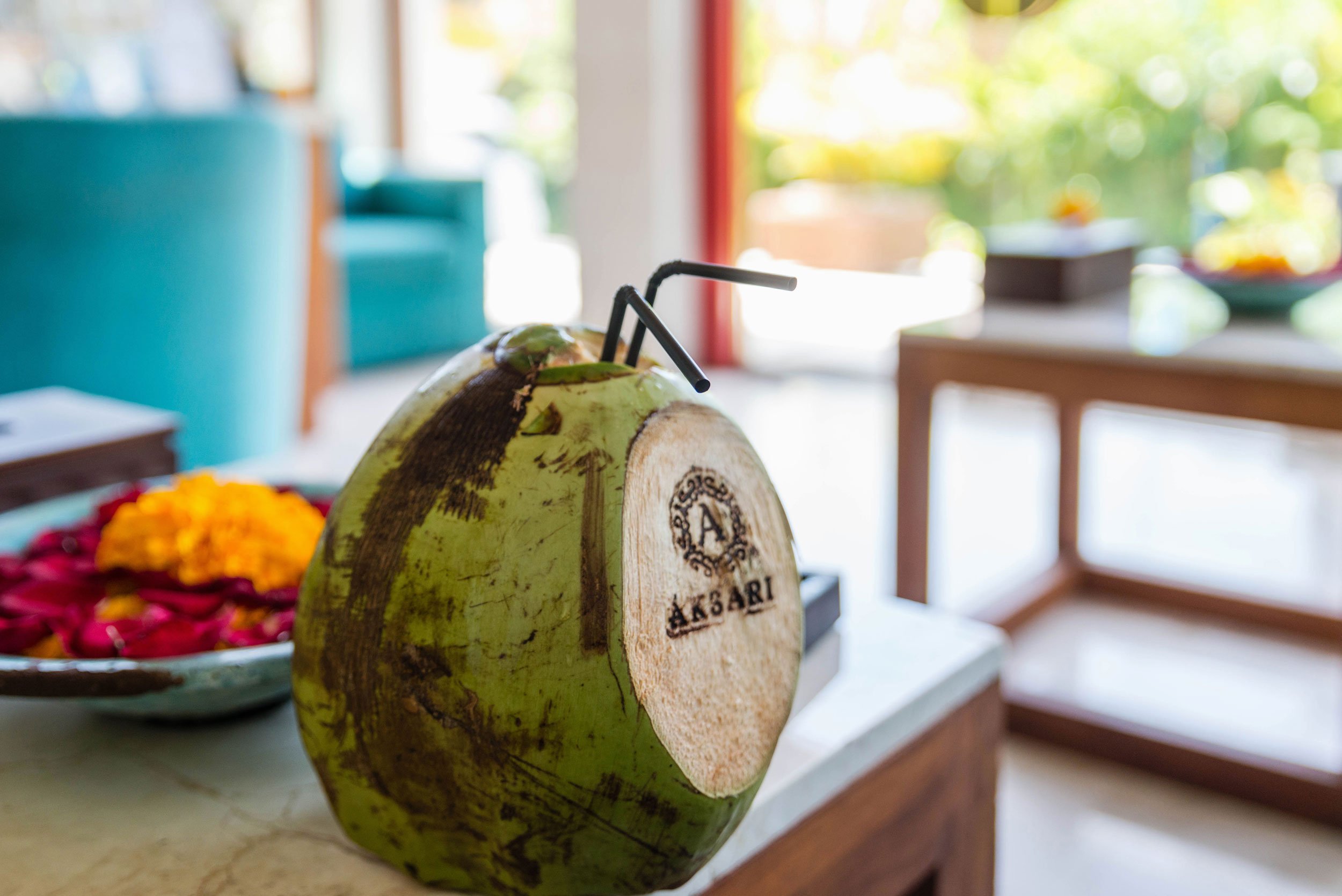
Where we stayed
We stayed at the Aksari Villa, between the main Jl Raya Legian and Jl Sunset roads. From the fresh coconut juice they gave at check-in until the time we checked out, service was great and they were keen on making sure everything was going well for us.
There are only several rooms at the villa, each with a private pool, outdoor shower and breakfast included, it was a nice little gem to wake up and come home to. They also provide transportation and more romantic services like floating breakfasts in the pool.
During the day, we explored some nearby local areas.
One stop was Pasar Taman Sari market [map] which was a short taxi ride away. This is a local market where vendors are selling things from fruits and vegetables to little knick knacks, while some are chopping up chicken (already dead!). The market isn't that big, it only takes about 10 minutes to go through.
Fruit stand at Pasar Taman Sari market
A moped drives through Pasar Taman Sari market
Walking down Jl Raya Kerobokan street from the market, we checked out Jl Kayu Aya street, an area geared to tourists with upscale coffee shops and fashion boutiques. Prices are a little bit higher here than comparable local shops elsewhere, but there are nice spots worth stopping at like the Corner House, a coffee shop and cafe with westcoast vibes. There's also a delicious gelato shop here that I'll show below.
Like I mentioned, this part of Bali is busier than you'd probably expect. Kuta is a surf and party town full of rowdy foreigners and Seminyak is its neighbor. As one taxi driver put it, "People like to come here to do what they can't do back home."
The city is moped-first, and during rush hour, cars are bumper-to-bumper while mopeds weave in and out of every small crease their drivers can find. Definitely give yourself ample time to get to places, because most streets are one-lane only, and traffic here is no joke. The more relaxing, quieter locations tend to be outside of this area.
People in Bali are quite nice. They're generally laid back and many of them like to engage in conversation, especially the taxi drivers. Most of the people that we encountered displayed great hospitality and tried to show us a good time.
The only grouch we came across was the ticket person at Uluwatu Temple who got mad because we didn't have the exact amount of cash for tickets and needed change.
Uluwatu Temple
Getting to places like Uluwatu Temple can be done by taxi or by asking hotel staff to schedule transportation.
From the Aksari Villa, we had a taxi driver drive us in traffic for about 2 hours to Uluwatu temple and back again. He even patiently waited for us at the temple. This is normal for them to do and you'll see a lot of drivers hanging around outside popular tourist destinations.
Uluwatu Temple at sunset
Uluwatu Temple at sunset is an absolute must. The area hangs beautifully over a large cliff overlooking the Indian Ocean and it made me realize instantly why Bali sunsets are famous.
The Kecak dance performance done on the temple grounds is really popular, but we missed the entrance due to traffic and only could catch glimpses of it from the outside. The chants, however, filled the air as the sun went down.
Seminyak is a great first stop for Bali travels. The two nights that we spent there helped us get acclimated and provided a launching pad to our next stop: Ubud.
We also had some great food in Seminyak, and I'd highly recommend a few spots to anyone who visits the area.
Warung Babi Guling Pak Malen
Wow. What. Is. This. That was the reaction in my head when I started eating this suckling pig, or babi guling.
Traditionally for ceremonial events, babi guling is now mainstream and consists of different parts of the outdoor-roasted pig, along with mixes of spices (sambal) that become a sort of salsa.
Pak Malen's was hands down the best I ate in Bali. It's a hectic, local-like spot that is absolutely a must-go. Even the soup, which my amateur tongue said "chicken noodle soup with curry," was amazing.
Bambu

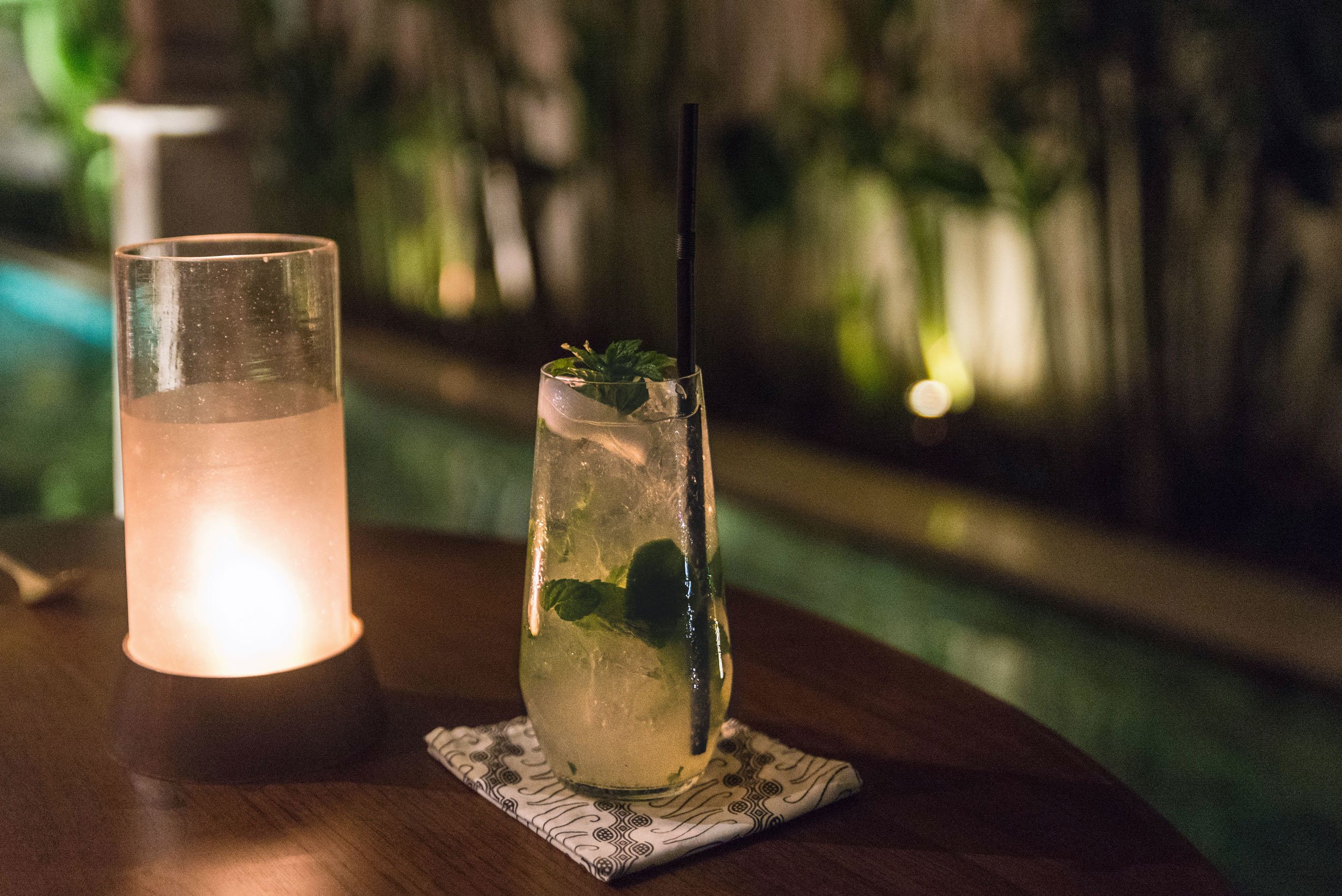

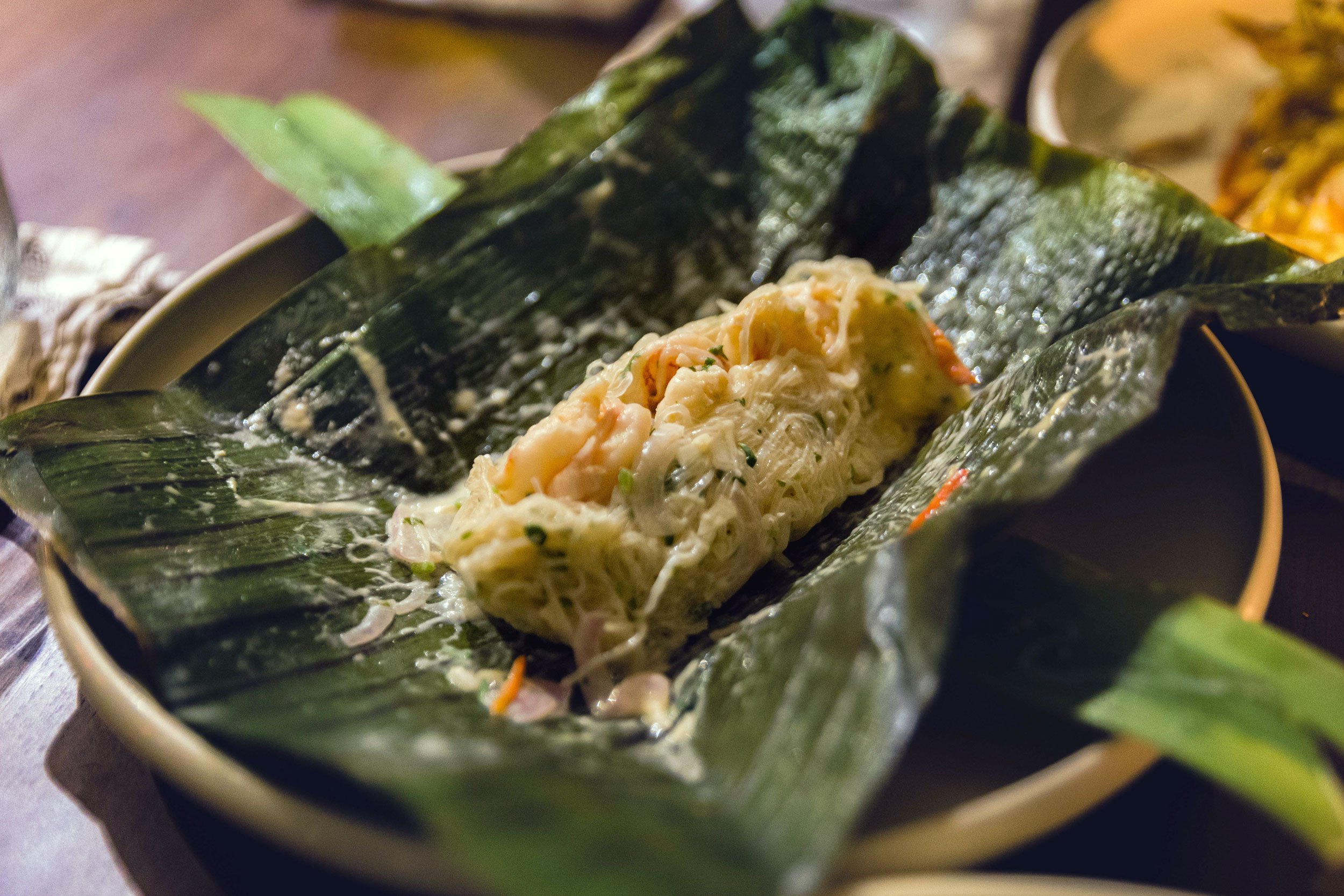
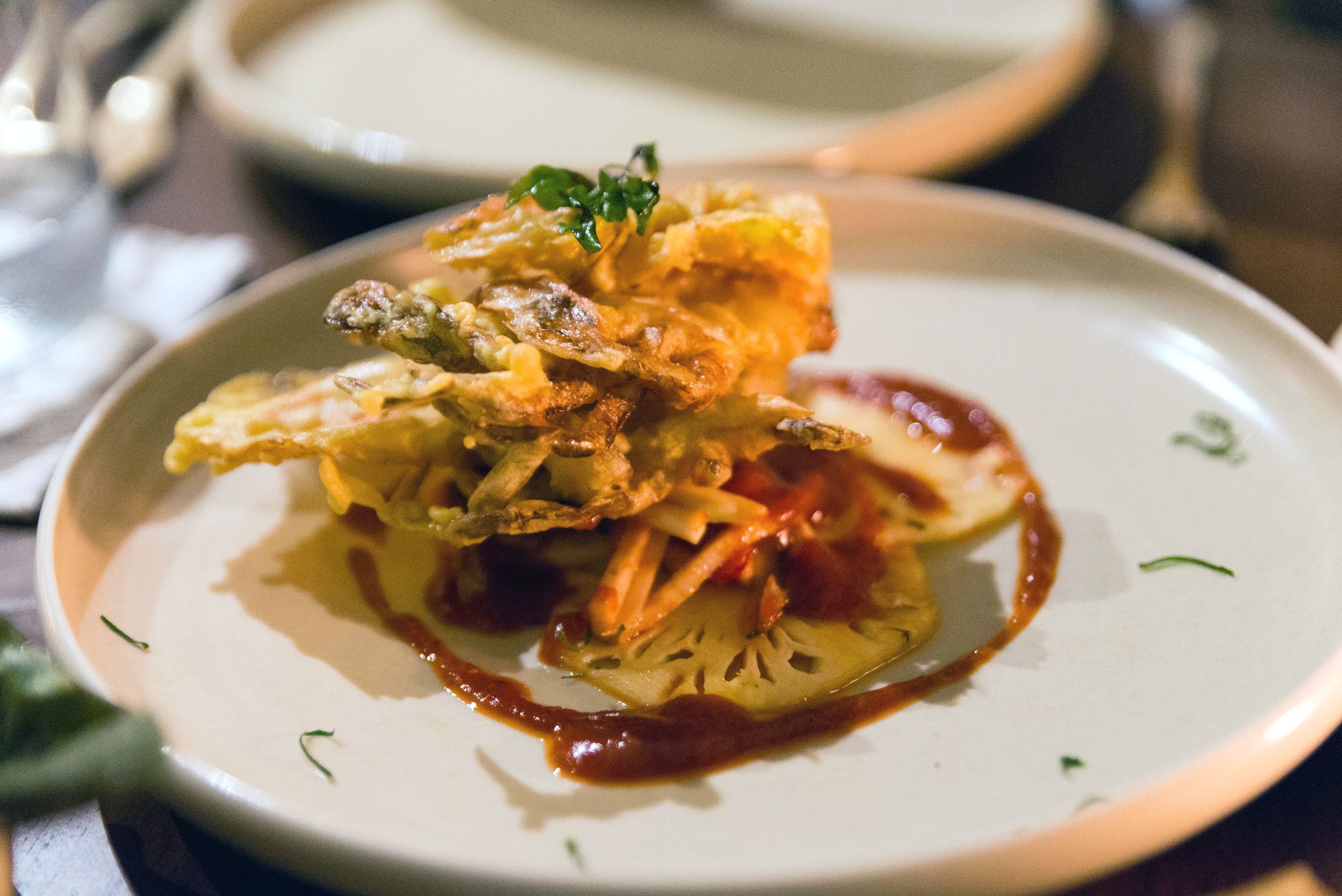
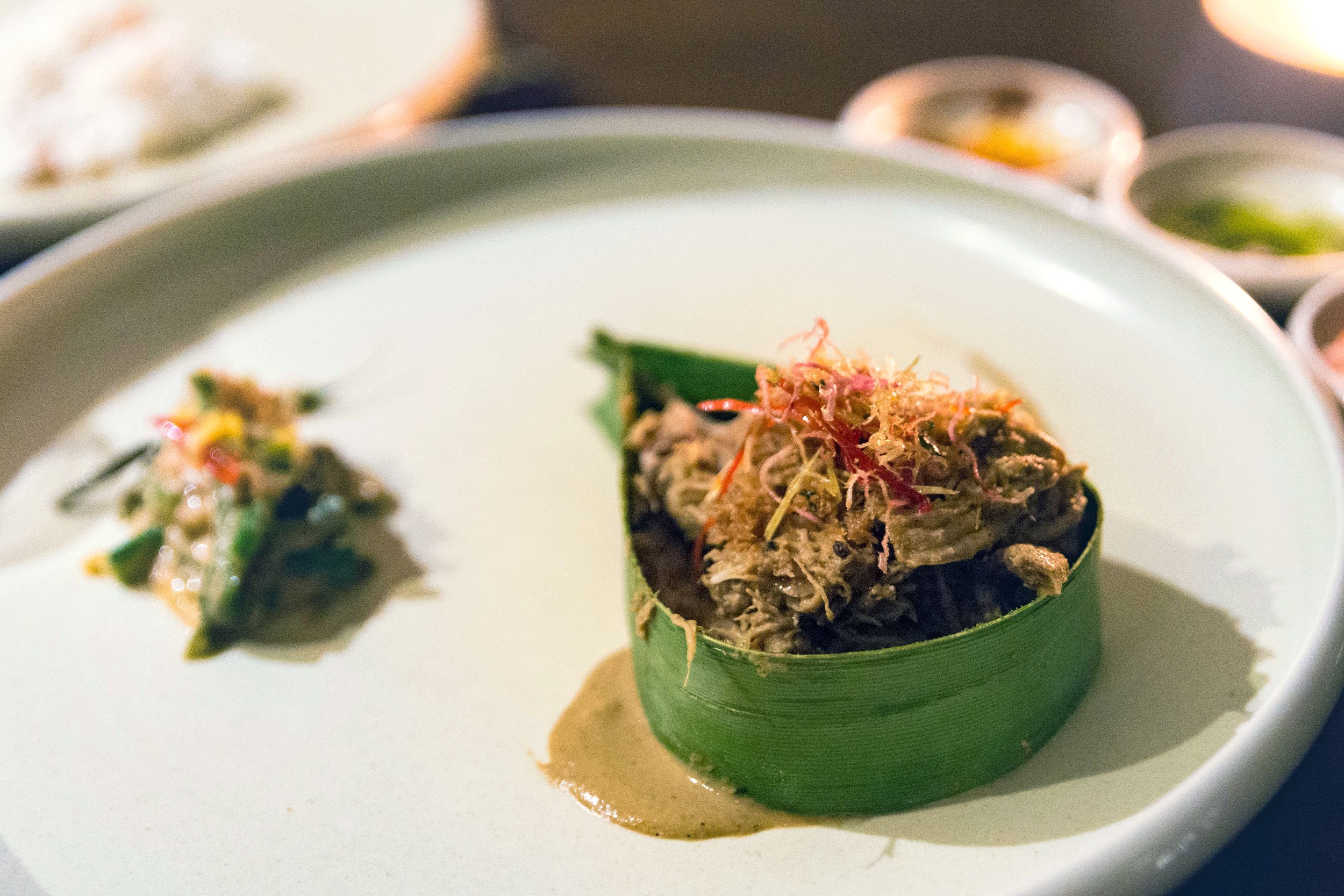
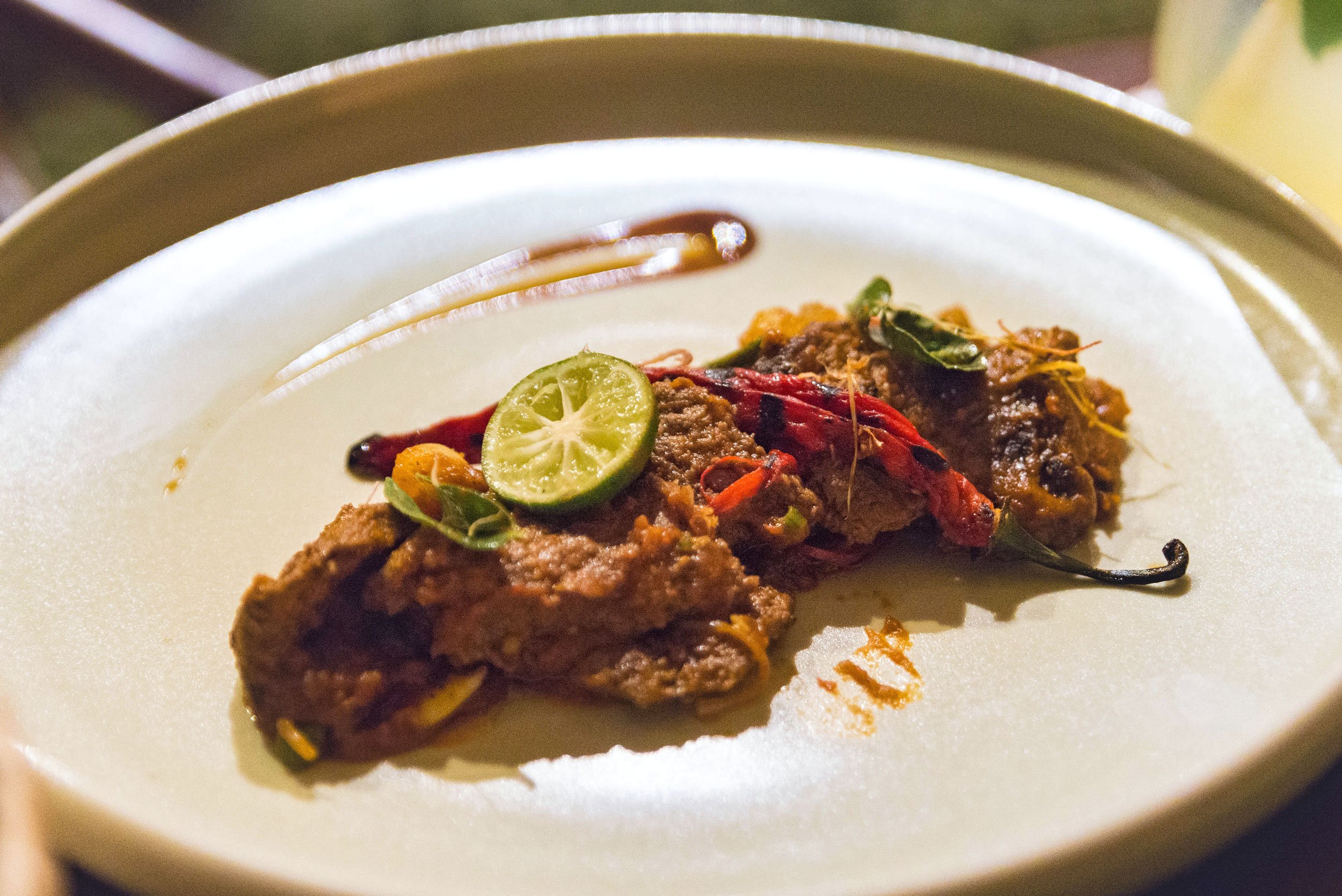

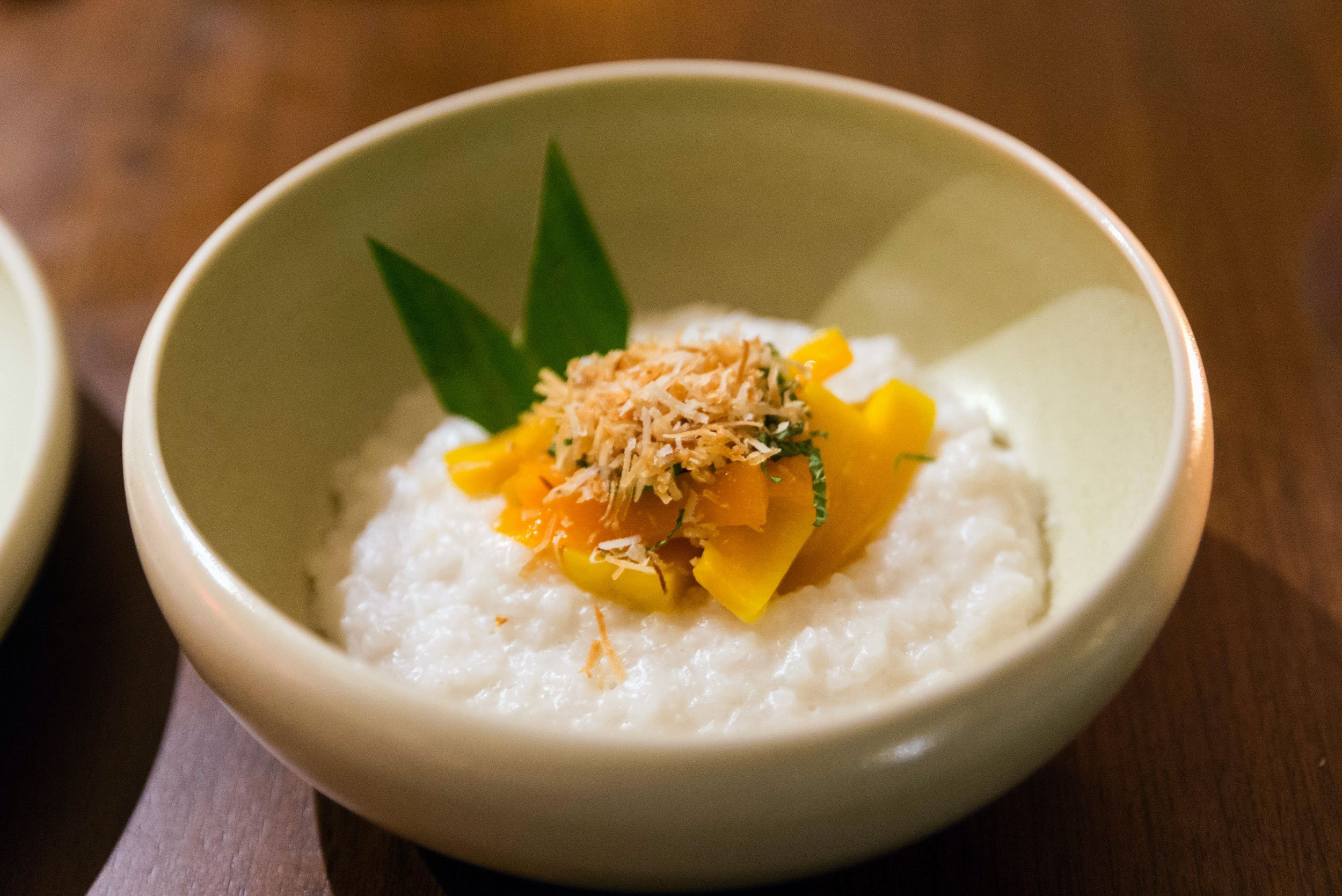
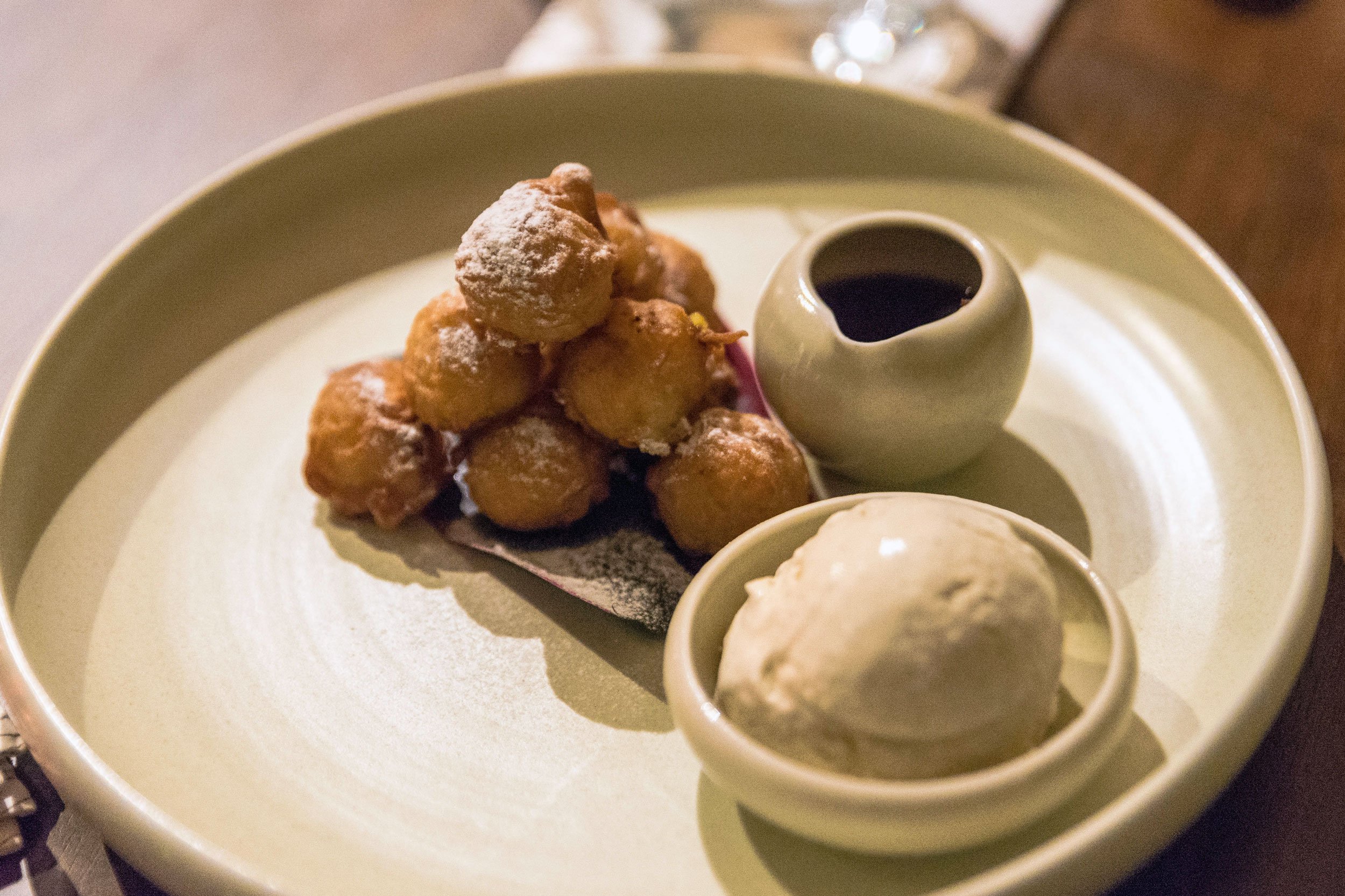
Even nicer than expected. Bambu's often on foreign residents' Bali guides and I can see why. The setting was beautiful with tables right above koi-filled water, and food was good.
Favorites included the Bebek Betutu (slow roast duck with galangal and lemongrass, toasted coconut and green bean salad) and Udang Tim Ketumbar (Steamed prawn and glass noodles in banana leaf with coconut and coriander). While the portions were small, the entire dinner for 2 was only about $90 USD.
Gelato Factory
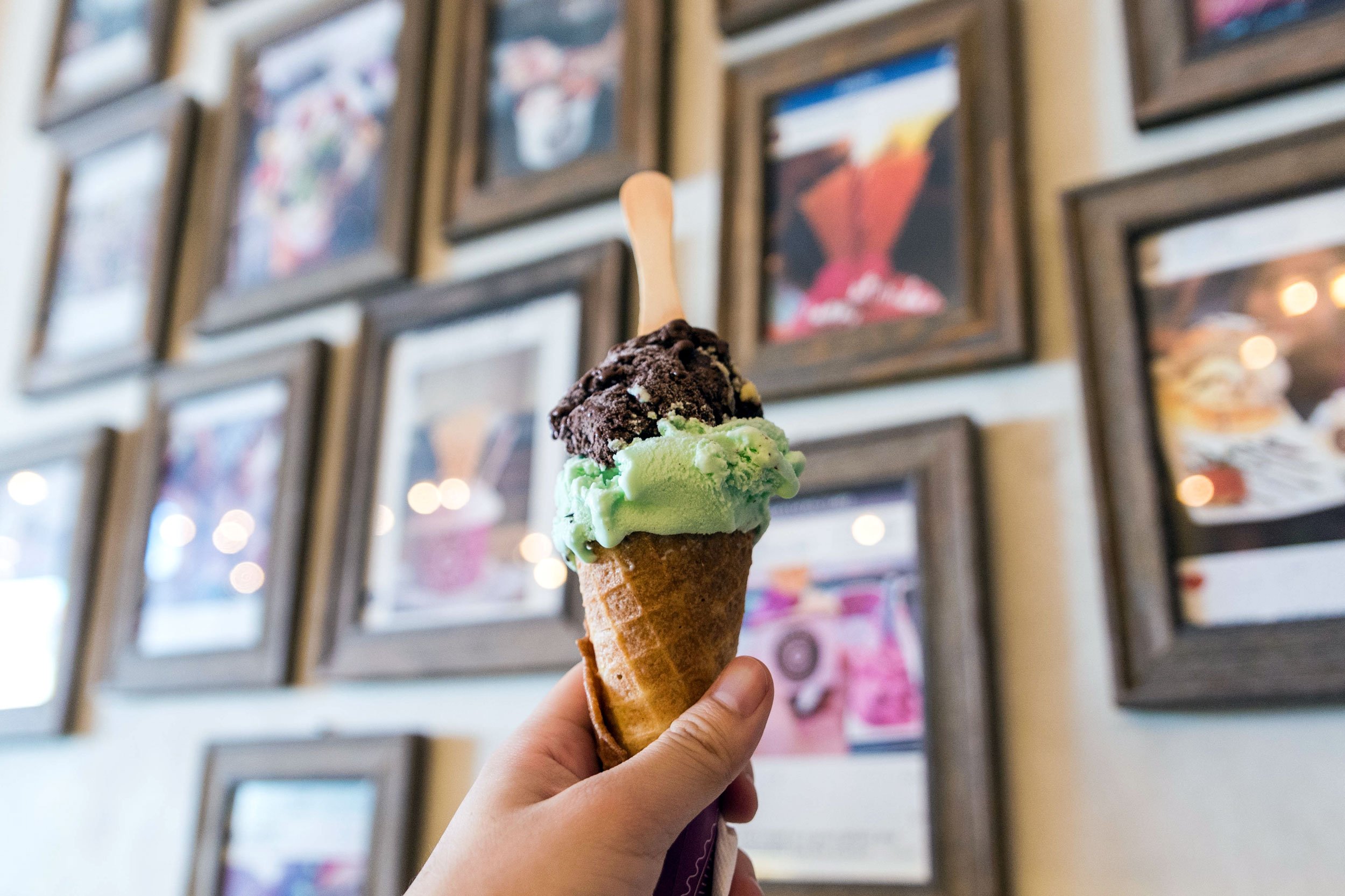

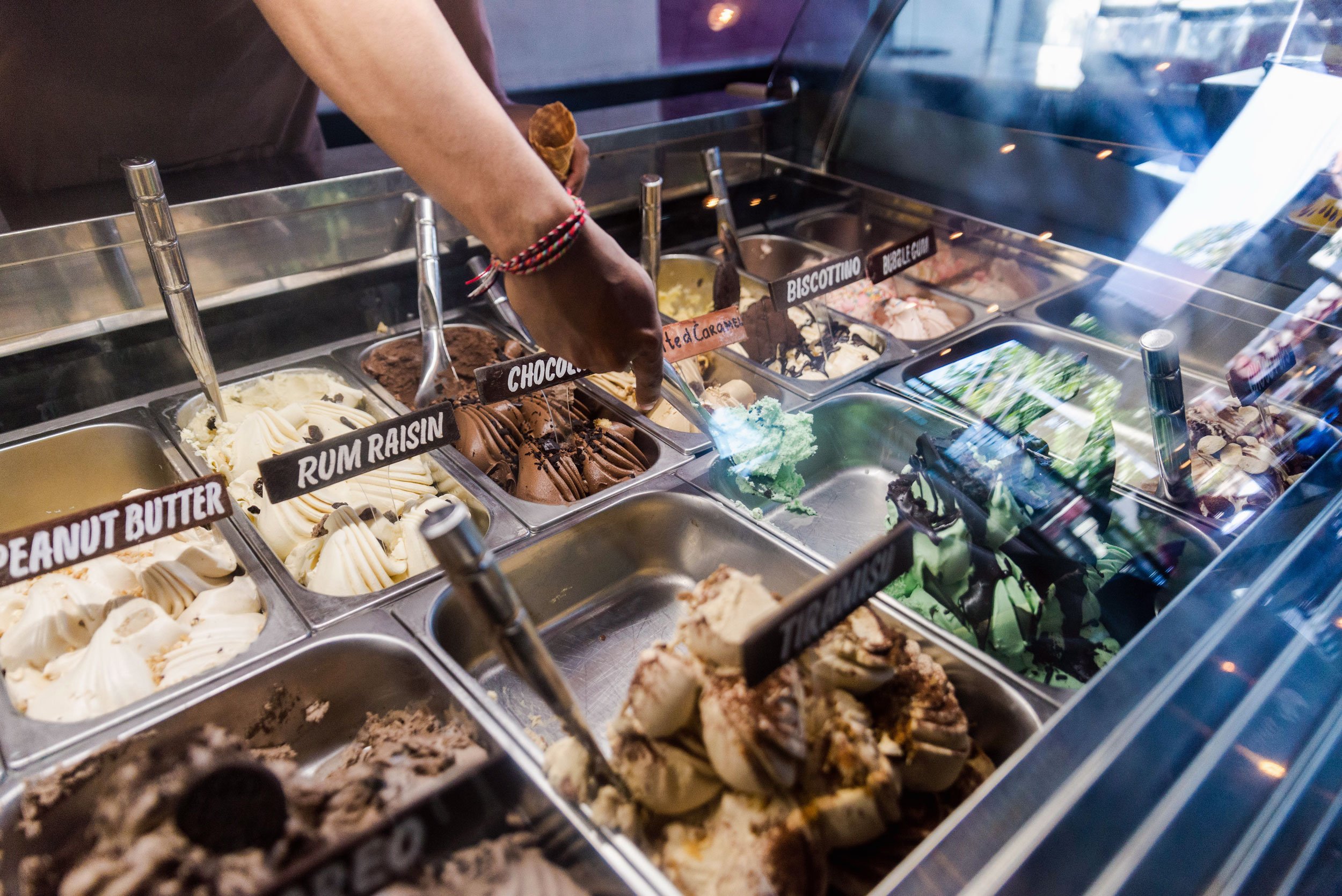
"Gelato is always a good idea." That's on the Gelato Factory's wall and it's easy to see why.
This was a nice find on Jl Kayu Aya street, an area geared to westerners and tourists. Yes, the wall decor, hanging lights and customers' Instagram posts in wood frames are cute, but the Gelato Factory backs up the show - they serve around 30 flavors of some fantastic gelato. And they're not just tasty and refreshing, they're made from local, natural ingredients and the shop even works hard to keep them all healthy.
Keep in touch:
More travels:
Singapore
Very international, Singapore is full of culture, food and architecture to explore.
If there’s a central meeting place for the East and West, it just might be Singapore.
I visited Singapore a couple times for work but managed to make sure I fit in some exploration, mostly during the evenings as you will see. I really didn’t know what to expect as I only had the stereotypical images in my mind: Strict rules and all about business.
To cut to the chase, Singapore’s great for a short trip.
From its modern, waterfront skyline to its character slash culture-rich local streets and alleys, you can get a pretty broad experience in a really small space.
Singapore isn’t that big. A 30 minute Uber or taxi ride will get you to most places, yet you come across an easily visible range of architecture, languages and cultures. It does, after all, take up only about 2/3 the space that New York City does, but it has 4 official languages.
What does a mix of cultures often mean? Good food.
A lot of countries boast about their food, but Singapore’s actually backs up the talk. I wouldn’t call myself an adventurous eater, but basically everything I had there made me want more. If you're lost, a good place to start are food courts like La Pau Sat or the Maxwell Food Centre. (Skip to the bottom if you just want to see food stuff)
I’d also like to add that Singapore’s Cup Noodle flavors - chili crab and black pepper crab - are amazing. I cleared a 7-11 shelf before flying out, no joke.
Clark Quay
Singapore did turn out to be quite an international business hub, and I’d love for another trip there. After meeting with the Singapore Tourism Board and Singapore Art Museum staff though, I learned that they are making sincere efforts to show that they’re more than simply a business destination.
One example of this is their Formula One race through the city. They also have Gardens by the Bay.
Gardens by the Bay is a big nature park and visually, it’s impressive. It features various different attractions but two of the most popular are the Flower Dome and Cloud Forest - atrium-like enclosures that when you walk through, it feels like you’re being transported to another land.
Cloud Forest at Gardens by the Bay
Their Supertree Grove is another popular sight. More than a colorfully illuminated installation that sometimes does light shows, it also harvests solar energy and is used as part of the ventilation system of this environmentally friendly park.
One thing noticeable in Singapore is how photogenic its buildings are, and not just in the Marina Bay area.
A lot of the architecture, from business towers to public housing, is symmetrical with leading lines, contrasting windows and halls, and splashes of color accents. In other parts of the city, buildings were painted in vibrant color combinations and ethnic patterns.
Rochor Centre
Esplanade Bridge at the mouth of the Singapore River
As someone who enjoys urban photography, it’s an amazing place to wander and take snapshots of and I only wish I had more time to do just that. Here’s to hoping I’ll be visiting sometime again.
There is a Singaporean photographer I met who really captures the lines and angles of Singapore's urban landscapes, Yafiq Yusman. Check out his Instagram: @_yafiqyusman_
Singapore has a lot of nice restaurants and bars, and being the international place that it is, some of them reminded me of places you'd find in cities like Los Angeles.
Here were some of the spots that I enjoyed:
Palm Beach Seafood - An award winning restaurant with outdoor deck seats looking out at Marina Bay Sands that's best known for their chili crab
TAP - An craft beer bar in the theater part of the Capitol Piazza
Wine Connection - A trendy spot to get a group together for wine and tapas after work
District 10 - An American-esque happy hour spot with a buy 1 get 1 free drink deal
Hillman Restaurant - Good family-style Chinese
The Projector - In the backside parking lot area, there's a cool little rooftop bar for casual hangouts
But if I'm lucky enough to make it back to Singapore again, these would be at the top of my list.
Jumbo
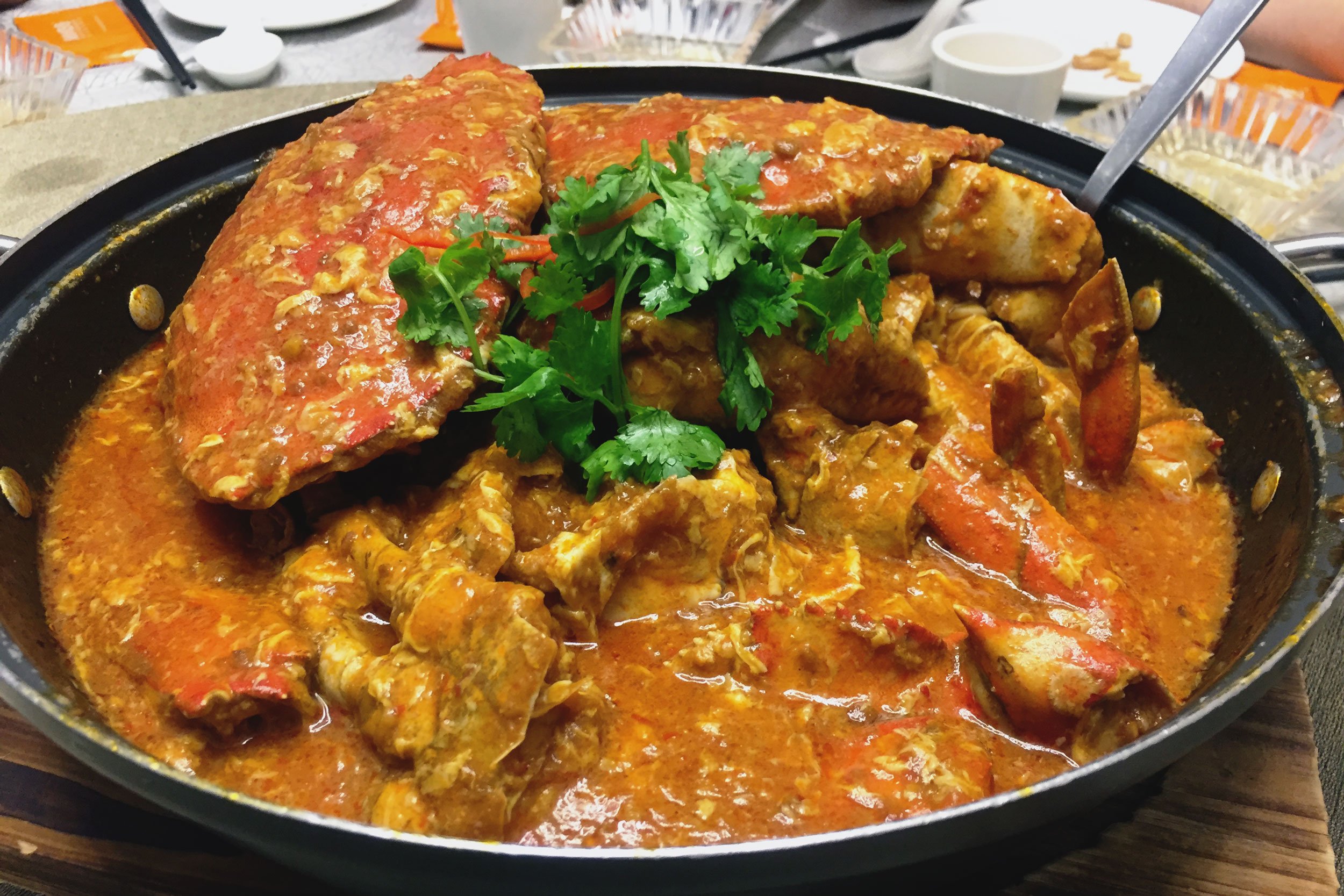
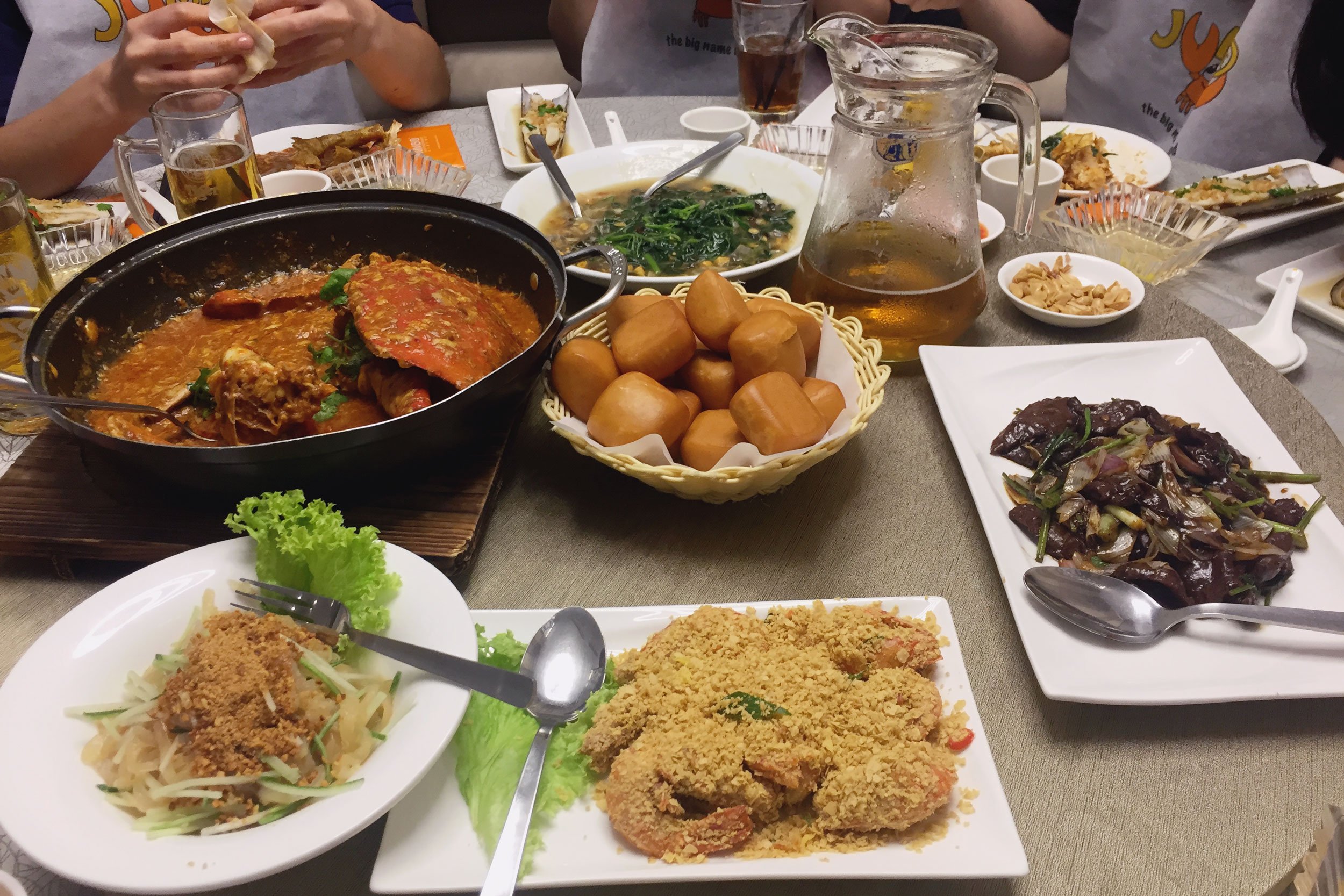
While the difference was ever so slight compared to places like Palm Beach Seafood, I found Jumbo's chili crab to be my favorite. It had a nice balance of spicy and sweet, and the sauce is great over their fried rice. Their black pepper crab had more of a flavor kick and was just as amazing. Every dish that we had was really tasty. The restaurant is quite big and with decent service. If you're in Singapore, chili crab is a must, and you can't go wrong with Jumbo.
River South Hoe Nam Prawn Noodle House
A fantastic recommendation by our Airbnb host, "Tangoh." This street-side, open-air eatery is extremely causal but wow, their prawn noodles were amazing and blew away my expectations. Their broth, made from boiling pig tail and prawn soup stock for several hours, results in a spicy, flavorful punch to the tastebuds. It may not be the most photogenic dish, but boy does its taste make up for it.
Keep in touch:
Other travels:
Share:
Mekong, Vietnam
A day exploring locals and their lives on the Mekong River.
You’ll see completely different lifestyles from Ho Chi Minh and Hanoi venturing along the Mekong River for a day.
We booked a tour through The Sinh Tourist, a well known tour provider in Vietnam. They ask you to check in the day before the tour which isn’t difficult since they have a convenient Ho Chi Minh location that is centrally located. It’s also the meeting place to embark on the tour.
The Mekong river is the 12th longest river in the world and goes through several countries, so we really were only able to see a tiny portion of it.
The start of the tour is a couple hours outside the city by tour bus. After arriving, we boarded a boat with our group that served as our main transportation for the day.
The group's tour boat for the day
The first thing immediately noticeable is how murky brown the river is. This is apparently due to the abundance of minerals in the water rather it being dirty, as we were told.
We made our way down the river, which is pretty wide, passing traps in the water and locals fishing from their boats. The Mekong river is central to many people's lives.
Visiting a rice paper maker was the first stop. While many of the ones we see in stores are more likely to be machine made, the people we saw were doing it completely by hand. Made like a crepe, the wrap is then laid on screens to dry out in the sun.
A woman making rice paper by hand.
Lunch was held at an open dining area nearby where we shared tables and local dishes with other group members.
After our meal, it was back on the boat and up a narrower alleyway.
Getting into buggies pulled by some small horses, we rode through a small town. It was a bit sad as the horses seemed exhausted and were being constantly hit with a small, cord-type of whip. We rode from several minutes, got off and made our way to a little gathering area where we ate some fruit while watching a local music performance.
Jumping into small wooden boats, we all made our way through a narrow waterway under a tunnel of vegetation back to our tour boat. Each of the little boats were captained by a local that rowed us for half the journey and switched on the motor for the last half.
The final stop was at a local candy maker. We watched them turning an off-white liquid into a candy that I'd describe as like a coconut taffy. Poured into rows, they were dried, cut and then individually wrapped.
Our river tour came to an end when our bus dropped us back off at the departure point near The Sinh Tourist's main office location. We got back in the late afternoon, leaving the rest of the night to explore the bustling city of Ho Chi Minh.
Keep in Touch:
Other travels:
Share:
Ho Chi Minh, Vietnam
A bustling city that mixes history with modern.
Our visit to Ho Chi Minh began with us suddenly having no place to stay.
Ho Chi Minh immediately felt like a major city after flying in one evening from Hanoi on a pretty scenic Vietnam Airlines flight
Catching a taxi from the airport, the driver decided to take quite a roundabout route, perhaps due to traffic, but it began to feel like he was milking the meter because it was more than a scenic route.
Things went a bit more off course when The Town House 50 hotel/hostel staff told us that the hotel room we reserved was given to another guest due to a “problem in another room.” We weren’t informed or re-accommodated.
So there we were that first evening with no place to stay.
We were introduced to a place next door, one where the entrance was suspiciously through the back of a barber shop. Everything was too shady to say yes to the dingy room so we took off.
With our backpacks on our backs, we began roaming the Ho Chi Minh streets going up to the front desks of any legitimate-looking hotel. Alas after a few tries, we found an available room at the centrally located A&EM 280 Le Thanh.
Our first stop was checking out Ben Thanh night market nearby, one of the most well known ones in the city. Set up like a flea market, the area is lively and booths sell everything from knock-off sneakers to random fashion items and toys.
We grabbed some food - pho and spring rolls, of course - at a crowded random eatery where a Korean TV crew was filming. Ho Chi Minh, it seemed, was a popular travel destination for Korean tourists at the time.
The biggest reason we decided to stay in Ho Chi Minh was to experience the Mekong River (I’ll write about the experience in the next blog). We booked a tour through The Sinh Tourist - if you do too, keep in mind that they require you to check in before the date of your tour.
Most of the time in Ho Chi Minh was spent wandering different areas, checking out local markets while trying to stay dry from sudden thunderstorms. We went in September, which falls in their rainy season (May thru November), and it's no joke.
You'll want to bring a rain jacket with you at all times as we had a perfectly sunny day suddenly turn into a puddle-hopping downpour in no time.
If you're looking for the best view of the city, head up to the modern Saigon Skydeck in the Bitexco Financial Tower (where the photo below and the top photo were taken). There's also EON Heli Bar which we stopped by, a modern lounge with views of the city. It can get really lively, full of tourists and expats, but the staff were helpful in getting us a seat.
Ho Chi Minh is a spread out city, and places aren't as close as they may seem on the map. Luckily there are cafes and food shops here and there to stop by at. And McDonald's, of course!
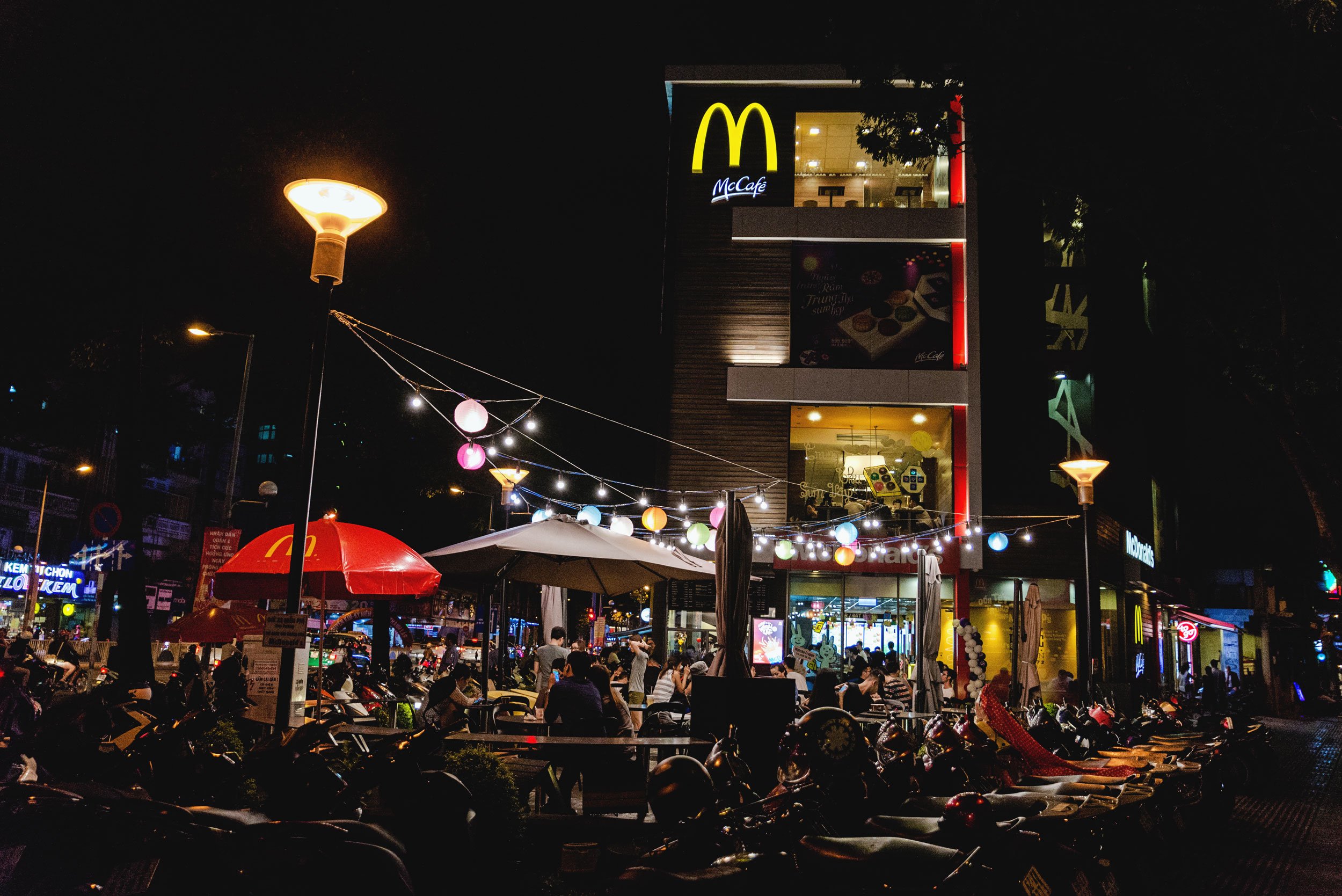
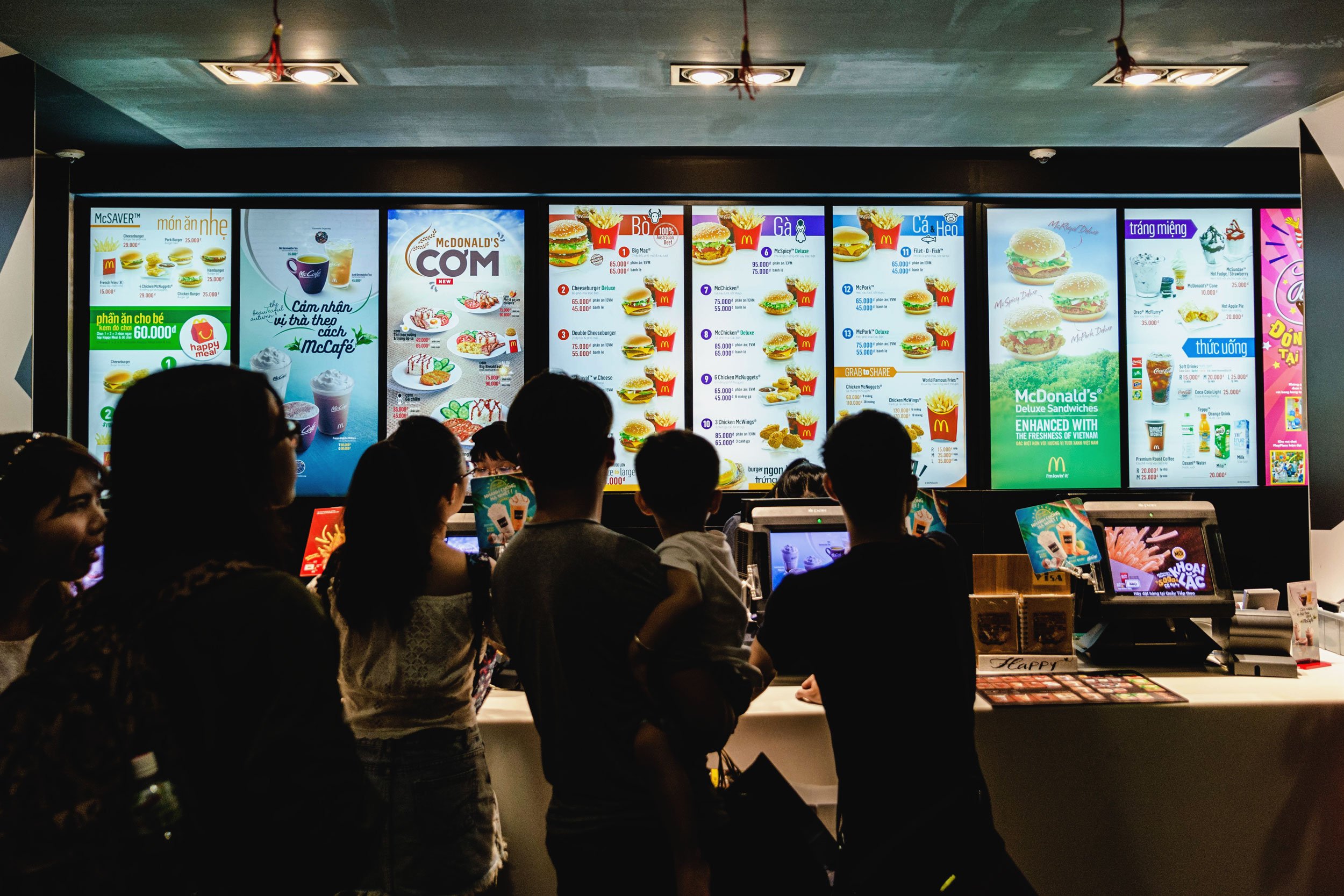
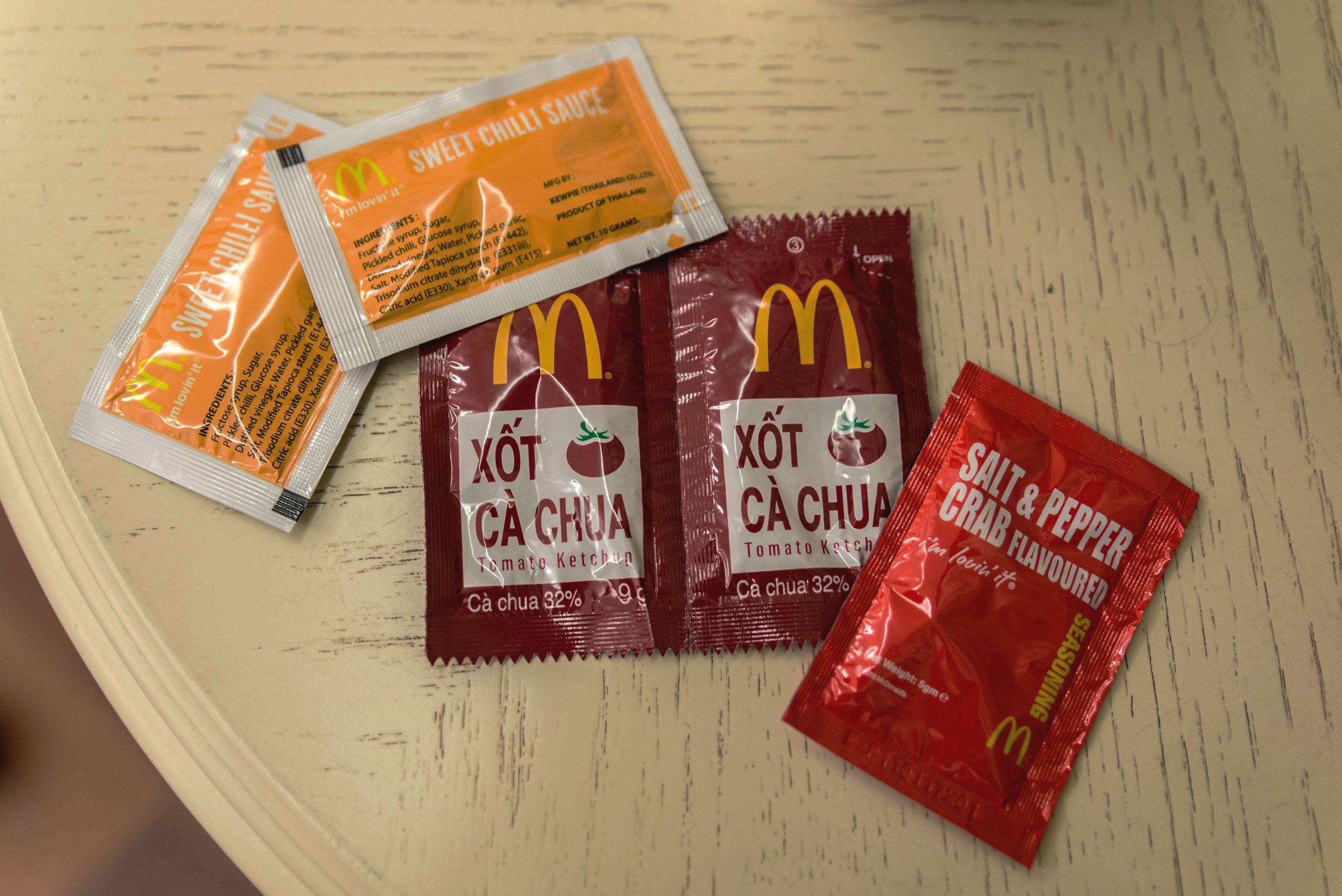
Just before heading the airport, we grabbed some coffee and finished our trip off with a massage in the Ben Thanh area, a place almost like a little Japan Town.
Vietnamese coffee is really good, and even though it's a commercial chain, my favorite was found at Highlands. It's their version of Starbucks (try their Truyền thống/Traditional Blend and Di Sản/Heritage Blend) and they absolutely need to open up shops globally.
Will wait.
If you're debating which is better for a first trip, Ho Chi Minh or Hanoi though, I recommend Hanoi. Here's why.
Quán Thuý 94 Cũ
A hole in the wall joint, Quan Thuy 94 Cu specializes in Vietnamese seafood dishes. It's a really casual place, and while it's mostly filled with locals, you can tell that they're no stranger to tourists as well. Their crab fried rice definitely stuck out and they don't skimp on the crab. Definitely order it if you stop by.
Che Nam Bo

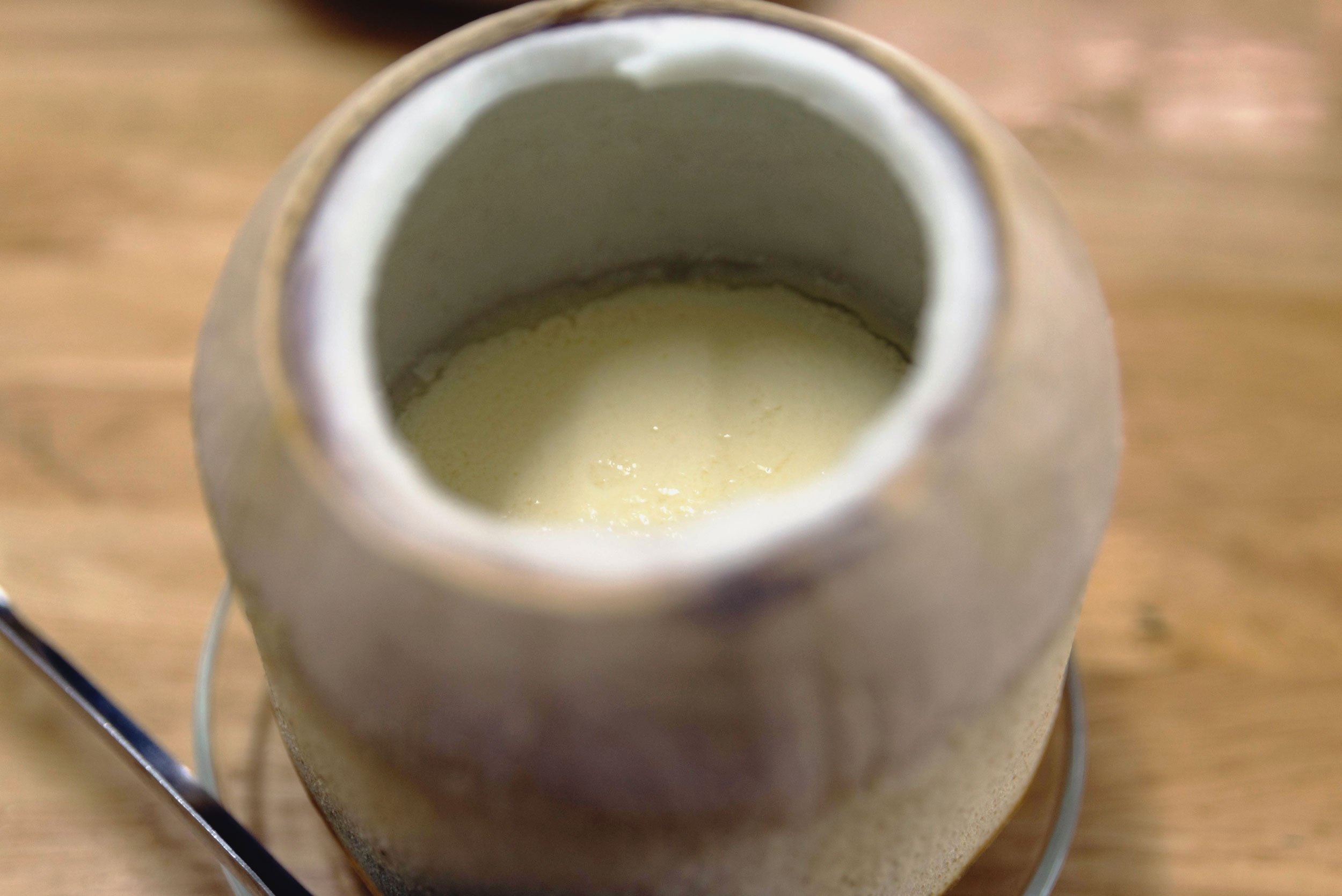
I didn't realize how refreshing Vietnamese desserts were until spending the day exploring. Che Nam Bo is perfect for a quick stop. It's laid back, nothing fancy, and has the vibe of a family business in the local neighborhood. Some sweets like the coconut flan are already prepared while others are made fresh when you order.
Keep in touch:
Other travels:
Share:
Ha Long Bay, Vietnam
It's easy to see why Ha Long Bay is a UNESCO World Heritage site and one of the most popular go-to spots in Vietnam.
Ha Long Bay, Vietnam [BUY PRINT]
Ha Long Bay is often the main destination when people visit Hanoi. It was mine. It's really easy to see why it's both a UNESCO World Heritage site and one of the 7 Wonders of Nature as it's a vast area of miraculous islands and karsts.
We booked a one-day boat tour through The Sinh Tourist. Before the tour date, they ask you to check in at their shop so we did so the night before. Their Hanoi Old Quarter location, one of a couple, was pretty convenient. One thing to be careful of is the imposter agencies nearby. They even use the same name and logo so double check the exact location. One tip is to take a look at their email address they display at the shop, if the domain isn’t thesinhtourist.vn, that’s not it.
A tour bus came to our hotel, the Noble & Swan Boutique Hotel, early the next morning and we embarked on the roughly 3 to 4 hour ride to Ha Long Bay. The bus made a stop along the way at a center selling arts and crafts, apparel, and various drinks and snacks - a good place to use the bathroom, stretch and grab a bite.
As soon as the boat left the port - an area being developed with nice vacation rentals - more and more karsts began to arise out of the water and we got the feeling that we would be seeing some amazing sights.
Ha Long Bay reminded me of parts of Thailand like Koh Phi Phi. While it's more vast than the Thailand islands, the water isn't as nice and unfortunately, there are places where you can see some trash floating around. Besides that, being surrounded by all of these formations really makes you feel like you're in another world. Quite Avatar-esque.
After a Vietnamese lunch in which we shared some fried fish, vegetables, spring rolls and other dishes with the others on our table, the boat docked for the rowboat experience.
We had the option of either sitting in a group boat with a rower or go at it on our own. Like most of the others, we chose the group option.
Our rowboat captain didn't say a word the entire time as she likely didn't speak any English, so don't expect a guided tour. It didn't really matter for our boat, however, the sights took up enough of our attention anyway. We went through tunnels to secluded inlets surrounded by the tall rock formations, and rowed by some locals on their boats.
Getting back on our cruise boat, we headed towards Dau Go island, an island known for Dong Thien Cung cave. The cave is a natural grotto full of stalactites and stalagmites that has become a major stopping point for Ha Long Bay tours.
If being around the karsts on the Bay is like being in another world, going into the cave ads another depth to it.
The inside of Dong Thien Cung cave is quite big and certain areas are illuminated with colorful lights. If you have trouble handiling closed spaces, you might find this a little challenging as the air can be a little humid and stale, and with only a few small openings to the outside.
Colorful Dong Thien Cung cave
After the caves, we returned back to the port where we boarded the bus to head back to Hanoi. We stopped at the same rest stop on the return, and arrived back at our hotel after a few hours to conclude the one-day trip.
Keep in touch:
Other travels:
Share:
Hanoi, Vietnam
A city with an authentic feel that beats expectations and leaves you wishing for more time there.
Vietnam, in all honesty, wasn’t high up on my travel bucket list, so I was pleasantly surprised when Hanoi blew away my expectations and became one of the cities I want to revisit the most.
We started Hanoi off with a wild taxi ride from the airport where our driver spent more of his attention taking never-ending phone calls instead of the road.
Streets in the city are similar to many other places in Asia - to describe them as chaotic would be an understatement. Navigating Hanoi's definitely requires some getting used to, and a lot of times it's hold your breath, pray you don't get hit and just walk. No exaggeration.
WHERE WE STAYED
We stayed at the Noble & Swan Boutique Hotel, a centrally located hotel in the Old Quarter.
Upon checking in, a staff member sat us down and recommended some local eats. I had thought it was some business partner plug, but my skepticism disappeared entirely after that first bite of pho (I wrote about it below).
The hotel staff were some of the most genuinely kind people ever. One staff member even came outside as we were heading out for the day to shake our hand and explain that she would be off on our check-out day and she wanted to say thank you and goodbye. I'll definitely consider staying here again next time.
Hoàn Kiếm Lake
The area near the Ngoc Son Temple part of the Hoan Kiem Lake area is quite picturesque in the evening. It was a Friday, and the entire lakeside area was lively with people hanging out, enjoying food and just having some fun.
In other parts of the Old Quarter as well, friends gathered on little plastic stools along the sidewalks to eat and have drinks. This was a common sight everywhere we walked.
We took a tour to Ha Long Bay the next day. A bus came to our hotel and brought us to our boat which was a few hours away. Ha Long Bay was such a wonder and nothing short of gorgeous, you can check out my exeperience here: Ha Long Bay
Ha Long Bay, Vietnam [BUY PRINT]
The vibe of the city and its people are what I really enjoyed about Hanoi... of course the food too, which I'll get to later.
It's a city that has both a busy and laid back feel at the same time. Mopeds, some with as many as a family of 6 on them, zoom by constantly. It has that endless buzz of traffic and bustle, yet people are laid back, hanging out outside cafes with friends at all hours in the day, even during work hours which I found to be interesting. Most people seemed to be polite and a little reserved, and we had no issues with any attempts to rip us off or anything like that.
The central part of Hanoi is really walkable, and there's a lot you're constantly taking in. Because of that, this trip was the first time I consciously dabbled in any kind of street photography. Most locals tended to shy away from having their photo taken though, so I tried not to intrude too much.
The only time we decided to give our feet a rest and catch a cab was visiting the Ho Chi Minh mausoleum, which sits just west of the Old Quarter area. You could sense the weight of its importance, from its vast grounds and guards to the design of the structure itself.
Before visiting, my list of things I wanted to see and do in Hanoi was as long as maybe a few scribbles on a hotel notepad, but I left with the feeling that I needed more time. There are so many alleys or shops that continually make themselves known while you're there, and I feel the need to go back, venture around and witness life there a little more.
And finally, the food. I'm not knowledgeable about Vietnamese cuisine, but there were some things that I ate in Hanoi that I seriously couldn’t get enough of. Everything we ate and drank was tasty, super fresh and affordable. And in a city that continuously sparks curiosity? Can't ask for much more.
Here are some places I absolutely recommend trying if you visit:
Quán phở Gia Truyền

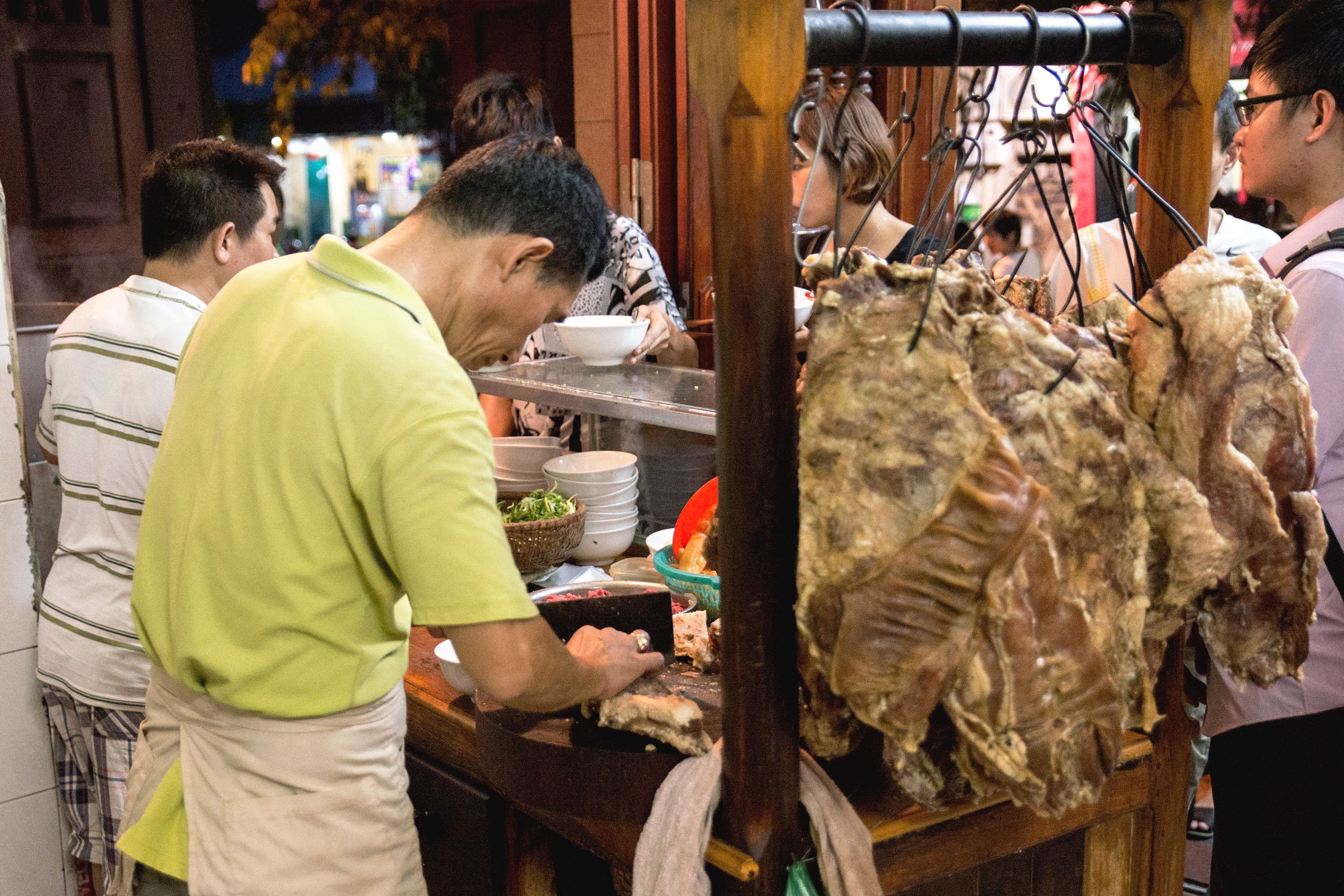
Pho-king delicious. This was the best bowl of pho that I've ever eaten. Period.
While there were some tourists, Pho Gia Truyen was packed with mostly locals - a good sign. It's a casual, open eatery with half of the guests eating outside on little purple plastic tables and chairs packed in every open space on the sidewalk.
They have a few different bowls to choose from, I went with their premium one which came out to less than $3 USD. Each bite was so savory, I really can't say enough about about it.
Bún Bò Nam Bộ
I had never heard of bun bo nam bo, and while I can't remember a lot of Vietnamese words, I won't forget this one.
This bowl of stir fried beef, vermicelli rice noodles, lettuce, bean sprouts, fried onions, chopped peanuts and more mixed in with some tangy yet citrusy sauce with a kick to it was simply amazing. It was a party of flavor in your mouth for a couple bucks US and absolutely amazing.
Chè 4 mùa
Che 4 Mua (Tea 4 Seasons in English) is a popular dessert spot. Seating is mostly on the sidewalk on little plastic chairs, but staff come by to talk and help you with your order.
It was a warm evening so we just went with cold drinks, watching the kitchen scoop fresh fruit into the glasses and create our dessert drinks from almost scratch. The drinks were served slightly chilled and flavors were completely natural and clean. Very refreshing.
Keep in touch:
Other travels:
Share:
Taipei, Taiwan
A few nights to explore the city of Taipei and the nearby mountain town of Jiufen.
Taipei has a modern feel mixed with a hint of that Southeast Asian vibe. I went with some friends and we made sure to check out the main sights within the few days that we were there.
Here are a few things that we did:
Memorial of Chiang Kai-shek
We started off with the Memorial of Chiang Kai-shek. The hall itself is bigger than you'd probably guess, and there are a lot of historical buildings in the vicinity.
The changing of the guard there is definitely something to see; the discipline and precise movements of the soldiers are borderline mind-blowing. You can snap photos of them all you want and they won't even blink.
Changing of the guard at the Memorial of Chiang Kai-shek
Shilin Night Market
The Shilin Night Market has everything from clothing, knick knacks to food and deserts, and it makes for a fun night out. After daring - and it was no easy task for me - to try a bite of stinky tofu, I went to clean everything off with an amazing dessert - shaved ice topped with mango, tapioca balls, mochi, mango syrup and mango ice cream.
One thing's for sure: Taiwan has some of the best desserts.
Dessert at Shilin Night Market
Jiufen
Just outside of the city in the mountains, there's a town called Jiufen. It's a maze of narrow streets, walking paths and stairs - amazing for photography. They're packed with small shops with people cooking and selling different types of foods to try out. You also get a pretty nice view of the ocean.
The A Mei Teahouse, which is known to be the inspiration for the bathhouse in Hayao Miyazaki's "Spirited Away."
After Jiufen, we returned to Taipei.
We made sure we got some nightlife in, so we went to a bar called Barcode, a club called Spark, and my favorite, a bar with an outside terrace area called In House. Taipei was a nice short getaway, perfect for a few days.
Here's some of the food we ate:
Din Tai Fung
I know, this was already on the top of your list of places to go. I'm here to confirm that you need to make it a point to do so. They have staff that speak multiple languages to help you, it's a really well run operation.
Xiemen Town
This was a random shop that we hopped into. There was no English spoken, so we had fun pointing and gesturing.
MK King
MK King was a Taiwanese hotpot restaurant that we went to at the recommendation from my local friend. It's all you can eat, and everything is according to how you want it. You can choose two broths for each bowl, make your own sauce, and pick from a variety of meats and vegetables at the bar.
KEEP IN TOUCH:
MORE TRAVELS:
SHARE:
Shanghai, China: World Expo
Checking out the World Expo 2010 in Shanghai, China.
During the couple days that I spent in Shanghai in 2010, the majority of the time was at the World Expo. It was the reason why I traveled there when I did, but because of that, I didn't get to thoroughly explore the city as much as I'd like to.
Shanghai is a very busy, modern city that has a little bit of grunge to it. When looking at photos of the city from the 90's, it's almost unreal to see how much it's been developed. The enormous skyscrapers and neon lights are just a part of it. You can see it just from walking around the streets, like the digital displays at bus stops telling you bus location information in realtime.
While I'm sure much has changed in both these cities since I've visited, Shanghai has a different feel from Beijing, which I went to a couple years earlier in 2008. Beijing had a more spread out feel, with sections that included ancient temples, old buildings and walled-off neighborhoods. You could sense that it was an old, historical city beginning to transform into a modern one. Shanghai on the other hand, had an instantly modern feel that would fall into the same category as Hong Kong or Tokyo.
Crowded subway
Chinese flags in a subway station
The World Expo was nothing short of amazing, and a big display of countries showing off their design and tech to the world. Many of the country's "booths" had a couple hours wait time, but I was was able to make it into a few, the highlights being Dubai's and Spain's.
Spain's pavilion with digital displays showcasing its culture and history, along with a weird, gigantic baby inside.
South Korean's World Expo pavilion.
One of the moments that stick out to me was leaving the Expo. Everyone was lined up in a long line waiting for taxis. Keep in mind that the idea of personal space here is different from other countries, so everyone was body to body - with the woman behind me carrying her baby on her stomach pushing him into my back. Someone got impatient and jumped the line, running into the street to an open taxi. When that happened, it was chaos; a flood of people followed, running into the street to find any open cab, carrying kids in their arms and all.
Overall, I found that Shanghai took me a little more time getting used to than Beijing. Even though it had a more modern feel, it still was a bit less refined. It could've been just my experience. That being said, however, I did find it intriguing and I would want to visit again to see more of the actual city.













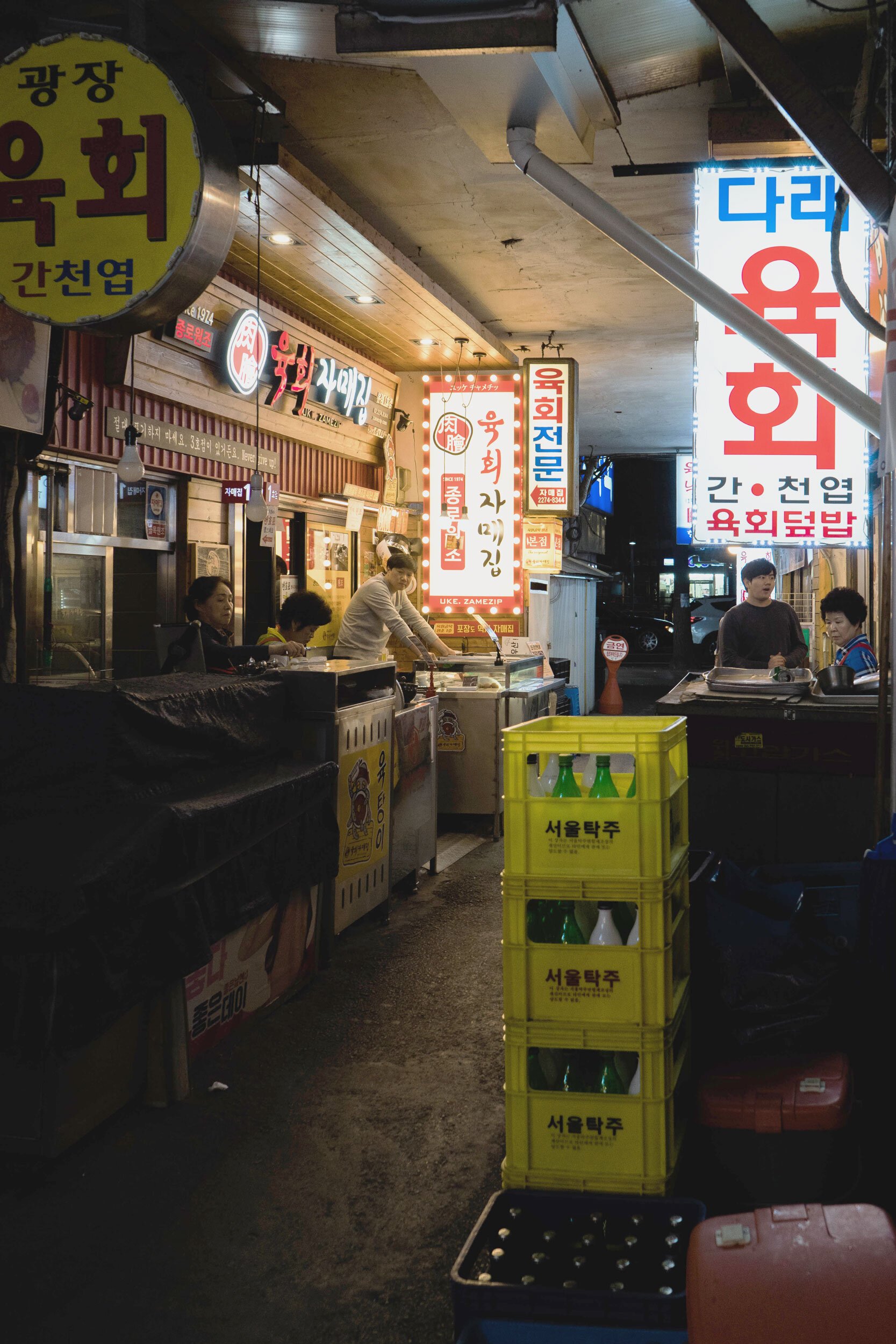
























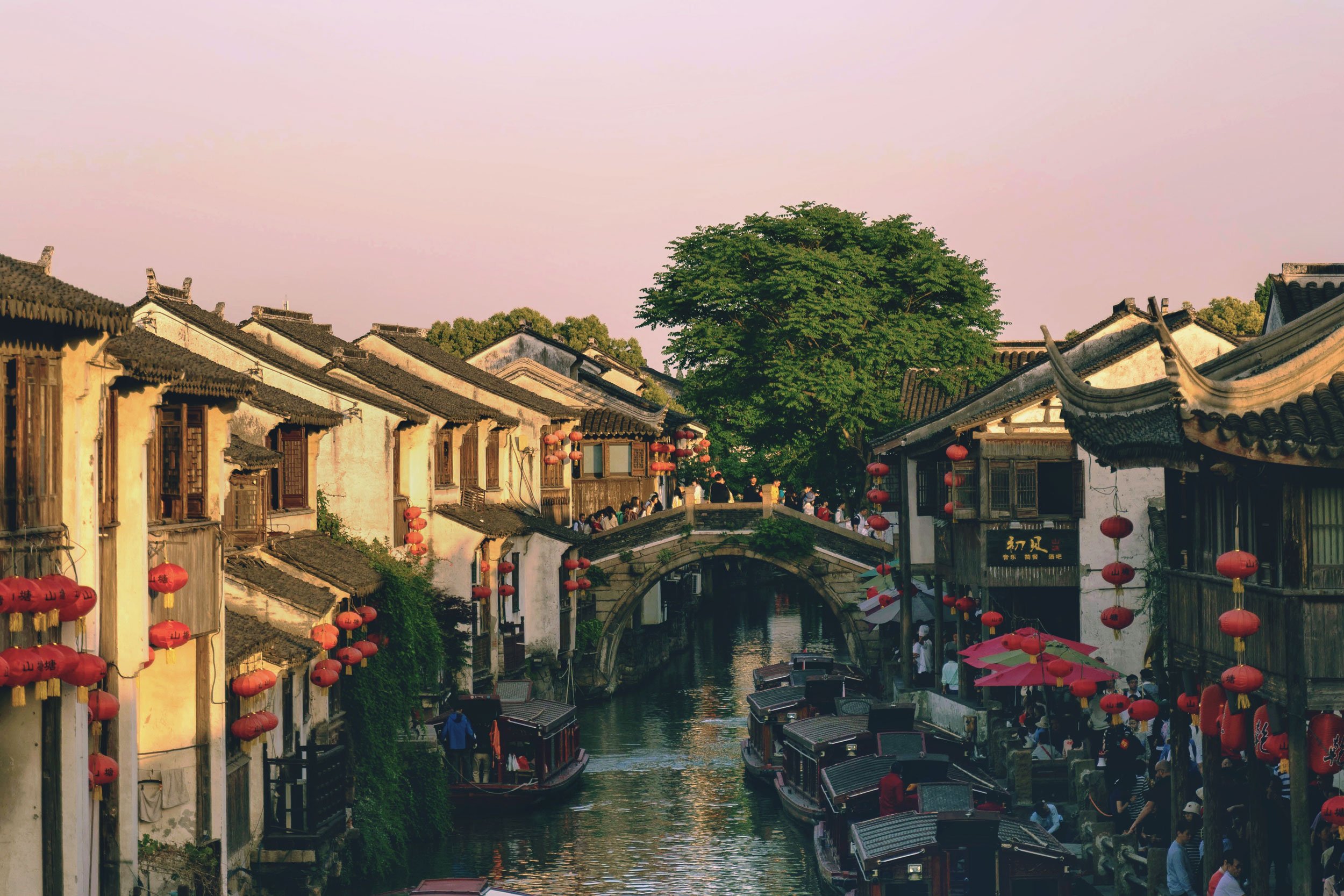






































![Having fun shooting in the futuristic elevator hallway at the SOHO Fuxing Square [INSTAGRAM]](https://images.squarespace-cdn.com/content/v1/63f8b23b0626755198127ae3/1677504040149-TLT8RUPSVPGUXGNW4PPE/shanghai-67-soho-03-barrett-02B.jpg)















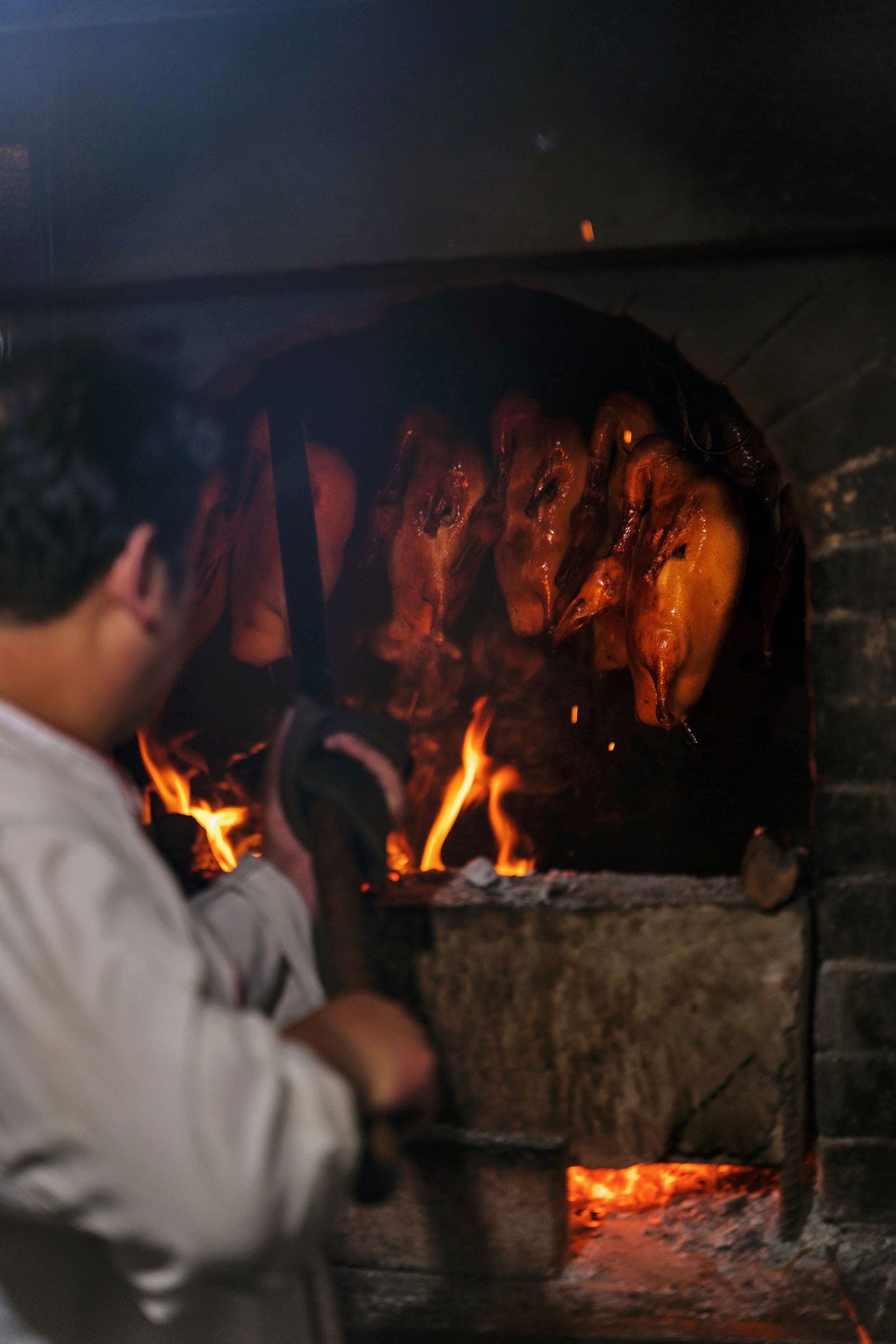
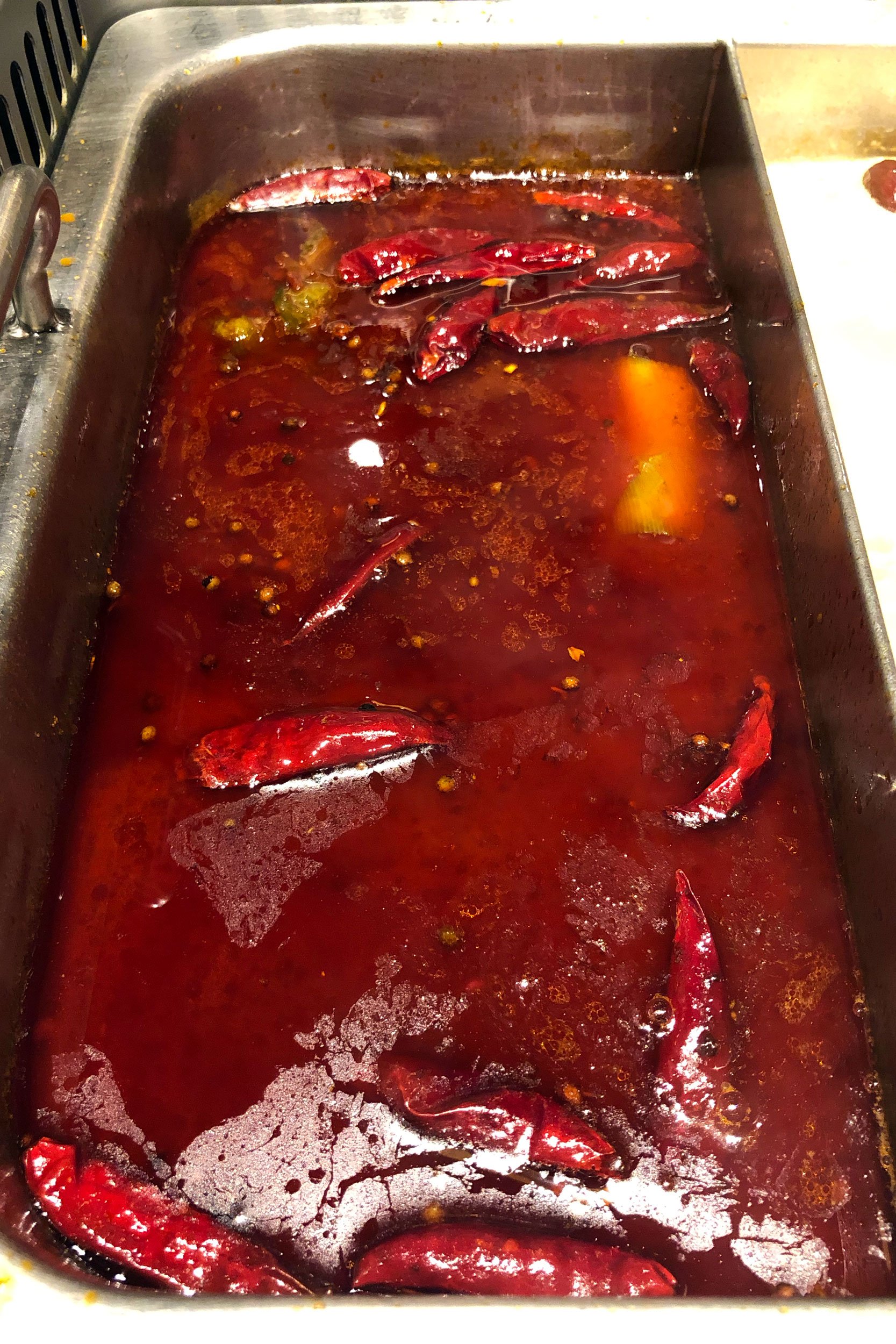
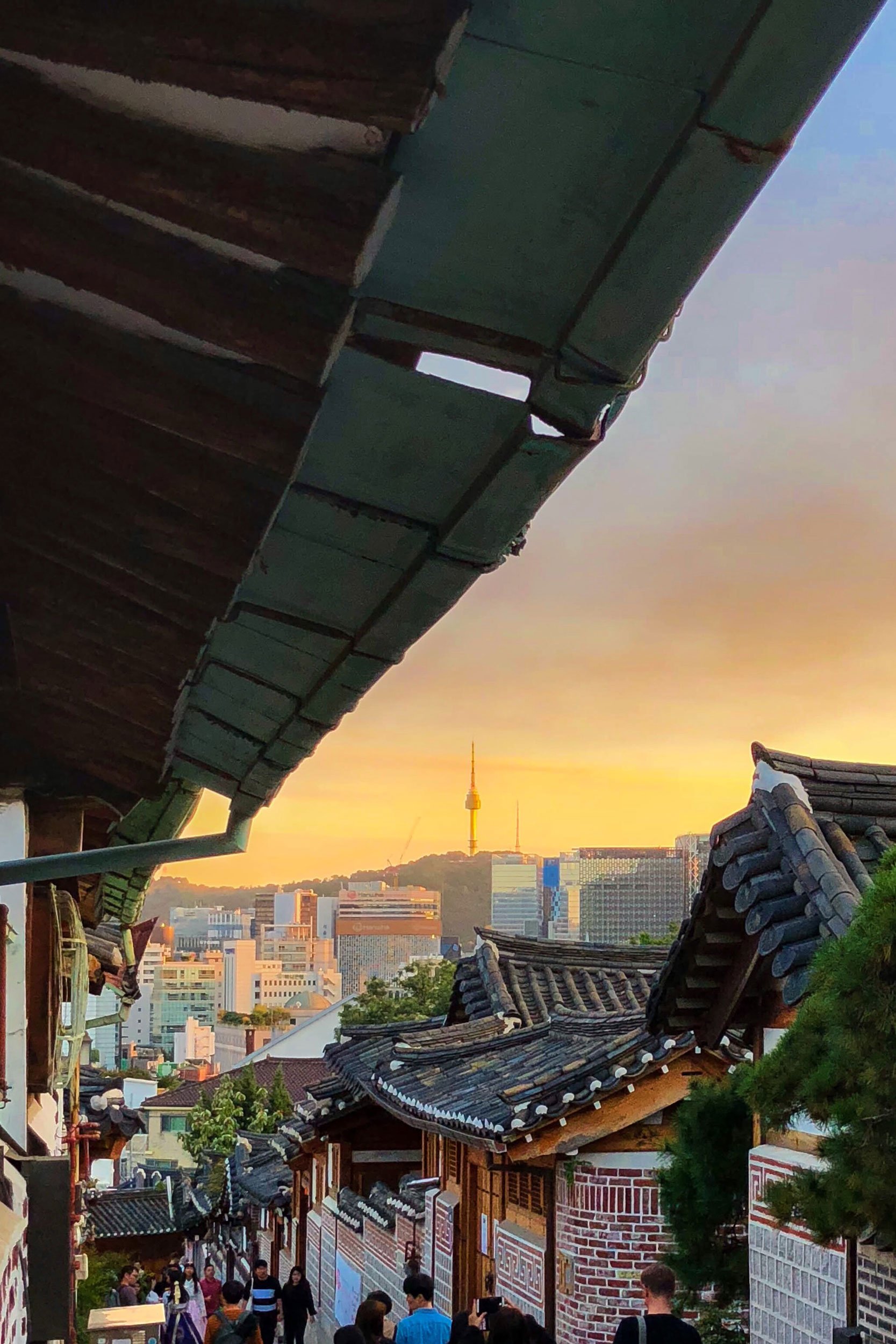
![Seoul at sundown - [BUY PRINT]](https://images.squarespace-cdn.com/content/v1/63f8b23b0626755198127ae3/1677509505672-9IU2LUULVQNNNKVAETOO/seoul-korea-lotte-world-seoul-05B.jpg)







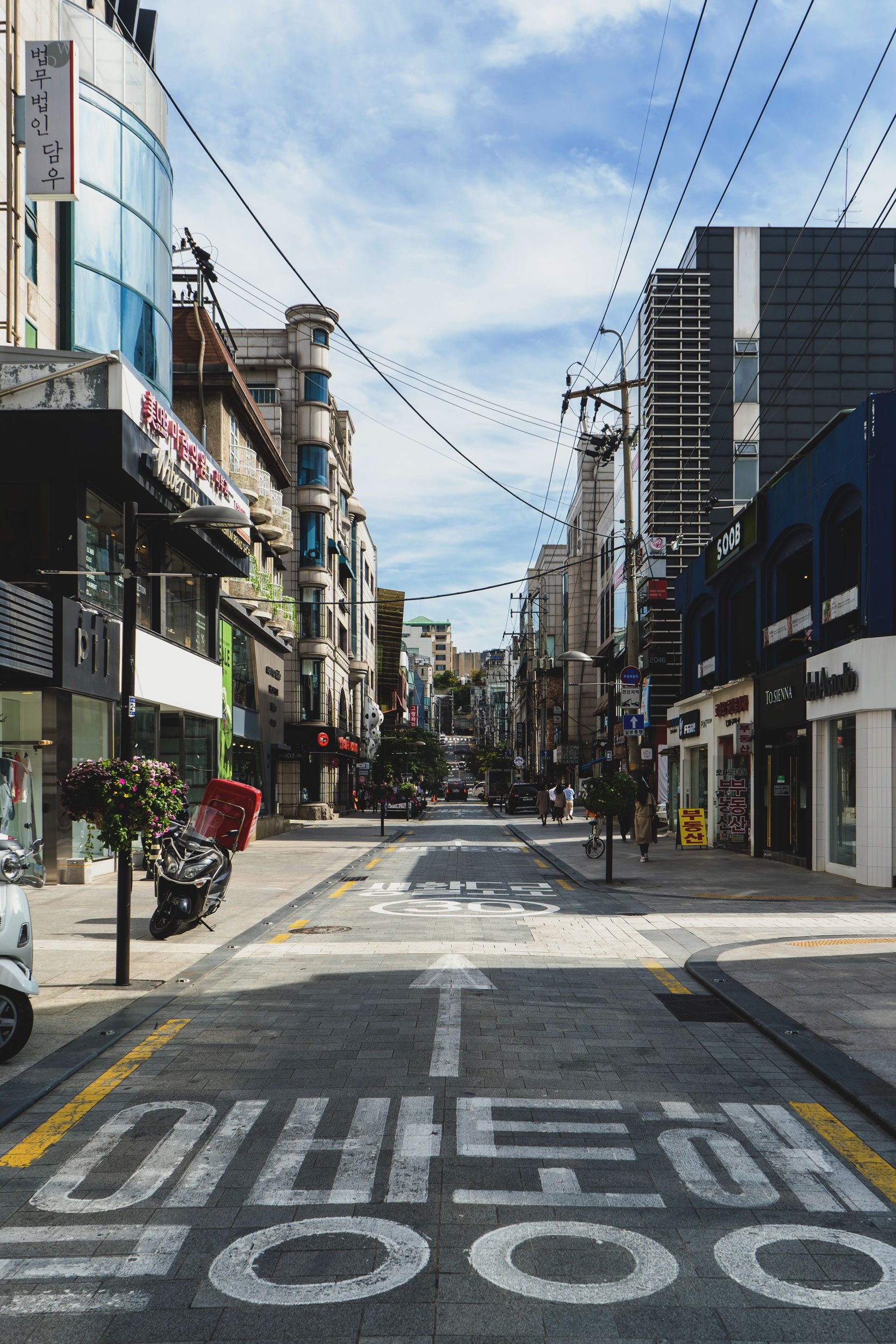

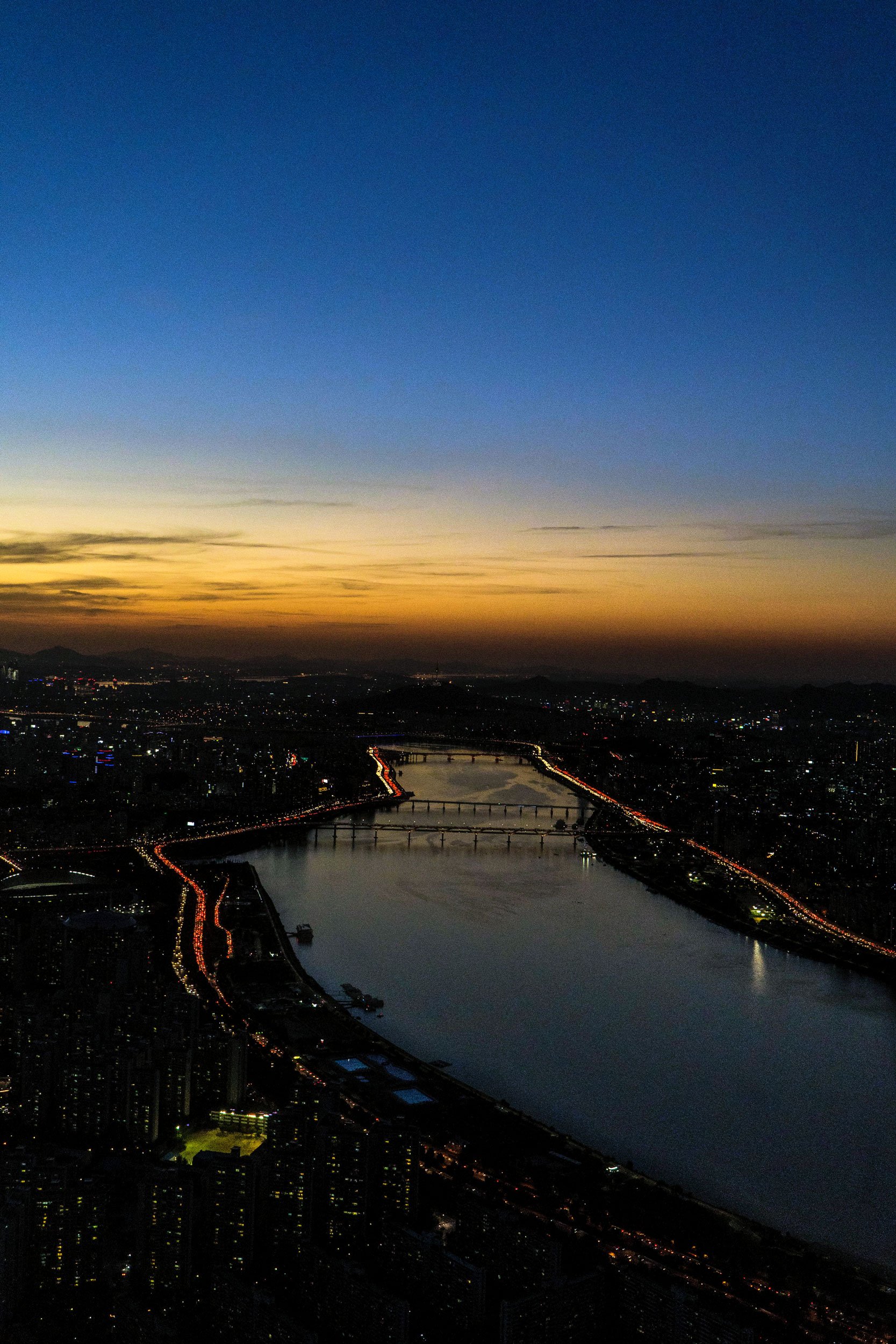




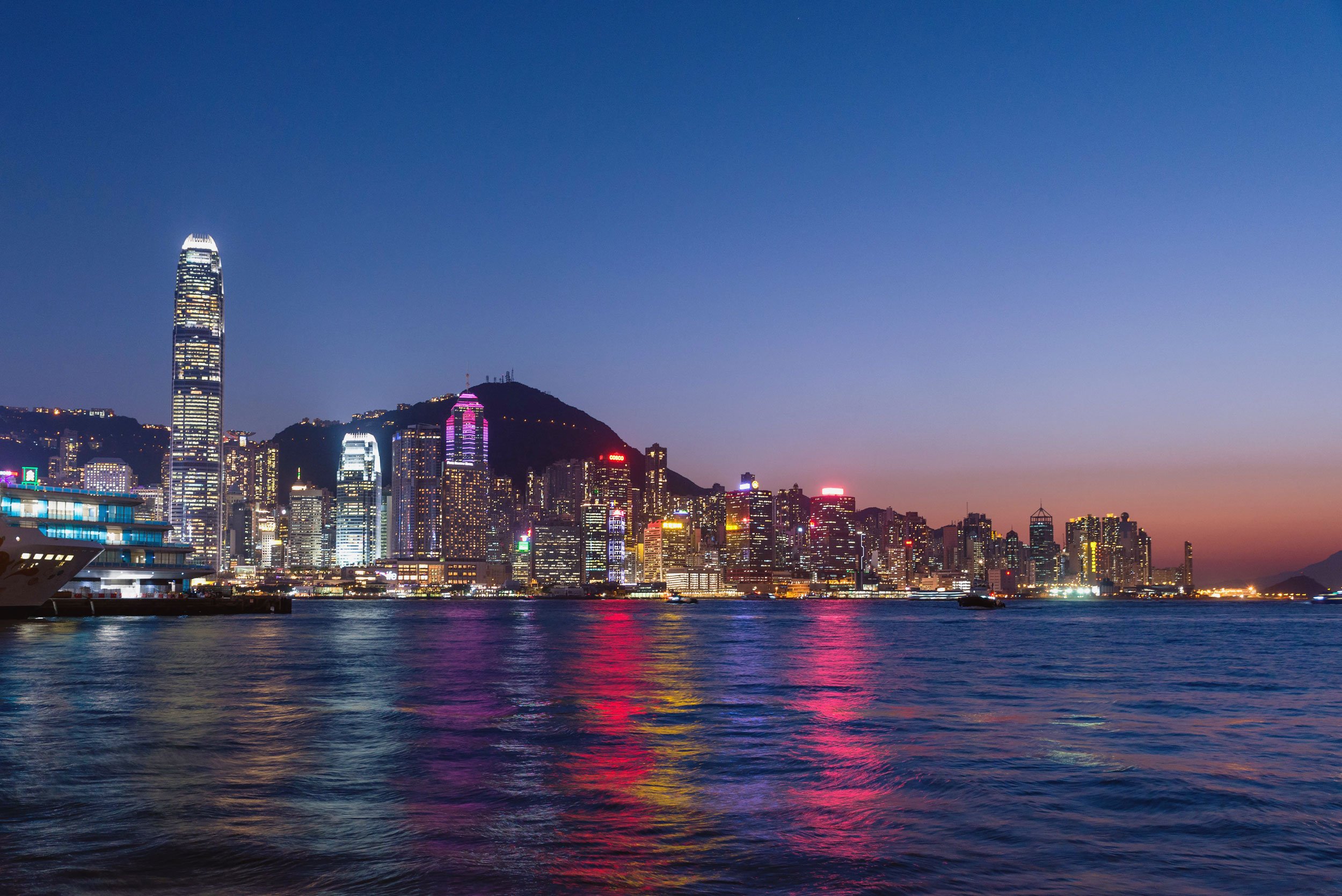
![Hong Kong Central skyline at sundown - [BUY PRINT]](https://images.squarespace-cdn.com/content/v1/63f8b23b0626755198127ae3/1677519586039-ST9BV8B5MKTXSUU1AY5R/hk-hongkong-skyline-evening-02.jpg)
![A taxi under neon signs around Jordan. - [BUY PRINT]](https://images.squarespace-cdn.com/content/v1/63f8b23b0626755198127ae3/1677519646484-PLX6PCBK63SJLL4BA8AR/hk-shooting-streets-01.jpg)
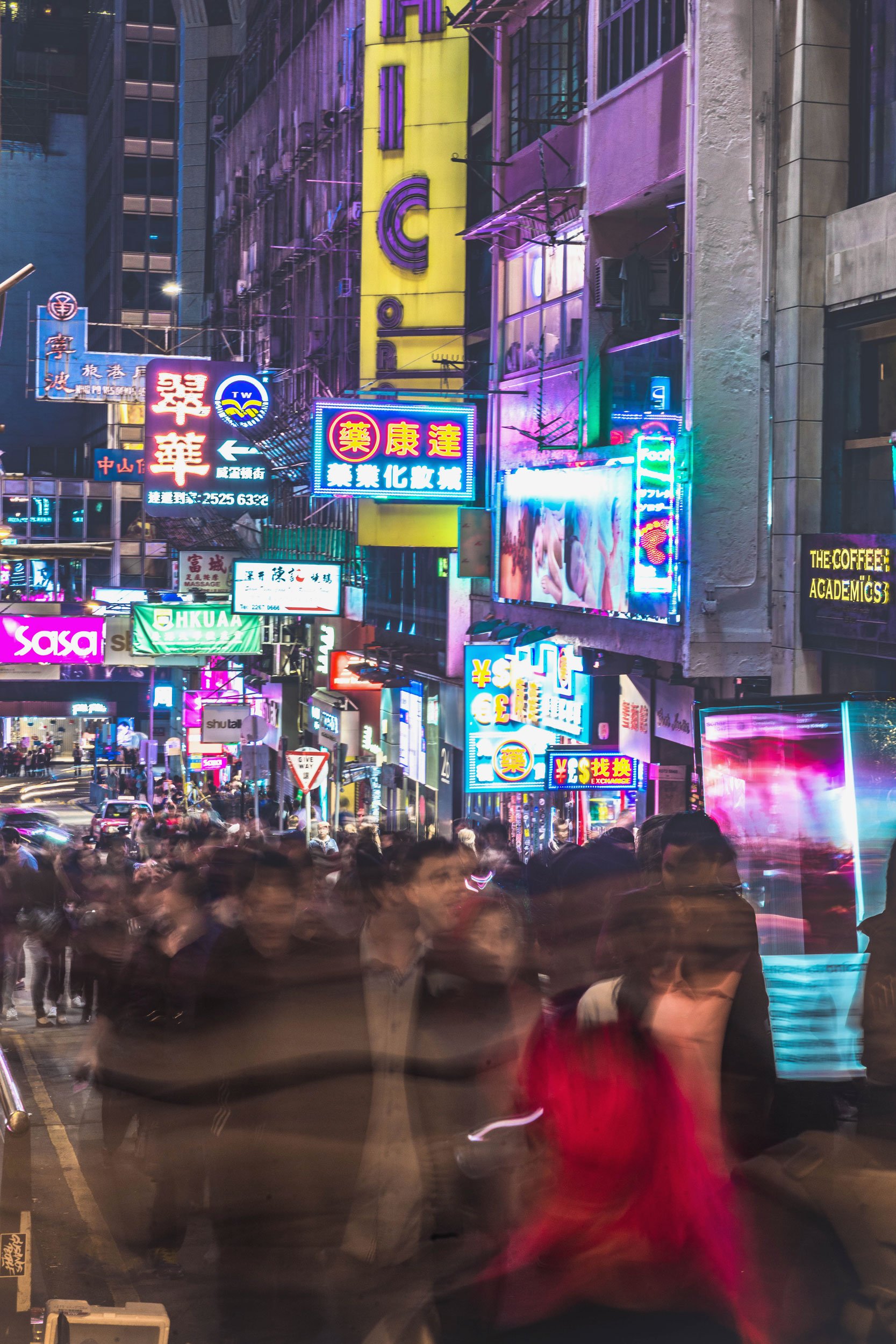



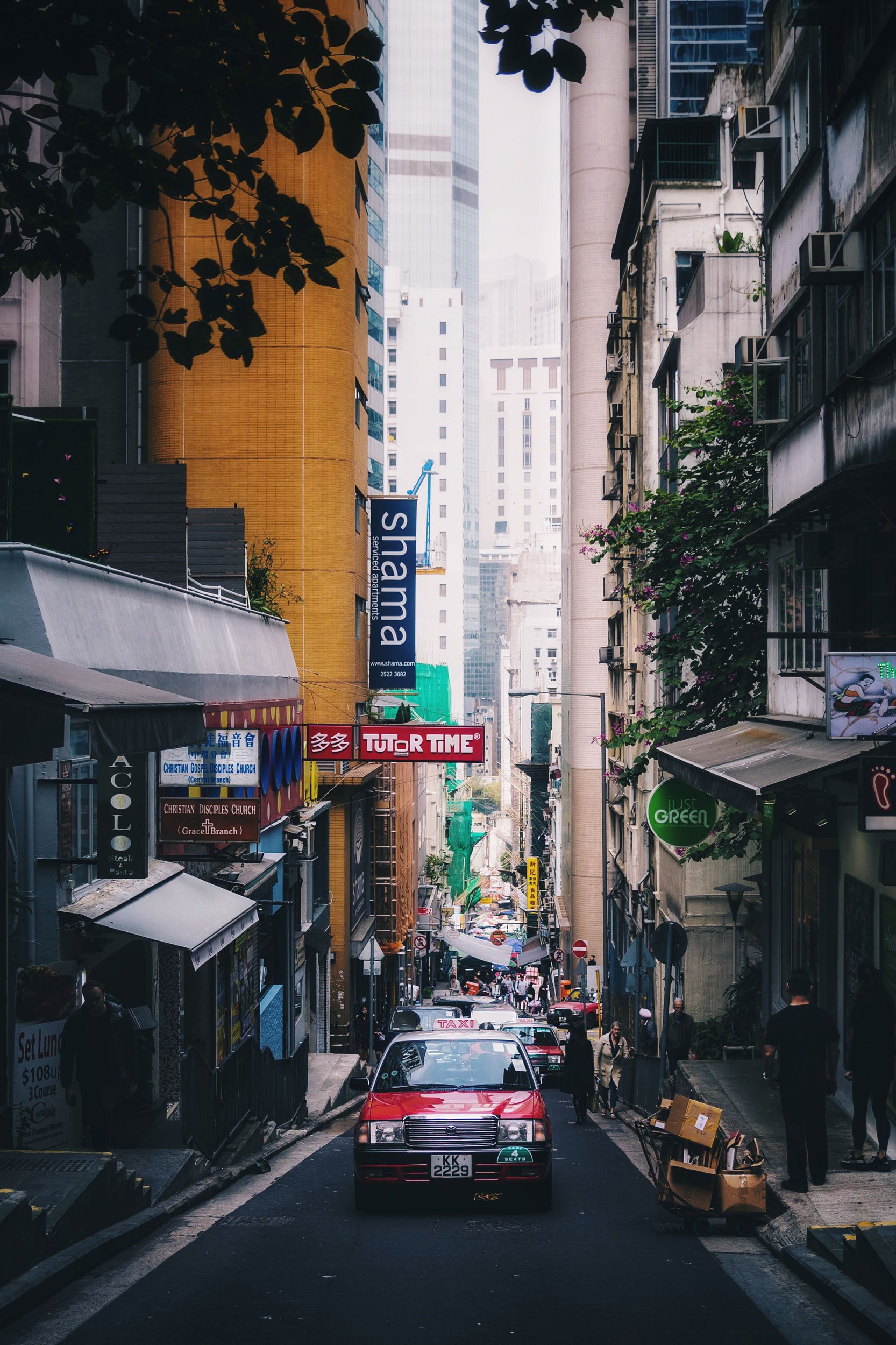

![Shadows at a Hong Kong Culture Centre corridor - [BUY PRINT]](https://images.squarespace-cdn.com/content/v1/63f8b23b0626755198127ae3/1677520064659-IW4ZJPM8UMTY2CO0RWV8/hk-hongkong-cultural-centre-shadows-01.jpg)



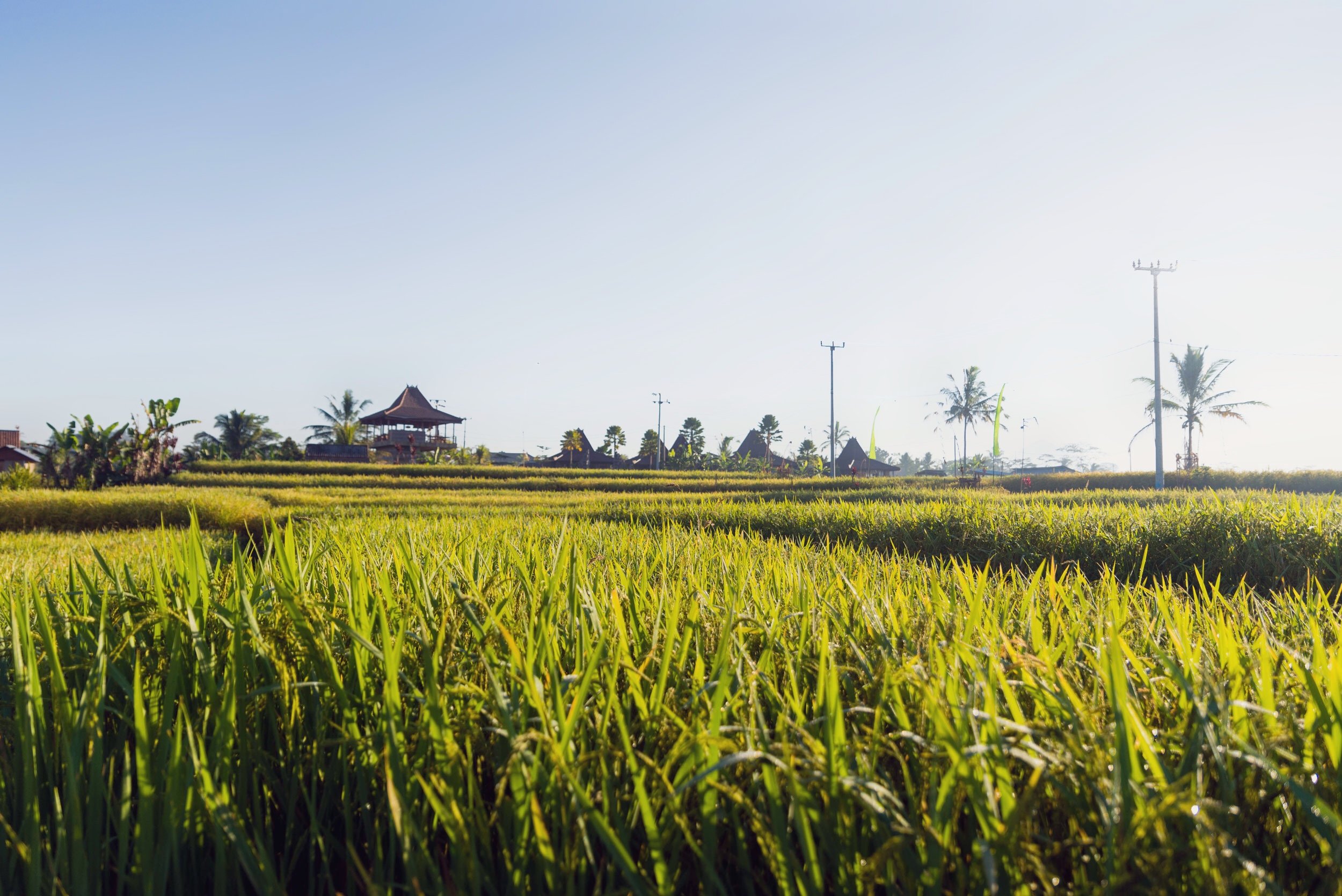






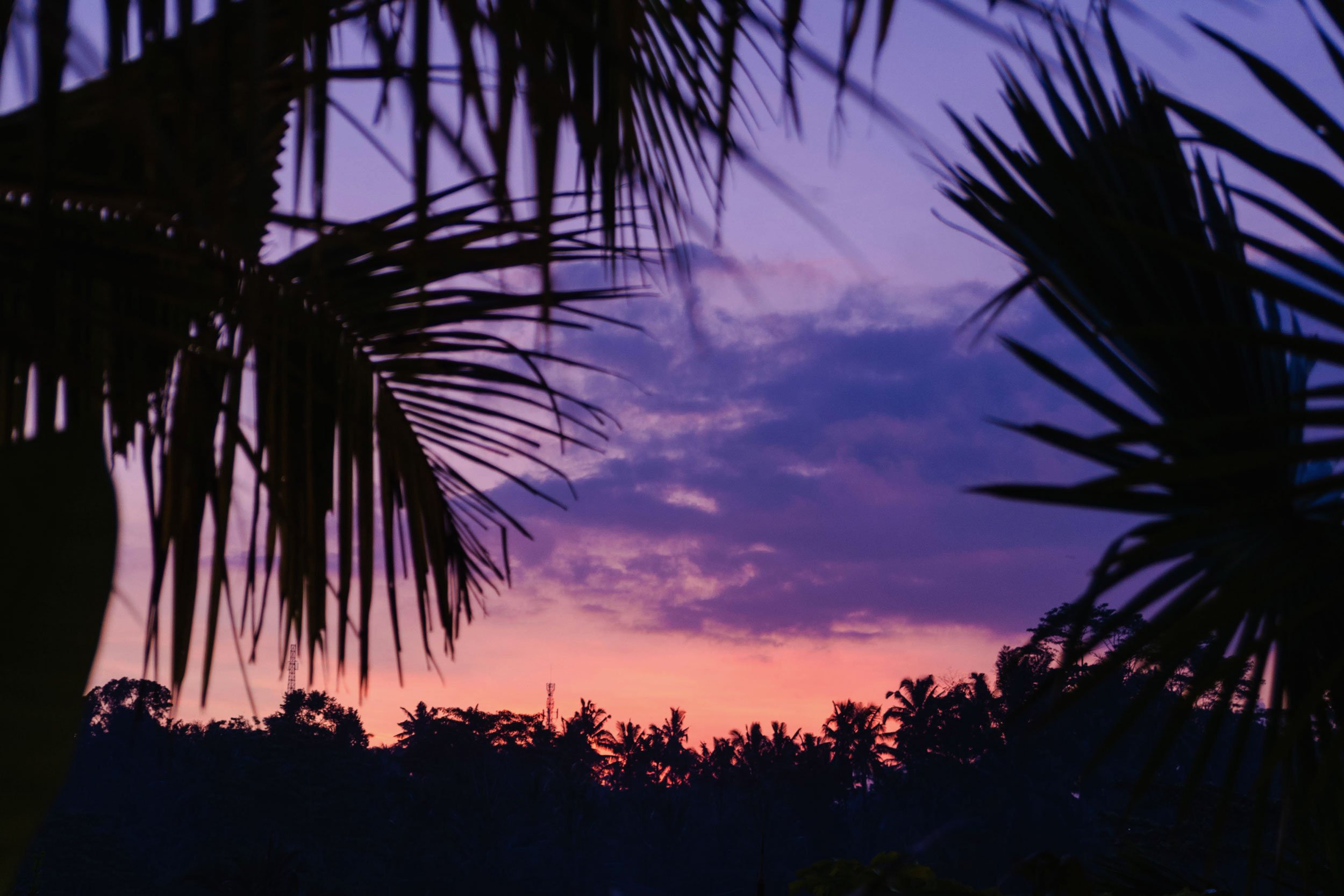




















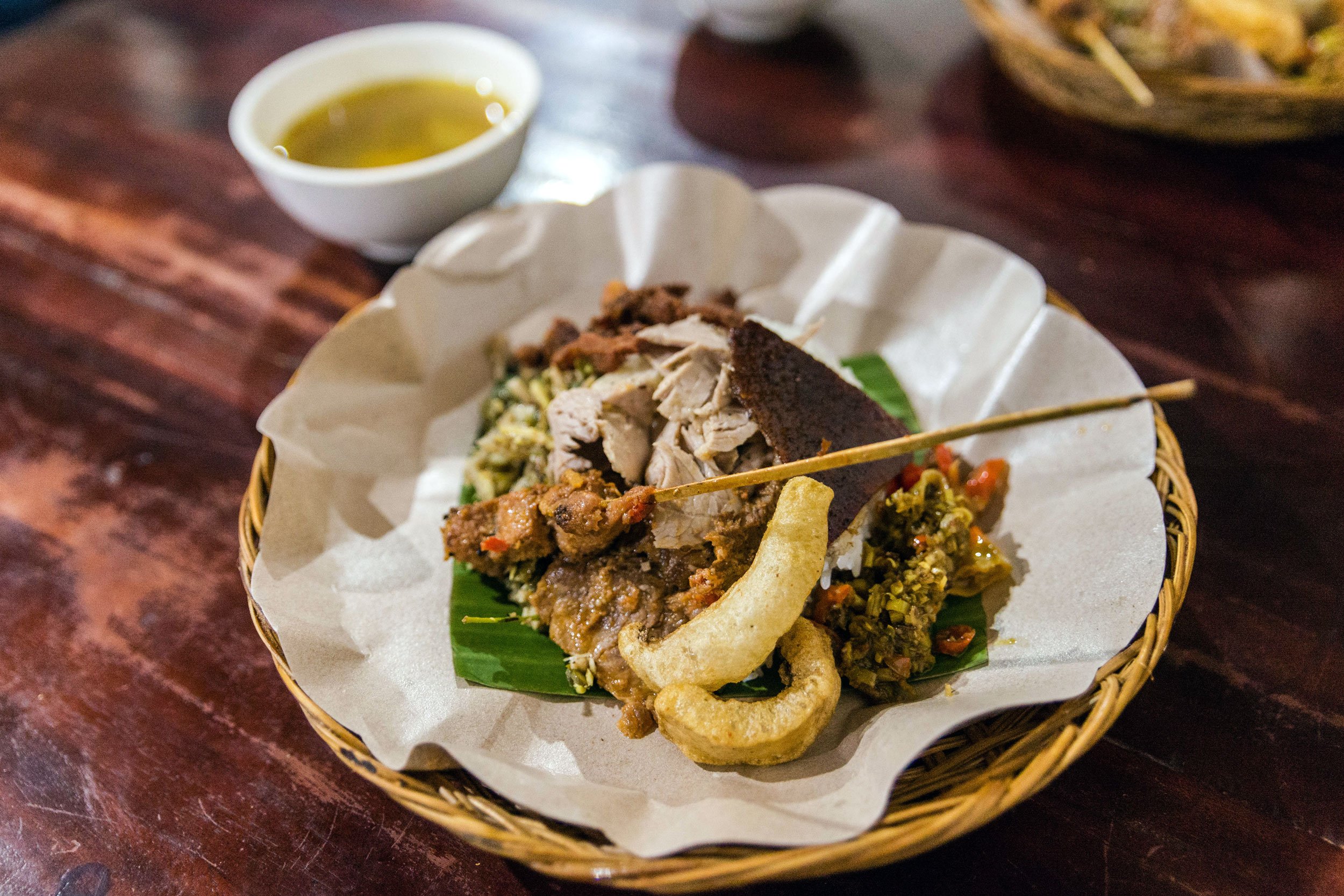


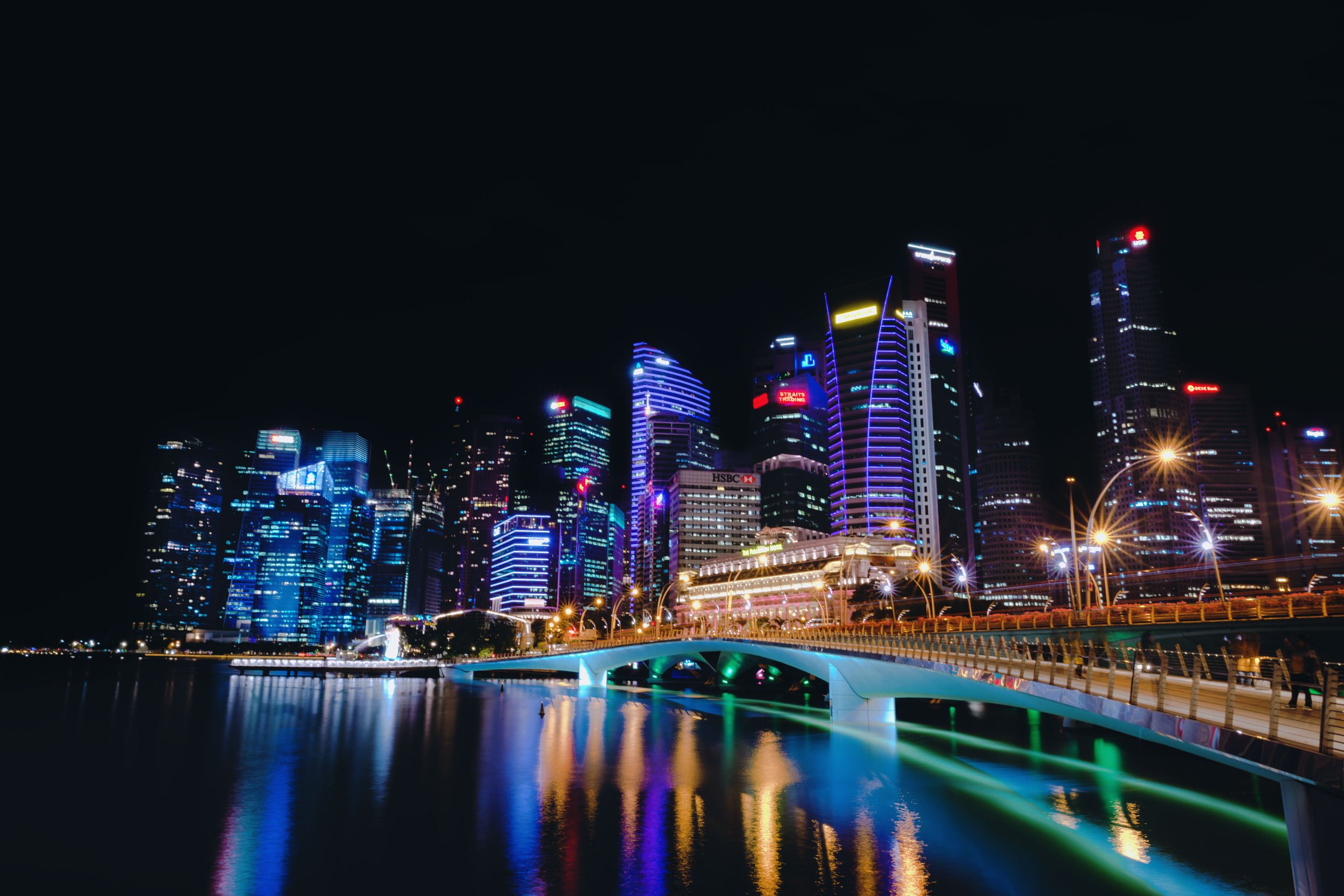

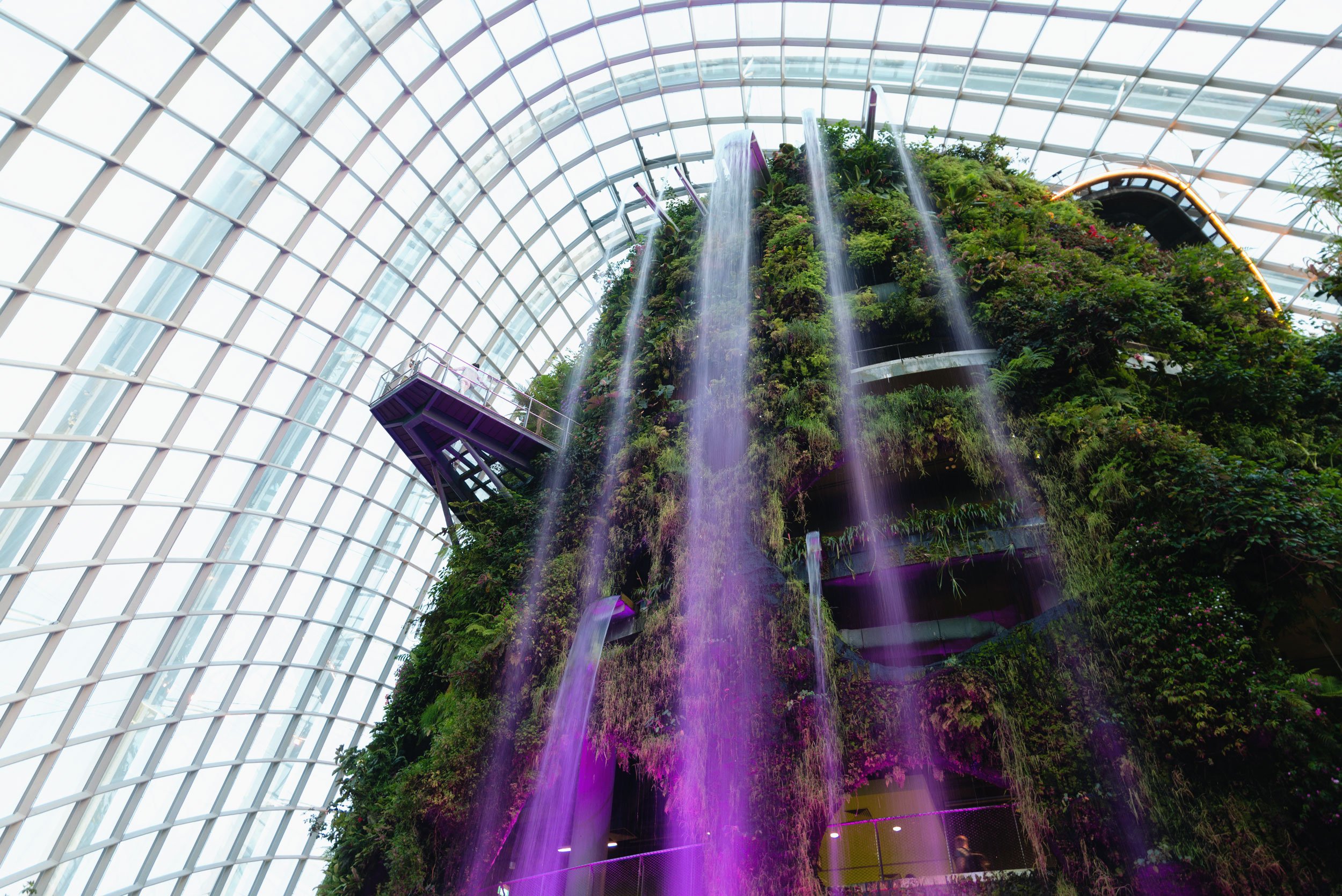
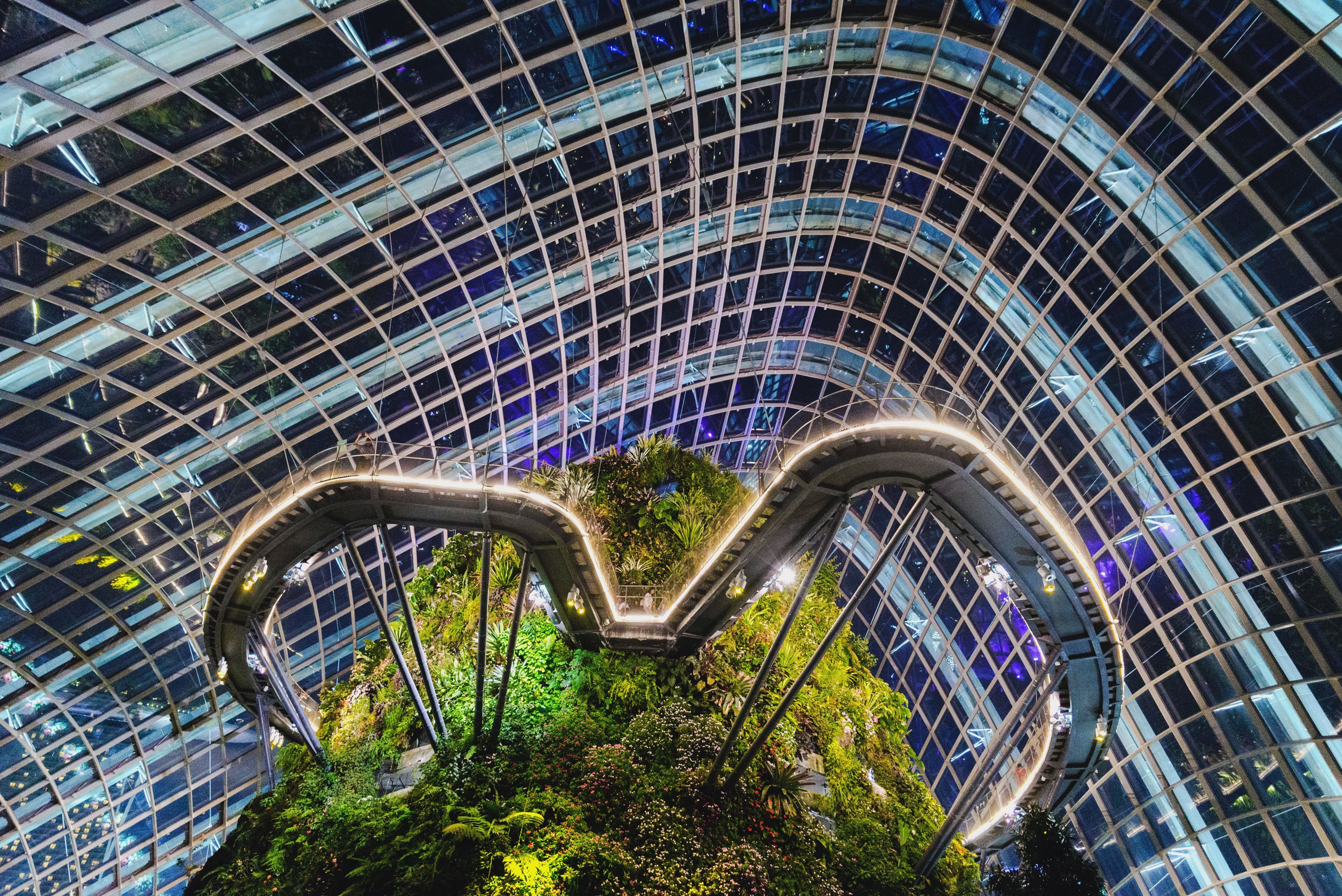















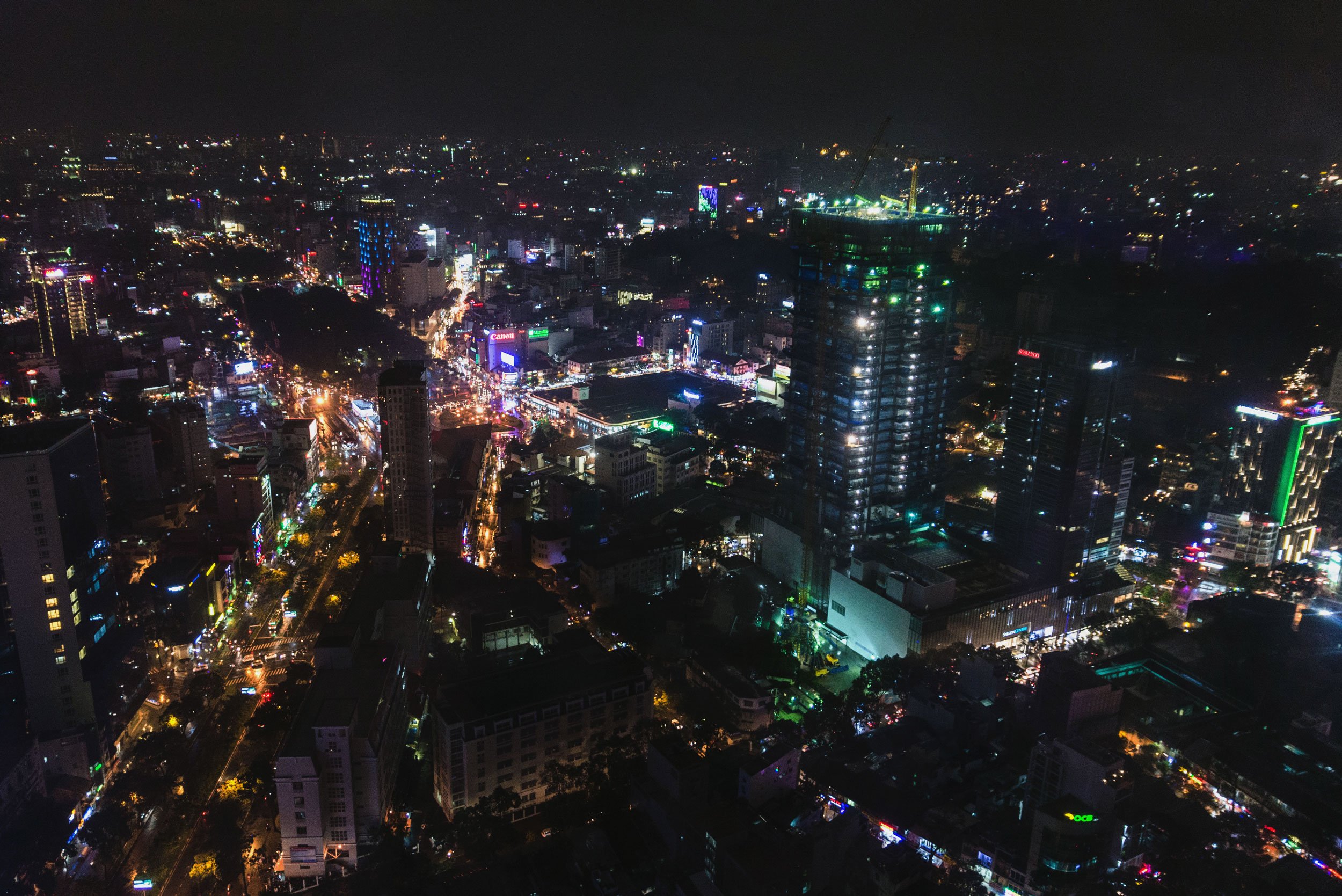

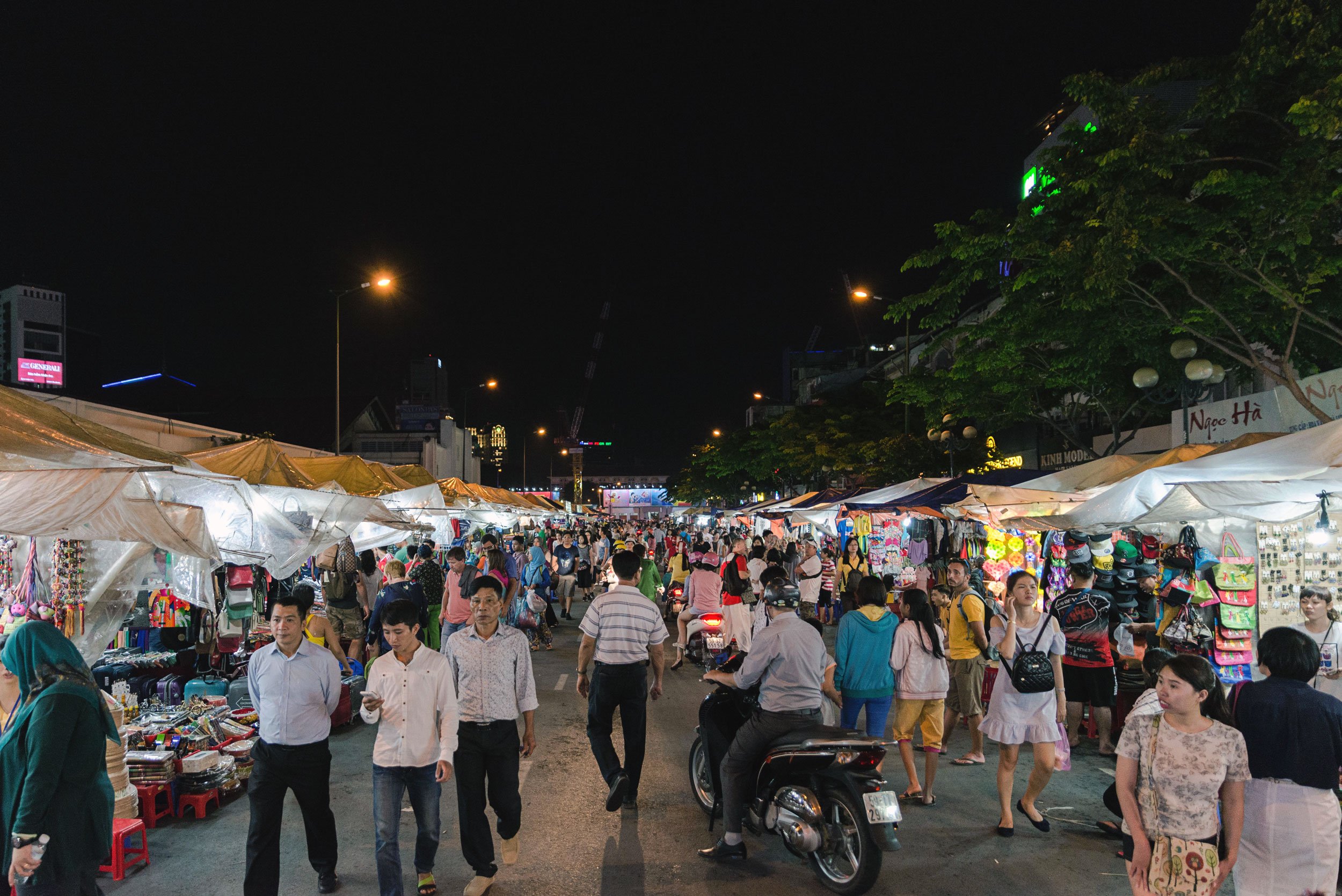



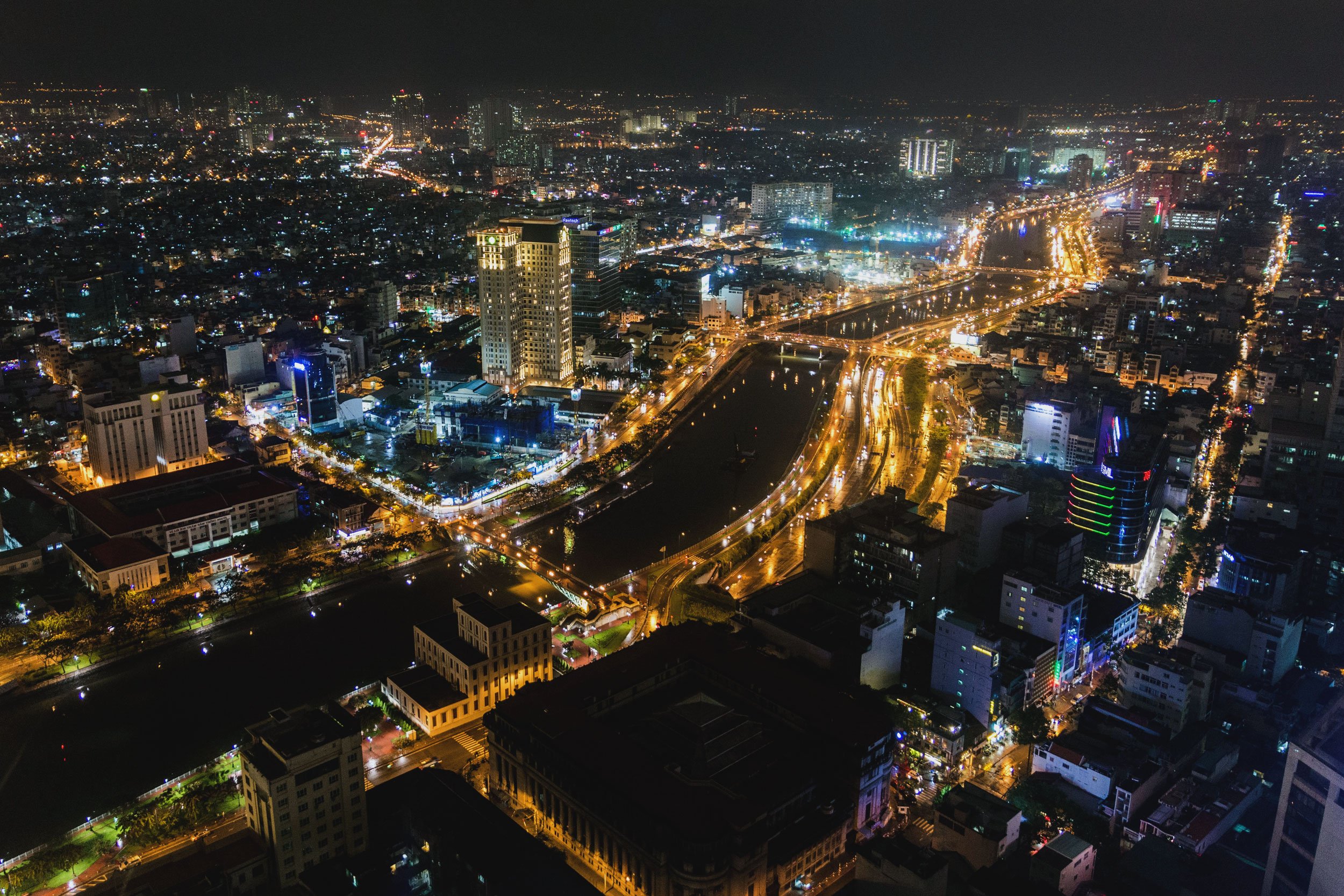


![Ha Long Bay, Vietnam [BUY PRINT]](https://images.squarespace-cdn.com/content/v1/63f8b23b0626755198127ae3/1677527207700-ILOBRNT6DX7PXC111EFS/vietnam-halong-bay-01.jpg)












![Ha Long Bay, Vietnam [BUY PRINT]](https://images.squarespace-cdn.com/content/v1/63f8b23b0626755198127ae3/1677527998390-0FB1BPAQJD3AOJ71Z9ZD/vietnam-halong-bay-01.jpg)



















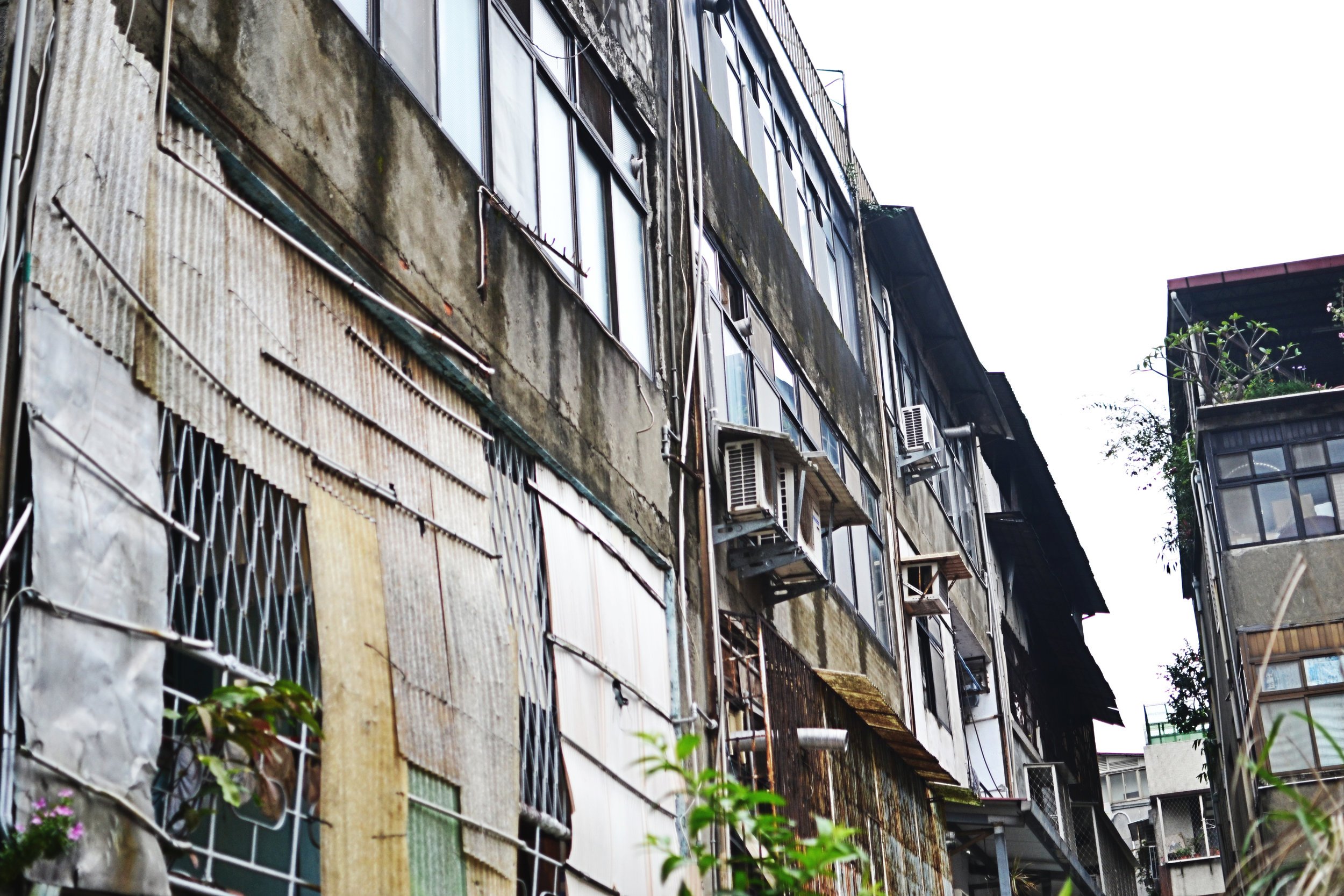
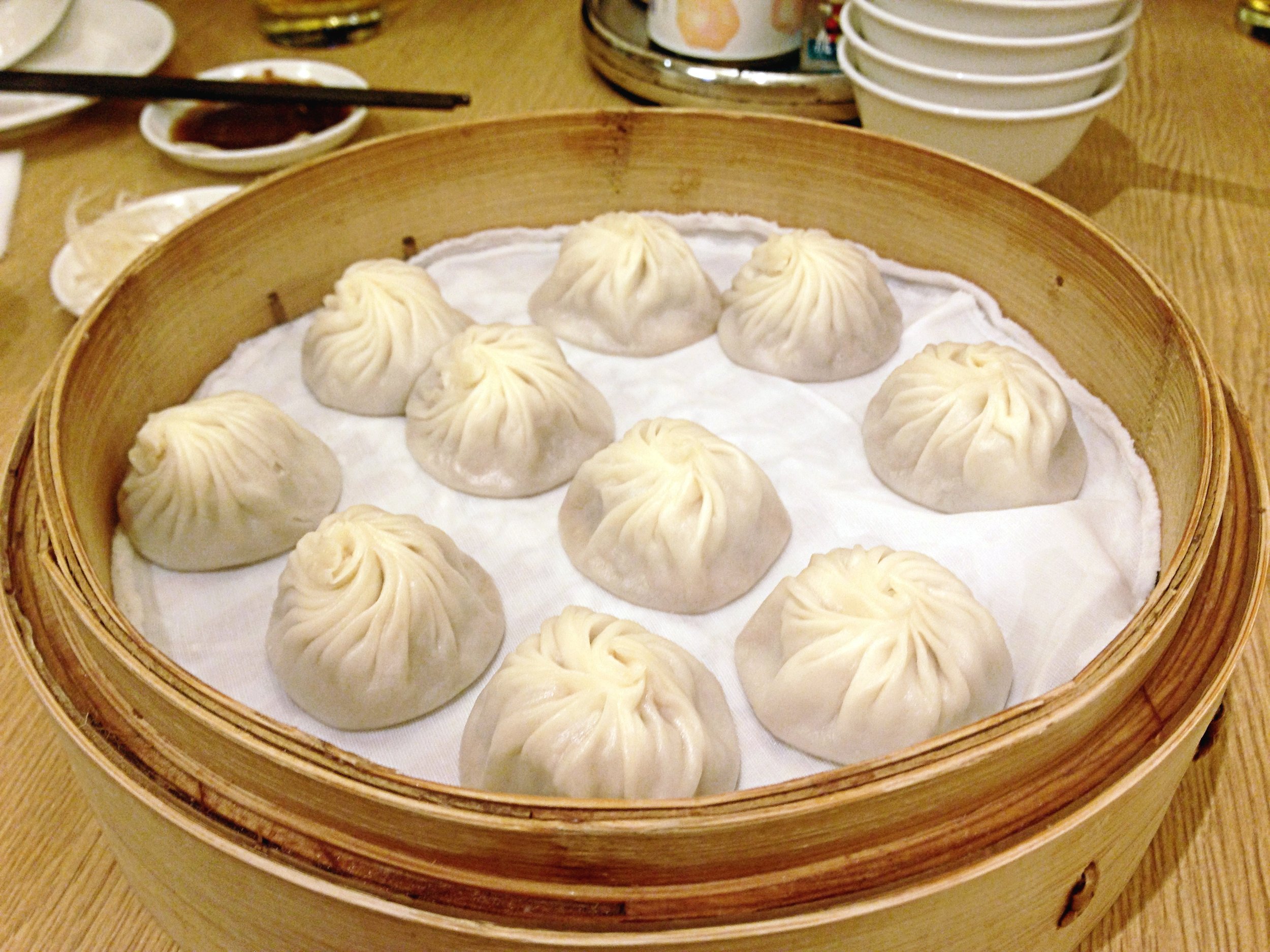
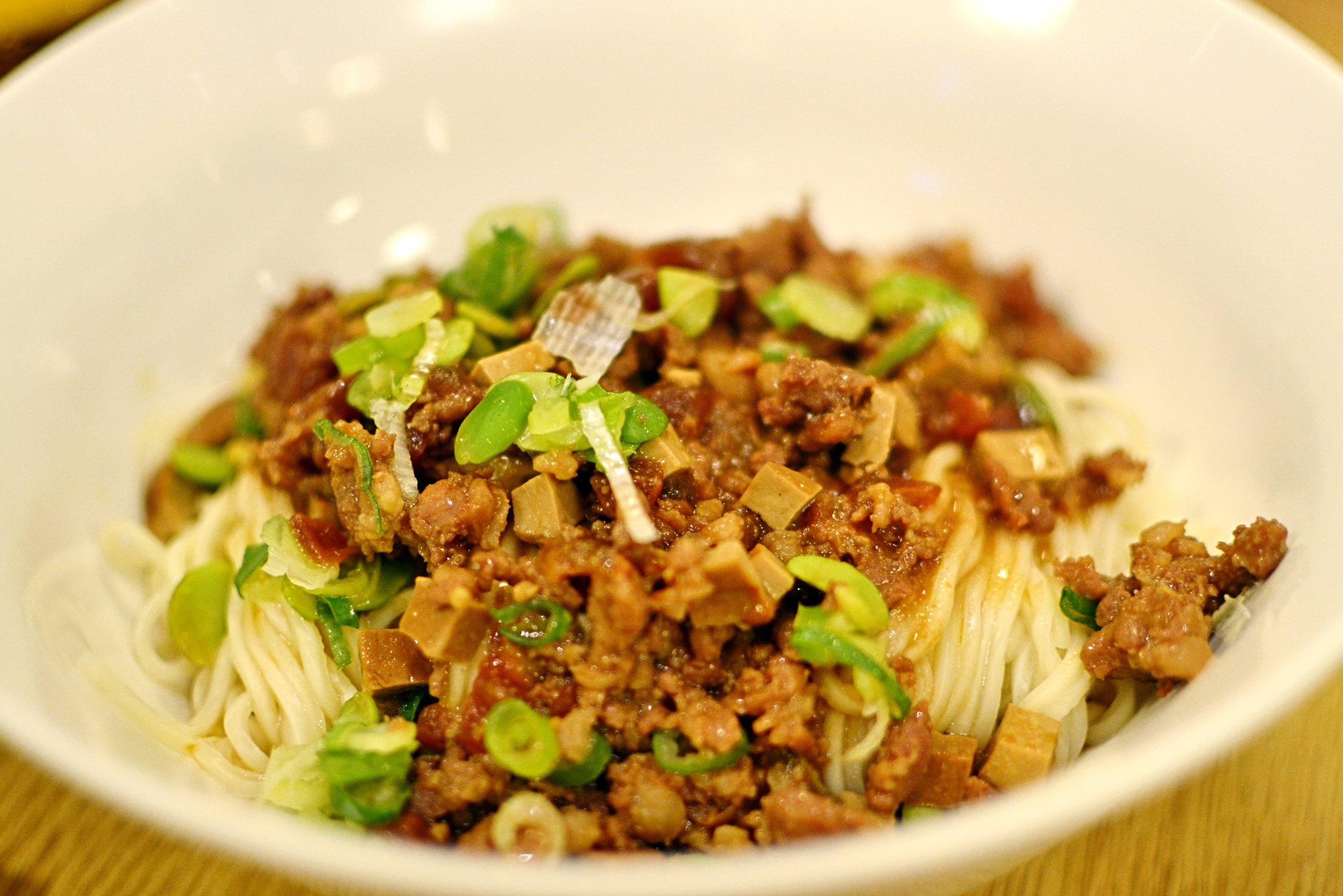
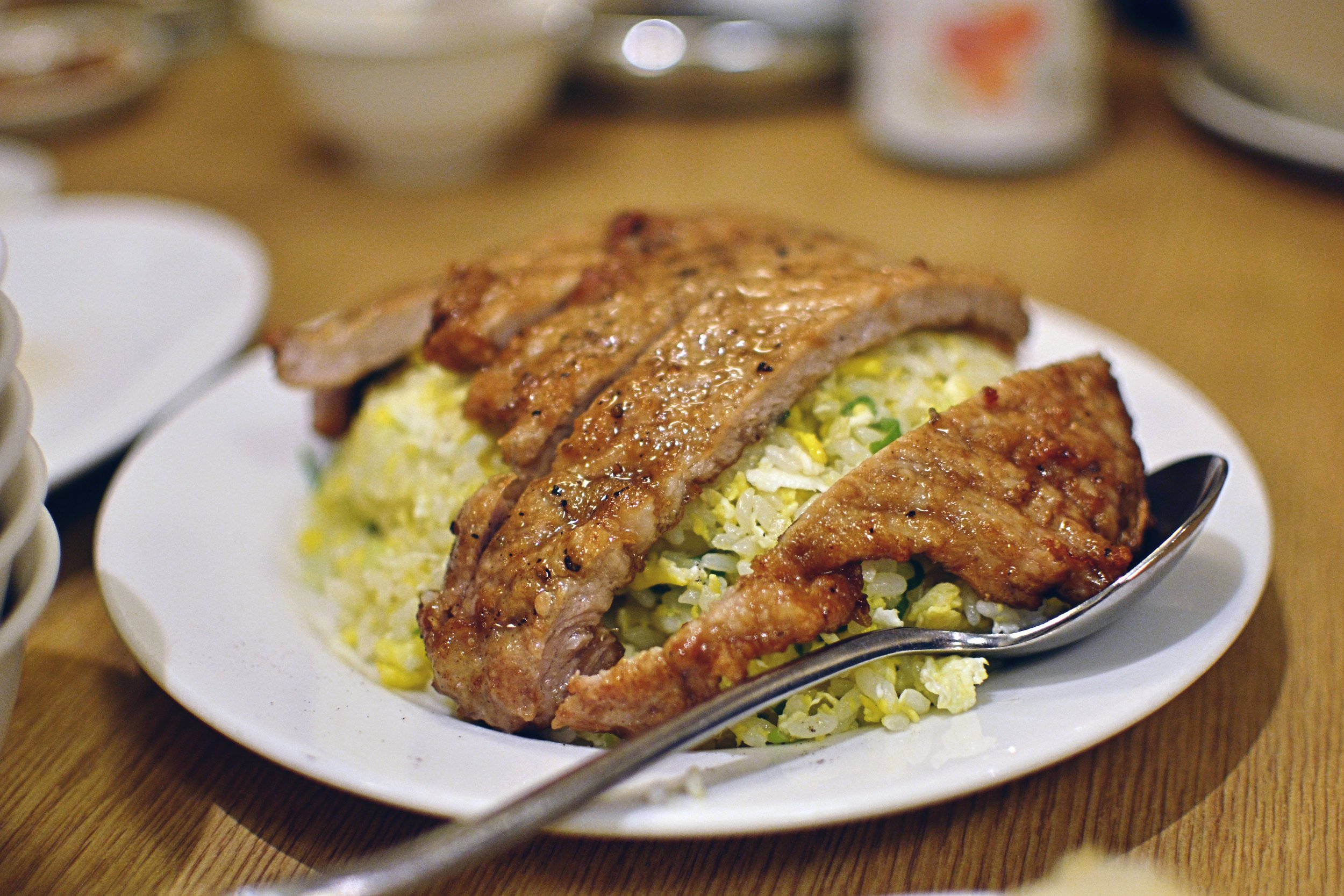
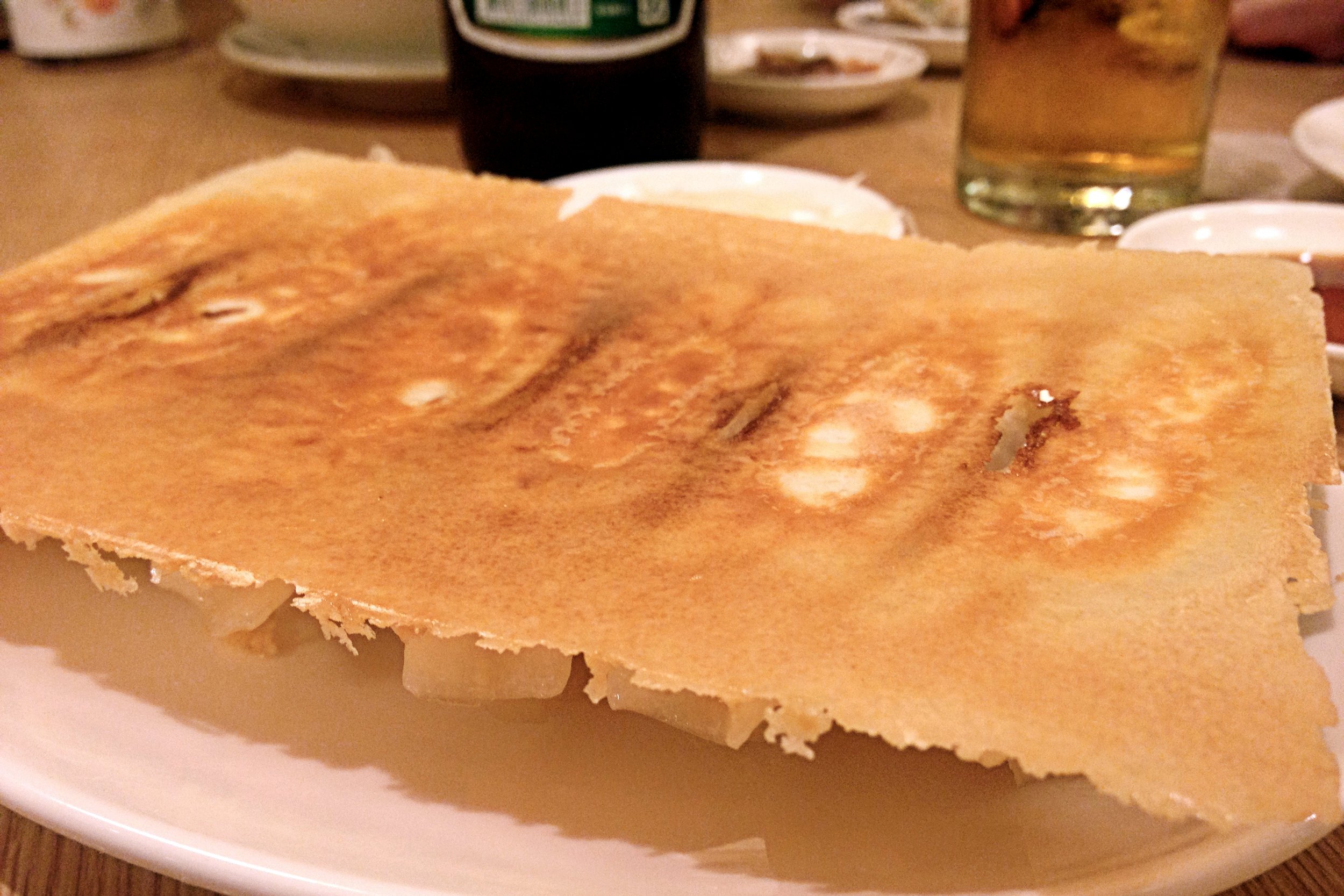

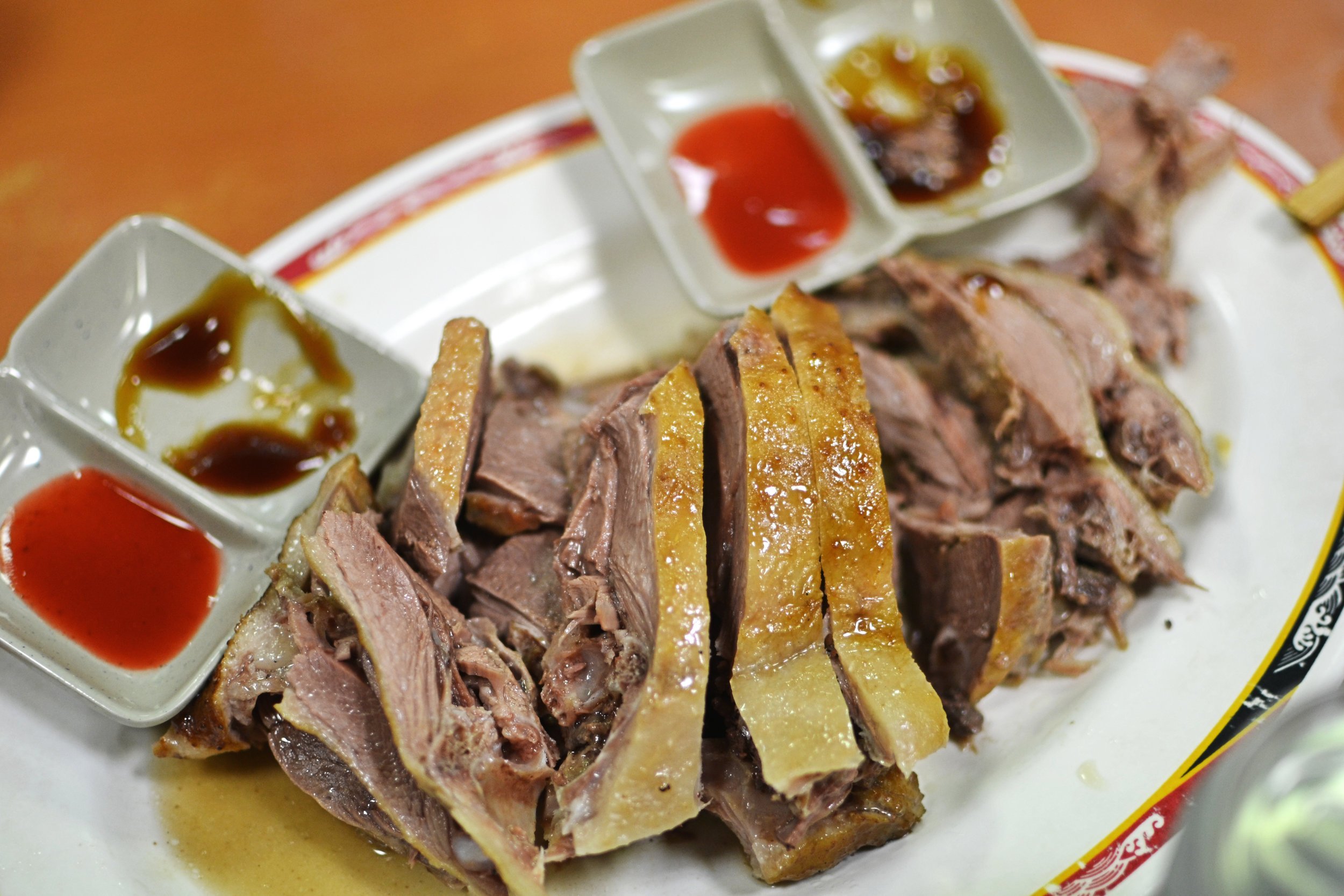
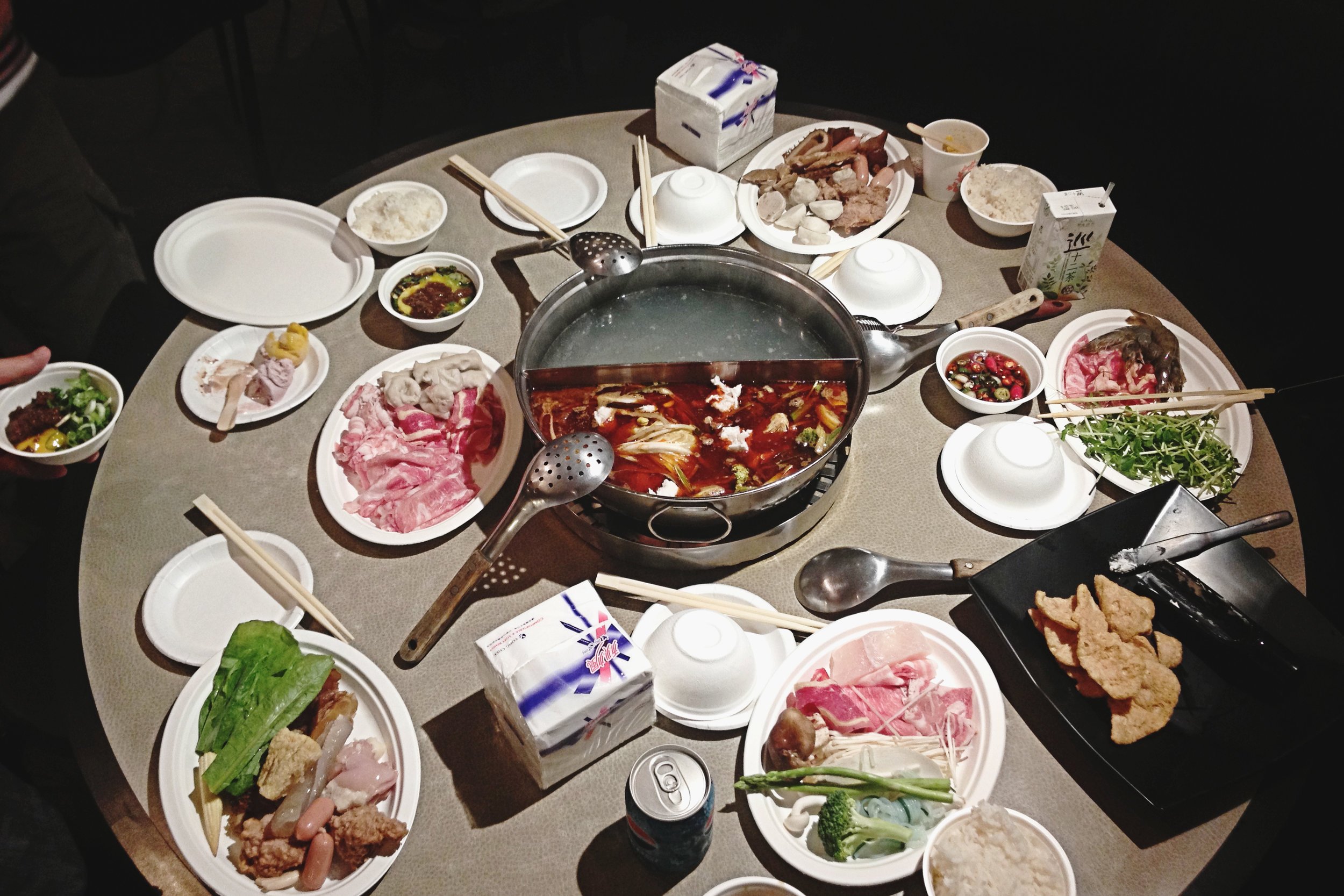
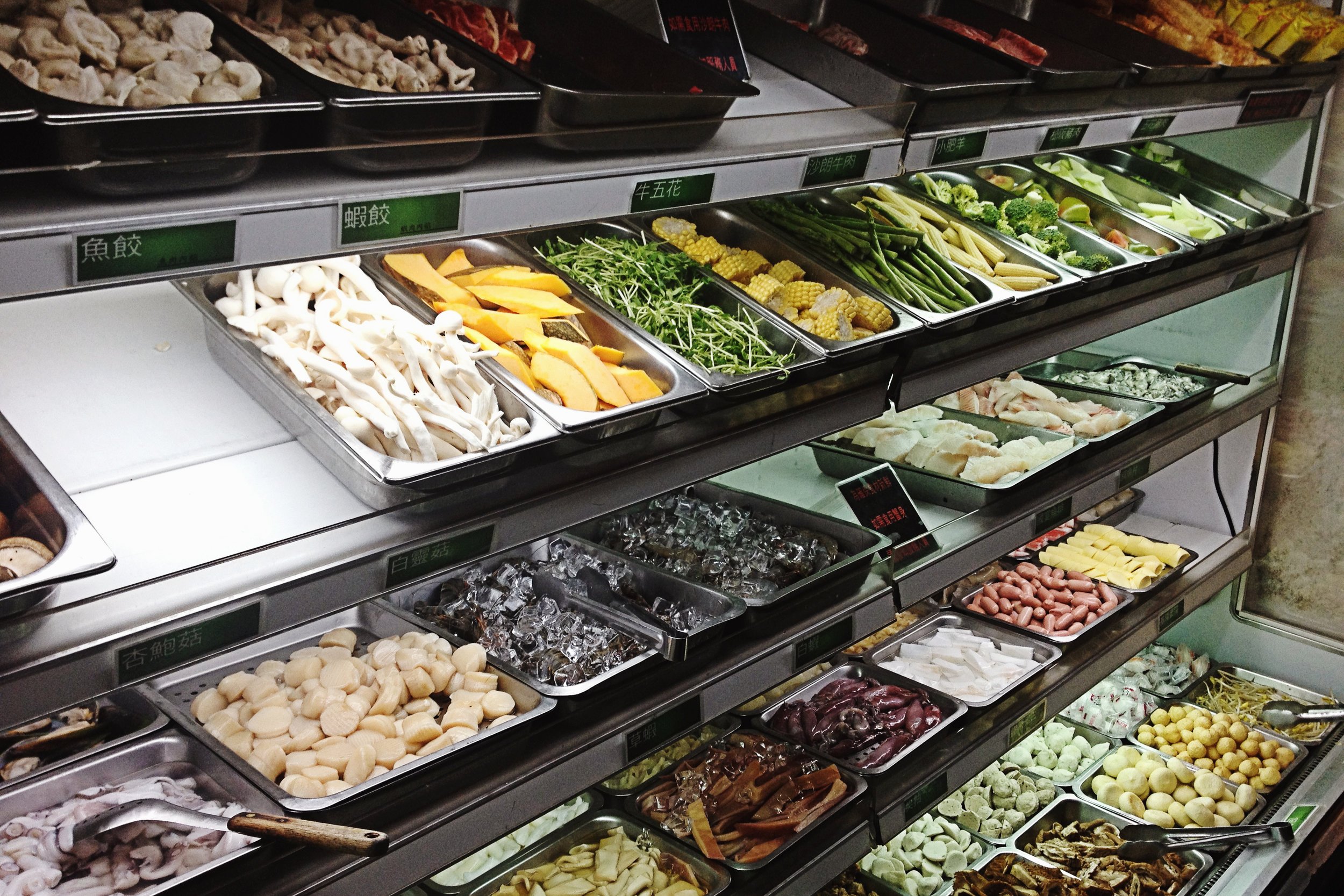

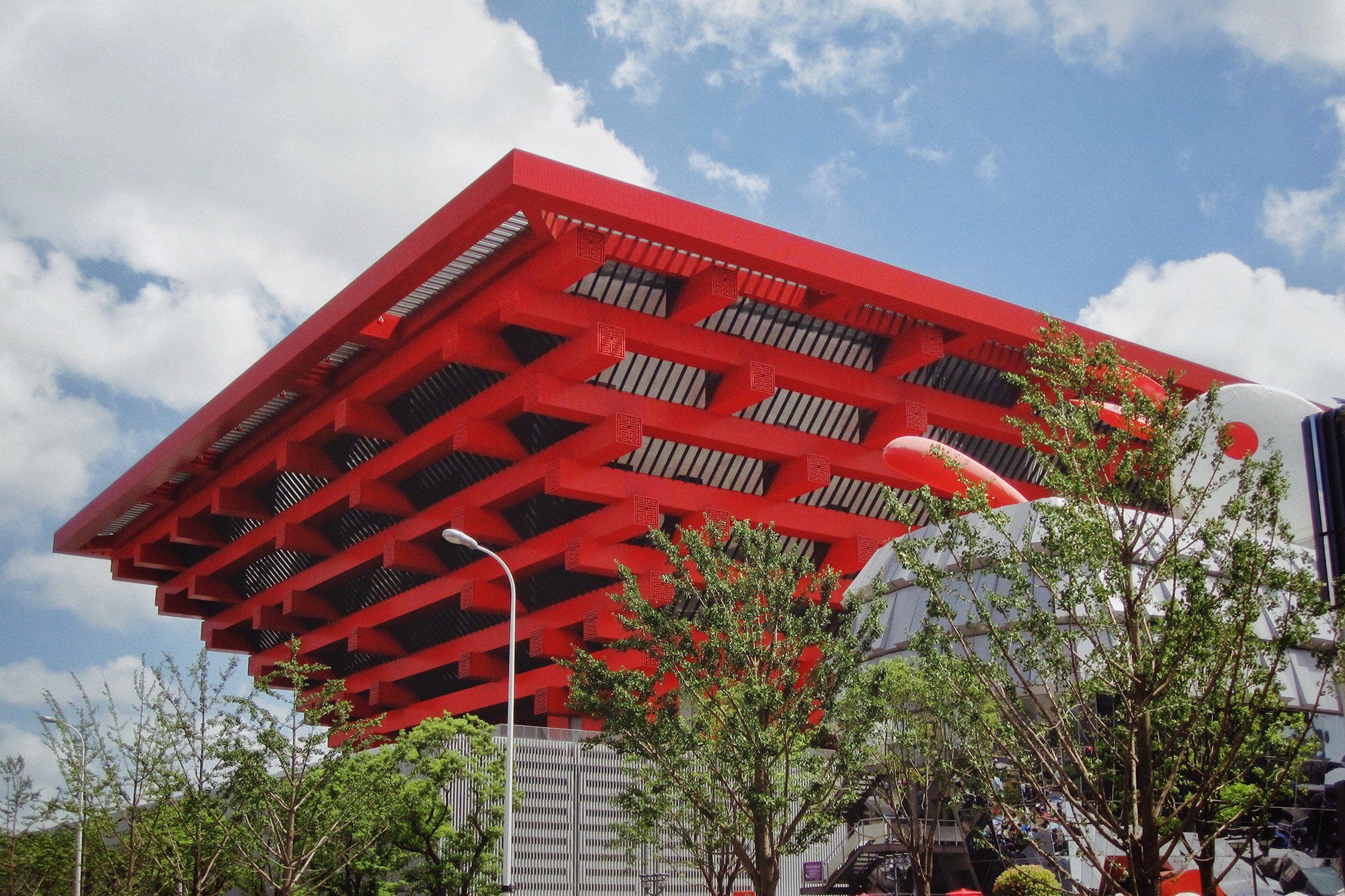







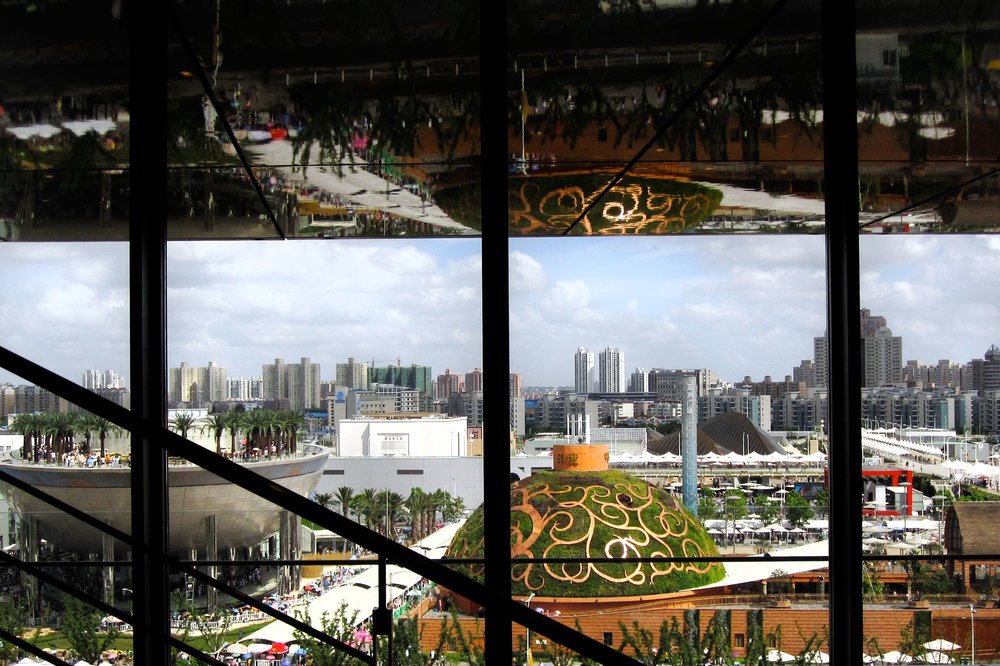

One of Seoul’s most trendy neighborhoods, nicknamed the “Brooklyn of Seoul”.